
10 Best AI Tools for Education: Modern Learning Solutions
Today, we are witnessing how AI has become a vital part of the education landscape. From teachers to students, everyone benefits from this technology. Best AI tools for education not only simplify teaching and learning processes but also enable more personalized, adaptive, and efficient education. This article explores ten top AI tools that can create a significant impact in both online and offline classrooms.
Why AI Is the Modern Solution for Education
We live in an era where technology evolves faster than most curricula. AI technology in education has proven that learning can be more interactive and tailored to each student’s pace. With AI-powered educational apps, both teachers and students gain access to smart and highly efficient learning aids.
AI excels in its ability to analyze large datasets and provide instant feedback. For instance, educational AI software can detect students’ weaknesses and automatically adjust the learning materials to fit their individual needs.
Beyond that, the best AI tools for education also support teachers, enabling them to better manage classrooms, assign tasks, and monitor student progress in real time. It’s a pivotal step toward more personalized and results-oriented education.
1. ChatGPT – A Versatile Learning Companion
As one of the top AI learning tools, ChatGPT offers an interactive way for students to understand various subjects. With its natural language processing capabilities, this tool can answer complex questions in an easy-to-understand manner.
ChatGPT can serve as a personal assistant to explain math concepts, help write essays, or even simulate interview practice. AI to enhance learning like this is ideal for students engaged in self-paced study at home.
Teachers can also use it to generate exam questions, brainstorm project ideas, or create grading rubrics, making ChatGPT a highly flexible AI learning aid.
2. Grammarly – Write Flawlessly
Writing is a fundamental part of the learning process. Grammarly stands out as an AI educational tool that helps students write better. With its AI technology, Grammarly not only corrects grammar but also suggests improvements in style and tone.
Students struggling with reports or essays will find it incredibly useful. The app is ideal for both native and second-language learners, supporting project-based education.
For teachers, Grammarly serves as an automatic proofreading tool, accelerating grading workflows. This is a real example of an AI solution for schools that boosts teaching efficiency.
3. Century Tech – Data-Driven Adaptive Learning

Century Tech is an AI-powered educational platform specifically designed to deliver adaptive learning experiences. Leveraging data analytics, this platform identifies learning patterns and recommends content based on individual needs.
Best artificial intelligence for schools like Century Tech helps students thrive at their own pace, removing the pressure common in one-size-fits-all education systems.
Teachers receive valuable insights into student performance, enabling early interventions and targeted teaching strategies. This is a true embodiment of AI innovation in education.
4. ScribeSense – Efficient Automated Grading
ScribeSense uses AI to quickly and accurately grade student answer sheets. It’s one of the most useful AI tools for teachers, especially during large-scale assessments.
By scanning and analyzing answers automatically, teachers can redirect the time usually spent grading toward more meaningful educational activities. AI tools for educators like this show how technology can streamline administrative tasks.
ScribeSense’s grading accuracy also ensures fairness in assessment and minimizes human error.
5. Querium – AI for STEM and Adaptive Assessment
Querium is an AI-driven platform focused on STEM (Science, Technology, Engineering, and Mathematics) subjects. With intelligent tutoring systems, students receive personalized, step-by-step guidance digitally.
AI in education technology like Querium allows students to receive instant feedback and detailed explanations in math and science.
Teachers can monitor individual progress and pinpoint problem areas, making learning more effective and personalized.
6. Cognii – Realistic Virtual Tutor
Cognii delivers an interactive learning experience through virtual AI tutors that communicate with students in real time. This technology is ideal for boosting critical thinking and argumentation skills.
The app uses natural language understanding to evaluate open-ended responses and provide feedback and improvement suggestions. AI for enhanced learning like this mimics the experience of in-person tutoring.
Teachers can incorporate Cognii into classroom activities to enrich teaching methods, especially in humanities subjects.
7. Knowji – Effective Vocabulary Learning

Knowji is an AI-based app for learning foreign language vocabulary. Combining AI personalization and long-term memory techniques like spaced repetition, Knowji helps students memorize vocabulary faster.
It’s perfect for learning English, Mandarin, or any other foreign language. AI-powered learning apps like Knowji are ideal for middle and high school students.
Teachers can also use the performance data from Knowji to adapt their teaching strategies accordingly.
8. Gradescope – Automated Digital Grading
Gradescope streamlines grading for assignments and exams using AI-powered digital systems. It’s one of the most widely used educational AI software in universities.
Gradescope’s AI can recognize handwriting, synchronize grading rubrics, and provide consistent feedback. These AI tools for teachers not only speed up the grading process but also improve its quality.
The insights gathered help educators reflect on curriculum effectiveness and tailor instruction to actual student needs.
9. Duolingo – Fun Language Learning with AI
Duolingo is well-known for making language learning fun. Beneath its simplicity, it houses smart learning tools powered by AI that assess user ability and deliver personalized challenges.
Its adaptive system ensures learning feels light yet progressive. Best AI for students like this makes language acquisition enjoyable and effective.
Teachers can use Duolingo as a supplementary tool to enhance language skills outside the classroom.
10. Khanmigo – AI Assistant from Khan Academy
Khan Academy has introduced Khanmigo, an AI learning assistant that helps students understand academic concepts and complete exercises. It’s a perfect fit for online education systems.
Khanmigo provides interactive explanations and guides students through logical problem-solving. Top AI tools for education like this democratize access to quality education.
With its user-friendly interface and comprehensive material, Khanmigo is an excellent learning companion for students across the U.S.
Comparison Table of AI Tools for Education
| Tool Name | Main Function | Target Users | Strengths |
|---|---|---|---|
| ChatGPT | Writing assistant & Q&A | Students & Teachers | Versatile and flexible |
| Grammarly | Writing correction | All levels | Fast and accurate |
| Century Tech | Adaptive learning | Schools | Learning analytics |
| ScribeSense | Automated grading | Teachers | Saves time |
| Querium | STEM tutoring | High School Students | Adaptive evaluation |
| Cognii | Conversational tutor | Middle & High School | Instant feedback |
| Knowji | Vocabulary learning | Language Learners | Personalized & effective |
| Gradescope | Digital assessment | Teachers & Lecturers | High efficiency |
| Duolingo | Language learning | General | Fun & interactive |
| Khanmigo | AI learning assistant | All Students | Free & educational |
FAQ
Will AI replace teachers in the future?
No. AI serves as a support tool, not a replacement. Teachers play an essential role in emotional and social aspects of learning.
Are AI tools safe for children to use?
Most reputable AI apps come with safety and supervision features. Choose apps with parental controls and strong data privacy policies.
Can AI be used at all educational levels?
Yes, AI tools are available for elementary to college-level education, as well as for self-paced learning.
Do AI tools require an internet connection?
Most AI applications need an internet connection, though some offer limited offline functionality.
Conclusion
Education in the digital era demands more adaptive and efficient approaches. With the Best AI tools for education, we can deliver learning that is more personalized, engaging, and impactful. AI helps teachers manage classrooms better and gives students an optimized learning experience.
This transformation isn’t just about technology—it’s about building a more human-centered, inclusive, and sustainable education system powered by artificial intelligence.
Key Takeaways
- AI brings a positive revolution to education, from teaching and assessment to classroom management.
- Smart learning tools help students learn according to their individual needs and capabilities.
- Teachers benefit from AI tools for educators that speed up grading and performance analysis.
- It’s important to choose AI-powered educational apps that are safe, reputable, and age-appropriate.
- Collaboration between technology and humans is key to the future of education.

Advanced ChatGPT Techniques: Master Conversational AI
In today’s fast-paced world, AI-driven chatbots like ChatGPT have become integral tools for communication and efficiency. While many of us are familiar with basic interactions, unlocking the full potential of ChatGPT requires a deeper understanding of advanced techniques. These methods can significantly enhance how we utilize ChatGPT, transforming it from a simple conversational tool into a sophisticated assistant for productivity and creativity.
In this article, we will explore advanced ChatGPT techniques that can optimize performance, improve interaction, and open doors to a new level of AI-powered conversations.
Understanding ChatGPT’s Core Capabilities
At its core, ChatGPT is built on a large-scale language model designed to understand and generate human-like text. While this fundamental ability is impressive, taking advantage of advanced GPT strategies can maximize its potential. Let’s break down what ChatGPT is truly capable of and how we can go beyond the basics to explore advanced features.
First, it’s essential to understand that ChatGPT uses a deep learning model trained on vast amounts of data, enabling it to perform tasks ranging from generating creative text to answering complex questions. By incorporating ChatGPT optimization methods, we can tap into the chatbot’s full range of functionality.
- Contextual Awareness: With the right approach, ChatGPT can maintain conversations across multiple turns, keeping track of context and delivering responses that make sense within the conversation’s flow.
- NLP Techniques for Improved Interaction: Leveraging advanced natural language processing (NLP) techniques can lead to enhanced ChatGPT performance by fine-tuning prompts for more precise and relevant answers.
- Adaptability: ChatGPT can be customized to fit specific tasks or industries, making it a versatile tool in any professional setting.
Optimizing Prompts for More Refined Responses
One of the key ways to enhance ChatGPT’s performance is by mastering the art of prompt optimization. The way we phrase our queries plays a crucial role in the quality of responses we receive. Chatbot advanced tricks like carefully structuring prompts or providing detailed instructions can make a significant difference in the accuracy and usefulness of responses.
Here are a few tips on how to optimize prompts:
- Be specific: Asking vague questions often results in broad answers. For example, instead of asking, “What is AI?”, try “Explain how AI can be applied in healthcare to improve patient outcomes.”
- Include necessary context: By feeding ChatGPT additional background information, it can provide more relevant responses. This is particularly useful in long conversations.
- Break down complex requests: Instead of one long question, consider breaking it into smaller, more manageable parts. This allows ChatGPT to address each element thoroughly.
Examples of Optimized Prompts:
- “List the top three advanced generative AI methods used in natural language processing.”
- “Explain the difference between sophisticated GPT interaction and basic chatbot responses in layman’s terms.”
- “How can AI conversational techniques improve customer service in e-commerce?”
Advanced Conversation Management Techniques

Managing a conversation effectively with ChatGPT requires more than just asking questions. To truly engage with advanced AI dialogue systems, we need to control the conversation’s flow, tone, and outcome. Here’s how we can use advanced GPT strategies to fine-tune dialogue interactions.
Setting the Tone
ChatGPT can adapt its tone based on your instructions. By clearly defining the tone at the beginning of the conversation, you can guide how it responds—whether it’s casual, formal, technical, or creative.
- Example: “Answer the following in a formal, academic tone.”
- Example: “Respond to the next query with a friendly and casual tone.”
Maintaining Conversation Coherence
For longer interactions, it’s crucial that ChatGPT keeps track of previous questions and answers. Advanced ChatGPT techniques can help ensure coherence, especially when dealing with complex topics.
- Use follow-up questions that refer back to previous answers to test continuity.
- Reinforce the context by reiterating key points as the conversation progresses.
Handling Multi-Step Queries
Handling multi-step instructions is another GPT mastery technique that makes ChatGPT an advanced conversational partner. Instead of a single-task command, try structuring requests into multiple steps. ChatGPT can then execute each part of the task in sequence.
Enhancing Productivity with GPT Techniques
Using GPT techniques for productivity, we can streamline tasks like writing, brainstorming, and problem-solving. ChatGPT can assist in generating ideas, summarizing complex documents, and even coding, making it a valuable asset for professionals across various industries.
Writing Assistance
ChatGPT can help draft, edit, or enhance content. By providing a structured prompt, ChatGPT can create content with clarity and precision. Here’s an example:
- Prompt: “Write a 200-word introduction on AI-powered conversation skills and how they can benefit businesses in customer support.”
Summarization and Synthesis
For those who work with large datasets or extensive research, ChatGPT can be a valuable tool in summarizing information. By inputting large chunks of text, you can get concise summaries, saving time and effort.
- Prompt: “Summarize the key findings of this report on AI-powered conversation skills.”
Creative Brainstorming
When it comes to brainstorming, ChatGPT can offer innovative ideas by combining advanced generative AI methods with sophisticated GPT interaction. Whether you’re seeking inspiration for a new product, marketing strategy, or creative project, ChatGPT can suggest fresh ideas.
- Prompt: “Give me five creative marketing strategies using advanced AI dialogue systems.”
Best Practices for Using ChatGPT in Business
Businesses are increasingly turning to AI to automate tasks and improve efficiency. When integrated properly, ChatGPT enhancement practices can lead to significant gains in productivity and customer satisfaction. Here are some best practices for businesses looking to leverage ChatGPT:
- Integrate ChatGPT into CRM systems: This allows businesses to automate responses to frequently asked questions, handle customer inquiries more efficiently, and even provide personalized product recommendations.
- Train employees on ChatGPT usage: Make sure staff understand how to interact with ChatGPT effectively to avoid misunderstandings and get the best results.
- Regularly update conversational data: By continuously feeding ChatGPT new and relevant data, businesses can ensure that the AI provides up-to-date and accurate information.
FAQs
What are some of the best ways to improve ChatGPT responses?
To improve ChatGPT responses, you should optimize your prompts, include relevant context, and clearly define the tone and style of the response.
How does ChatGPT maintain conversation coherence?
ChatGPT can remember the context of previous interactions within a session. However, for longer conversations, it’s helpful to reiterate key points to ensure continuity.
Can ChatGPT handle multi-step instructions?
Yes, ChatGPT can handle multi-step instructions by breaking down tasks and responding to each part sequentially.
How can businesses leverage ChatGPT for customer support?
Businesses can integrate ChatGPT into their CRM systems to handle FAQs, automate customer interactions, and provide personalized product recommendations, improving overall customer satisfaction.
What are some of the advanced ChatGPT techniques for productivity?
Advanced techniques include optimizing prompts for clarity, using ChatGPT for summarizing large documents, and generating creative ideas through structured brainstorming sessions.
Conclusion
By utilizing advanced ChatGPT techniques, we can unlock the full potential of conversational AI. From optimizing prompts to managing multi-step queries, there are numerous strategies to enhance ChatGPT’s performance in both personal and professional settings. Mastering these techniques allows us to transform ChatGPT from a basic chatbot into a powerful assistant that improves productivity, creativity, and communication.
Key Takeaways
- Mastering prompt optimization is crucial for more refined and relevant ChatGPT responses.
- Advanced GPT strategies help maintain conversation coherence and handle complex queries.
- ChatGPT can significantly improve business productivity by automating tasks like customer support and content creation.
- Incorporating sophisticated GPT interaction techniques can enhance creativity and problem-solving.
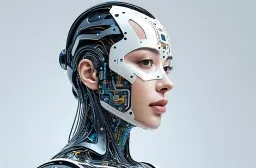
AI & Creativity: Unleashing the Power of Innovation
Artificial Intelligence (AI) is no longer just a tool for data processing or automating routine tasks; it has become a powerful ally in the realm of creativity. The integration of AI-powered creativity is transforming the way we approach art, design, and content creation, opening up new avenues for expression that were once unimaginable. In this article, we’ll explore how Artificial Intelligence and innovation are revolutionizing artistic endeavors and shaping the future of creative industries.
The Rise of AI in Creative Industries
The creative industries have always been a playground for innovation. From the early days of digital art to the rise of computer-generated imagery, technology has consistently pushed the boundaries of what is possible. Today, AI in creative industries is the latest frontier, offering unprecedented capabilities that challenge traditional notions of creativity.
AI-driven art and design are no longer mere experiments; they are becoming mainstream. Artists and designers are leveraging creative AI tools to generate unique artwork, compose music, and even write poetry. These AI systems, fueled by machine learning in creativity, can analyze vast amounts of data to create new and original content, often surpassing human expectations.
But what does this mean for the future of creativity? Are we witnessing the birth of a new era where machines outshine human artists? Or is AI merely an extension of human creativity, enhancing our ability to express ourselves in novel ways? These are questions that we, as a society, must grapple with as AI continues to evolve.
How AI Enhances Artistic Expression
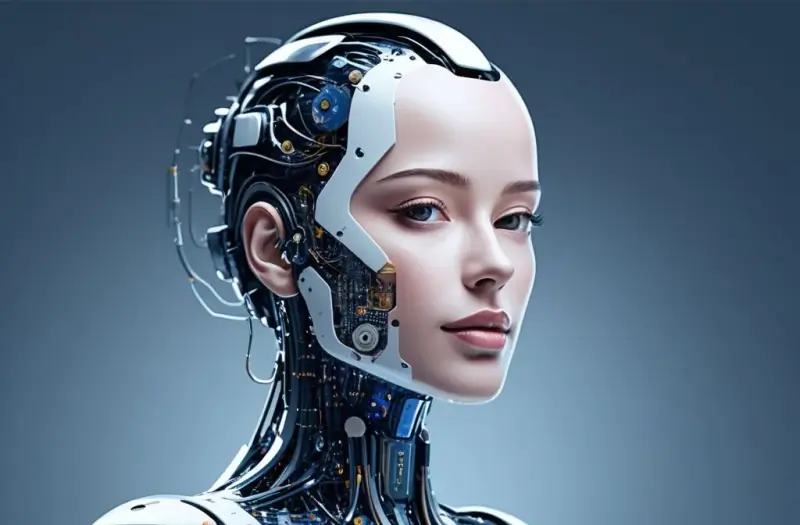
AI for artistic expression is not about replacing human creativity but augmenting it. By using AI-enhanced design tools, artists can explore new styles, techniques, and mediums that were previously inaccessible. This symbiotic relationship between human and machine allows for a more diverse range of creative outputs.
For instance, AI in digital art has enabled artists to create complex, intricate patterns and designs that would be impossible to achieve manually. These algorithms can generate thousands of variations of a single idea, providing artists with a rich palette of options to choose from.
In music, AI-assisted creativity is helping composers experiment with new genres and structures. By analyzing existing compositions, AI can suggest harmonies, melodies, and rhythms that might never have been considered. The result is a fusion of human intuition and computational creativity that leads to groundbreaking musical pieces.
Moreover, AI in content creation is revolutionizing the way we produce and consume media. From automated news articles to AI-generated videos, the possibilities are endless. Generative AI in art and media is not just about efficiency; it’s about expanding the horizons of what can be created.
AI-Driven Innovation: Redefining Creative Boundaries
The impact of AI-driven innovation on creativity extends beyond individual artists and designers. It is reshaping entire industries, from advertising and marketing to gaming and entertainment. Companies are increasingly relying on intelligent creativity tools to stay ahead of the curve and deliver more engaging and personalized content to their audiences.
In advertising, for example, AI-generated art is being used to create visually stunning campaigns that resonate with target audiences. These campaigns are often more effective because they are tailored to individual preferences and behaviors, something that traditional methods struggle to achieve.
The gaming industry is also benefiting from algorithmic creativity. Game developers are using AI to generate realistic environments, characters, and storylines, making games more immersive and dynamic. This level of detail and personalization would be impossible to achieve without the help of AI.
Furthermore, automated creativity tools are enabling small businesses and independent creators to compete with larger organizations. By lowering the barrier to entry, AI is democratizing creativity, making it accessible to anyone with a vision and a willingness to experiment.
The Ethical Implications of AI in Creativity
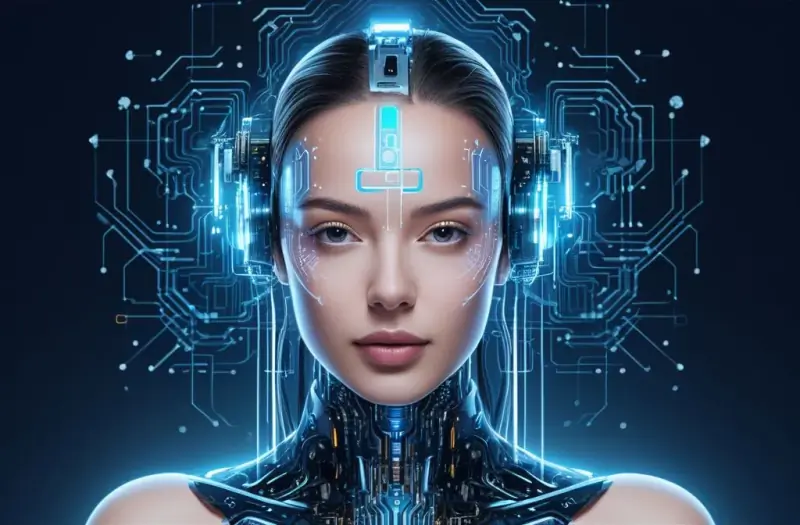
While the potential of creative machine learning is vast, it also raises important ethical questions. As AI becomes more integrated into the creative process, we must consider issues such as intellectual property, authorship, and the potential for AI to perpetuate biases.
One of the most pressing concerns is the question of authorship. When an AI system generates a piece of art or music, who owns the rights to that creation? Is it the developer of the AI, the user who inputs the data, or the AI itself? This is a complex issue that legal frameworks around the world are still grappling with.
Another concern is the potential for AI to reinforce existing biases. AI-driven art and content creation tools are only as good as the data they are trained on. If this data is biased, the outputs will be too. This could lead to a homogenization of culture, where certain voices and perspectives are marginalized.
Finally, there is the question of job displacement. As AI becomes more capable of performing creative tasks, there is a fear that it could replace human artists, designers, and writers. However, it is more likely that AI will complement human creativity, allowing us to focus on higher-level tasks that require emotional intelligence and critical thinking.
AI and the Future of Art: A New Paradigm?
As we look to the future, it’s clear that AI in creative industries will continue to play a pivotal role. The integration of AI-powered creativity into the arts is not a passing trend; it is a fundamental shift in how we approach creative expression.
In the coming years, we can expect to see even more sophisticated AI-enhanced design tools that push the boundaries of what is possible. These tools will not only make the creative process more efficient but also more inclusive, allowing people from all walks of life to express themselves in new and exciting ways.
We may also see the rise of entirely new art forms, born out of the collaboration between human and machine. AI-driven innovation will likely lead to the creation of hybrid art forms that combine traditional techniques with cutting-edge technology, offering fresh perspectives on age-old themes.
Ultimately, the future of AI and creativity is bright. While there are challenges to overcome, the potential benefits far outweigh the risks. By embracing AI as a partner in the creative process, we can unlock new levels of artistic expression and transform the way we see the world.
FAQs
What is AI-powered creativity?
AI-powered creativity refers to the use of artificial intelligence tools and algorithms to assist or enhance the creative process, including art, design, music, and content creation.
Can AI replace human artists?
While AI can generate creative outputs, it is unlikely to replace human artists entirely. Instead, it serves as a tool to augment human creativity, allowing for new forms of expression.
How does AI impact the creative industries?
AI is revolutionizing the creative industries by enabling more personalized and efficient content creation, lowering the barrier to entry for independent creators, and introducing new possibilities for artistic expression.
What are the ethical concerns associated with AI in creativity?
Ethical concerns include questions of authorship and intellectual property, potential biases in AI-generated content, and the impact on employment in creative fields.
What is generative AI in art?
Generative AI in art refers to the use of algorithms to create original artworks, often by analyzing and mimicking existing styles and techniques.
Conclusion
The integration of AI in creativity is more than just a technological advancement; it is a transformation of the creative landscape. As we continue to explore the possibilities of AI-driven art and design, we must remain mindful of the ethical implications and strive to use AI as a force for good. The future of creativity is one where humans and machines collaborate to push the boundaries of artistic expression, opening up new worlds of possibility.
Key Takeaways
- AI-powered creativity is transforming the way we approach art, design, and content creation, offering new avenues for expression.
- AI-driven innovation is reshaping entire industries, from advertising and marketing to gaming and entertainment.
- The ethical implications of AI in creative industries must be carefully considered, including issues of authorship, bias, and job displacement.
- The future of AI and creativity is bright, with the potential for new art forms and more inclusive creative processes.
By understanding and embracing the power of AI-enhanced design, we can unlock new levels of artistic expression and transform the future of creativity.

AI & Human Rights: Ethical Considerations
Introduction
As we venture further into the digital age, the integration of artificial intelligence (AI) into various facets of our lives presents both opportunities and challenges. One of the most pressing concerns is the intersection of AI and human rights, a topic that demands our attention. In this article, we explore the ethical dilemmas posed by AI technologies and their implications for human rights, focusing on the need for ethical AI and robust AI governance.
The rapid development of AI has outpaced the creation of legal and ethical frameworks to regulate its use. As a result, we must consider how AI and privacy rights, AI fairness, and AI accountability are addressed to ensure that technology serves humanity rather than undermines it.
The Intersection of AI and Human Rights

Artificial intelligence has the potential to transform society for the better, but it also raises significant concerns about human rights in technology. The ability of AI to process vast amounts of data, make decisions, and even predict human behavior can lead to both beneficial and harmful outcomes.
The Promise and Peril of AI
On the one hand, AI can enhance our ability to protect human rights by identifying and addressing issues such as discrimination, bias, and inequality. For instance, AI-driven analysis can reveal patterns of discrimination that may not be immediately apparent, leading to more effective interventions.
However, the same technologies can be used to infringe on rights. AI and civil liberties are at risk when AI is employed in surveillance systems that can track individuals without their knowledge or consent. The balance between AI regulation and innovation is crucial to ensure that AI technologies do not become tools of oppression.
AI and Privacy Rights
One of the most critical areas where AI ethics intersects with human rights is in the realm of AI and privacy rights. AI systems often rely on massive datasets that include personal information, raising concerns about how this data is collected, stored, and used. The potential for misuse is significant, particularly when data is used without consent or for purposes beyond its original intent.
To protect privacy, it is essential to implement AI transparency and AI-driven rights protection measures. This includes ensuring that individuals are informed about how their data is being used and have the ability to control and manage their personal information.
Ethical AI: A Human-Centric Approach
The concept of ethical AI is rooted in the belief that AI systems should be designed and deployed in a way that prioritizes human dignity, fairness, and justice. AI bias and discrimination are major concerns, as AI systems can inadvertently reinforce existing social inequalities if not properly managed.
Addressing AI Bias and Discrimination
AI systems are only as good as the data they are trained on. If the training data contains biases, the AI will likely perpetuate these biases in its decision-making processes. This can have serious consequences, particularly in areas such as hiring, law enforcement, and lending, where biased AI decisions can lead to unequal treatment.
To combat AI bias, we must prioritize responsible AI practices that include rigorous testing, diverse training datasets, and continuous monitoring for biased outcomes. Additionally, the development of AI and legal frameworks that explicitly address discrimination and bias is essential to ensure that AI systems uphold the principles of fairness and equality.
AI and Social Justice
The integration of AI into society also raises questions about AI and social justice. While AI has the potential to improve access to services and resources, it can also exacerbate existing inequalities if not implemented thoughtfully. AI policy must consider the broader social impacts of AI technologies, ensuring that they contribute to rather than detract from social justice goals.
AI transparency and AI accountability are key components of a human-centric approach to AI. By making AI systems more transparent and holding developers and users accountable for their actions, we can create a more just and equitable society.
AI Governance: The Role of Regulation

Effective AI governance is critical to navigating the ethical challenges posed by AI. Without clear guidelines and regulations, the potential for abuse is high. AI regulation must be designed to protect human rights while still allowing for innovation and technological advancement.
The Need for Comprehensive AI Regulation
The current regulatory landscape for AI is fragmented, with different countries and regions adopting varying approaches to AI and human rights. To create a consistent and effective framework, international cooperation is necessary. This includes the development of global standards for AI ethics and AI accountability that can be applied across borders.
AI and civil liberties must also be a focus of regulatory efforts. This includes ensuring that AI technologies do not infringe on basic rights such as freedom of expression, privacy, and the right to fair treatment.
The Role of AI in Protecting Human Rights
AI can also play a positive role in protecting human rights. For example, AI-driven tools can be used to monitor and report human rights abuses, providing real-time data that can be used to hold perpetrators accountable. Additionally, AI can help identify and address systemic issues that contribute to human rights violations, such as poverty and discrimination.
By leveraging AI in these ways, we can create a more just and equitable world. However, this requires a commitment to AI transparency and AI-driven rights protection, as well as ongoing efforts to address the ethical challenges posed by AI.
FAQs
What are the main ethical concerns related to AI and human rights?
The main ethical concerns include AI bias, AI transparency, AI accountability, and the potential for AI technologies to infringe on privacy rights and civil liberties.
How can AI bias be addressed?
AI bias can be addressed through the use of diverse training datasets, rigorous testing, continuous monitoring, and the development of AI and legal frameworks that explicitly address discrimination and bias.
What role does AI play in protecting human rights?
AI can help protect human rights by identifying and reporting abuses, monitoring systemic issues, and providing data-driven insights that can be used to hold perpetrators accountable.
Why is AI regulation important for human rights?
AI regulation is important to ensure that AI technologies are used ethically and do not infringe on basic human rights such as privacy, freedom of expression, and the right to fair treatment.
What is ethical AI?
Ethical AI refers to AI systems designed and deployed in a way that prioritizes human dignity, fairness, justice, and transparency.
Conclusion
The intersection of AI and human rights presents both challenges and opportunities. As we navigate the ethical dilemmas posed by AI, it is crucial to prioritize AI ethics, AI governance, and responsible AI practices. By addressing AI bias, ensuring AI transparency, and developing comprehensive AI regulation, we can create a future where AI technologies enhance rather than undermine human rights.
Key Takeaways
- Ethical AI is essential to protect human rights and ensure fairness and justice in AI decision-making.
- AI bias and discrimination must be addressed through diverse training datasets, rigorous testing, and continuous monitoring.
- AI regulation is critical to prevent the misuse of AI technologies and protect privacy rights and civil liberties.
- AI has the potential to protect human rights by providing data-driven insights and monitoring systemic issues.
- A human-centric approach to AI prioritizes human dignity, fairness, and social justice in the development and deployment of AI technologies.
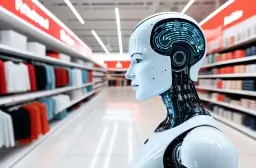
AI & Retail: How AI Will Shape the Future of Shopping
The future of retail is undergoing a profound transformation, and artificial intelligence (AI) is at the heart of this revolution. AI-driven retail innovation is reshaping how businesses operate and how customers experience shopping, both online and in stores. But how exactly will artificial intelligence affect the future of retailing? Let’s dive into how AI is shaping the retail industry and the long-term implications we can expect.
Introduction to AI in Retail
As we move forward, AI’s role in retail continues to expand, driving efficiency, enhancing customer service, and redefining shopping experiences. Whether it’s personalized recommendations or managing inventory, AI in retail industry has opened doors for smarter and more dynamic retail operations.
The key advantage AI brings to the table is its ability to handle enormous amounts of data in real-time. AI retail transformation allows retailers to gain valuable insights, making it easier to adapt to changing consumer demands. From supply chain management to customer interaction, AI is rapidly becoming an indispensable tool in the retail landscape.
AI-Driven Retail Innovation: A Game-Changer

Artificial intelligence is transforming the retail industry in ways that were unimaginable just a decade ago. This transformation is seen across multiple facets of the business:
- AI-powered shopping experiences: Retailers are using AI to create more personalized and engaging shopping journeys. Whether it’s through targeted product recommendations or customized marketing strategies, AI is helping retailers connect with customers on a deeper level.
- Smart retail technology: AI applications are allowing stores to automate processes, from cashier-less checkouts to dynamic pricing, improving both efficiency and customer satisfaction.
- Retail predictive analytics: AI-driven insights are enabling businesses to predict trends and customer behaviors, which in turn helps them stock the right products, reduce waste, and optimize marketing campaigns.
AI’s role as a driving force behind innovation is clear. The future of retail automation is tied to how well companies leverage these technologies to stay ahead of their competitors.
AI Retail Personalization: Enhancing Customer Experiences
One of the biggest impacts AI is having on retail is the AI retail personalization of customer experiences. Personalized shopping has become a standard expectation among consumers, and AI helps retailers deliver on that expectation by analyzing consumer behavior, preferences, and purchasing history.
- Product Recommendations: AI algorithms study browsing patterns and past purchases to provide personalized product recommendations, leading to higher customer satisfaction and sales conversion.
- Customizable Marketing: AI allows for tailored marketing strategies, sending the right messages at the right time based on consumer behavior. This increases engagement and drives more effective promotions.
- Enhanced Customer Loyalty: By anticipating customer needs and providing a personalized touch, retailers are building stronger, longer-lasting relationships with their customers, which is essential in today’s competitive market.
AI in Retail Operations: Optimizing Efficiency
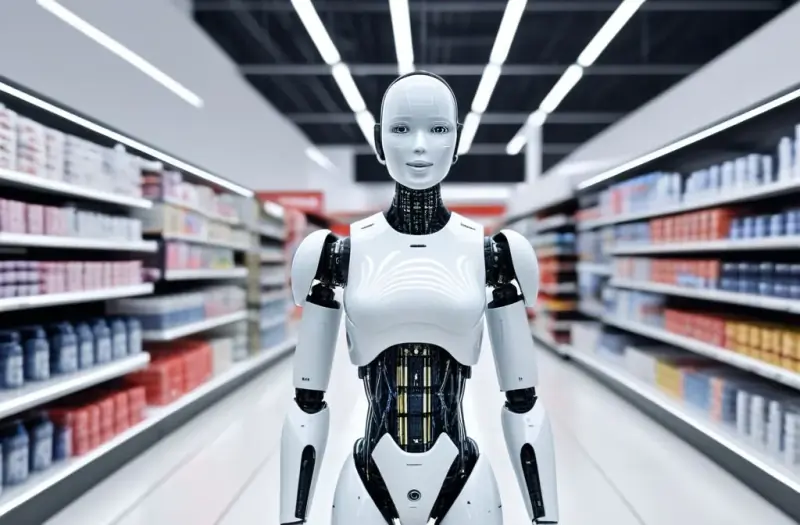
Behind the scenes, AI retail optimization is streamlining operations, reducing human error, and improving efficiency across the board. Key areas where AI is making a difference include:
- Inventory Management: AI is used to predict inventory needs with remarkable accuracy. By analyzing customer demand and historical data, AI systems can automate reordering, minimize out-of-stock situations, and reduce excess inventory.
- Supply Chain Efficiency: AI is revolutionizing logistics by optimizing delivery routes, predicting potential delays, and ensuring products reach shelves faster. This results in a more agile supply chain and improved service levels.
- Pricing Strategies: AI-powered dynamic pricing systems allow retailers to adjust prices in real-time based on factors like demand, competition, and inventory levels. This helps to maximize profits while remaining competitive.
AI-Enhanced Customer Service: A New Standard
AI is redefining what customer service means in the retail industry. Traditional methods of addressing customer queries are being replaced with intelligent, AI-driven solutions.
- AI-powered chatbots: These virtual assistants are handling customer service inquiries around the clock, offering fast and efficient solutions to customer problems without human intervention.
- Retail machine learning: Through continuous learning from interactions, AI systems improve their customer service responses, leading to more accurate and helpful solutions over time.
- Voice-Activated Shopping: AI-driven voice assistants, such as Amazon’s Alexa, are becoming common in retail, allowing customers to place orders or search for products using just their voice. This hands-free, convenient shopping experience is becoming increasingly popular.
Future of Retail with AI: What Lies Ahead?

The future of retail with AI promises even more exciting advancements. As intelligent retail systems evolve, we can expect:
- Augmented Reality (AR) Shopping: AI will work hand-in-hand with AR to allow customers to try products virtually before purchasing them, creating a more immersive shopping experience.
- Hyper-Personalized Stores: Brick-and-mortar stores will become smarter, offering experiences customized to each individual shopper based on their preferences and purchase history.
- AI Retail Insights for Sustainability: Retailers will use AI to become more sustainable by optimizing supply chains, reducing waste, and encouraging eco-friendly consumer behaviors.
The future of retail automation will be defined by the increasing integration of AI into every aspect of the shopping experience, making it more efficient, personalized, and connected than ever before.
FAQs
How is AI transforming the retail industry?
AI is reshaping retail by automating processes, enhancing customer personalization, optimizing operations, and improving customer service through technologies like machine learning and chatbots.
What role does AI play in customer service?
AI enhances customer service by providing 24/7 support through chatbots, offering personalized product recommendations, and improving the overall shopping experience with predictive insights.
Will AI replace retail jobs?
While AI will automate many repetitive tasks, it is more likely to augment human roles by enabling employees to focus on higher-value tasks, such as building customer relationships and providing personalized assistance.
How can AI help retailers optimize pricing strategies?
AI uses dynamic pricing algorithms to adjust prices in real-time based on demand, competition, and other market factors, helping retailers stay competitive and maximize profits.
What are some examples of AI in retail personalization?
AI is used in retail to personalize product recommendations, create tailored marketing strategies, and provide customized shopping experiences based on customer preferences and past behaviors.
Conclusion
Artificial intelligence is already a major force in reshaping the retail landscape. From improving customer service to optimizing operations, AI retail transformation is ushering in a new era of efficiency and personalization. Retailers that embrace AI retail optimization will not only thrive in the competitive market but will also redefine how consumers interact with brands. As we look to the future, the integration of AI into every aspect of retail will continue to enhance the customer experience, streamline operations, and drive innovation.
Key Takeaways
- AI is revolutionizing the retail industry by enabling automation, personalization, and operational efficiency.
- AI-powered shopping experiences and AI retail personalization are transforming how customers interact with brands.
- Retailers leveraging AI retail insights are able to predict trends, optimize pricing, and improve inventory management.
- The future of retail automation promises even more advancements, such as AR integration and hyper-personalized stores.
- While AI will change many aspects of retail, it will also create opportunities for businesses to enhance their customer relationships and operational strategies.

AI and Employment: Transforming the Future of Work
The advent of artificial intelligence (AI) is reshaping industries, revolutionizing how we live, work, and interact. As we stand at the precipice of an AI-driven future, one of the most significant areas of impact is employment. The intersection of AI and employment brings both opportunities and challenges, redefining job roles, enhancing productivity, and altering the very nature of work.
Introduction to AI in the Workplace
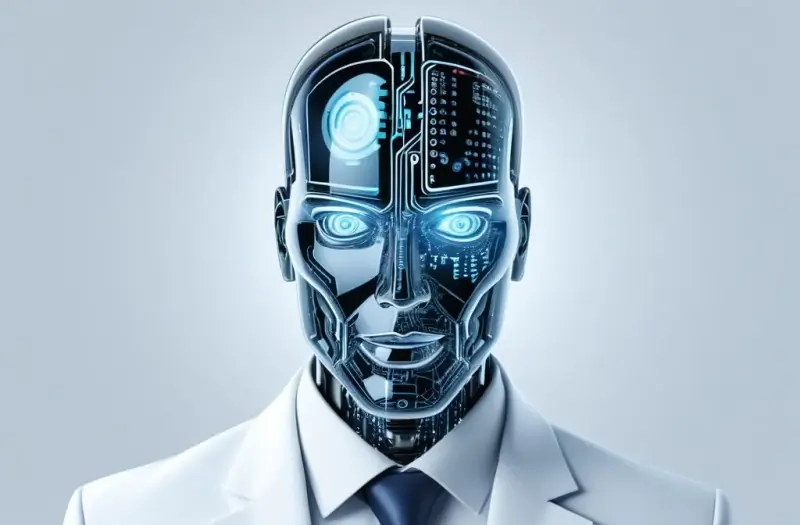
Artificial intelligence has made remarkable strides in recent years, infiltrating various sectors with the promise of increased efficiency and innovation. AI in the workplace isn’t a futuristic concept—it’s our current reality. From automating routine tasks to providing intelligent insights, AI is helping businesses streamline operations and focus human efforts on more creative and complex problems.
However, this transformation doesn’t come without its set of challenges. As AI continues to evolve, the relationship between automation and jobs is under intense scrutiny. We must consider how AI-driven employment will impact job markets, the workforce, and, ultimately, our society. In this article, we’ll explore the various facets of AI and employment, analyzing both the potential benefits and the hurdles we need to address.
The Evolution of AI-Driven Employment
AI’s journey from a theoretical concept to a practical tool has been nothing short of extraordinary. The automation and jobs debate has been ongoing for decades, but with AI’s growing capabilities, the conversation has shifted from speculation to reality.
Early Stages of AI in Jobs
In the initial stages, AI was primarily used for automating repetitive, low-skill tasks. This phase marked the beginning of AI job impact, where machines took over roles that required minimal human intervention. These tasks included data entry, basic customer service, and simple manufacturing processes.
However, as machine learning and employment became more intertwined, AI began to take on more sophisticated roles. Intelligent systems could now analyze data, predict trends, and even make decisions. This shift not only increased efficiency but also changed the nature of certain jobs, requiring workers to adapt to new technologies and methodologies.
The Current State of AI Workforce Integration
Today, AI has firmly established itself in various industries, from healthcare and finance to marketing and logistics. The AI workforce integration has led to the creation of new job roles while rendering some traditional ones obsolete. For instance, data scientists and AI specialists are now in high demand, while roles that involve routine manual tasks are increasingly automated.
Moreover, digital labor and AI have introduced concepts like remote work and gig economy jobs, which are often facilitated by AI-driven platforms. These changes have blurred the lines between traditional employment and freelance work, offering both flexibility and uncertainty to workers.
The Future of Work with AI
Looking ahead, the future of work with AI promises even more profound changes. As AI systems become more advanced, they will be capable of handling tasks that require creativity, emotional intelligence, and complex decision-making. This evolution could lead to the AI-powered job market, where human and machine collaboration becomes the norm.
However, this future also raises concerns about job displacement and the potential widening of the skills gap. While AI and job creation will bring new opportunities, there is also the risk of exacerbating inequalities if workers are not equipped with the necessary skills to thrive in an AI-driven economy.
AI’s Impact on Job Creation and Displacement
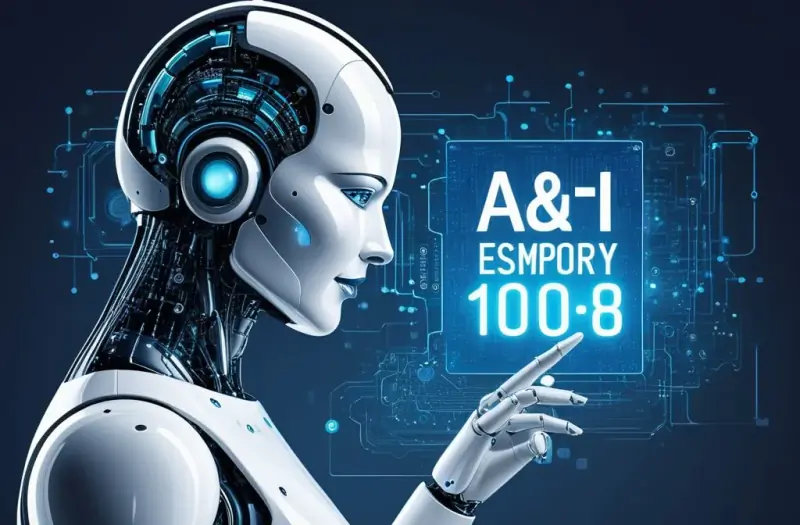
The impact of AI on job creation and displacement is a double-edged sword. On one hand, AI has the potential to create entirely new industries and job roles. On the other hand, it could lead to significant job losses, particularly in sectors that are heavily reliant on manual labor.
AI and Job Creation
One of the most promising aspects of AI in the workplace is its ability to create new job opportunities. As AI systems become more integrated into business processes, the demand for professionals who can design, implement, and maintain these systems will continue to rise. Roles such as AI ethicists, data scientists, and machine learning engineers are just a few examples of the jobs that have emerged due to AI.
Additionally, AI is expected to drive innovation in various industries, leading to the development of new products and services. This, in turn, could spur economic growth and create jobs across different sectors. For instance, the rise of AI in healthcare has led to the creation of personalized medicine, which requires a new breed of healthcare professionals.
AI and Job Displacement
Conversely, AI job impact is also associated with the displacement of workers, particularly in industries where tasks can be easily automated. For example, the manufacturing sector has seen a significant reduction in human labor as AI-powered robots take over assembly lines. Similarly, AI-driven systems are replacing human roles in customer service, data entry, and even financial analysis.
While automation can lead to increased efficiency, it also poses a challenge to workers who may find their skills obsolete. This is especially concerning for low-skilled workers who may struggle to find new employment opportunities in an AI-dominated job market.
Balancing AI and Human Labor
To address the challenges of AI employment changes, it’s crucial to strike a balance between AI and human labor. Rather than viewing AI as a replacement for human workers, we should see it as a tool that can augment human capabilities. For example, AI can handle data processing and analysis, freeing up human workers to focus on strategic decision-making and creative problem-solving.
Moreover, businesses and governments must invest in retraining and upskilling programs to ensure that workers are prepared for the AI-driven workforce. By doing so, we can mitigate the negative impacts of job displacement and ensure that the benefits of AI are shared more equitably across society.
AI in Recruitment: Transforming How We Hire
One of the most significant areas where AI is making an impact is recruitment. AI in recruitment has revolutionized how companies find, evaluate, and hire talent. By automating the recruitment process, AI has made it faster, more efficient, and more objective.
The Role of AI in Talent Acquisition
AI-driven systems can analyze vast amounts of data to identify the best candidates for a job. These systems can screen resumes, assess skills, and even conduct initial interviews. This not only speeds up the hiring process but also reduces the likelihood of human bias influencing hiring decisions.
For example, an AI system can evaluate a candidate’s qualifications based on objective criteria, such as education and work experience, without being influenced by factors like age, gender, or race. This leads to a more diverse and inclusive workforce.
AI and Job Matching
Another way AI and employment intersect is through job matching. AI algorithms can analyze a candidate’s skills, experience, and preferences to match them with the most suitable job opportunities. This not only benefits job seekers but also helps employers find the right talent more efficiently.
Moreover, AI-driven platforms can continuously learn and improve their matching algorithms, leading to more accurate job matches over time. This reduces the time and effort required for both employers and job seekers in the recruitment process.
The Ethical Implications of AI in Recruitment
While AI employment solutions offer numerous benefits, they also raise ethical concerns. For instance, there is the risk of AI systems perpetuating existing biases if they are trained on biased data. Additionally, the lack of transparency in AI decision-making processes can lead to questions about fairness and accountability.
To address these concerns, it’s essential to ensure that AI systems used in recruitment are designed with ethical considerations in mind. This includes using diverse and representative data sets, regularly auditing AI systems for bias, and providing transparency in how decisions are made.
The Role of AI in Enhancing Workplace Productivity
AI is not only transforming how we hire but also how we work. AI in the workplace is enhancing productivity by automating routine tasks, providing intelligent insights, and enabling better decision-making.
Automating Routine Tasks
One of the most significant benefits of AI in the workplace is its ability to automate routine tasks. From managing schedules to processing invoices, AI-driven systems can handle tasks that would otherwise consume valuable time and resources. This allows workers to focus on more strategic and creative activities, leading to increased productivity.
For example, in the finance industry, AI systems can automate tasks such as financial reporting and fraud detection, allowing human workers to focus on analysis and strategy. Similarly, in the healthcare sector, AI can automate administrative tasks, enabling healthcare professionals to spend more time with patients.
Intelligent Insights and Decision-Making
Another way AI and employment intersect is through intelligent insights and decision-making. AI-driven systems can analyze vast amounts of data to identify trends, predict outcomes, and recommend actions. This not only improves decision-making but also enables businesses to respond more quickly to changes in the market.
For instance, AI systems can analyze customer data to identify purchasing patterns and predict future demand. This allows businesses to optimize their inventory, pricing, and marketing strategies, leading to increased sales and profitability.
Enhancing Collaboration and Communication
AI is also playing a role in enhancing collaboration and communication in the workplace. AI-driven platforms can facilitate remote work, enabling teams to collaborate more effectively across different locations and time zones. Additionally, AI-powered communication tools can analyze and prioritize messages, ensuring that workers receive the most critical information in a timely manner.
Moreover, AI systems can provide real-time language translation, enabling teams from different linguistic backgrounds to communicate more effectively. This not only enhances collaboration but also fosters a more inclusive and diverse work environment.
Challenges and Solutions for AI Workforce Integration
While AI workforce integration offers numerous benefits, it also presents several challenges that need to be addressed. These challenges include the potential for job displacement, the need for upskilling and reskilling, and the ethical implications of AI in the workplace.
Job Displacement and the Skills Gap
One of the most significant challenges of AI-driven employment is the potential for job displacement. As AI systems become more advanced, there is a risk that certain jobs will become obsolete, particularly those that involve routine manual tasks. This could lead to significant job losses,

AI Benefits for Doctors: Enhancing Healthcare Efficiency
The medical field has always been one of the most complex and demanding industries. As doctors, we are tasked with balancing patient care, treatment plans, diagnoses, and administrative duties—sometimes all at once. Amidst these challenges, technology has emerged as a crucial ally, offering us tools to streamline our workflows and improve patient outcomes. Artificial intelligence (AI) has become one of the most transformative technologies in healthcare, offering significant AI benefits for doctors by enhancing efficiency, precision, and overall care quality.
But can AI truly replace the invaluable human touch in medicine, or does it merely enhance our capabilities? As healthcare professionals, we understand that patient care requires empathy, intuition, and a deep understanding of the human body. So, where does AI fit in, and how can it help us do our jobs better without overshadowing the personal connections we build with our patients?
In this article, we will explore the various AI benefits for doctors, including how AI-driven patient care, machine learning for healthcare professionals, and AI-assisted diagnosis can redefine the future of healthcare. From enhancing treatment planning to providing intelligent systems that support decision-making, AI is reshaping how we deliver care, ensuring faster, more accurate diagnoses, and ultimately improving patient outcomes. But how does all of this work in practice? Let’s find out.
The Role of AI in Medical Practice
AI has already made a significant impact on medical practice and is only set to grow in the coming years. By leveraging AI medical tools, physicians can make faster, more accurate diagnoses and develop better treatment plans. These intelligent systems are capable of analyzing vast amounts of data—much more than a single human could process—enabling doctors to make informed decisions quickly and effectively.
Incorporating machine learning for healthcare professionals allows us to have access to continuously evolving algorithms that can detect patterns in patient data that might otherwise go unnoticed. These AI-powered medical analysis tools can help detect early signs of diseases such as cancer, heart conditions, and neurological disorders, allowing for AI-assisted diagnosis that can be more accurate than traditional methods.
Moreover, AI clinical decision support systems help doctors in decision-making processes by providing real-time suggestions based on medical evidence, patient history, and up-to-date clinical guidelines. With AI, we can focus more on patient interaction and care while trusting the system to handle the heavy lifting of data processing and analysis.
AI in Diagnosis and Treatment Planning

One of the most profound AI benefits for doctors lies in its ability to assist with automated diagnostics and AI-enhanced treatment planning. Traditional diagnostic methods often rely on the experience of the physician and the time spent analyzing test results. However, with the integration of AI tools, physicians can receive faster and more precise interpretations of medical imaging, laboratory results, and patient history, ensuring better treatment planning.
For instance, AI algorithms can now assist in interpreting medical images such as X-rays, MRIs, and CT scans. These systems have been trained using vast amounts of imaging data, enabling them to identify even the smallest anomalies that a human eye might miss. With this AI-powered medical analysis, physicians can detect conditions such as tumors, fractures, or infections with a higher degree of accuracy.
Additionally, AI-driven patient care is transforming the treatment process by offering personalized treatment plans based on a patient’s medical history, genetic information, and lifestyle. These systems can predict patient responses to various treatments and suggest the most effective courses of action, leading to better clinical outcomes.
AI Assistance in Patient Management
Efficient AI patient management systems allow doctors to optimize their time and focus on the most critical aspects of patient care. By automating administrative tasks such as scheduling, billing, and record-keeping, AI frees up valuable time for doctors to focus on what truly matters—patients.
Moreover, AI can assist in patient triage, prioritizing cases based on urgency and medical need. This helps doctors manage patient flow, ensuring that critical cases are treated first and reducing wait times for patients.
AI-powered intelligent systems for doctors can also track patient progress over time, flagging any concerning trends or deviations from expected recovery. This real-time monitoring can alert doctors to potential issues before they become critical, enhancing patient safety and outcomes.
Streamlining Workflow with AI in Healthcare

AI-driven healthcare solutions are not just limited to patient care—they extend to streamlining the overall workflow within healthcare settings. By utilizing smart health technology, doctors can automate repetitive tasks and improve administrative efficiency.
For example, AI tools can assist with automated documentation, helping doctors generate notes and summaries quickly without manually typing everything out. This ensures that patient records are accurate and up-to-date without taking time away from patient interaction.
Additionally, AI medical research and data analysis tools help healthcare professionals stay on top of the latest medical advancements, clinical trials, and emerging treatments. These intelligent systems can analyze vast amounts of research data and provide physicians with actionable insights, aiding them in making informed decisions based on the latest evidence.
The Future of AI in Medicine
Looking ahead, the integration of AI in medical practice is poised to grow exponentially, offering even more AI benefits for doctors. As technology continues to evolve, we can expect AI to play an even greater role in personalized healthcare and predictive medicine.
AI medical research is advancing rapidly, enabling us to discover new treatments, drugs, and therapies at an unprecedented pace. These breakthroughs will empower healthcare professionals to offer more effective, tailored treatments to patients, enhancing overall health outcomes.
Furthermore, the integration of doctor AI support tools will help healthcare systems become more efficient and cost-effective, benefiting both patients and physicians. By automating administrative tasks and improving diagnostic accuracy, AI can significantly reduce the burden on doctors, allowing them to focus more on patient care.
FAQs about AI Benefits for Doctors
What are the main AI benefits for doctors?
AI helps doctors with faster, more accurate diagnoses, better treatment planning, patient management, and streamlining administrative tasks, ultimately improving healthcare efficiency.
How does AI assist in diagnosis and treatment planning?
AI analyzes large datasets, such as medical images and patient history, to provide doctors with real-time diagnostic support and personalized treatment recommendations, enhancing patient outcomes.
Is AI replacing doctors in healthcare?
No, AI is not meant to replace doctors. It assists healthcare professionals by automating administrative tasks, providing decision support, and offering accurate diagnoses, allowing doctors to focus on patient care.
What are AI-powered medical tools used for?
AI-powered medical tools are used for improving diagnostic accuracy, predicting treatment responses, automating patient management, and enhancing clinical decision-making, all of which benefit healthcare professionals.
How does AI enhance patient care?
AI improves patient care by offering personalized treatment plans, detecting early signs of disease, providing decision support, and improving diagnostic accuracy, ultimately leading to better patient outcomes.
Conclusion: Embracing AI for a Healthier Future
The integration of AI in healthcare offers numerous AI benefits for doctors, from improving diagnostic accuracy and treatment planning to streamlining workflows and enhancing patient management. AI-assisted diagnosis, machine learning for healthcare professionals, and AI-powered medical analysis are transforming the way we deliver patient care, enabling us to work more efficiently and effectively.
As we move forward, the collaboration between doctors and AI systems will continue to evolve, ultimately leading to improved healthcare outcomes and a more efficient healthcare system overall. By embracing digital health innovation and AI-driven patient care, doctors can focus more on what they do best—providing compassionate, high-quality care to their patients.

AI Customer Segmentation & Targeting: Boost Your Marketing
In the current landscape, artificial intelligence (AI) is revolutionizing the way we segment and define our target audiences. In a world where data is abundant and personalization is key to success, AI stands out as an indispensable tool. In this article, we will explore how AI is transforming marketing strategies, providing a detailed look into customer segmentation with AI and how this can benefit businesses of all sizes.
The Role of AI in Customer Segmentation

Customer segmentation is essential for directing effective marketing campaigns. With the advent of AI, businesses now have the opportunity to analyze large volumes of data quickly and accurately. Using advanced algorithms, AI allows for the identification of patterns and behaviors that would be impossible to detect manually.
AI Algorithms for Segmentation
AI algorithms for segmentation work by processing customer data to create groups with similar characteristics. This enables companies to craft highly targeted and personalized campaigns. Automated segmentation technology with AI helps identify not only traditional segments but also new market opportunities.
Benefits of Data Analysis with AI
Data analysis with AI offers several benefits:
- Increased accuracy in identifying customer profiles.
- Marketing personalization based on deep insights.
- Improved efficiency in advertising campaigns.
These benefits translate into a more engaging customer experience and a significant increase in conversion rates.
AI Technology for Customer Targeting
Using AI technology for customer targeting means applying predictive models to forecast which customers are most likely to respond to a campaign. These models analyze behavioral histories and trends to adjust marketing strategies in real time.
Audience Segmentation with Machine Learning
Machine Learning is a subfield of AI that continually refines its own algorithms based on new data. Audience segmentation with machine learning enables dynamic campaigns that quickly adapt to changes in customer behavior.
Artificial Intelligence in Marketing Personalization
Artificial intelligence in marketing personalization goes beyond simple segmentation. It allows for the creation of unique experiences for each customer based on their preferences and past behaviors. This results in higher customer satisfaction and better retention.
How to Implement AI in Market Segmentation

Implementing AI in segmentation strategies requires a structured approach. Here are the key steps:
- Collect relevant data about your customers.
- Select the appropriate AI technology for analysis and segmentation.
- Train your AI models with historical and current data.
- Integrate the insights obtained into your marketing campaigns.
Challenges and Considerations
While AI offers many advantages, there are also challenges, such as the need for high-quality data and privacy issues. It is essential to ensure that data collection and usage practices comply with regulations.
FAQs
How does AI improve customer segmentation?
AI improves segmentation by analyzing large volumes of data to identify patterns and create more accurate and personalized customer segments.
What are the main algorithms used in AI segmentation?
Algorithms such as clustering, neural networks, and supervised learning are commonly used for customer segmentation.
Is implementing AI in segmentation expensive?
Costs vary, but in the long run, efficiency and return on investment often justify the initial investment.
How can I ensure that AI complies with privacy laws?
It is important to adopt transparent practices and follow local and international data protection regulations.
Conclusion
Artificial intelligence is transforming the way we segment and target our audiences, providing valuable insights and more effective campaigns. Adopting AI in customer segmentation and targeting can lead to more precise and personalized marketing, benefiting both businesses and their customers.
Key Takeaways:
- Segmentation with AI allows for the identification and creation of more accurate customer groups.
- Algorithms and machine learning are powerful tools for analysis and personalization.
- Implementing AI requires careful planning and compliance with privacy regulations.
Adopting AI in your marketing strategies is a crucial step to stay ahead in today’s competitive market.

AI Customer Service Success Stories in Local Businesses
We’ve entered a new era where AI-powered customer service success stories in local businesses are not just anecdotal—they’re measurable, compelling, and growing fast. From AI chatbots solving problems at midnight to voice assistants taking orders without error, these technologies are enhancing how small enterprises interact with their customers. The result? Better customer satisfaction, reduced operational stress, and significant growth.
So here’s the question: Can artificial intelligence offer small local businesses the same powerful customer service edge that global corporations enjoy? As we explore real-world examples of AI success in small business environments, you’ll discover that the answer is a resounding yes.
The Rise of AI in Local Commerce: Why Now?
The adoption of AI in local businesses isn’t just a trend—it’s a timely solution to growing service demands and labor challenges. Local shops, restaurants, and service providers are increasingly facing high customer expectations, reduced staffing, and tight budgets. Fortunately, AI is filling the gap.
Machine learning customer service wins stem from its ability to automate repetitive tasks like responding to FAQs, tracking orders, and handling reservations. AI doesn’t sleep or get overwhelmed—it offers consistency that humans sometimes can’t during peak hours.
Take La Dulce Vida, a small dessert shop in Austin, Texas. After implementing an intelligent virtual assistant on their website and Facebook page, they reduced average response times by 80% and saw a 25% increase in online orders. This is just one of many AI customer service success stories redefining local commerce.
Real-World Chatbot Wins: Smart Support Around the Clock

Chatbot success in small businesses has become a headline in the AI transformation of local service. Unlike traditional live chat that requires human intervention, modern chatbots powered by natural language processing (NLP) can handle entire conversations—often without any human support.
Consider PetPalz, a pet grooming and supply shop in Charlotte, NC. They implemented a chatbot named “FurBot” on their website to handle appointment bookings and product inquiries. Within three months, FurBot:
- Booked over 300 appointments autonomously
- Reduced missed customer calls by 70%
- Helped increase product upsells by 15%
This shows how automated customer service wins are not only possible but scalable, even for the smallest enterprises. What’s more, these systems continue to learn and improve through customer interactions, thanks to machine learning algorithms.
AI-Powered Voice Assistants: Transforming Retail Conversations
While chatbots dominate online, voice assistant success in retail is rising fast in physical spaces. These systems offer hands-free interactions, ideal for high-touch businesses like retail, hospitality, and even automotive services.
At TrendTreads, a boutique sneaker store in Denver, an AI voice assistant helps customers check inventory, book fitting sessions, and even sign up for loyalty programs—all through in-store kiosks. Since deployment, they’ve noted:
- A 40% drop in wait times
- A 20% increase in customer retention
- Higher customer satisfaction ratings on Yelp and Google
By embracing conversational AI business benefits, TrendTreads elevated their in-store experience, showing how local businesses can blend tech with a human touch.
Turning Reviews into Revenue: AI-Powered Sentiment Analysis
Another digital customer service innovation making waves is AI-based sentiment analysis. This tool scans customer reviews, social media mentions, and emails to identify patterns, tone, and customer needs.
LuxeCuts, a family-run salon in Phoenix, used sentiment analysis tools to understand why certain times of day received lower ratings. The AI tool discovered that long waiting times after 4 p.m. were causing frustration. By reallocating staff based on these insights, LuxeCuts:
- Improved average review scores from 3.8 to 4.6
- Reduced churn rate by 18%
- Increased tip revenue per stylist
This underscores how NLP-enhanced service improvements allow local owners to make data-driven decisions quickly and effectively.
Local AI Service Transformations by Industry

| Industry | AI Application | Result |
|---|---|---|
| Food & Beverage | Chatbots for online orders | 25–30% increase in takeout sales |
| Retail | AI voice assistants in stores | 40% faster checkout times |
| Pet Services | Automated appointment scheduling | 300+ bookings/month with no human input |
| Beauty & Grooming | Sentiment analysis for customer reviews | 4.6+ star average ratings after staff adjustments |
| Real Estate | Virtual AI assistants for lead qualification | 50% faster response to buyer inquiries |
These local business tech success stories highlight the growing diversity of AI implementation and the measurable wins across sectors.
Overcoming Common Challenges in AI Adoption
Despite the success, integrating AI isn’t without hurdles. The most common concerns among small business owners include:
- High initial investment – Some fear the cost of AI tools is beyond their budget.
- Lack of technical knowledge – Many local businesses don’t have in-house tech teams.
- Fear of losing the “personal touch” – Owners worry AI may alienate their loyal customers.
How do we address these challenges?
- Affordability: Many AI tools today are subscription-based with scalable plans, tailored for small businesses.
- No-code platforms: Tools like Tidio, ManyChat, and Google Dialogflow offer user-friendly interfaces with minimal setup.
- Human + AI blend: Smart businesses retain a human-in-the-loop model where AI handles repetitive tasks and humans take over complex cases—maintaining that personal connection.
The Future of AI in Local Customer Service
Looking forward, AI-enhanced client interactions will continue to evolve. Features like predictive customer service—where the system knows what you’ll ask before you ask it—are already emerging. Integration with CRM, inventory systems, and even payment processors will further streamline operations.
We’re also seeing a rise in AI tools for local commerce that integrate seamlessly with existing platforms like Shopify, Square, and Wix. This will reduce technical barriers and foster more adoption across neighborhoods and towns.
For local businesses willing to embrace change, the future promises not just survival—but scalable growth powered by AI.
FAQs
How can local businesses afford AI tools?
Many AI platforms now offer affordable monthly plans, with some starting under $30/month. Grants and community funding may also help cover costs.
Will AI replace human customer service?
No. AI complements human agents by handling repetitive queries and freeing up staff for complex or high-touch interactions.
What are the best AI tools for small businesses?
Some of the most accessible include Tidio (chatbot), Otter.ai (voice assistant), and MonkeyLearn (sentiment analysis).
Can AI help increase customer loyalty?
Absolutely. Faster response times, personalized engagement, and 24/7 availability often lead to higher customer satisfaction and retention.
Is it hard to set up AI tools without tech skills?
Not anymore. Most modern AI tools come with drag-and-drop builders, tutorials, and live support to help non-tech users.
Conclusion
From late-night order handling to sentiment scanning of customer reviews, AI-powered customer service success stories in local businesses are proving that innovation isn’t limited to big budgets or big cities. It’s about being smart, agile, and customer-focused.
AI tools are helping local enterprises deliver faster, smarter, and more personalized service—and the results are speaking for themselves. Whether it’s a chatbot booking dog grooming appointments or a voice assistant helping with retail checkout, the benefits of automation are undeniable.
If we want to remain competitive and connected in today’s experience-driven economy, embracing AI is no longer optional—it’s essential.
Key Takeaways
- AI success in local businesses is on the rise across industries including retail, food, pet care, and beauty.
- Chatbots and voice assistants help manage high-volume queries and automate bookings.
- Sentiment analysis tools allow businesses to adapt in real-time to customer needs.
- Low-code, affordable platforms are making AI accessible for non-tech business owners.
- The future of local customer service is hybrid: AI for efficiency, humans for empathy.

AI Datasets: Find & Download High-Quality Data
The rapid advancement of artificial intelligence (AI) and machine learning has transformed numerous industries, driving innovation and solving complex problems. At the heart of these technologies lies one critical component: data. Without data, AI models would be directionless, unable to learn, predict, or provide insights. In this article, we’ll explore the significance of AI datasets, their role in machine learning, and how they empower a wide array of applications, from simple automation tasks to sophisticated deep learning models.
Understanding AI Datasets: The Backbone of Machine Learning
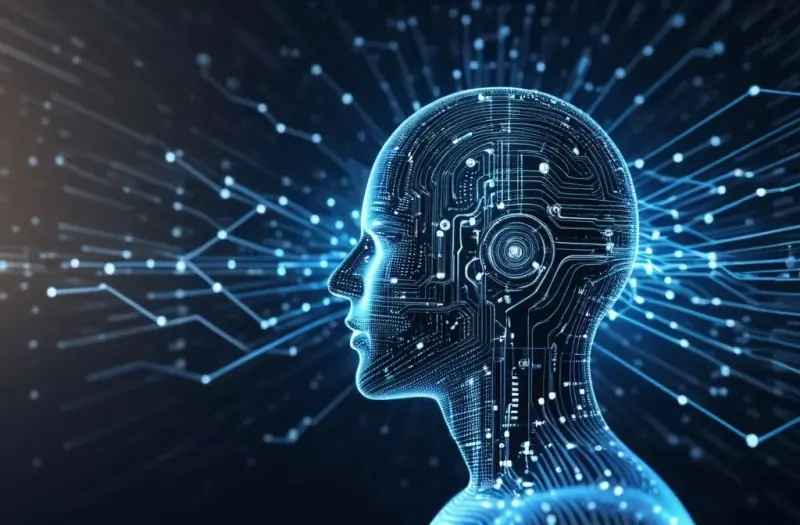
AI datasets, also known as training data for AI, are collections of data used to train machine learning models. These datasets consist of structured and unstructured data, including text, images, videos, and more, which serve as the foundation upon which AI models learn to recognize patterns, make decisions, and generate predictions. The importance of these datasets cannot be overstated; they are the lifeblood of any AI-driven project.
The quality and quantity of data in these AI data collections directly influence the performance of the models. High-quality, well-annotated datasets lead to more accurate models, while poor-quality data can result in biased or unreliable outputs. For example, a deep learning model trained on a large, diverse set of images can achieve remarkable accuracy in object recognition tasks, whereas a model trained on a small, biased dataset may struggle to generalize to new, unseen data.
In the world of AI, the adage “garbage in, garbage out” holds true. Ensuring that your AI data inputs are clean, relevant, and well-labeled is essential for building robust and reliable AI systems.
Types of AI Datasets: From Text to Images and Beyond
AI datasets come in various forms, each suited to different types of machine learning tasks. Here, we’ll discuss some of the most common types of datasets and their applications:
Text Datasets: Fueling Natural Language Processing
Text datasets are essential for natural language processing (NLP) tasks, such as sentiment analysis, language translation, and chatbot development. These datasets typically include vast amounts of text data, ranging from news articles and social media posts to customer reviews and technical documentation.
- Labeled datasets for AI in NLP often include annotations indicating the sentiment of a sentence, the named entities within a text, or the parts of speech for each word.
- AI data repositories like the Common Crawl, Wikipedia dumps, and open-access books provide vast amounts of text data for training NLP models.
- Training data for AI in NLP is particularly challenging due to the complexity and nuance of human language, requiring large and diverse datasets to capture the full range of linguistic expressions.
Image Datasets: Powering Computer Vision
Image datasets are crucial for computer vision tasks, enabling AI systems to interpret and understand visual information. These datasets contain labeled images, often annotated with bounding boxes, segmentation masks, or key points, depending on the task.
- Machine learning datasets for computer vision, such as ImageNet and COCO, have been instrumental in advancing the field by providing large, diverse collections of labeled images.
- Annotated data for AI in computer vision is essential for tasks like object detection, image classification, and facial recognition, where the accuracy of the model depends heavily on the quality of the annotations.
- AI data resources like open-source repositories and research institutions provide access to a wide range of image datasets, enabling researchers and developers to experiment with and improve their models.
Audio Datasets: Enhancing Speech Recognition and Sound Classification
Audio datasets are used in tasks like speech recognition, speaker identification, and sound classification. These datasets often include recordings of speech, environmental sounds, and music, along with transcriptions or labels indicating the content of the audio.
- AI training corpora for speech recognition, such as the LibriSpeech and TIMIT datasets, provide hours of transcribed speech data, enabling models to learn how to recognize and transcribe spoken language.
- AI data pools for sound classification include datasets like ESC-50, which contains labeled environmental sounds, and the GTZAN music dataset, which is used for genre classification tasks.
- Data repositories for AI in the audio domain offer a wide range of datasets, allowing researchers to tackle diverse challenges, from automatic speech recognition (ASR) to sound event detection.
Video Datasets: Driving Action Recognition and Video Analysis
Video datasets are essential for tasks that involve analyzing and understanding dynamic visual content, such as action recognition, video segmentation, and video summarization. These datasets contain sequences of images (frames) along with annotations or labels describing the actions or events occurring in the video.
- Deep learning datasets for video analysis, like UCF101 and Kinetics, provide large collections of labeled video clips, enabling models to learn how to recognize complex actions and interactions.
- Structured data for AI in video analysis often includes frame-level annotations, temporal boundaries for actions, and multi-label classifications, making it possible to develop models that can understand both spatial and temporal aspects of videos.
- AI-driven datasets in the video domain are increasingly important as applications like autonomous driving, video surveillance, and sports analytics rely on accurate and efficient video analysis.
The Role of Data Repositories in AI Development

Data repositories play a critical role in the development and deployment of AI models. These repositories serve as centralized locations where datasets are stored, organized, and made accessible to researchers, developers, and organizations. The availability of high-quality datasets through these repositories has democratized AI development, enabling more individuals and institutions to participate in advancing the field.
Open Data Repositories: Fostering Collaboration and Innovation
Open data repositories, such as Kaggle, UCI Machine Learning Repository, and OpenML, have become invaluable resources for the AI community. These platforms provide access to a wide range of datasets, covering various domains and tasks, from healthcare and finance to image recognition and natural language processing.
- AI data frameworks provided by these repositories often include tools for dataset exploration, visualization, and preprocessing, making it easier for users to work with the data.
- AI data sources from open repositories are often curated by the community, ensuring that the datasets are well-maintained, up-to-date, and relevant to current research and development efforts.
- Data feeds for AI from these platforms can be used to augment existing datasets, enabling users to create more comprehensive training sets and improve model performance.
Proprietary Data Repositories: Leveraging Exclusive Datasets for Competitive Advantage
While open data repositories are crucial for fostering collaboration, proprietary data repositories also play a significant role in AI development. Companies and organizations often maintain exclusive datasets that are not publicly available, using them to train and refine AI models that provide a competitive edge.
- AI model datasets from proprietary sources can include customer data, transaction records, or specialized data collected through proprietary sensors or devices.
- AI data streams from these repositories are often used to develop models that are finely tuned to specific business needs, such as personalized recommendations, fraud detection, or predictive maintenance.
- AI data resources in proprietary repositories are typically well-guarded, with strict access controls and security measures in place to protect sensitive information.
Challenges in Building and Using AI Datasets
Despite the critical importance of AI datasets, building and using them is not without challenges. From data quality and bias to privacy concerns and ethical considerations, several factors must be carefully managed to ensure the successful deployment of AI models.
Data Quality: The Foundation of Reliable AI Models
Data quality is perhaps the most significant challenge in AI development. Poor-quality data can lead to inaccurate models, biased predictions, and unreliable results.
- AI data collections must be carefully curated, cleaned, and annotated to ensure that the data is representative of the problem being solved.
- Labeled datasets for AI should be reviewed and validated by experts to minimize errors and inconsistencies in the annotations.
- Big data for AI presents unique challenges, as large volumes of data can be difficult to manage, process, and analyze effectively.
Data Bias: Mitigating Unintended Consequences
Data bias is another critical issue that can impact the fairness and accuracy of AI models. Bias can arise from various sources, including unrepresentative training data, biased annotations, and historical inequalities reflected in the data.
- Machine learning datasets should be carefully analyzed to identify and mitigate potential biases, ensuring that the models are fair and unbiased.
- AI data frameworks can include techniques like data augmentation, re-sampling, and adversarial training to reduce bias and improve model generalization.
- AI-driven datasets must be regularly updated and expanded to include diverse and representative data, minimizing the risk of biased predictions.
Privacy and Ethics: Navigating the Complexities of AI Data Use
The use of AI datasets also raises significant privacy and ethical concerns. The collection and use of personal data, in particular, must be carefully managed to protect individuals’ privacy and comply with data protection regulations.
- AI data sources that include personal information must be anonymized or de-identified to ensure that individuals cannot be identified from the data.
- AI data pools should be managed with strict access controls and security measures to protect sensitive information from unauthorized access or breaches.
- AI data streams used for decision-making must be transparent and explainable, ensuring that individuals understand how their data is being used and can challenge any decisions that affect them.
The Future of AI Datasets: Trends and Innovations
As AI continues to evolve, so too will the datasets that power it. Several trends and innovations are shaping the future of AI datasets, driving the development of more advanced and capable AI systems.
Synthetic Data: Generating Data for AI Training
One of the most exciting developments in the field of AI datasets is the use of synthetic data. Synthetic data is artificially generated data that mimics real-world data, providing a valuable resource for training AI models.
- Machine learning data samples

AI Ethics: Principles, Challenges, and Solutions
Introduction
As artificial intelligence (AI) continues to evolve and integrate into nearly every facet of modern life, the ethical considerations surrounding its development and deployment have become increasingly critical. We find ourselves at the crossroads of innovation and morality, where the decisions we make today about AI ethics will shape the future for generations to come. This conversation is not just for technologists and policymakers; it is a dialogue that includes all of us because the impact of AI ethics touches every aspect of society.
In this article, we will explore the key concepts and challenges of AI ethics. We aim to shed light on the moral implications of AI, examine the principles that should guide responsible AI development, and address the ethical dilemmas that arise from the rapid advancement of this powerful technology.
What Is AI Ethics?
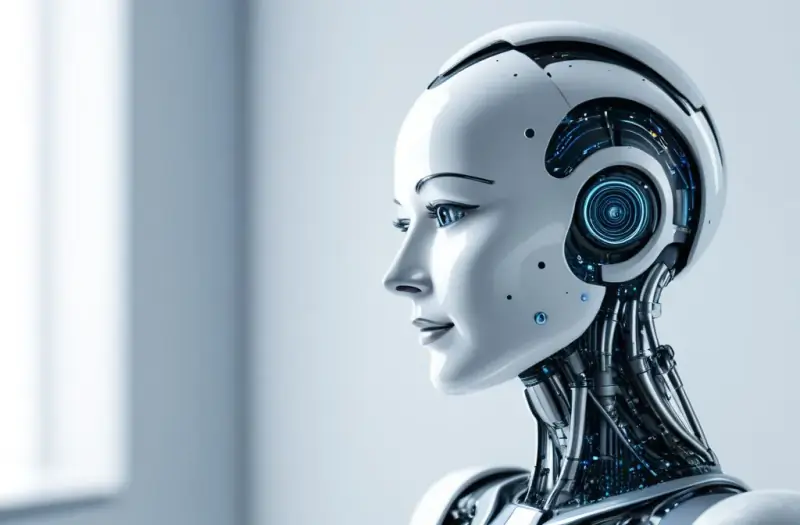
Understanding the Basics
At its core, AI ethics refers to the system of moral principles that govern the development and use of artificial intelligence. Just as human ethics guide our actions and decisions, AI ethics aim to ensure that AI systems behave in ways that are fair, transparent, and accountable. The field of AI ethics is broad, covering issues from AI fairness to AI accountability, and it requires the input of various disciplines, including philosophy, computer science, and law.
The Importance of Ethical AI
Why is ethical AI so important? The answer lies in the potential consequences of AI gone wrong. AI systems can have a profound impact on society, from influencing decisions in criminal justice to determining access to healthcare. If not designed with ethical considerations in mind, these systems could perpetuate biases, violate privacy, or even cause harm. Ethical AI is about ensuring that these technologies are developed in a way that respects human rights and promotes social good.
The Challenges of AI Morality
Navigating AI morality is no simple task. AI systems are often designed to optimize specific outcomes, but what happens when those outcomes conflict with ethical considerations? For example, an AI designed to maximize profits might do so at the expense of fair labor practices. The challenge is to create AI systems that can balance competing values and make decisions that align with ethical principles.
The Ethical Implications of AI in Decision-Making
AI Bias and Fairness
One of the most pressing concerns in AI ethics is the issue of AI bias. AI systems learn from data, and if that data contains biases, the AI is likely to replicate and even amplify those biases. This can lead to unfair outcomes, particularly in areas like hiring, lending, and law enforcement. Ensuring AI fairness requires careful attention to the data used to train AI systems and the algorithms that process that data.
- AI fairness is not just a technical issue; it’s a moral imperative.
- Addressing AI bias involves both identifying biases in existing data and creating mechanisms to mitigate those biases.
- Transparency and accountability in AI systems are key to fostering trust and ensuring that AI is used ethically.
AI Accountability and Transparency
AI accountability refers to the responsibility of developers, organizations, and governments to ensure that AI systems are used in ways that are ethical and just. This includes being transparent about how AI systems make decisions and providing mechanisms for redress when things go wrong.
- AI transparency is critical to building trust in AI systems.
- Accountability mechanisms should be in place to address errors and biases in AI decision-making.
- Clear guidelines and standards are necessary to govern the ethical use of AI across different sectors.
Responsible AI Governance
The governance of AI is another crucial aspect of AI ethics. As AI becomes more pervasive, there is a growing need for frameworks that ensure responsible AI development and use. This involves creating policies that promote ethical AI practices and prevent misuse.
- AI governance should involve a wide range of stakeholders, including governments, industry leaders, and civil society.
- Ethical principles should guide AI governance, with an emphasis on human rights, fairness, and accountability.
- Global cooperation is essential to address the cross-border nature of AI technologies.
AI in Healthcare: Ethical Considerations

Privacy and Data Security
In healthcare, AI has the potential to revolutionize patient care, but it also raises significant ethical concerns, particularly around privacy and data security. AI systems often require access to vast amounts of personal health data to function effectively. Protecting this data is crucial to maintaining patient trust and ensuring that AI is used responsibly.
- Data security measures must be robust to prevent unauthorized access to sensitive information.
- Informed consent is necessary when using AI to analyze patient data.
- Transparency about how AI systems use and protect data is essential to maintaining ethical standards in healthcare.
The Impact on Healthcare Equity
AI has the potential to improve healthcare outcomes, but it also risks exacerbating existing inequalities. For example, AI systems that are trained on data from predominantly white populations may not perform as well for people of color, leading to disparities in care. Ensuring that AI is used equitably in healthcare requires addressing these biases and ensuring that AI systems are designed to serve diverse populations.
- Equitable AI in healthcare is about providing fair and just care for all patients.
- Addressing biases in AI healthcare systems is crucial to promoting healthcare equity.
- Inclusive data and diverse perspectives are key to creating ethical AI in healthcare.
The Future of AI Ethics
Ethical AI Principles
As we look to the future, the development of ethical AI principles will be essential to guiding the responsible use of AI. These principles should be grounded in human rights, fairness, and accountability, and they should be flexible enough to adapt to new challenges as AI technology evolves.
- Human-centered design should be at the core of AI ethics.
- Collaboration between technologists, ethicists, and policymakers is essential to developing ethical AI principles.
- Ongoing dialogue is necessary to address the evolving ethical challenges posed by AI.
The Role of International Cooperation
Given the global nature of AI technology, international cooperation will be critical to ensuring that AI is developed and used ethically. This includes creating global standards for AI governance and promoting the sharing of best practices across borders.
- Global standards for AI ethics can help ensure consistent ethical practices.
- International collaboration can facilitate the sharing of knowledge and resources.
- Ethical AI requires a global effort to address the complex challenges it presents.
FAQs
What is AI ethics?
AI ethics refers to the system of moral principles that govern the development and use of artificial intelligence. It aims to ensure that AI systems are fair, transparent, and accountable.
Why is AI fairness important?
AI fairness is crucial because biased AI systems can lead to unfair outcomes, particularly in areas like hiring, lending, and law enforcement. Ensuring AI fairness is a moral imperative that requires attention to data and algorithmic transparency.
How can we ensure AI accountability?
AI accountability can be ensured by establishing clear guidelines and standards, promoting transparency in AI decision-making, and creating mechanisms for redress when errors occur.
What are the ethical implications of AI in healthcare?
The ethical implications of AI in healthcare include concerns around privacy and data security, as well as the potential for AI to exacerbate existing healthcare inequalities. Addressing these issues is essential to promoting ethical AI in healthcare.
What role does international cooperation play in AI ethics?
International cooperation is crucial to developing global standards for AI governance and ensuring that AI is used ethically across borders. This collaboration can help address the complex challenges posed by AI technology.
Conclusion
In conclusion, navigating the moral implications of artificial intelligence is a complex and ongoing challenge. AI ethics is not just about preventing harm; it’s about ensuring that AI is used to promote social good and respect human rights. As we continue to develop and deploy AI systems, we must remain vigilant in our commitment to ethical principles, accountability, and transparency. The future of AI holds immense potential, but it is up to all of us to ensure that this potential is realized in ways that are just and fair.
Key Takeaways
- AI ethics is essential to ensuring that AI systems are fair, transparent, and accountable.
- AI bias and fairness are critical issues that require careful attention to data and algorithms.
- Accountability and transparency are key to building trust in AI systems.
- Responsible AI governance involves creating policies that promote ethical AI practices and prevent misuse.
- Ethical AI principles should guide the development and use of AI, with a focus on human rights, fairness, and accountability.
- International cooperation is necessary to address the global nature of AI and promote ethical practices across borders.
By keeping these key takeaways in mind, we can work together to build a future where artificial intelligence is a force for good, promoting fairness, justice, and respect for all.

AI Events & Conferences: Webinars & Online Events
As the world of artificial intelligence (AI) continues to expand, it’s becoming more important than ever to stay connected with the latest innovations, trends, and breakthroughs. Whether you’re a developer, researcher, or business professional, attending AI conferences, webinars, and online gatherings is an essential way to stay ahead of the curve. In this article, we will explore some of the top virtual AI events, providing an overview of their offerings and explaining why these online gatherings are vital for professionals in the AI industry.
Why Attend AI Events & Conferences?

In today’s fast-paced tech landscape, it’s crucial to stay informed about the latest advancements in artificial intelligence. AI events provide a unique platform to network with industry leaders, discover cutting-edge research, and participate in hands-on workshops. Attending these gatherings helps professionals and enthusiasts alike to keep their skills sharp and gain valuable insights into the future of AI.
One of the greatest advantages of virtual AI events is accessibility. You can attend from anywhere in the world, making it easier to participate in world-class events without the need for travel. Whether you’re interested in machine learning, robotics, or AI ethics, there’s likely a virtual event tailored to your needs.
For many, AI webinars and online seminars provide an opportunity to learn at your own pace. The flexibility of virtual sessions allows attendees to watch presentations live or later, accommodating busy schedules.
Top AI Webinars and Online Gatherings in 2024
AI Summit London: Leading the Way in AI Innovation
The AI Summit London is one of the most prestigious artificial intelligence events in the UK. This annual gathering brings together some of the brightest minds in AI, including industry leaders, researchers, and policymakers. Over the years, it has grown into a must-attend event for those looking to explore the latest innovations in AI technology.
During this summit, participants can expect keynote speeches from top AI experts, hands-on workshops, and panel discussions on AI ethics, policy, and the future of work. Whether you’re a seasoned AI professional or just starting out, this event offers valuable insights and practical knowledge.
- Virtual AI panels discussing key developments in machine learning.
- Hands-on AI workshops led by industry leaders.
- Networking opportunities with AI professionals from across the globe.
Machine Learning Week Europe: Dive Into the World of Machine Learning
If you are passionate about machine learning conferences, then Machine Learning Week Europe is the event to mark on your calendar. Hosted annually, this event focuses on practical applications of machine learning in industries ranging from healthcare to finance.
Machine Learning Week Europe features a wide variety of webinars, online seminars, and expert-led discussions on topics such as data science, neural networks, and AI-driven decision-making. One of the standout features of this event is the in-depth technical sessions that allow attendees to develop real-world skills they can immediately apply to their work.
- AI research symposiums on neural network advancements.
- Online AI seminars focused on practical use cases in different industries.
- Expert-led discussions on AI-driven decision-making processes.
AI Tech Meetups: Building a Global Community
AI Tech Meetups have become an essential part of the AI networking events ecosystem. These smaller, more intimate gatherings allow attendees to connect with like-minded AI professionals and discuss cutting-edge developments in the field. Though often regionally focused, many AI Tech Meetups have adopted a virtual format, making them accessible to participants around the globe.
These meetups often feature presentations from AI experts, followed by informal networking sessions where attendees can share ideas, collaborate on projects, and explore the latest AI tools and technologies. The collaborative nature of AI Tech Meetups fosters a sense of community among attendees and encourages the exchange of innovative ideas.
- AI workshops designed to encourage hands-on collaboration.
- Networking opportunities with local and global AI professionals.
- Informal discussions on the latest AI research and technologies.
Virtual AI Innovation Forums: Shaping the Future of AI
AI innovation forums are an excellent way to get a sneak peek into the future of artificial intelligence. These online events are typically centered around AI research, development, and commercialization, bringing together experts from academia, industry, and government. By attending these forums, you’ll have the opportunity to see firsthand how AI is shaping industries and transforming society.
Participants in AI innovation forums can expect keynote presentations from leading AI researchers, panel discussions on the commercialization of AI technologies, and workshops on AI ethics and policy. These forums are also a great place to explore AI development workshops and connect with professionals looking to push the boundaries of what AI can achieve.
- Thought leadership events featuring AI pioneers.
- Workshops on the ethical implications of AI technologies.
- Virtual panels exploring AI’s role in various industries, from healthcare to finance.
AI Workshops and Development Sessions: Enhancing Your Skills
For those looking to hone their AI skills, AI workshops and development sessions are a valuable resource. These events typically focus on specific AI technologies or tools and provide a hands-on learning experience for participants. From programming machine learning algorithms to understanding AI’s role in natural language processing (NLP), these workshops are designed to deepen your understanding of AI.
Many of these workshops are offered in a virtual format, allowing participants to learn from experts regardless of their location. Whether you’re an AI beginner or an experienced professional, there’s a development session that can help you expand your knowledge and stay ahead in the field.
- AI development workshops covering advanced machine learning techniques.
- Virtual sessions focused on natural language processing and AI ethics.
- Expert-led training on the latest AI tools and platforms.
FAQs

What are AI conferences, and why should I attend them?
AI conferences bring together industry experts, researchers, and professionals to discuss the latest trends and innovations in AI. Attending these events allows you to network with peers, learn from experts, and stay up to date on AI advancements.
Can I attend AI webinars from anywhere?
Yes, most AI webinars and virtual events can be attended from anywhere in the world, making them accessible to a global audience.
Are AI workshops worth attending?
Absolutely! AI workshops offer hands-on learning experiences that allow you to develop practical skills and apply them in your work.
How do virtual AI events differ from in-person events?
While virtual AI events lack the face-to-face interaction of in-person events, they offer greater accessibility and flexibility, allowing you to attend from anywhere without the need for travel.
What types of topics are covered in AI webinars?
AI webinars cover a broad range of topics, including machine learning, natural language processing, AI ethics, robotics, and more. Each event may focus on a specific area depending on its audience and goals.
Conclusion
Attending AI events and conferences is an invaluable way to stay current with the latest developments in the AI industry. From AI summits to hands-on workshops and online AI seminars, these virtual gatherings offer something for everyone, regardless of your level of experience. By participating in these events, you’ll have the opportunity to network with peers, learn from experts, and sharpen your skills in this ever-evolving field.
Key Takeaways
- AI events and conferences provide access to the latest industry knowledge and trends.
- Virtual AI events are accessible globally, offering flexibility and convenience.
- Attendees can benefit from networking opportunities and hands-on learning experiences.
- AI webinars cover a wide range of topics, from machine learning to AI ethics.
- Participating in AI innovation forums and workshops can enhance both practical and theoretical AI knowledge.
Make sure to explore the upcoming AI webinars and online conferences to ensure you’re staying at the forefront of artificial intelligence developments in 2024!

AI for Marketing: The Future of Digital Strategy
Artificial intelligence (AI) is transforming the landscape of marketing, offering unprecedented opportunities for brands to enhance their strategies and engage with their audiences more effectively. In today’s rapidly evolving digital environment, leveraging AI for marketing has become a crucial component for achieving success. This article explores various AI-driven marketing strategies and provides insights into how businesses can harness the power of artificial intelligence to stay ahead of the competition.
Understanding AI in Marketing
Artificial intelligence for marketing encompasses a range of technologies and techniques designed to optimize marketing efforts. AI-driven marketing utilizes machine learning, natural language processing, and other advanced technologies to analyze data, automate tasks, and improve decision-making processes.
Machine learning marketing strategies play a pivotal role in this realm by enabling marketers to predict customer behavior, personalize content, and optimize campaigns in real-time. For instance, predictive marketing AI can analyze historical data to forecast future trends and customer preferences, allowing businesses to tailor their strategies accordingly.
Moreover, intelligent marketing automation systems leverage AI to streamline repetitive tasks, such as email marketing and social media management. This not only saves time but also ensures that marketing campaigns are executed with precision and consistency.
Key AI Technologies Revolutionizing Marketing
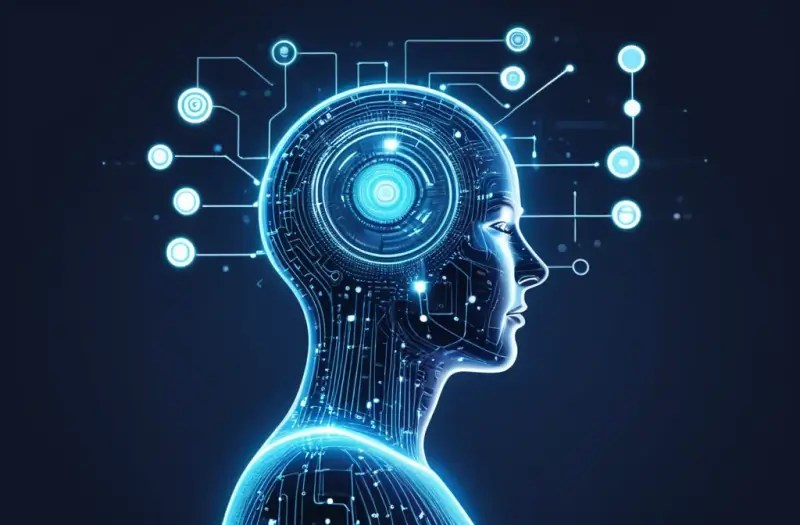
Advanced Marketing AI Tools
Advanced marketing AI tools are revolutionizing how businesses approach their marketing efforts. These tools include:
- AI-based marketing solutions that offer insights into customer behavior and preferences.
- Smart marketing analytics platforms that analyze vast amounts of data to identify trends and opportunities.
- AI-powered marketing campaigns that automate content creation and distribution.
By integrating these tools into their marketing strategies, businesses can achieve more accurate targeting, improved engagement, and higher conversion rates.
Benefits of AI in Marketing
The benefits of incorporating AI into marketing strategies are numerous:
- Enhanced personalization: AI enables brands to deliver highly personalized content and recommendations, improving customer experience and loyalty.
- Increased efficiency: Automated marketing intelligence reduces the time and effort required for campaign management, allowing marketers to focus on strategic planning.
- Data-driven insights: AI provides valuable insights through data analysis, helping businesses make informed decisions and optimize their strategies.
Implementing AI-Driven Marketing Strategies
Building an AI-Powered Marketing Strategy
To leverage AI effectively, businesses need to develop a comprehensive AI-powered marketing strategy. This involves:
- Identifying goals: Clearly define what you aim to achieve with AI in your marketing efforts, such as increased engagement or higher sales.
- Choosing the right tools: Select AI tools that align with your objectives and integrate seamlessly with your existing systems.
- Training your team: Ensure that your marketing team is equipped with the knowledge and skills to use AI tools effectively.
Case Studies and Examples
Several companies have successfully implemented AI-driven marketing strategies, resulting in significant improvements in their marketing outcomes. For example:
- Retail brands using AI for personalized product recommendations have seen increased sales and customer satisfaction.
- Financial institutions leveraging predictive marketing AI have improved their lead generation and customer acquisition processes.
Common Challenges and How to Overcome Them

Addressing Data Privacy Concerns
One of the main challenges with AI in marketing is managing data privacy. Businesses must ensure that they comply with relevant regulations and obtain proper consent from customers before using their data. Implementing robust data security measures and being transparent about data usage can help mitigate these concerns.
Integrating AI with Existing Systems
Integrating AI with existing marketing systems can be complex. To address this challenge, businesses should:
- Assess compatibility: Ensure that AI tools are compatible with your current systems.
- Plan for integration: Develop a detailed plan for integrating AI tools, including timelines and resource allocation.
- Monitor and adjust: Continuously monitor the performance of AI tools and make adjustments as needed to optimize their effectiveness.
FAQs
What is AI for marketing?
AI for marketing refers to the use of artificial intelligence technologies to enhance marketing strategies, automate tasks, and analyze data for better decision-making.
How can AI improve marketing strategies?
AI improves marketing strategies by enabling personalized content, automating repetitive tasks, and providing data-driven insights for more effective decision-making.
What are some examples of AI-powered marketing tools?
Examples include AI-based marketing solutions for customer insights, smart marketing analytics platforms, and AI-powered content creation tools.
Is AI expensive to implement in marketing?
The cost of implementing AI in marketing varies depending on the tools and technologies used. However, many businesses find that the long-term benefits outweigh the initial investment.
How can businesses ensure data privacy when using AI?
Businesses can ensure data privacy by complying with regulations, obtaining proper consent, and implementing robust data security measures.
Conclusion
Leveraging AI for marketing offers numerous advantages, from enhanced personalization to increased efficiency and data-driven insights. By understanding and implementing AI-driven marketing strategies, businesses can gain a competitive edge and achieve their marketing goals more effectively. As AI technology continues to evolve, staying informed about the latest advancements and best practices will be crucial for success.
Key Takeaways
- AI-driven marketing enhances personalization and efficiency.
- Advanced marketing AI tools provide valuable insights and automate tasks.
- Developing a comprehensive strategy and addressing challenges like data privacy are essential for successful AI implementation.
By integrating AI into their marketing strategies, businesses can unlock new opportunities and drive significant growth.
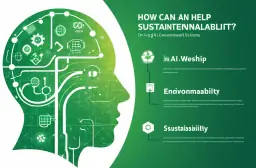
AI for Sustainability: How Can It Help?
Introduction
As the world faces unprecedented environmental challenges, the need for innovative solutions has never been more pressing. In recent years, artificial intelligence (AI) has emerged as a powerful tool to tackle sustainability issues, from reducing carbon emissions to improving ecosystem health. With advances in machine learning, AI-driven climate solutions have become increasingly accessible, empowering industries, governments, and individuals to make more environmentally conscious choices.
Our approach to AI for environmental sustainability emphasizes harnessing data to drive actionable change. As we dive into how AI can help sustainability, we’ll explore its role across multiple fields—from renewable energy optimization to waste reduction. By understanding the potential of AI, we can better appreciate its place in a sustainable future.
AI for Environmental Monitoring

One of the most impactful uses of AI in sustainability lies in environmental monitoring. Through advanced data analytics, machine learning algorithms can analyze vast amounts of information to detect patterns that indicate environmental risks or changes.
For instance, satellites equipped with AI-driven monitoring systems track changes in land, water, and vegetation over time, providing real-time data to address deforestation, wildfires, and urban expansion. With AI, authorities can respond faster to environmental threats, significantly improving their chances of controlling or preventing ecological damage.
AI is also instrumental in monitoring air and water quality. By utilizing predictive modeling, AI can identify pollution sources and forecast pollution trends, enabling proactive measures to safeguard public health and natural resources. Such eco-friendly AI applications highlight the importance of AI as a crucial component in maintaining ecosystem balance.
- Key benefits of AI-driven environmental monitoring:
- Real-time data on ecological changes
- Proactive pollution management
- Enhanced emergency response for natural disasters
Sustainable AI Practices in Resource Management
Another area where AI plays a pivotal role is in resource management. By optimizing the way we use energy, water, and raw materials, AI-powered sustainability efforts help reduce waste and support conservation goals. Through data-driven sustainability, AI analyzes consumption patterns, identifying areas for improvement in energy efficiency and resource utilization.
For example, intelligent resource conservation systems use AI algorithms to manage water distribution in drought-prone areas. By forecasting water demand and availability, these systems ensure minimal water wastage while meeting agricultural and industrial needs. Similarly, AI is used to optimize power grids, ensuring more efficient energy distribution that aligns with supply and demand.
Smart resource management also applies to the supply chain. By analyzing logistics and manufacturing processes, machine learning for resource management identifies inefficiencies, allowing companies to reduce their environmental footprint.
AI in Renewable Energy Optimization
The transition to renewable energy sources is vital to achieving sustainability, and artificial intelligence in green energy is driving this shift. With AI’s ability to analyze weather data and predict energy production, AI for renewable energy optimization maximizes the potential of resources like solar, wind, and hydro.
Solar and wind farms use AI-based environmental preservation tools to predict output based on weather conditions, ensuring a steady supply. This enables renewable energy companies to reduce reliance on nonrenewable sources and decrease greenhouse gas emissions. Additionally, AI algorithms are instrumental in managing energy storage, ensuring that surplus energy generated by renewables is stored efficiently and released during periods of high demand.
In smart grids, AI controls the balance between electricity supply and demand, effectively integrating renewable sources into the grid. Green technology with AI thus enables a more resilient energy infrastructure, fostering a sustainable future.
Benefits of AI in renewable energy optimization:
- Efficient energy generation from renewable sources
- Reduced dependence on fossil fuels
- Improved energy storage and distribution systems
Smart Agriculture AI for Sustainable Farming
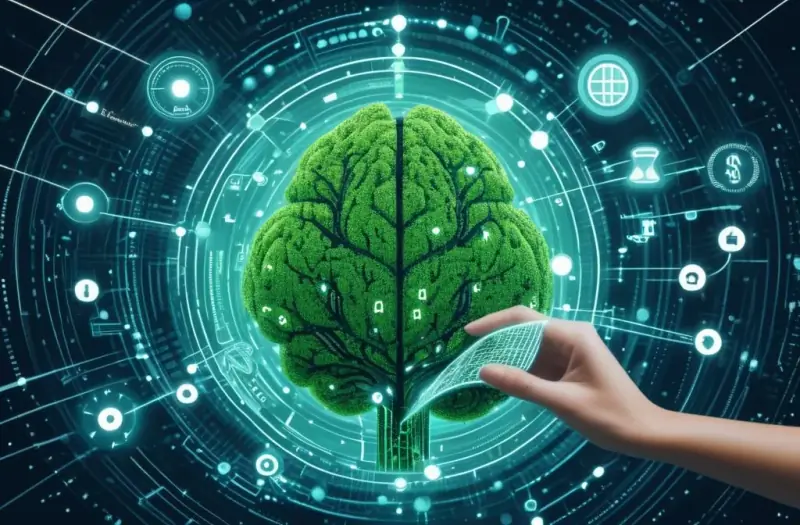
Agriculture plays a significant role in sustainability, and smart agriculture AI has opened up new possibilities for eco-friendly farming practices. By applying AI-powered sustainability efforts in agriculture, farmers can increase productivity while reducing environmental impacts.
Through machine learning and data analytics, AI helps farmers monitor crop health, optimize water usage, and manage fertilizers more efficiently. Precision agriculture, powered by AI in waste reduction, ensures that resources are allocated where they’re needed most, minimizing runoff and soil degradation.
Another example is the use of AI in predicting pest outbreaks. AI systems analyze climate and soil data to forecast conditions that may lead to pest infestations, allowing farmers to take preventive measures and reduce the need for chemical pesticides. These sustainable technology innovations improve crop yields and reduce the ecological footprint of farming.
- AI contributions to sustainable agriculture:
- Precision resource allocation
- Reduced pesticide and fertilizer use
- Improved crop health and yield
AI and Carbon Footprint Reduction
As organizations worldwide aim to reduce their carbon footprint, AI technologies are essential tools in achieving this goal. By using carbon footprint reduction AI, companies can monitor emissions and identify areas for improvement.
AI’s predictive capabilities allow companies to forecast emissions trends and evaluate the impact of operational changes on carbon output. By automating emission tracking, AI enables more accurate carbon reporting, ensuring compliance with environmental regulations. In addition, sustainable AI practices in industries such as manufacturing and logistics optimize operations to reduce energy consumption and waste.
AI can also promote greener transportation by optimizing routes for freight and passenger travel. Through data analysis, AI recommends efficient routes, reducing fuel consumption and emissions in the process. This AI in climate resilience makes a meaningful contribution to global sustainability efforts.
Intelligent Waste Management with AI
Waste management is a critical component of sustainability, and AI’s role in intelligent waste management is transformative. From recycling to waste reduction, AI for environmental sustainability provides insights to improve waste handling practices and foster a circular economy.
AI-driven systems can sort recyclable materials with high accuracy, reducing contamination in recycling streams and increasing the overall recycling rate. Additionally, AI in waste reduction helps companies analyze production waste, enabling them to adjust manufacturing processes to minimize waste generation. With AI, we can better track waste and ensure that it is disposed of responsibly, significantly impacting environmental health.
Ways AI enhances waste management:
- Automated sorting of recyclable materials
- Optimization of waste disposal routes
- Reduction of production waste in manufacturing
FAQs
How does AI contribute to environmental sustainability?
AI contributes by optimizing resource usage, predicting environmental threats, and enabling smarter waste management practices.
Can AI reduce carbon emissions?
Yes, AI helps organizations track and reduce emissions by optimizing energy use, logistics, and resource management.
How does AI support renewable energy?
AI analyzes weather data to forecast renewable energy generation and manage energy storage, helping to integrate renewables into the power grid effectively.
Is AI being used in agriculture for sustainability?
Absolutely, AI supports precision agriculture by optimizing water and fertilizer usage, monitoring crop health, and predicting pest outbreaks.
What are AI-driven climate solutions?
AI-driven climate solutions involve using AI technologies to tackle climate-related issues such as emissions reduction, renewable energy optimization, and environmental monitoring.
Conclusion
AI offers powerful tools to drive sustainability and address pressing environmental challenges. From eco-friendly AI applications to AI-powered sustainability efforts, AI provides valuable insights and innovations for a greener future. By leveraging sustainable technology innovations, we can make informed choices that benefit our planet while enhancing productivity across sectors like energy, agriculture, and waste management. Through AI in waste reduction, AI for renewable energy optimization, and AI-based environmental preservation, we’re taking significant strides toward achieving a sustainable future.
Key Takeaways
- AI enables real-time environmental monitoring, providing data crucial for proactive measures.
- AI in resource management helps optimize energy, water, and material use, reducing waste.
- Renewable energy optimization through AI maximizes resource efficiency and energy storage.
- Smart agriculture AI supports eco-friendly farming, improving crop yields with minimal environmental impact.
- Carbon footprint reduction AI allows organizations to track and lower their emissions effectively.
- AI in waste management promotes responsible disposal and recycling practices, contributing to a circular economy.
Artificial intelligence is not only reshaping technology but also driving meaningful change for a more sustainable world. Together, we can harness the power of AI to create a healthier, more resilient planet.

AI for Website Project Management: A Step-by-Step Guide
In today’s fast-paced digital landscape, managing a website project can be overwhelming. Deadlines, content updates, design revisions, and technical challenges are just a few of the many tasks that demand attention. Fortunately, Artificial Intelligence (AI) offers tools and techniques that can streamline these processes, making project management more efficient and effective. In this guide, we will explore how to use AI when project managing a website, ensuring your project stays on track and delivers exceptional results.
Introduction to AI in Website Project Management
When we think about AI, we often imagine futuristic robots or complex algorithms. However, AI’s real-world applications are far more practical, especially in the realm of website project management. By leveraging AI tools, we can automate mundane tasks, optimize workflows, and even predict potential challenges before they arise.
AI is not just a buzzword—it’s a powerful resource that can transform the way we manage website projects. Whether it’s automating content updates, enhancing team collaboration, or optimizing website performance, AI offers solutions that can significantly reduce the workload and improve project outcomes.
Understanding the Role of AI in Project Planning

Automating Task Assignments
One of the most time-consuming aspects of project management is assigning tasks to team members. With AI, this process becomes seamless. AI-powered tools can analyze the strengths and weaknesses of each team member, automatically assigning tasks to the most suitable person. This ensures that each task is handled by the right person, increasing efficiency and reducing the risk of errors.
Predictive Analysis for Better Planning
Planning is crucial for any project, but it often involves a lot of guesswork. AI can remove the uncertainty by offering predictive analysis. By analyzing past project data, AI can forecast potential bottlenecks, estimate task completion times, and even predict project outcomes. This enables us to make more informed decisions and plan more effectively.
Resource Optimization
AI can also help in optimizing resources. For example, if a particular tool or resource is underutilized, AI can flag it and suggest better ways to allocate it. This not only saves money but also ensures that all resources are being used to their full potential.
Enhancing Communication and Collaboration
AI-Powered Communication Tools
Effective communication is the backbone of any successful project. AI-driven communication tools, such as chatbots and virtual assistants, can handle routine queries, schedule meetings, and even send reminders to team members. This not only saves time but also ensures that important information is communicated promptly.
Collaborative AI Platforms
AI platforms like Trello, Asana, and Monday.com have integrated AI features that enhance team collaboration. These platforms can automatically update task statuses, notify team members of deadlines, and even suggest the next steps in a project. By using AI-driven collaboration tools, we can ensure that everyone stays on the same page, reducing the risk of miscommunication.
Real-Time Feedback
AI can also facilitate real-time feedback, allowing us to address issues as they arise. For example, AI can monitor the performance of team members and provide instant feedback, helping them to improve and stay on track. This continuous loop of feedback ensures that the project is always moving forward.
Streamlining Content Management
Automated Content Updates
Managing content is a critical aspect of website projects, and it can be a daunting task, especially for large websites. AI can automate content updates, ensuring that the website always reflects the most current information. For example, AI can automatically update blog posts, product descriptions, or even entire web pages based on predefined criteria.
Content Optimization
In addition to updating content, AI can optimize it for SEO. AI tools can analyze keywords, readability, and overall content structure, making suggestions to improve the content’s performance. This ensures that your website content is always optimized for search engines, driving more traffic and improving user engagement.
Personalized Content Delivery
AI can also enhance the user experience by delivering personalized content. By analyzing user behavior and preferences, AI can tailor the content that each visitor sees, making the website more engaging and relevant. This not only improves the user experience but also increases conversion rates.
Monitoring and Analyzing Website Performance
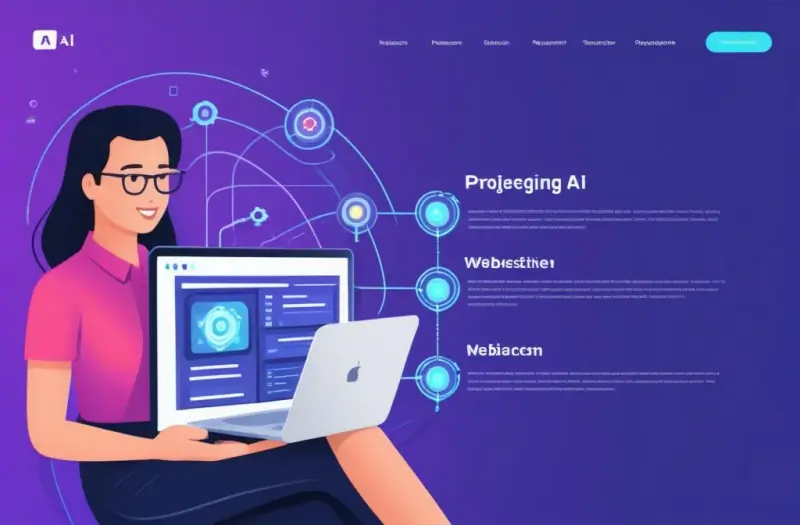
AI-Driven Analytics
Understanding how your website is performing is crucial for the success of any project. AI-driven analytics tools can provide real-time data on various metrics, such as traffic, bounce rates, and conversion rates. These insights allow us to make data-driven decisions and adjust our strategies to improve performance.
Automated Testing and Debugging
Testing and debugging are essential but time-consuming tasks in website project management. AI can automate these processes, identifying bugs and performance issues before they impact the user experience. By automating testing, we can ensure that the website is always functioning optimally without the need for constant manual intervention.
Performance Prediction
AI can also predict website performance based on historical data. For example, it can forecast traffic spikes and suggest ways to optimize the website to handle increased traffic. This proactive approach ensures that the website remains stable and performs well under varying conditions.
Managing Design and UX with AI
AI-Generated Design Suggestions
Design is a critical component of any website project, and AI can play a significant role in enhancing it. AI tools like Adobe Sensei can analyze user behavior and suggest design changes that improve user experience. These suggestions can range from layout adjustments to color scheme changes, all aimed at creating a more engaging website.
User Experience Optimization
AI can also optimize user experience by analyzing user interactions with the website. For example, AI can identify areas where users are dropping off and suggest changes to improve retention. This ensures that the website not only looks good but also provides a seamless and enjoyable user experience.
Personalizing the User Interface
Personalization is key to a successful user experience. AI can analyze user preferences and customize the user interface accordingly. This could involve changing the layout, adjusting the content, or even altering the color scheme based on the user’s preferences. By offering a personalized experience, we can increase user satisfaction and encourage repeat visits.
Incorporating AI in Project Reporting
Automated Reporting Tools
Reporting is a crucial part of project management, but it can be time-consuming. AI can automate this process by generating reports based on real-time data. These reports can include key metrics, performance indicators, and even predictive insights, making it easier to track project progress and make informed decisions.
Customizable Dashboards
AI can also create customizable dashboards that provide a real-time overview of the project. These dashboards can be tailored to show the most relevant data, making it easier for project managers to monitor progress and identify any potential issues. This real-time visibility ensures that we can stay on top of the project at all times.
Data Visualization
Data visualization is another area where AI excels. By using AI-powered tools, we can create visually appealing charts, graphs, and tables that make complex data easier to understand. These visualizations can be included in reports or shared with stakeholders to provide a clear picture of the project’s progress.
Stage
Traditional Method
AI-Enhanced Method
Task Assignment
Manual allocation
Automated assignment via AI
Communication
Email and meetings
AI-powered chatbots and tools
Content Management
Manual updates and SEO
Automated updates and optimization
Performance Monitoring
Manual data collection
Real-time AI-driven analytics
Design and UX
Manual design changes
AI-generated suggestions
Reporting
Manual report creation
Automated reports and dashboards
FAQs
How can AI help in managing website projects effectively?
AI can automate repetitive tasks, provide predictive insights, and optimize various aspects of project management, making the process more efficient and reducing the likelihood of errors.
What are some AI tools for website project management?
Tools like Asana, Trello, and Monday.com integrate AI features that enhance task management, collaboration, and reporting. Additionally, AI-driven content optimization tools like Grammarly and SEMrush can improve content quality.
Is AI necessary for managing small website projects?
While AI is particularly beneficial for large projects, it can also be useful for smaller projects by automating routine tasks and providing insights that improve efficiency and outcomes.
Can AI replace human project managers?
No, AI cannot replace human project managers but can serve as a powerful assistant, handling repetitive tasks and providing data-driven insights that help managers make more informed decisions.
How can AI improve website user experience (UX)?
AI can analyze user behavior to offer personalized content, suggest design improvements, and optimize the user interface, leading to a more engaging and user-friendly website.
Conclusion
AI is revolutionizing the way we manage website projects. From automating tasks to providing predictive insights, AI tools can significantly enhance efficiency, improve communication, and optimize performance. By incorporating AI into our project management processes, we can not only meet our project goals but exceed them, delivering exceptional results every time.
Key Takeaways
- AI offers powerful tools for automating and optimizing various aspects of website project management.
- From task assignment to performance monitoring, AI can streamline processes and improve efficiency.
- AI-driven communication tools enhance collaboration, ensuring that everyone stays on the same page.
- Incorporating AI in content management, design, and UX can lead to a more engaging and user-friendly website.
- AI-powered reporting tools provide real-time insights, making it easier to track progress and make informed decisions.
By embracing AI in our website project management processes, we are not only keeping up with the times but also setting ourselves up for success in the digital age.

AI Frameworks & Libraries: Top Tools for Developers
The rapid evolution of artificial intelligence (AI) has reshaped numerous industries, from healthcare to finance, and continues to push the boundaries of what machines can achieve. At the core of this transformation are AI frameworks and libraries—the essential tools that power machine learning development. These frameworks not only streamline the development process but also enable us to build, train, and deploy sophisticated AI models with unprecedented ease and efficiency. In this article, we’ll explore the significance of AI frameworks and libraries, delving into their role in the future of machine learning development.
What Are AI Frameworks and Libraries?
Understanding AI Frameworks
AI frameworks are comprehensive platforms or environments designed to simplify the process of creating AI applications. They provide developers with a structured, reusable codebase that can be adapted for a wide range of AI tasks, such as image recognition, natural language processing, and predictive analytics. By leveraging these frameworks, we can avoid the complexities of building AI models from scratch, thereby accelerating development and reducing the likelihood of errors.
The Role of Machine Learning Libraries
On the other hand, machine learning libraries are collections of pre-written functions and algorithms that make it easier to implement specific tasks in AI development. These libraries offer a variety of tools, ranging from basic statistical functions to complex neural network architectures, that help us develop and optimize machine learning models. Whether we’re working with deep learning frameworks or simpler machine learning tasks, libraries play a crucial role in ensuring that our models are both efficient and effective.
The Intersection of AI Frameworks and Libraries
The synergy between AI frameworks and libraries is what truly drives innovation in machine learning. While frameworks provide the overarching structure, libraries offer the specific tools needed to tackle unique challenges within that structure. This combination allows us to build highly customized AI solutions that meet the specific needs of various industries.
Popular AI Frameworks Driving Machine Learning Development
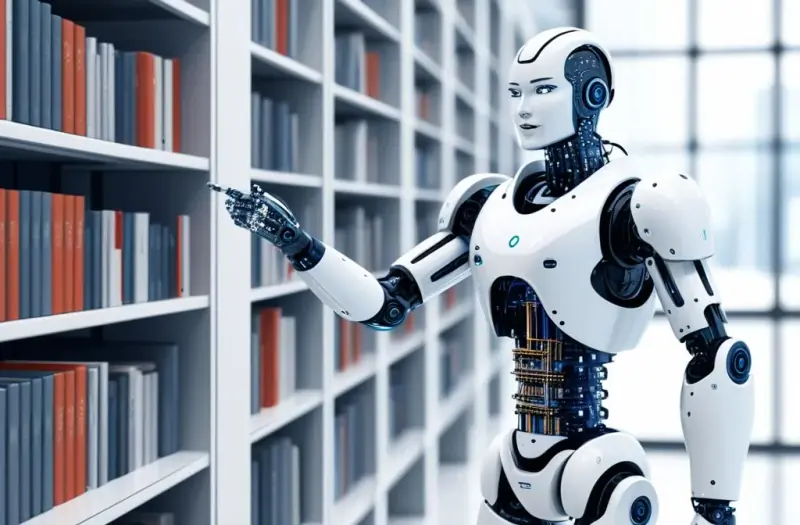
TensorFlow: The Versatile AI Framework
TensorFlow is one of the most popular AI frameworks, developed by Google Brain. It’s known for its versatility, supporting everything from simple neural networks to complex deep learning models. TensorFlow’s vast ecosystem includes machine learning libraries like TensorFlow Lite for mobile devices and TensorFlow Extended (TFX) for production-scale machine learning. The framework’s flexibility makes it a go-to choice for both beginners and experienced developers.
PyTorch: The Preferred Framework for Research
PyTorch, developed by Facebook’s AI Research lab, has gained widespread popularity in the research community due to its dynamic computation graph and user-friendly interface. PyTorch’s seamless integration with Python and its extensive library support have made it a preferred choice for developing and testing new AI models. Its ability to perform real-time computations on a per-operation basis offers significant advantages when experimenting with novel architectures.
Keras: The High-Level Deep Learning Framework
Keras is a high-level deep learning framework that runs on top of other frameworks like TensorFlow and Theano. It’s designed to enable quick prototyping, which is ideal for research and experimentation. Keras abstracts much of the complexity of AI development, allowing us to focus on the design and tuning of neural networks rather than the underlying code. Its modular design and ease of use have made it a popular choice for beginners and experts alike.
Specialized AI Libraries Enhancing Development
Scikit-Learn: Simplifying Machine Learning
Scikit-Learn is a powerful machine learning library that provides simple and efficient tools for data mining and data analysis. It’s built on top of Python libraries like NumPy, SciPy, and matplotlib, making it a vital component of the AI development platforms we use today. Scikit-Learn is particularly valuable for tasks such as classification, regression, clustering, and dimensionality reduction, offering a wide range of algorithms out of the box.
OpenCV: Computer Vision Made Accessible
When it comes to computer vision tasks, OpenCV (Open Source Computer Vision Library) is the go-to library. It includes a vast collection of algorithms for image and video processing, enabling us to develop applications ranging from object detection to facial recognition. OpenCV’s real-time capabilities and support for multiple programming languages make it an essential tool in the arsenal of any AI developer focused on visual data.
NLTK: The Natural Language Toolkit
For those of us working on natural language processing (NLP) tasks, the Natural Language Toolkit (NLTK) is an invaluable resource. This library provides tools for tasks such as tokenization, parsing, stemming, tagging, and more. NLTK simplifies the process of working with textual data, allowing us to build sophisticated NLP models that can understand and generate human language.
The Impact of AI Frameworks and Libraries on Industry
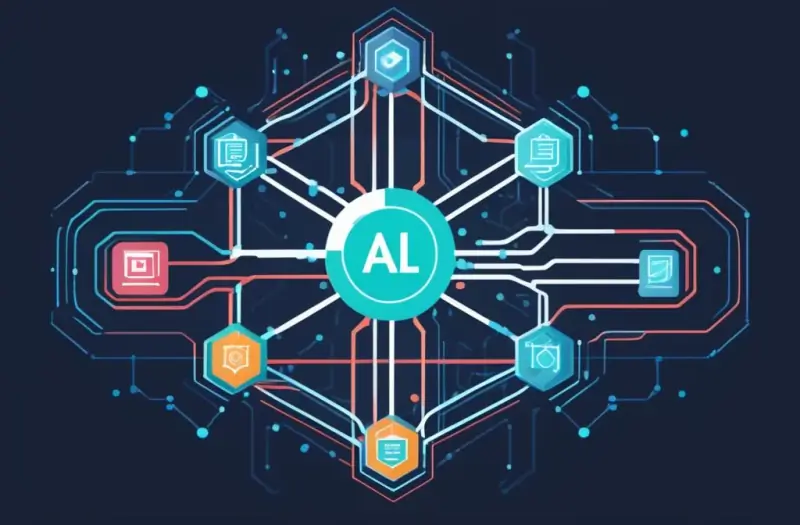
Accelerating AI Development Across Sectors
AI frameworks and libraries have had a profound impact on various industries by accelerating the development of AI applications. In healthcare, for example, frameworks like TensorFlow and PyTorch have enabled the creation of models that can predict diseases with high accuracy. In finance, these tools are used to develop algorithms for fraud detection, risk assessment, and algorithmic trading. The scalability and flexibility of AI frameworks allow us to apply machine learning techniques to an ever-growing range of problems, driving innovation across the board.
Democratizing Access to AI Technology
One of the most significant benefits of modern AI frameworks and libraries is their role in democratizing access to AI technology. Tools like Keras and Scikit-Learn have made it easier than ever for developers of all skill levels to engage in AI programming. This accessibility is crucial in ensuring that the benefits of AI are widely distributed, enabling businesses of all sizes to harness the power of artificial intelligence.
Enabling Real-Time AI Applications
The development of AI infrastructure through frameworks and libraries has paved the way for real-time AI applications. From self-driving cars to personalized recommendations, AI models are increasingly being deployed in environments where real-time decision-making is essential. Frameworks like PyTorch, with its dynamic graph computation, are particularly well-suited for these applications, allowing us to develop AI systems that can adapt and respond to new data on the fly.
Future Trends in AI Frameworks and Libraries
The Rise of AutoML
One emerging trend in the world of AI frameworks is the rise of AutoML (Automated Machine Learning). AutoML tools are designed to automate the process of selecting, training, and tuning machine learning models, making it easier for non-experts to develop high-quality AI applications. As these tools become more sophisticated, we can expect to see a growing number of AI frameworks that integrate AutoML capabilities, further lowering the barrier to entry for AI development.
Integrating AI with Edge Computing
Another trend to watch is the integration of AI with edge computing. As more devices become connected through the Internet of Things (IoT), there’s a growing need for AI models that can run on edge devices with limited computational resources. Frameworks like TensorFlow Lite are already addressing this need, allowing us to deploy AI models on mobile devices, sensors, and other edge computing platforms. This trend is likely to accelerate as the demand for real-time, on-device AI processing continues to grow.
Enhancing Explainability in AI Models
As AI models become more complex, there’s an increasing demand for tools that can help us understand how these models make decisions. Explainability is a key focus area in AI research, and future frameworks and libraries are expected to include features that make it easier to interpret and explain the behavior of AI models. This will be particularly important in regulated industries like healthcare and finance, where transparency is critical.
The Role of Open Source in AI Frameworks
Collaboration and Innovation
The open-source nature of many AI frameworks and libraries has been a driving force behind the rapid advancements in the field. By making the source code available to everyone, open-source projects foster collaboration and innovation, enabling developers from around the world to contribute to and improve the tools we use. This collective effort has led to the creation of some of the most powerful AI tools available today, including TensorFlow, PyTorch, and Scikit-Learn.
The Importance of Community Support
In addition to fostering innovation, open-source projects benefit from robust community support. This support comes in the form of documentation, tutorials, forums, and other resources that help developers get up to speed with new tools quickly. The community-driven nature of open-source AI frameworks ensures that these tools are continuously updated and improved, keeping pace with the latest developments in the field.
Ensuring Longevity and Sustainability
One of the challenges with open-source projects is ensuring their longevity and sustainability. Many open-source AI frameworks rely on the contributions of volunteers, which can lead to issues with long-term support and maintenance. However, the growing interest in AI has led to increased investment from both companies and non-profit organizations, helping to ensure that key frameworks and libraries remain viable for years to come.
FAQs
What are AI frameworks?
AI frameworks are platforms or environments designed to simplify the development of AI applications. They provide reusable codebases and tools for building, training, and deploying AI models.
How do machine learning libraries differ from AI frameworks?
Machine learning libraries are collections of functions and algorithms that assist with specific tasks within AI development, while AI frameworks offer a broader structure for building entire AI applications.
Why are AI frameworks important for machine learning development?
AI frameworks are essential because they simplify and accelerate the development process, allowing us to build complex AI models without starting from scratch.
What are some popular AI frameworks?
Some popular AI frameworks include TensorFlow, PyTorch, and Keras. These frameworks are widely used for a range of AI applications, from research to production.
How does open source contribute to AI framework development?
Open-source AI frameworks benefit from collaboration and innovation, as developers worldwide can contribute to and improve the tools. This has led to the creation of some of the

AI Global Conference: Shaping the Future of Technology
The rapid advancements in artificial intelligence (AI) have paved the way for groundbreaking innovations that are transforming industries and reshaping the global economy. As AI continues to evolve, the importance of collaborative discussions and knowledge sharing has never been greater. The AI Global Conference serves as a pivotal event where experts, innovators, and leaders from around the world converge to discuss the future of technology and innovation.
The AI World Summit: A Hub of Innovation
The AI World Summit is more than just a gathering of minds; it is a beacon of innovation where the latest trends, technologies, and applications in AI are showcased. This international event brings together thought leaders from various sectors, including technology, healthcare, finance, and education, to explore how AI can be harnessed for the betterment of society.
Attendees of the AI international summit have the opportunity to engage in deep discussions, attend insightful presentations, and participate in hands-on workshops. These activities are designed to foster collaboration and inspire new ideas that could lead to the next big breakthrough in AI technology.
Key Themes and Discussions
The artificial intelligence global symposium typically revolves around several key themes that reflect the current state and future trajectory of AI:
- AI in Healthcare: How AI is revolutionizing patient care, diagnostics, and personalized medicine.
- Ethical AI: Addressing the ethical challenges and considerations in developing and deploying AI technologies.
- AI in Business: Exploring the impact of AI on business processes, customer experience, and operational efficiency.
Each of these themes is explored through a series of presentations, panel discussions, and case studies, providing attendees with a comprehensive understanding of the current landscape and future opportunities in AI.
Global AI Summit: Bridging the Gap Between Research and Industry
The global AI summit is renowned for its role in bridging the gap between academic research and industry application. This event provides a platform for researchers to present their latest findings, while industry leaders share insights on how these innovations can be applied in real-world scenarios.
One of the most anticipated sessions at the AI worldwide summit is the AI innovation showcase, where startups and established companies alike demonstrate their cutting-edge AI solutions. This showcase not only highlights the potential of AI to drive economic growth but also underscores the importance of fostering a robust ecosystem that supports innovation.
The Role of Collaboration in AI Advancement
A key takeaway from the AI international summit is the emphasis on collaboration. In an era where technological advancements are accelerating at an unprecedented pace, no single entity can tackle the challenges of AI development alone. The AI global forum encourages collaboration across borders, industries, and disciplines to ensure that AI technologies are developed and deployed in a manner that is beneficial to all.
“Collaboration is the cornerstone of AI innovation. By working together, we can harness the full potential of AI to solve some of the world’s most pressing challenges,” remarked a keynote speaker at a recent AI global gathering.
AI Worldwide Convention: A Global Perspective on AI Development
The AI worldwide convention offers a global perspective on AI development, with participants from every corner of the globe sharing their experiences and insights. This diversity of perspectives is invaluable in understanding the unique challenges and opportunities that different regions face in the AI landscape.
Case Studies and Success Stories
One of the highlights of the global artificial intelligence symposium is the presentation of case studies and success stories from around the world. These real-world examples illustrate how AI is being used to drive innovation and create value in various sectors, from agriculture to finance to manufacturing.
For instance, a case study presented at a recent AI global assembly showcased how AI-powered predictive analytics are being used to optimize supply chain management in the manufacturing industry. The results were impressive, with significant reductions in costs and improvements in efficiency.
AI International Congress: The Future of AI Policy and Regulation
As AI continues to advance, the need for robust policy and regulation becomes increasingly important. The AI international congress provides a forum for policymakers, legal experts, and industry leaders to discuss the regulatory frameworks that are needed to ensure the safe and ethical development of AI technologies.
Key Regulatory Discussions
Key discussions at the AI global conference include:
- Data Privacy: Ensuring that AI technologies are developed with privacy and data protection in mind.
- AI Ethics: Establishing guidelines for the ethical use of AI in various sectors.
- Global Standards: Developing international standards for AI development and deployment to ensure consistency and safety across borders.
These discussions are critical in shaping the future of AI and ensuring that its benefits are realized in a way that is fair and equitable for all.
FAQs
What is the AI Global Conference?
The AI Global Conference is an international event that brings together experts, innovators, and leaders to discuss the future of AI and its impact on various industries.
Who attends the AI World Summit?
The AI World Summit attracts a diverse group of attendees, including researchers, industry leaders, policymakers, and technology enthusiasts.
What are the key themes of the AI Global Forum?
The AI Global Forum typically focuses on themes such as AI in healthcare, ethical AI, AI in business, and the role of collaboration in AI advancement.
How does the AI International Congress address AI regulation?
The AI International Congress provides a platform for discussing key regulatory issues related to AI, including data privacy, AI ethics, and the development of global standards.
What is the significance of the AI Innovation Showcase?
The AI Innovation Showcase highlights cutting-edge AI solutions and demonstrates the potential of AI to drive economic growth and innovation.
Conclusion
The AI Global Conference is a cornerstone event in the world of AI, providing a unique platform for thought leaders, innovators, and policymakers to come together and shape the future of technology and innovation. Through insightful discussions, collaborative efforts, and the sharing of knowledge, this event continues to drive the AI industry forward, ensuring that the benefits of AI are realized on a global scale.
Key Takeaways
- The AI Global Conference is a premier event that brings together experts and innovators to discuss the future of AI.
- Collaboration and knowledge sharing are critical to advancing AI technology.
- The event covers a wide range of themes, including AI in healthcare, ethical AI, and AI in business.
- The AI Innovation Showcase highlights the latest AI solutions and their potential impact on various industries.
- Policy and regulation are key topics of discussion, with a focus on data privacy, AI ethics, and global standards.
The AI Global Conference not only shapes the future of AI but also serves as a catalyst for innovation and collaboration in the global AI community.

AI in Business: How AI is Transforming Industries
In today’s fast-paced digital world, artificial intelligence (AI) is transforming how businesses operate, innovate, and grow. The integration of AI in business has moved beyond a futuristic concept; it is now a key driver of success in the modern economy. AI-driven business solutions are enhancing everything from customer service to supply chain management, offering companies a competitive edge that was unimaginable just a few years ago. But how exactly can businesses harness the power of AI to stay ahead in this rapidly evolving landscape? Let’s explore some strategies for success in the digital age.
Understanding AI-Driven Business Transformation
As businesses strive to keep up with technological advancements, AI in corporate strategy has emerged as a critical component of enterprise management. By leveraging machine learning in business processes, companies can automate tasks, gain deeper insights from data, and enhance overall efficiency. The result? A transformation that not only improves operational performance but also fosters innovation.
The Role of AI in Business Operations
AI is playing a pivotal role in optimizing business operations. From predictive maintenance in manufacturing to personalized marketing in retail, AI-enhanced business processes are making companies more agile and responsive to market demands. By implementing AI-powered business solutions, companies can reduce costs, improve accuracy, and speed up processes that were previously time-consuming and prone to human error.
AI in Decision-Making: Enhancing Business Intelligence
The ability to make informed decisions quickly is crucial in the business world. AI-driven decision-making tools are empowering leaders with real-time insights, enabling them to react to changes swiftly and strategically. By utilizing business intelligence AI, companies can analyze vast amounts of data to identify trends, forecast outcomes, and make decisions that drive growth and profitability.
Case Study: AI in Retail Business
To understand the impact of AI on business, let’s look at the retail sector. AI has revolutionized the way retailers operate by providing AI-powered business analytics that offer insights into consumer behavior. For example, AI-driven recommendation systems help retailers offer personalized product suggestions to customers, enhancing the shopping experience and boosting sales.
Strategies for Implementing AI in Business
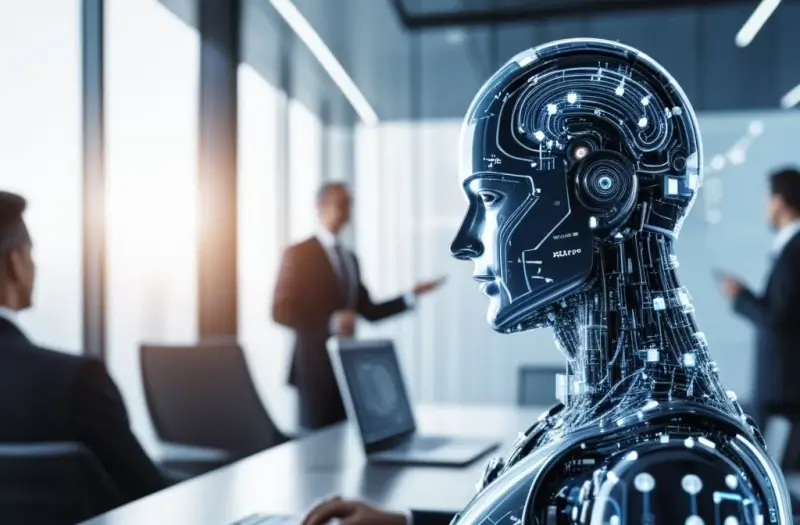
While the benefits of AI are clear, successfully integrating it into your business requires a well-thought-out strategy. Here are some key steps to consider when embarking on your AI business transformation journey:
1. Define Clear Objectives
Before implementing AI, it’s essential to define what you want to achieve. Are you looking to improve operational efficiency, enhance customer experience, or drive innovation? By setting clear objectives, you can align your AI strategy with your business goals.
2. Invest in the Right Technology
Choosing the right AI technology is crucial for success. Whether it’s machine learning algorithms, natural language processing, or robotics, the tools you select should align with your business needs and capabilities. Business automation with AI can streamline processes, but it’s important to ensure that the technology is scalable and adaptable to future needs.
3. Build a Skilled Team
AI implementation requires expertise in data science, software engineering, and business strategy. Investing in talent or partnering with AI experts can help you build a team that can effectively manage your AI and business innovation efforts.
4. Foster a Culture of Innovation
AI can only thrive in an environment that encourages experimentation and innovation. Encourage your team to explore new ideas, test AI applications, and continuously learn from their experiences. This approach will enable your business to stay at the forefront of AI-driven business solutions.
5. Measure and Optimize
Like any other business strategy, AI implementation should be regularly monitored and optimized. Use metrics to measure the impact of AI on your business processes, and be prepared to make adjustments as needed. This iterative approach will help you maximize the benefits of AI business transformation.
Overcoming Challenges in AI Business Integration
While AI offers numerous benefits, integrating it into your business is not without challenges. Common hurdles include data privacy concerns, the high cost of AI technologies, and the complexity of AI systems. However, by addressing these challenges head-on, businesses can overcome them and reap the rewards of AI-enhanced corporate efficiency.
Data Privacy and Security
With the increasing use of AI, concerns about data privacy and security have become more prominent. Businesses must ensure that their AI systems comply with regulations and protect customer data. Implementing robust security measures and staying up-to-date with the latest data protection standards are critical steps in mitigating these risks.
Cost of AI Implementation
The initial cost of AI technology can be a barrier for many businesses, especially small and medium-sized enterprises. However, the long-term benefits often outweigh the upfront investment. To manage costs, businesses can start with small AI projects and gradually scale up as they see returns on investment.
Managing AI Complexity
AI systems can be complex to implement and maintain. Businesses need to invest in training and resources to ensure that their teams are equipped to handle AI technologies. Partnering with AI vendors or consultants can also help businesses navigate the complexities of AI implementation.
AI in Business Innovation: The Future Outlook

The future of business is undeniably linked to AI. As technology continues to evolve, we can expect to see even more innovative applications of AI in various industries. From AI in enterprise management to AI-powered business analytics, the possibilities are endless. Businesses that embrace AI today will be better positioned to lead in the digital age.
Emerging Trends in AI and Business
Several emerging trends are shaping the future of AI in business:
- AI and business competitiveness: Companies are increasingly using AI to gain a competitive edge by optimizing operations and enhancing customer experiences.
- AI-powered customer service: Chatbots and virtual assistants are becoming more sophisticated, providing personalized support that improves customer satisfaction.
- AI in supply chain management: AI is helping businesses optimize their supply chains by predicting demand, managing inventory, and reducing operational costs.
AI-Driven Business Growth: Key Takeaways
As businesses continue to integrate AI into their operations, several key takeaways can guide their efforts:
- Focus on value creation: AI should be used to create value for both the business and its customers.
- Start small, think big: Begin with small AI projects that have a clear return on investment, then scale up.
- Continuous learning and adaptation: The AI landscape is constantly evolving, so businesses must stay informed and be ready to adapt to new developments.
FAQs
How can AI improve business efficiency?
AI can automate routine tasks, analyze large datasets, and provide insights that help businesses make more informed decisions, leading to improved efficiency.
What are the main challenges of implementing AI in business?
Common challenges include high implementation costs, data privacy concerns, and the complexity of AI systems. However, these can be managed with proper planning and resources.
Is AI suitable for small businesses?
Yes, AI can benefit small businesses by automating tasks, improving customer service, and providing valuable insights. Starting with small, scalable AI projects can help small businesses reap the benefits of AI without significant upfront investment.
How does AI enhance decision-making in business?
AI enhances decision-making by analyzing data in real-time, identifying patterns, and providing actionable insights that help business leaders make informed choices.
What industries are most impacted by AI?
AI is impacting a wide range of industries, including retail, healthcare, finance, manufacturing, and logistics. Each industry uses AI to optimize operations, improve customer experiences, and drive innovation.
Conclusion
AI is no longer a futuristic concept; it is a present-day reality that is transforming businesses across all sectors. By embracing AI-driven business strategies, companies can enhance their operations, innovate more effectively, and gain a competitive edge in the digital age. However, successful AI integration requires careful planning, the right technology, and a culture that supports continuous learning and adaptation. As we move further into the digital era, those who harness the power of AI in business will undoubtedly lead the way.
Key Takeaways
- AI is transforming business operations: Companies are using AI to optimize processes, reduce costs, and enhance customer experiences.
- Successful AI integration requires clear objectives: Align your AI strategy with your business goals to achieve the best results.
- AI can help businesses stay competitive: By leveraging AI, companies can gain a competitive edge in their industry.
- Challenges exist but can be overcome: Data privacy, cost, and complexity are challenges that can be managed with proper planning.
- The future of business is AI: As AI technology continues to evolve, its impact on business will only grow, making it essential for companies to stay ahead of the curve.

AI in Business: Revolutionizing Your Operations
Introduction
In today’s fast-paced world, staying competitive requires more than just keeping up with trends—it demands the integration of cutting-edge technologies that can fundamentally transform the way we operate. Artificial Intelligence (AI) in business has emerged as a game-changer, enabling companies to streamline processes, enhance decision-making, and ultimately gain a significant competitive edge. In this article, we’ll explore how AI is revolutionizing business strategies, driving innovation, and shaping the future of enterprises worldwide.
From machine learning in commerce to intelligent automation in organizations, businesses are increasingly relying on AI-driven solutions to stay ahead of the curve. These advancements aren’t just improving operational efficiency; they’re also paving the way for data-driven decision making and more accurate predictive analytics, empowering businesses to anticipate market trends and respond with agility.
The Role of AI in Business Transformation
AI is not merely a tool but a catalyst for digital transformation through AI. Companies are leveraging AI to reimagine their strategies, creating AI-powered business strategies that go beyond traditional approaches.
AI-Driven Innovation
Innovative technologies in business are at the forefront of this transformation. AI enables businesses to create new products, services, and business models that were previously unimaginable. By analyzing vast amounts of data, AI identifies patterns and trends that humans might overlook, leading to groundbreaking innovations.
Enhancing Operational Efficiency
Incorporating AI-enhanced operational efficiency into business processes allows companies to automate routine tasks, reduce errors, and optimize resource allocation. This not only saves time and money but also frees up human resources to focus on more strategic activities.
Predictive Analytics and Decision Making
One of the most powerful applications of AI in business is predictive analytics in business. By harnessing the power of AI, companies can analyze historical data to predict future trends and outcomes. This enables data-driven decision making, where decisions are based on empirical data rather than intuition or guesswork.
AI in Customer Relationship Management
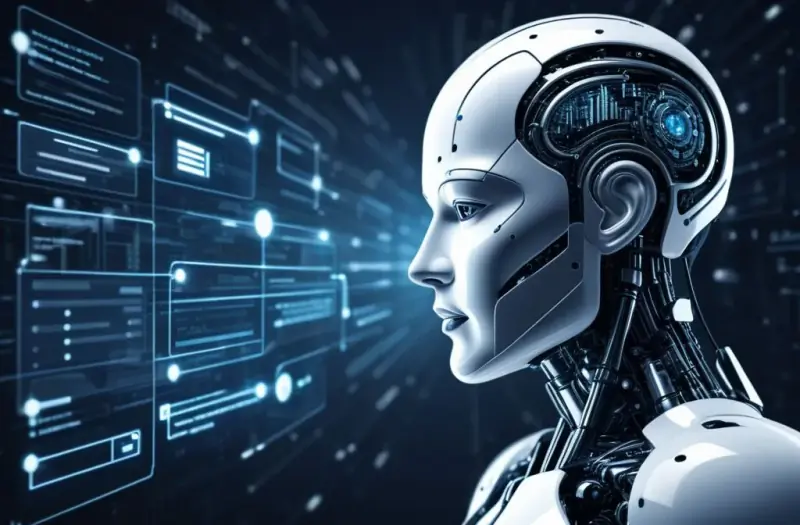
AI is transforming how businesses interact with their customers, providing AI-driven solutions in industry that enhance customer satisfaction and loyalty.
Personalization and Customer Insights
AI allows businesses to offer highly personalized experiences by analyzing customer data to understand preferences and behaviors. This leads to more effective marketing campaigns, improved customer service, and ultimately, higher customer retention rates.
Chatbots and Virtual Assistants
The use of smart technology for businesses has led to the widespread adoption of AI-powered chatbots and virtual assistants. These tools handle customer inquiries efficiently, provide 24/7 support, and gather valuable data that can be used to further enhance customer experience.
Predictive Customer Analytics
AI’s ability to predict customer behavior allows businesses to anticipate needs and provide tailored solutions. This proactive approach to customer relationship management ensures that businesses can meet customer demands before they arise.
AI in Supply Chain Management
The integration of AI into supply chain management has revolutionized the way businesses manage their operations, resulting in automated processes in enterprises that are more efficient, reliable, and scalable.
Inventory Management
AI-powered systems can predict inventory needs based on historical data and market trends, reducing the risk of overstocking or stockouts. This cognitive computing in business application ensures that companies maintain optimal inventory levels, minimizing costs and maximizing efficiency.
Logistics and Transportation
AI improves logistics by optimizing routes, predicting delays, and even managing autonomous vehicles. This results in faster delivery times, reduced fuel consumption, and lower transportation costs.
Supplier Relationship Management
AI enables businesses to analyze supplier performance, predict risks, and negotiate better terms. This enhances the reliability and efficiency of the supply chain, contributing to a more robust business operation.
AI in Human Resources
AI is reshaping human resources by automating routine tasks, improving recruitment processes, and enhancing employee engagement.
Recruitment and Talent Management
AI-driven tools streamline the recruitment process by screening resumes, conducting initial interviews, and even predicting candidate success. This ensures that companies hire the best talent quickly and efficiently.
Employee Engagement and Retention
AI can analyze employee data to identify factors that contribute to job satisfaction and retention. By addressing these factors proactively, businesses can create a more engaged and loyal workforce.
Training and Development
AI-powered platforms offer personalized training programs that adapt to the needs and learning styles of individual employees. This ensures that employees are equipped with the skills they need to succeed in a rapidly changing business environment.
AI in Marketing and Sales
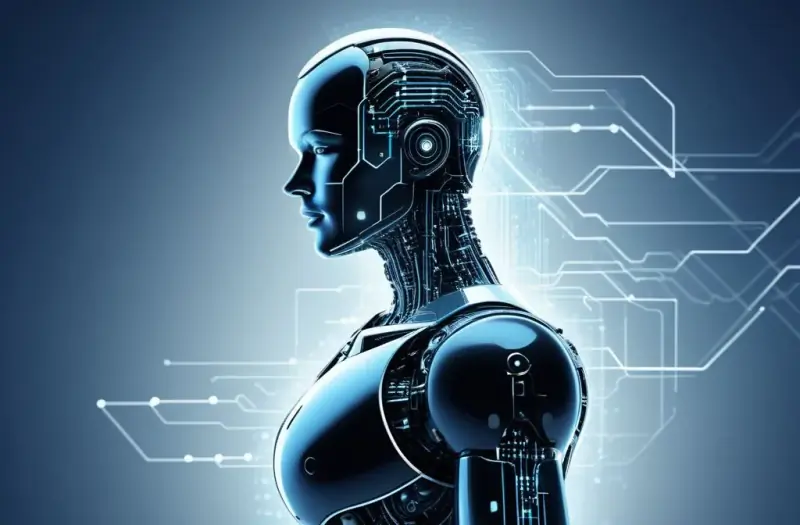
The impact of AI on marketing and sales is profound, with AI-driven strategies leading to more effective campaigns, higher conversion rates, and increased revenue.
Targeted Marketing Campaigns
AI enables businesses to create highly targeted marketing campaigns by analyzing customer data to identify the most effective messaging and channels. This results in higher engagement and conversion rates.
Sales Forecasting
AI-powered sales forecasting tools provide businesses with accurate predictions of future sales, allowing them to plan more effectively and allocate resources efficiently.
Dynamic Pricing
AI can analyze market conditions, competitor pricing, and customer demand to determine optimal pricing strategies. This ensures that businesses remain competitive while maximizing profits.
AI in Finance and Risk Management
AI is transforming finance and risk management by providing more accurate predictions, automating processes, and enhancing decision-making.
Fraud Detection and Prevention
AI-powered systems can detect fraudulent activities by analyzing patterns and anomalies in transaction data. This reduces the risk of fraud and ensures that businesses can operate securely.
Credit Risk Assessment
AI enables businesses to assess credit risk more accurately by analyzing a wider range of data points. This results in better lending decisions and reduced default rates.
Automated Financial Processes
AI automates routine financial processes, such as bookkeeping and reporting, reducing the risk of errors and freeing up time for more strategic activities.
The Future of AI in Business
The future of AI in business is bright, with advancements in machine learning in commerce and intelligent automation in organizations continuing to drive innovation and growth.
AI and the Workforce
As AI continues to evolve, it will play an increasingly important role in the workforce. While some jobs may be automated, new opportunities will emerge in areas such as AI development, data analysis, and strategy.
Ethical Considerations
As businesses continue to adopt AI, it is important to consider the ethical implications. Issues such as data privacy, bias in AI algorithms, and the impact on employment must be addressed to ensure that AI is used responsibly.
AI and Global Competition
AI will play a crucial role in determining the competitive landscape of the future. Businesses that embrace AI and leverage its capabilities will have a significant advantage over those that do not.
FAQs
What is the role of AI in business?
AI plays a crucial role in business by enhancing operational efficiency, enabling data-driven decision-making, and driving innovation. It is used in various areas, including customer relationship management, supply chain management, and finance.
How does AI improve customer relationship management?
AI improves customer relationship management by providing personalized experiences, using chatbots and virtual assistants for efficient customer service, and employing predictive analytics to anticipate customer needs.
Can AI help in supply chain management?
Yes, AI can revolutionize supply chain management by optimizing inventory, improving logistics, and enhancing supplier relationship management. It ensures more efficient and reliable operations.
What are the benefits of AI in human resources?
AI benefits human resources by streamlining recruitment, enhancing employee engagement and retention, and offering personalized training and development programs.
How does AI impact marketing and sales?
AI impacts marketing and sales by enabling targeted marketing campaigns, improving sales forecasting, and optimizing pricing strategies. This leads to higher conversion rates and increased revenue.
Is AI important for financial and risk management?
AI is vital for finance and risk management, offering tools for fraud detection, credit risk assessment, and the automation of financial processes, all of which enhance security and efficiency.
What are the ethical considerations of using AI in business?
Ethical considerations include data privacy, bias in AI algorithms, and the impact on employment. Businesses must address these issues to ensure responsible AI use.
How will AI shape the future of business?
AI will shape the future of business by driving innovation, creating new job opportunities, and determining the competitive landscape. Businesses that embrace AI will gain a significant advantage.
What industries will be most affected by AI?
Industries such as finance, healthcare, retail, and manufacturing are likely to be most affected by AI due to its potential to automate processes, enhance decision-making, and drive innovation.
Conclusion
As we move forward, the integration of AI in business will become not just an advantage but a necessity for staying competitive. From predictive analytics in business to AI-powered business strategies, the potential of AI to transform industries is immense. By embracing AI, businesses can unlock new levels of efficiency, innovation, and success. However, it is essential to navigate this transformation with a clear understanding of the ethical implications and the impact on the workforce. As we continue to explore the possibilities of AI-driven solutions in industry, we must ensure that we are building a future where technology enhances, rather than diminishes, the human experience.
Key Takeaways
- AI in business is revolutionizing strategies, enabling companies to gain a competitive edge.
- AI enhances operational efficiency, drives innovation, and supports data-driven decision making.
- The future of AI in business will be shaped by ethical considerations, workforce transformation, and global competition.
- Businesses that embrace AI will be well-positioned to thrive in the digital age.
By understanding and leveraging Artificial Intelligence in enterprises, we can create a future where businesses are not just surviving but thriving in an increasingly competitive landscape.

AI in Education: Revolutionizing Learning & Teaching
In recent years, artificial intelligence (AI) has begun to reshape numerous sectors, and education is no exception. The integration of AI in education has the potential to transform both learning and teaching, offering innovative solutions that enhance the educational experience for students and educators alike. As we delve into the impact of AI in education, we’ll explore how this technology is revolutionizing traditional methods and paving the way for smarter, more personalized learning environments.
Introduction to AI in Education
Artificial intelligence in education refers to the use of advanced algorithms and machine learning to support and enhance the educational process. AI technology in education is not just a futuristic concept but a reality that is actively changing how students learn and teachers instruct. From intelligent tutoring systems to AI-enhanced teaching tools, the potential applications of AI in learning are vast and varied.
AI-driven education is designed to address several key challenges in traditional education systems, such as personalization of learning, scalability of resources, and administrative efficiency. By leveraging AI-enhanced teaching methods, educators can now tailor instruction to meet the unique needs of each student, making learning more effective and engaging.
Personalized Learning Experiences

One of the most significant benefits of AI in learning is its ability to provide personalized learning experiences. Adaptive learning technologies powered by AI can analyze a student’s performance and learning style to deliver customized content and recommendations. This ensures that each student receives instruction that is tailored to their individual needs and pace.
Intelligent Tutoring Systems
Intelligent tutoring systems (ITS) are a prime example of how educational AI technology can be used to support personalized learning. These systems use machine learning algorithms to assess a student’s understanding and provide immediate feedback. Unlike traditional tutoring methods, ITS can offer 24/7 support and adapt to the student’s evolving needs, making them a valuable tool for enhancing AI-supported instruction.
AI-Based Learning Platforms
AI-based learning platforms offer a range of features designed to support personalized learning. These platforms can track student progress, identify areas where additional help is needed, and adjust the difficulty of content accordingly. By using AI educational tools, educators can provide a more individualized learning experience that caters to the unique strengths and weaknesses of each student.
Enhancing Teaching Efficiency
AI is not only transforming student learning but also enhancing teaching efficiency. AI-driven education tools can automate administrative tasks, such as grading and attendance tracking, allowing educators to focus more on teaching and less on paperwork. This increased efficiency can lead to a more productive and engaging classroom environment.
Automated Grading Systems
Automated grading systems use machine intelligence in education to evaluate student assignments and exams. These systems can quickly and accurately assess student work, providing instant feedback that helps students understand their mistakes and improve their performance. By reducing the time spent on grading, educators can allocate more time to personalized instruction and student interaction.
Smart Classroom Solutions
Smart classroom solutions incorporate AI to create more interactive and dynamic learning environments. Features such as smart whiteboards, AI-powered classroom management tools, and interactive learning apps enhance the educational experience by making lessons more engaging and accessible. These tools also provide valuable insights into student engagement and performance, helping educators make informed decisions about their teaching strategies.
The Role of Cognitive Computing in Education
Cognitive computing is a branch of AI that focuses on mimicking human thought processes to solve complex problems. In education, cognitive computing can be used to develop AI-supported instruction tools that understand and respond to students’ needs in a more nuanced way. By leveraging cognitive computing, educational tools can provide deeper insights into student learning patterns and offer more targeted support.
Adaptive Learning Technologies
Adaptive learning technologies use cognitive computing to create learning experiences that adjust in real-time based on student interactions. These systems can identify patterns in student behavior and performance, allowing them to tailor content and support to each student’s needs. This dynamic approach to learning helps ensure that students receive the right level of challenge and support, promoting more effective and efficient learning.
AI Applications in Classrooms
AI applications in classrooms can range from virtual teaching assistants to interactive learning modules. These applications use AI-enhanced teaching methods to support both students and teachers. For example, virtual teaching assistants can provide additional help to students outside of class, while interactive modules can make learning more engaging and interactive.
Benefits of AI in Education
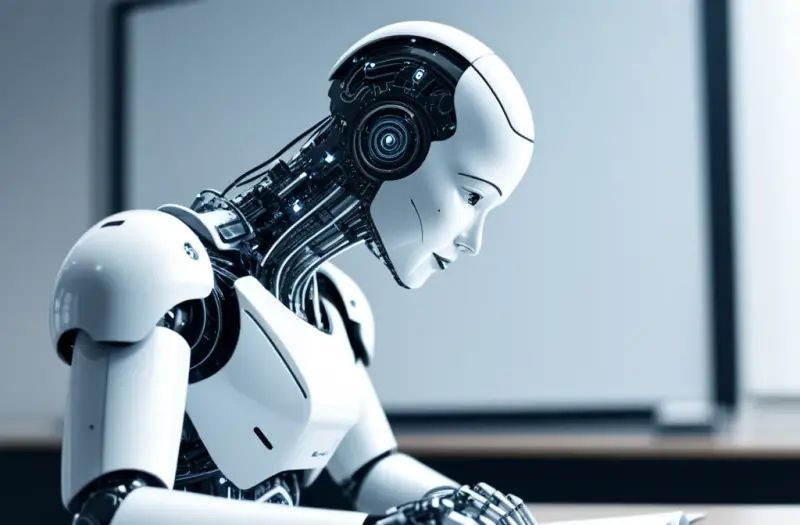
The integration of AI in education offers numerous benefits, including:
- Personalized Learning: Tailoring instruction to individual student needs.
- Increased Efficiency: Automating administrative tasks and streamlining classroom management.
- Enhanced Engagement: Using interactive tools and applications to make learning more engaging.
- Data-Driven Insights: Providing valuable insights into student performance and learning patterns.
Case Studies and Success Stories
Several educational institutions have successfully implemented AI educational tools and have seen significant improvements in student outcomes. For example, schools that have adopted AI-based learning platforms have reported higher levels of student engagement and improved academic performance. These success stories demonstrate the potential of AI to transform education and provide valuable insights into best practices for implementing AI in learning environments.
Challenges and Considerations
While the potential benefits of AI in education are substantial, there are also challenges to consider. Issues such as data privacy, algorithmic bias, and the need for adequate training for educators must be addressed to ensure the successful integration of AI in education.
Data Privacy Concerns
As with any technology that involves personal data, data privacy is a major concern when implementing AI in education. It is crucial to ensure that student data is protected and used responsibly. Educational institutions must adhere to privacy regulations and implement robust security measures to safeguard sensitive information.
Addressing Algorithmic Bias
Algorithmic bias can occur when AI systems make decisions based on biased data. In education, this can lead to unfair or discriminatory outcomes. It is important to use diverse and representative data when training AI systems and to regularly monitor and evaluate the performance of these systems to address any potential biases.
FAQs
How is AI currently used in education?
AI is used in education for personalized learning, intelligent tutoring systems, automated grading, and smart classroom solutions. It helps tailor instruction to individual student needs and enhances teaching efficiency.
What are intelligent tutoring systems?
Intelligent tutoring systems are AI-powered tools that provide personalized instruction and feedback to students. They adapt to each student’s learning style and performance, offering support tailored to their needs.
What are the benefits of AI in learning?
AI in learning offers benefits such as personalized learning experiences, increased teaching efficiency, enhanced engagement, and data-driven insights into student performance.
Are there any challenges associated with AI in education?
Challenges include data privacy concerns, algorithmic bias, and the need for adequate training for educators. Addressing these challenges is crucial for the successful integration of AI in education.
How can AI enhance teaching efficiency?
AI enhances teaching efficiency by automating administrative tasks like grading and attendance tracking, allowing educators to focus more on instruction and student interaction.
Conclusion
The impact of AI in education is profound and far-reaching. From personalized learning experiences to enhanced teaching efficiency, AI-driven education is transforming how we approach learning and instruction. As we continue to explore and implement these technologies, it is essential to address the associated challenges and ensure that AI is used ethically and effectively. The future of education is bright with AI, and by leveraging these advancements, we can create more dynamic, personalized, and effective learning environments.
Key Takeaways
- AI in education offers personalized learning experiences and enhances teaching efficiency.
- Intelligent tutoring systems and AI-based learning platforms are key applications of AI in learning.
- Cognitive computing and smart education solutions are shaping the future of education.
- Addressing challenges such as data privacy and algorithmic bias is crucial for successful AI integration.

AI in Everyday Life: Transforming Ordinary Tasks
Artificial Intelligence (AI) is no longer a concept confined to science fiction or high-tech laboratories. Today, AI is woven into the fabric of our everyday lives, subtly transforming the way we perform ordinary tasks. From the moment we wake up to the time we go to bed, AI plays a pivotal role in enhancing our daily experiences, making life more convenient, efficient, and even enjoyable.
Understanding AI in Daily Activities
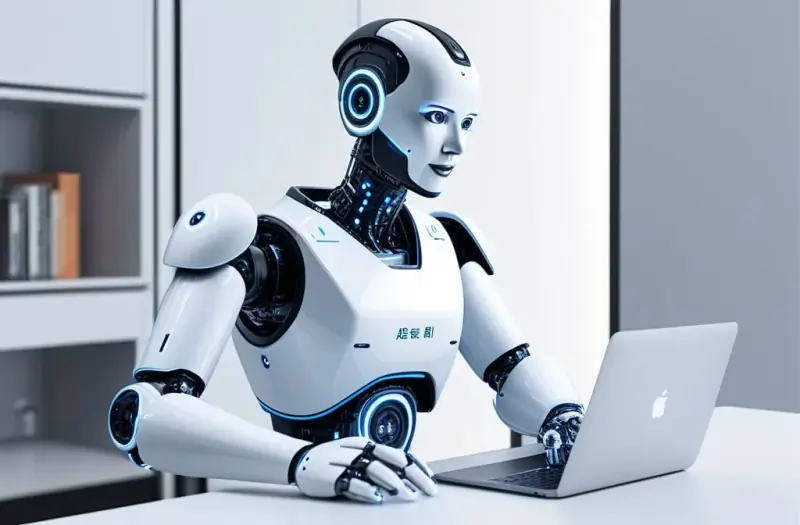
AI is an umbrella term that encompasses various technologies designed to simulate human intelligence. Machine learning, natural language processing, and smart algorithms are just a few examples of how AI works behind the scenes to optimize our day-to-day routines. But how exactly does this technology impact our daily lives?
Everyday AI applications are often so seamlessly integrated that we might not even realize we’re using them. Whether it’s the voice-activated assistant on our smartphones or the smart thermostat that adjusts our home’s temperature, AI has become an indispensable part of our lives.
The Morning Routine: AI in Personal Technology
Our mornings are a prime example of how AI has infiltrated daily activities. The moment we turn off our alarm, which might have been set by our AI-powered voice assistant, we’re engaging with technology designed to make our lives easier.
- Smart alarms adjust based on your sleep cycle, waking you up at the optimal time.
- AI-powered coffee machines brew your favorite cup just the way you like it.
- Voice assistants like Siri, Alexa, or Google Assistant can provide a rundown of your schedule, weather updates, and even control other smart devices in your home.
These intelligent systems in everyday life are designed to streamline your morning, saving you precious time and helping you start the day on the right foot.
Navigating the Day: AI in Common Tasks
As we move through the day, AI continues to play a crucial role in enhancing our routine tasks. Whether at work, at home, or on the go, AI-powered tools are there to assist.
Email filtering, for example, uses machine learning to sort through your inbox, prioritizing important messages and sending spam to the trash. Similarly, AI in daily operations at work can automate repetitive tasks, like data entry or scheduling, allowing us to focus on more meaningful work.
For those who work from home, AI-driven daily life enhancements include tools that monitor productivity, suggest optimal break times, and even provide personalized playlists to help you concentrate better.
AI in Consumer Technology: Enhancing Everyday Experiences
Consumer technology is another area where AI shines. Smart home devices, such as smart thermostats, lights, and security systems, learn your habits over time and adjust accordingly. These AI integration in daily routines not only adds convenience but also helps save energy and reduce costs.
Moreover, AI in personal technology extends to our entertainment systems. Streaming services like Netflix or Spotify use AI algorithms to recommend shows, movies, or music based on your preferences. These intelligent systems in everyday life ensure that you always have something enjoyable to watch or listen to, tailored just for you.
Driving into the Future: AI in Transportation
AI is revolutionizing the way we think about transportation. Self-driving cars are no longer a distant dream but a rapidly advancing reality. These vehicles use AI to navigate roads, avoid obstacles, and make real-time decisions that were once solely the domain of human drivers.
But even if you’re not in the market for a self-driving car, AI is already helping you get from point A to point B more efficiently. Navigation apps like Google Maps or Waze use machine learning to analyze traffic patterns and suggest the quickest routes, saving you time and reducing stress.
AI in Healthcare: Everyday Applications for Well-being
Healthcare is another sector where AI is making significant strides, even in our daily lives. From AI-powered fitness trackers that monitor our health metrics to virtual health assistants that offer medical advice based on symptoms, AI is helping us take charge of our well-being.
For instance, smart systems in daily activities like meal planning or exercise routines can suggest personalized plans based on your health data. These everyday AI applications are designed to help you live a healthier, more balanced life.
Shopping and Retail: AI in Consumer Experiences
Shopping has been transformed by AI, both online and in-store. Personalized recommendations, powered by machine learning, ensure that the products you see are tailored to your tastes and preferences. This makes the shopping experience more enjoyable and efficient.
AI-driven chatbots also enhance customer service by providing instant responses to queries, helping you find what you need faster. These AI in everyday experiences ensure that your interactions with brands are smooth and satisfying.
AI in Home Maintenance: Making Life Easier
Maintaining a home can be time-consuming, but AI is here to help. Robotic vacuum cleaners, for example, use AI to navigate your home and clean floors with minimal effort on your part. Smart appliances, such as refrigerators that track food inventory or washing machines that adjust settings based on load type, make household chores less of a burden.
These everyday machine learning solutions free up time for more important activities, allowing you to spend less time on mundane tasks and more time on what matters.
Entertainment and Leisure: AI-Powered Enjoyment
When it’s time to unwind, AI is there to enhance your entertainment. Video games now use AI to create more realistic and adaptive gameplay, while AI-powered content generation allows for more personalized and immersive experiences in virtual reality.
Even in sports and fitness, AI in routine tasks like tracking performance metrics or suggesting workout routines is making leisure activities more enjoyable and effective.
AI and Social Media: Connecting the World
Social media platforms rely heavily on AI to curate content, target ads, and even moderate user behavior. AI integration in daily routines means that the content you see on your feed is specifically tailored to your interests, making your social media experience more engaging.
Moreover, AI in machine intelligence in daily life helps in identifying harmful content or fake news, ensuring that the information you consume is more reliable and safe.
AI in Education: Learning Made Smarter
Education is another area where AI is making a significant impact. Adaptive learning platforms use AI to personalize the educational experience, adjusting the difficulty of tasks based on the learner’s performance.
AI-driven tools can also assist in grading, providing feedback, and even identifying areas where students may need extra help. These smart systems in daily activities are transforming the way we learn, making education more accessible and effective.
AI in Financial Management: Keeping Your Finances in Check
Managing finances can be challenging, but AI is making it easier. AI-powered budgeting apps analyze your spending habits and provide insights on how to save money. Automated investment platforms use machine learning to suggest investment strategies based on your financial goals and risk tolerance.
These everyday AI advancements in financial management ensure that your money is working as hard as you are.
Frequently Asked Questions (FAQs)

What is AI in daily activities?
AI in daily activities refers to the integration of artificial intelligence technologies into our everyday tasks, such as using smart devices, navigating traffic, or managing finances, to make these tasks more efficient and convenient.
How does AI impact routine tasks?
AI impacts routine tasks by automating repetitive processes, providing personalized recommendations, and making real-time decisions, thereby saving time and improving efficiency.
Can AI be used for personal technology?
Yes, AI is extensively used in personal technology, including smart home devices, voice assistants, and personalized entertainment systems, enhancing our daily experiences.
Is AI safe to use in everyday life?
Generally, AI is safe to use in everyday life as long as it’s implemented with proper security measures and ethical considerations. However, it’s essential to stay informed about potential risks, such as data privacy concerns.
How is AI used in consumer technology?
AI is used in consumer technology to personalize user experiences, automate home systems, enhance entertainment, and improve customer service, making daily interactions more efficient and enjoyable.
Conclusion
AI has become an integral part of our everyday lives, transforming ordinary tasks into more efficient, personalized, and enjoyable experiences. From the moment we wake up to the time we go to bed, artificial intelligence in daily life plays a crucial role in shaping our routines. As AI continues to evolve, its impact on our daily lives will only grow, bringing even more innovative solutions to everyday challenges.
Key Takeaways
- AI is seamlessly integrated into daily activities, making life more convenient and efficient.
- From personal technology to healthcare, AI enhances our day-to-day experiences.
- AI-powered tools in consumer technology, transportation, and financial management are transforming how we live.
- Staying informed about AI’s role in daily life ensures we can fully benefit from its advancements while being mindful of potential risks.

AI in Finance: Revolutionizing the Financial Industry
In the ever-evolving landscape of finance, the introduction of artificial intelligence (AI) has marked a significant transformation. As we navigate through this exciting era, it is clear that AI in finance is not just a trend but a revolutionary force reshaping how we approach financial strategies. From enhancing decision-making processes to automating complex tasks, AI has become an indispensable tool in the financial sector.
In this article, we will explore how AI is revolutionizing financial strategies, examining the various applications of AI in finance, its benefits, and the future it promises. We will delve into the impact of AI-driven financial solutions and how they are setting new standards for financial technology.
The Role of AI in Modern Financial Strategies
Artificial intelligence is playing a pivotal role in modernizing financial strategies. By leveraging machine learning and intelligent algorithms, financial institutions are now able to analyze vast amounts of data with unprecedented speed and accuracy. This ability to process and interpret data is transforming how financial decisions are made.
One key application of AI in finance is predictive analytics. Predictive analytics uses historical data and machine learning algorithms to forecast future trends and behaviors. For instance, financial institutions can predict market movements, customer behaviors, and investment risks more accurately than ever before. This capability enhances investment strategies, optimizes asset management, and improves risk assessment.
Another significant aspect of AI in finance is automated financial analysis. Traditional financial analysis methods often involve manual data entry and interpretation, which can be time-consuming and prone to errors. AI-driven tools streamline these processes by automating data collection and analysis, allowing financial professionals to focus on strategic decision-making rather than routine tasks.
Benefits of AI-Driven Financial Solutions

The integration of AI into financial strategies brings numerous benefits, revolutionizing the way financial services are delivered. Here are some of the key advantages:
-
Enhanced Efficiency: AI reduces the time required to process transactions and analyze financial data. This efficiency translates into faster decision-making and improved operational performance.
-
Improved Accuracy: Machine learning algorithms and smart technologies enhance the accuracy of financial forecasts and risk assessments. This accuracy helps in minimizing errors and optimizing investment decisions.
-
Cost Reduction: By automating routine tasks and improving efficiency, AI helps in reducing operational costs. Financial institutions can allocate resources more effectively and lower overhead expenses.
-
Personalized Services: AI enables financial institutions to offer personalized services tailored to individual client needs. Through data analysis and customer insights, financial services can be customized to provide a more personalized experience.
-
Fraud Detection: AI systems are equipped with advanced algorithms that can detect unusual patterns and potential fraud in real-time. This capability significantly enhances security and reduces the risk of financial fraud.
AI and Machine Learning in Financial Forecasting
Financial forecasting is a critical aspect of strategic planning in the financial industry. AI and machine learning have introduced new methodologies that enhance forecasting accuracy and reliability.
AI-enhanced financial forecasting leverages historical data, market trends, and complex algorithms to predict future financial outcomes. This approach allows financial professionals to anticipate market fluctuations, evaluate investment opportunities, and make informed decisions based on predictive insights.
-
Time Series Analysis: AI uses time series analysis to examine historical data and identify patterns that can forecast future trends. This method is particularly useful for predicting stock prices, interest rates, and economic indicators.
-
Sentiment Analysis: Machine learning models analyze news articles, social media, and market sentiment to gauge investor attitudes and potential market movements. This analysis provides valuable insights into market trends and investor behavior.
-
Scenario Analysis: AI tools perform scenario analysis by simulating various financial scenarios and their potential impacts. This capability helps in evaluating different investment strategies and risk management approaches.
Case Studies of AI in Finance
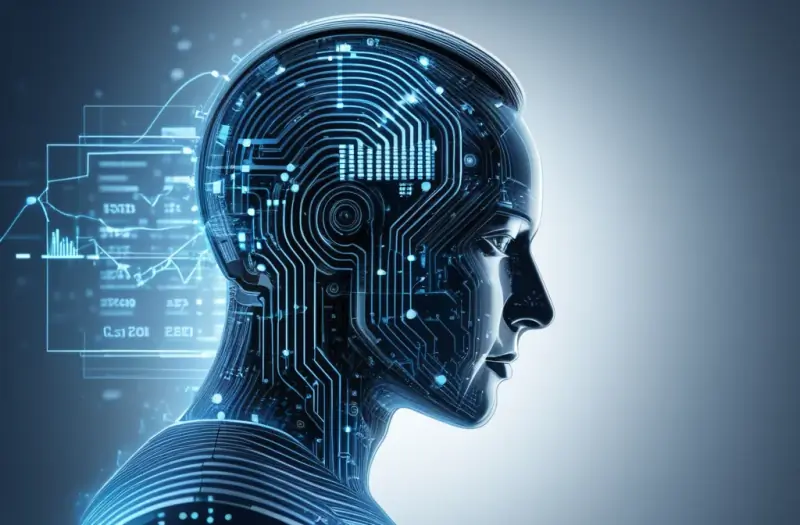
To illustrate the impact of AI in finance, let’s examine some real-world examples where AI has transformed financial strategies:
1. Robo-Advisors
Robo-advisors use AI algorithms to provide automated investment advice based on an individual’s financial goals and risk tolerance. These platforms offer personalized investment recommendations and portfolio management services, making financial planning more accessible and cost-effective.
2. Algorithmic Trading
Algorithmic trading involves using AI algorithms to execute trades based on predefined criteria. These algorithms analyze market data and execute trades at high speeds, optimizing trading strategies and maximizing returns.
3. Credit Scoring
AI-driven credit scoring models assess an individual’s creditworthiness by analyzing a wide range of financial data. These models provide more accurate credit assessments and help lenders make informed lending decisions.
Challenges and Considerations in Implementing AI in Finance
While AI offers numerous benefits, it also presents challenges that need to be addressed:
-
Data Privacy: The use of AI in finance involves handling sensitive financial data. Ensuring data privacy and compliance with regulations is crucial to protect client information.
-
Ethical Concerns: The implementation of AI raises ethical questions regarding transparency, bias, and fairness. It is essential to address these concerns to build trust in AI-driven financial solutions.
-
Integration with Existing Systems: Integrating AI solutions with existing financial systems can be complex and require significant investment. Financial institutions must plan and execute these integrations carefully to avoid disruptions.
Future Trends in AI for Financial Services

The future of AI in finance promises continued innovation and advancements. Some emerging trends to watch for include:
-
AI-Driven Personalized Financial Planning: Advances in AI will enable even more personalized financial planning and investment strategies, tailored to individual preferences and goals.
-
Enhanced Risk Management: AI will continue to improve risk management practices by providing more accurate predictions and scenario analyses.
-
Integration with Blockchain Technology: The combination of AI and blockchain technology will enhance security, transparency, and efficiency in financial transactions.
FAQs
What is AI in finance?
AI in finance refers to the use of artificial intelligence technologies to improve financial services, including predictive analytics, automated analysis, and personalized financial planning.
How does AI enhance financial forecasting?
AI enhances financial forecasting by analyzing historical data, market trends, and sentiment to predict future financial outcomes with greater accuracy.
What are the benefits of AI-driven financial solutions?
The benefits include enhanced efficiency, improved accuracy, cost reduction, personalized services, and better fraud detection.
What are some real-world applications of AI in finance?
Real-world applications include robo-advisors, algorithmic trading, and AI-driven credit scoring.
What challenges are associated with implementing AI in finance?
Challenges include data privacy, ethical concerns, and integration with existing systems.
Conclusion
AI is undeniably revolutionizing financial strategies by bringing unprecedented advancements to the industry. From enhancing forecasting accuracy to automating complex tasks, the impact of AI in finance is profound and far-reaching. As we continue to explore and implement AI-driven solutions, the future of finance promises to be more efficient, accurate, and personalized.
Key Takeaways
- AI in finance is transforming how financial strategies are developed and implemented.
- Machine learning and smart algorithms enhance predictive analytics and financial forecasting.
- AI-driven solutions offer benefits such as improved efficiency, accuracy, and personalized services.
- Real-world applications of AI include robo-advisors, algorithmic trading, and credit scoring.
- Challenges such as data privacy and ethical considerations must be addressed to fully leverage AI in finance.
By understanding and embracing the potential of AI, financial professionals can stay ahead in an increasingly competitive landscape and deliver innovative solutions that drive success.

AI in Government: Transforming Public Services
Introduction

In today’s rapidly evolving world, the integration of Artificial Intelligence (AI) in governance is no longer a distant dream but a reality that is transforming the way governments operate. We are witnessing a profound shift as AI technologies are being embedded into the very fabric of public administration, ushering in a new era of efficiency, transparency, and innovation. As public servants and innovators, we must embrace this transformation to ensure that our government remains responsive, agile, and capable of meeting the needs of its citizens.
The potential of AI-powered public services is immense. From automating routine administrative tasks to making more informed policy decisions, AI is poised to revolutionize the public sector. But with great power comes great responsibility. As we navigate this transition, it’s crucial to address the ethical and governance challenges that accompany the widespread adoption of AI in the public domain.
The Rise of AI in Public Administration

Government AI Implementation: A New Paradigm
The adoption of AI in public administration is not just a technological upgrade; it is a complete reimagining of how government functions. AI-driven government solutions are enabling us to automate processes that were once manual and time-consuming, freeing up valuable resources to focus on more strategic initiatives. For example, AI can streamline the processing of social services applications, reducing the time it takes for citizens to receive benefits.
Moreover, AI for government efficiency is making it possible to analyze vast amounts of data in real-time, providing policymakers with insights that were previously unattainable. This data-driven approach is crucial for crafting policies that are not only effective but also equitable. By leveraging machine learning in government, we can predict trends, assess the impact of policies, and make adjustments in real-time, ensuring that our governance remains dynamic and responsive.
AI in Public Policy: Shaping the Future
One of the most promising applications of AI in governance is its potential to revolutionize public policy management. AI-enhanced governance allows us to simulate the outcomes of different policy options, helping us to identify the most effective solutions before they are implemented. This predictive capability is invaluable in a world where the consequences of policy decisions can have far-reaching impacts.
Additionally, AI can help us design more inclusive policies by identifying and mitigating biases that may exist in traditional decision-making processes. **AI

AI in Government: Transforming Public Services Efficiently
Artificial Intelligence (AI) is no longer confined to tech startups and private enterprises—it’s making significant strides in the public sector, transforming the way governments function. With its ability to analyze vast amounts of data, optimize processes, and predict future trends, AI offers unparalleled opportunities for government operations. As a result, AI is ushering in a new era of smarter, more efficient governance, where public services are streamlined, and decision-making processes are enhanced.
Have you ever wondered how AI can help governments provide better services to citizens? Or how intelligent systems could improve efficiency and transparency in public administration? We live in an age where the expectation of seamless services is growing, and governments are turning to AI to meet these demands. The use of AI in government isn’t just a trend; it’s a transformative force reshaping everything from policy-making to day-to-day administrative tasks.
In this article, we’ll explore how AI is revolutionizing public services, boosting efficiency, and enhancing the quality of governance. We’ll look at the various AI applications being adopted by governments worldwide, from machine learning-driven policies to automated services, and how these innovations are paving the way for a smarter, more responsive government.
The Role of AI in Government: Enhancing Public Services
AI is being leveraged in multiple ways across the public sector to enhance the efficiency of services and reduce costs. From automating repetitive tasks to predicting future needs, AI applications are improving everything from healthcare delivery to traffic management. Governments are using AI to deliver smarter public services that benefit both citizens and employees.
One major area where AI is making waves is in public sector automation. Tasks that once required significant human labor are now handled by AI systems. For example, routine administrative processes like document verification, processing applications, and answering inquiries are now often automated using AI technologies. By automating these tasks, governments are not only saving time and money but also reducing human error and increasing service delivery speed.
Furthermore, AI is assisting governments in policy-making by providing predictive analytics. Governments can use AI to analyze vast amounts of data, identify trends, and anticipate future needs. For example, in urban planning, AI tools can predict traffic congestion, helping local authorities make data-driven decisions to improve transportation infrastructure. This predictive power makes governance smarter, more anticipatory, and better equipped to deal with challenges before they arise.
Smart Governance: How AI is Shaping Modern Government Operations

One of the most exciting developments in the use of AI within government is smart governance. This involves the use of AI technologies to create a more transparent, efficient, and responsive government. Smart governance systems can process real-time data to help public officials make informed decisions quickly, improving the responsiveness of government services.
For example, AI is being used in smart cities, where data from sensors and IoT devices are processed by machine learning algorithms to optimize city management. These AI systems can predict and manage everything from traffic flow to energy usage, helping cities run more efficiently. By using AI to monitor and manage urban infrastructure, governments can reduce costs and improve the quality of life for citizens.
Moreover, AI is also enhancing government transparency and accountability. With the help of AI-powered analytics, governments can track the performance of various public services, identify inefficiencies, and take corrective actions faster. This level of oversight and accountability makes it easier to build trust with the public and ensure that government resources are being used effectively.
AI for Decision Making: Improving Government Choices
The integration of AI into government decision-making processes is having a profound impact. By using machine learning algorithms and predictive analytics, governments can make more informed, data-driven decisions. AI systems can analyze historical data, forecast future trends, and help policymakers design solutions that are more effective and efficient.
For example, AI is being used in public health policy to predict disease outbreaks, allocate resources, and design preventative measures. Similarly, AI is applied in criminal justice systems to assess risks and recommend sentencing, helping judges make decisions based on empirical data rather than subjective judgment.
Furthermore, natural language processing (NLP) is being used to analyze citizens’ feedback and petitions, allowing governments to quickly identify and respond to pressing concerns. This AI-driven decision-making process helps ensure that the government’s actions are based on evidence and the needs of the public, rather than guesswork or bias.
AI-Driven Public Services: Enhancing Citizen Experiences

AI is also improving the direct interaction between governments and citizens. With the rise of AI-powered chatbots and virtual assistants, citizens can now access government services 24/7. These AI tools can answer questions, guide individuals through bureaucratic processes, and even help with completing forms—making public services more accessible and user-friendly.
Another area where AI is making a significant impact is in social services. Governments are using AI to assess eligibility for welfare programs, optimize resource allocation, and improve the overall delivery of benefits. AI-driven systems can also help identify individuals who may need additional support, ensuring that services are targeted to those who need them the most.
Moreover, AI in education is improving access to learning resources, offering personalized educational tools, and supporting administrative functions. AI-powered learning platforms can adapt to individual student needs, providing a more tailored and effective educational experience.
Machine Learning and Cognitive Computing in Government
The potential of machine learning and cognitive computing in government is immense. These technologies allow AI systems to learn from data, adapt to new situations, and make decisions autonomously. Governments are increasingly adopting these technologies to automate processes, improve forecasting, and streamline administrative tasks.
For example, cognitive computing is being used in healthcare to enhance diagnostic accuracy. AI systems can analyze medical records, identify patterns, and recommend treatments, all while reducing human error. In public safety, machine learning is used to predict crime hotspots and optimize the allocation of law enforcement resources.
With these advancements, governments can create more efficient, self-improving systems that reduce the burden on public employees and improve overall service delivery. However, the integration of these technologies also raises important questions about data privacy, security, and the ethical implications of autonomous decision-making.
Challenges and Ethical Considerations of AI in Government
While the benefits of AI in government are clear, there are also significant challenges and ethical considerations that need to be addressed. Data privacy is a major concern, as governments handle vast amounts of sensitive information. Ensuring that AI systems are secure and protect citizens’ data is crucial to maintaining trust in government systems.
Another challenge is bias in AI algorithms. If not properly trained, AI systems can inadvertently perpetuate biases, leading to unfair outcomes in decision-making processes. Governments must ensure that AI systems are transparent, accountable, and free from discriminatory practices.
Finally, the impact on jobs is another important issue. As AI systems automate more tasks, there is a risk of job displacement in the public sector. Governments will need to consider how to reskill workers and manage the transition to an AI-driven workforce.
Frequently Asked Questions (FAQs)
What are the main benefits of AI in government?
AI offers numerous benefits to government operations, including increased efficiency, cost savings, and enhanced decision-making. It also improves transparency and helps governments provide better services to citizens.
How is AI used in public services?
AI is used to automate processes, improve decision-making, and enhance citizen interactions with government services. Applications include AI-powered chatbots, predictive analytics, and machine learning for resource allocation.
Are there any risks associated with AI in government?
Yes, there are risks, including concerns about data privacy, algorithmic bias, and job displacement. Governments must address these challenges to ensure the responsible use of AI technologies.
How can AI improve decision-making in government?
AI can improve decision-making by providing predictive analytics, analyzing large datasets, and supporting evidence-based policy design. It helps policymakers make more informed and effective choices.
What is the role of AI in smart cities?
In smart cities, AI helps optimize infrastructure management, traffic flow, energy usage, and public services. It ensures that city operations are more efficient, cost-effective, and sustainable.
Conclusion
The use of AI in government is transforming public services by making them more efficient, transparent, and responsive. From improving decision-making processes to enhancing citizen engagement, AI is reshaping the way governments operate. However, as with any technological advancement, there are challenges that need to be addressed, including privacy concerns and the ethical implications of AI-driven decisions.
By harnessing the power of AI, governments can provide smarter services that meet the growing demands of citizens while also improving operational efficiency. The future of governance is digital, and AI will play a critical role in ensuring that public services continue to evolve in a positive direction.
Key Takeaways
- AI is improving public sector efficiency and decision-making.
- Smart governance powered by AI optimizes city and infrastructure management.
- Predictive analytics and machine learning are transforming policy design.
- Ethical challenges such as bias and privacy concerns must be addressed.
- AI is essential for creating responsive, transparent, and cost-effective government operations.

AI in Healthcare: Applications & Benefits
Artificial Intelligence (AI) is transforming industries around the world, and healthcare is no exception. As we explore the dynamic landscape of healthcare AI, it’s clear that the potential benefits are vast. From predictive analytics to personalized treatments, AI is changing the way we understand and deliver medical care. In this article, we’ll dive into how AI is revolutionizing healthcare, its applications, and the benefits it offers to both patients and healthcare providers.
The Rise of AI in Healthcare
AI in healthcare is rapidly evolving, offering innovative solutions to some of the industry’s most pressing challenges. AI for healthcare leverages advanced algorithms, machine learning, and data analytics to drive more efficient, accurate, and personalized care. This technology isn’t just futuristic—it’s already being implemented in hospitals, clinics, and research labs worldwide.
As we embrace this AI revolution, we must also consider its long-term potential. AI-driven healthcare innovations are creating a system that can analyze vast amounts of health data, provide accurate diagnostics, and support clinical decisions, ultimately leading to better outcomes for patients.
How AI Supports Healthcare Automation
Healthcare is a field rife with repetitive tasks, from administrative work to patient data entry. AI has the power to automate many of these tasks, freeing up time for healthcare professionals to focus on patient care. AI-powered healthcare systems can automate:
- Patient scheduling and management
- Billing and claims processing
- Electronic health records (EHRs) management
By automating these tasks, healthcare facilities can reduce human error, improve efficiency, and reduce costs. Additionally, intelligent healthcare systems can predict patient outcomes, schedule follow-up appointments, and ensure that clinical staff have all the information they need in real-time.
AI-Driven Patient Care: Enhancing Diagnosis and Treatment

One of the most significant areas where AI is making a difference is in AI-driven patient care. Machine learning algorithms have the ability to process vast amounts of patient data to identify patterns and provide more accurate diagnoses.
In the past, diagnostic accuracy was heavily reliant on the skill and experience of medical professionals. Now, with AI in medical imaging, healthcare providers can rely on algorithms trained to detect minute abnormalities in medical images such as X-rays, CT scans, and MRIs. These AI-powered medical systems offer faster, more accurate diagnostics, which can be crucial in life-saving situations.
Additionally, predictive healthcare AI can anticipate patient needs before they arise. By analyzing historical health data, AI can predict potential health issues and provide AI-enhanced healthcare services tailored to each patient’s unique medical history.
AI in Clinical Decision Support: Aiding Medical Professionals
Healthcare professionals are constantly under pressure to make fast, accurate decisions, often with limited information. AI for clinical decision support is a game-changer in this area. By integrating AI into decision-making processes, healthcare professionals can access data-driven insights that allow for more informed, timely decisions.
AI for clinical diagnostics is another area where technology plays a vital role. Healthcare machine learning algorithms can sift through years of medical data to provide evidence-based recommendations. This not only supports AI-powered healthcare innovations but also ensures that medical professionals are making decisions grounded in the latest research and patient-specific data.
AI in Medical Research: Accelerating Discoveries
The world of AI in medical research is accelerating the development of new drugs, treatments, and medical technologies. AI can analyze massive datasets much faster than humans, making it possible to identify new drug candidates, track disease outbreaks, and develop personalized therapies more efficiently than ever before.
For instance, AI in digital health research is being used to model the effects of new treatments on specific patient populations. Machine learning models allow researchers to simulate clinical trials, helping to reduce the time and cost associated with bringing new treatments to market.
AI for Health Data Analysis: Unlocking the Power of Information

Data is the lifeblood of modern healthcare, but without the right tools, its potential remains untapped. This is where AI for health data analysis comes into play. AI can analyze vast amounts of structured and unstructured data, uncovering insights that were previously hidden in medical records, clinical trials, and research papers.
With AI, healthcare providers can predict trends, identify at-risk populations, and personalize treatment plans. AI in medical artificial intelligence systems helps make sense of the deluge of health information, turning it into actionable insights that improve patient outcomes and reduce costs.
Challenges and Ethical Considerations of AI in Healthcare
While the benefits of AI in healthcare are immense, it’s important to consider the ethical challenges and potential risks. Patient privacy and data security are major concerns, especially with the vast amounts of personal health information being processed by AI systems. We must ensure that AI-powered medical systems comply with stringent data protection regulations to safeguard patient information.
Moreover, there’s the question of transparency in AI decision-making. It’s crucial for AI systems to be transparent and accountable, ensuring that healthcare professionals understand how decisions are made and can validate the recommendations provided by AI algorithms.
Ethical AI in Healthcare
To navigate these ethical challenges, AI in healthcare must be developed with a focus on:
- Data privacy and security
- Bias mitigation to avoid inequities in healthcare delivery
- Transparency in AI decision-making processes
By addressing these issues, we can build AI-powered healthcare systems that are both effective and ethical.
FAQs
How is AI transforming healthcare?
AI is transforming healthcare by improving diagnostics, streamlining administrative processes, and providing personalized treatment plans through data analysis and machine learning.
Can AI replace doctors in healthcare?
No, AI is not designed to replace doctors but to support them by providing data-driven insights that enhance decision-making and patient care.
What are the ethical concerns of AI in healthcare?
Ethical concerns include patient privacy, data security, and the transparency of AI decision-making processes.
How is AI used in medical imaging?
AI is used in medical imaging to analyze X-rays, CT scans, and MRIs, identifying abnormalities with greater speed and accuracy than traditional methods.
What are the benefits of AI in healthcare?
The benefits of AI in healthcare include improved diagnostic accuracy, personalized treatments, healthcare automation, and more efficient clinical decision-making.
Conclusion
AI is revolutionizing the healthcare industry by providing innovative solutions that improve patient care, streamline administrative tasks, and accelerate medical research. From AI-driven patient care to predictive healthcare AI, this technology is helping to make healthcare more efficient, accurate, and personalized.
As we move forward, it’s essential to continue addressing the ethical challenges that come with these advancements. By focusing on transparency, accountability, and patient privacy, we can ensure that AI delivers on its promise to revolutionize healthcare.
Key Takeaways
- AI is transforming healthcare by improving diagnostics, treatment, and administrative efficiency.
- AI-driven healthcare innovations are already being implemented to enhance patient care.
- Machine learning in healthcare supports clinical decision-making by providing data-driven insights.
- Ethical concerns, such as privacy and transparency, must be addressed as AI continues to evolve in the medical field.
- The future of healthcare AI holds the potential for more personalized, efficient, and accurate medical care.

AI in Society: Transforming Live with Smart Technology Today
As we witness smart technology redefine industries, reshape our communities, and challenge our cultural norms, one pressing question arises: Are we truly prepared for the societal transformation AI is ushering in, or are we still catching up? Let’s explore how artificial intelligence is impacting humanity at every level and why it matters more than ever that we understand its implications, ethics, and potential.
We are not merely adopting smart tools—we’re coexisting with a new form of intelligence. The consequences are profound, touching everything from the workforce and education to ethics and personal relationships. Join us as we explore the far-reaching effects of AI-driven societal change and what it means for us all.
The Rise of AI and Human Interaction
The integration of intelligent systems in daily life has evolved from novelty to necessity. Today, our smartphones, homes, and even cars are embedded with AI features that anticipate our needs and adapt to our behaviors. This marks a significant shift in AI and human interaction, where technology is no longer passive but responsive and personalized.
Consider how virtual assistants like Alexa or Siri can interpret voice commands, schedule appointments, or even control home lighting. These are examples of machine learning societal effects—where machines learn from our habits to serve us better. In healthcare, AI-driven apps remind patients to take medication, offer mental health support, and predict medical emergencies using real-time data.
But the emotional and psychological effects are equally important. As we become more dependent on digital assistants, our definition of human connection is shifting. Are we sacrificing empathy and human touch for efficiency? Or is AI enhancing our emotional bandwidth by offloading routine tasks?
AI and the Future Workforce

The workforce landscape is undergoing one of the most dramatic transformations since the Industrial Revolution. The rise of automation and intelligent systems presents both an opportunity and a challenge. AI and future workforce planning has become a top priority for businesses and governments alike.
According to a 2024 McKinsey report, nearly 800 million jobs globally could be displaced by automation by 2030, but new roles will also emerge—particularly in AI development, data ethics, and human-AI collaboration. The key lies in reskilling workers and adapting to new employment paradigms.
Here’s a quick comparison of the evolving job market:
| Job Category | At Risk from Automation | Created by AI Innovation |
|---|---|---|
| Data Entry & Admin Roles | High | AI Ethics Consultant |
| Retail & Customer Service | Medium | AI Interaction Designer |
| Transportation (e.g., truckers) | High | Autonomous Vehicle Technician |
| Manufacturing Assembly | High | Robotics Maintenance Specialist |
| Healthcare Support | Low | AI-Augmented Diagnostics Analyst |
Preparing for this shift means redefining education, embracing lifelong learning, and promoting a growth mindset.
Ethical AI Development and Governance
With great power comes great responsibility. As AI systems grow more autonomous, the urgency to address AI ethics and governance becomes clear. Who is accountable when an algorithm discriminates? How do we ensure transparency in AI decisions?
One of the most cited concerns involves algorithmic bias. A 2023 MIT study found that facial recognition software was less accurate for individuals with darker skin tones. This kind of bias reflects deeper societal inequalities embedded in the data used to train AI models.
Governments and regulatory bodies are catching up. The EU’s AI Act and the United States’ Blueprint for an AI Bill of Rights aim to implement safeguards against misuse and ensure ethical development. Key principles include:
- Transparency and explainability of AI systems
- Non-discrimination and fairness
- Privacy protection
- Accountability of AI developers
As creators and consumers, we must champion ethical AI development that aligns with human values.
AI in Social Services and Public Policy
The role of AI in social services is growing rapidly, particularly in public sectors such as welfare distribution, urban planning, and emergency response. Intelligent systems help identify patterns of poverty, predict public health risks, and optimize government resources.
For example, cities like San Diego use AI to reduce homelessness by predicting which individuals are at risk and intervening early. Similarly, AI is being deployed in education to personalize learning paths for students, ensuring no one is left behind.
Public policy also plays a critical role in shaping how AI benefits communities. Smart policymaking must focus on equity, accessibility, and inclusivity, ensuring that technological advances uplift all segments of society.
Robotics in Modern Society and Cultural Impact

From robotic waiters in restaurants to AI-powered companions in elderly care homes, robotics in modern society is moving from factories into our everyday lives. These robots are not just machines—they are part of our social fabric.
Japan’s Pepper robot, designed to understand human emotions, is used in schools and retail environments to interact with people more naturally. While exciting, this cultural shift raises important questions: Are we replacing authentic human interaction with programmed empathy? What are the long-term consequences of such a transformation?
Artificial intelligence cultural influence is reshaping norms and expectations—especially among younger generations who grow up interacting with smart devices. Pop culture, media, and even art are embracing AI, making it essential for us to redefine what it means to be human in an AI-enhanced world.
AI and Machine Ethics in Society
As AI becomes more embedded in critical decision-making, machine ethics in society can no longer be an afterthought. How do we program machines to understand human morality, empathy, or compassion?
Cognitive computing in communities offers solutions, such as emotion-detection software used in therapeutic settings or autonomous vehicles that make split-second life-or-death decisions. However, ethics in AI is not just about coding—it’s about philosophy, sociology, and law.
We must ask:
- Can machines be morally responsible?
- Should AI have rights or legal personhood?
- How do we audit black-box decision-making?
Leading thinkers like Dr. Kate Darling of MIT argue that robot rights are not science fiction anymore. Our actions today determine whether AI remains a tool—or becomes something more.
FAQs
What is the societal impact of artificial intelligence?
AI is transforming industries, relationships, jobs, and governance, offering both convenience and challenges that affect every aspect of modern life.
How does AI influence human behavior?
By automating decisions and interactions, AI reshapes how we think, work, and relate to one another, often encouraging efficiency over empathy.
Is AI ethical and unbiased?
Not inherently. AI reflects the data it’s trained on, and without proper oversight, it can perpetuate existing societal biases.
Can AI be used for public good?
Yes. From healthcare to education and disaster response, AI can drive social transformation when guided by responsible governance.
Will AI replace all human jobs?
Not all, but many roles will be redefined. AI is more likely to augment human capabilities than completely replace them in most sectors.
Conclusion
AI is no longer an isolated technological trend—it is an ever-expanding force reshaping our society, values, and future. As we integrate AI across every dimension of life, we must balance innovation with responsibility. From workforce shifts to ethical dilemmas and cultural changes, the impact is profound and unavoidable.
By proactively addressing the implications of artificial intelligence in society, we can ensure it remains a tool for empowerment rather than division. This requires open dialogue, inclusive policymaking, and continuous education.
We stand at a crossroads where the choices we make today will define the society of tomorrow. Let’s make them wisely.
Key Takeaways
- AI in Society is fundamentally transforming how we live, work, and connect.
- Smart technology is reshaping human interaction, workforce dynamics, and ethical standards.
- Responsible AI governance is crucial to avoid bias, inequality, and societal harm.
- Public services, culture, and education are increasingly AI-enhanced.
- The future demands collaboration between humans and machines to ensure inclusive growth.

AI in Transportation: Revolutionizing Mobility
The advent of artificial intelligence (AI) has undoubtedly sparked a revolution across numerous sectors, and transportation is no exception. From enhancing logistical efficiency to transforming the way we travel, AI in transportation is reshaping our mobility landscape in ways previously thought unimaginable. As we delve into the intersection of AI and transportation, we’ll uncover how these advancements are revolutionizing the future of mobility.
Introduction to AI in Transportation

Artificial intelligence in transportation is not just a buzzword; it’s a fundamental shift in how we approach travel and logistics. In recent years, we’ve witnessed an explosion of innovations driven by AI, making transportation more efficient, safer, and environmentally friendly. From autonomous vehicles to intelligent transportation systems, AI is the backbone of modern transportation solutions.
One of the most exciting aspects of AI’s role in transportation is its ability to learn and adapt. By leveraging machine learning in transport, systems can analyze vast amounts of data to make real-time decisions, optimize routes, and enhance overall performance. This evolution is set to redefine our daily commutes, freight logistics, and urban mobility.
The Role of AI in Enhancing Logistics
AI-Driven Transit Solutions
Intelligent transportation systems (ITS) are at the forefront of AI’s impact on logistics. By integrating advanced transportation AI, these systems provide real-time updates and dynamic route adjustments, significantly reducing travel times and increasing efficiency. Here’s how AI-driven transit solutions are making a difference:
- Predictive Analytics in Transportation: AI algorithms analyze traffic patterns, weather conditions, and historical data to predict and manage traffic flow, minimizing congestion and improving travel times.
- Automated Transportation Technologies: Autonomous vehicles, powered by neural networks in transportation, are transforming freight and passenger transport by reducing human error and increasing safety.
- AI-Enhanced Transportation Management: With the help of cognitive computing in logistics, fleet management is becoming more sophisticated, enabling better route planning, fuel efficiency, and maintenance scheduling.
Impact on Freight and Supply Chains
The integration of AI in logistics extends beyond passenger transport to include freight and supply chains. AI-powered systems are streamlining operations and enhancing efficiency. Some key benefits include:
- Optimized Inventory Management: AI in mobility helps businesses forecast demand and manage inventory more effectively, reducing costs and minimizing waste.
- Real-Time Tracking: Smart transport solutions provide real-time tracking of goods, allowing for better coordination and faster response to delays or disruptions.
- Enhanced Safety: Advanced AI technologies monitor and analyze data from various sensors to ensure the safety of goods during transit and prevent accidents.
Autonomous Vehicles: The Future of Mobility

The Evolution of Autonomous Vehicles
Autonomous vehicles are perhaps the most talked-about application of AI in transportation. These vehicles use a combination of sensors, cameras, and AI algorithms to navigate and operate without human intervention. The journey to fully autonomous vehicles has been marked by several key milestones:
- Early Prototypes: Initial models demonstrated basic autonomous capabilities, such as lane-keeping and adaptive cruise control.
- Advancements in Technology: With the integration of neural networks in transportation, current models can handle complex driving environments, including city traffic and unpredictable conditions.
- Regulatory and Safety Considerations: As technology advances, regulatory frameworks and safety protocols are evolving to ensure the safe integration of autonomous vehicles into our transportation systems.
Benefits of Autonomous Vehicles
The potential benefits of autonomous vehicles are immense. They include:
- Increased Safety: By eliminating human error, autonomous vehicles can significantly reduce accidents and fatalities.
- Improved Traffic Flow: Autonomous vehicles can communicate with each other to optimize traffic flow and reduce congestion.
- Enhanced Accessibility: These vehicles can provide greater mobility for individuals who are unable to drive due to age or disability.
Intelligent Transportation Systems: A New Era
Integration of AI in Urban Transportation
Intelligent transportation systems (ITS) are transforming urban mobility by integrating AI to create smarter cities. These systems use AI to manage and optimize various aspects of urban transport, including:
- Traffic Management: AI-driven solutions help manage traffic signals and adjust them based on real-time traffic conditions, reducing delays and improving flow.
- Public Transit Optimization: AI enhances the efficiency of public transit systems by optimizing routes, schedules, and capacity planning.
- Smart Parking Solutions: AI-powered parking systems provide real-time information about available parking spaces, reducing the time spent searching for parking and lowering emissions.
Enhancing Public Transit with AI
Public transit systems are benefiting greatly from AI advancements. Here’s how:
- Real-Time Updates: AI provides passengers with real-time information on bus and train schedules, delays, and route changes.
- Demand Forecasting: Machine learning in transport helps predict passenger demand, allowing for better resource allocation and service planning.
- Personalized Experiences: AI-driven apps offer personalized travel recommendations based on user preferences and travel history.
Challenges and Future Prospects

Addressing Ethical and Privacy Concerns
As AI becomes more integrated into transportation, addressing ethical and privacy concerns is crucial. Key issues include:
- Data Security: Ensuring that personal and travel data is protected from breaches and misuse.
- Bias and Fairness: Developing algorithms that are fair and unbiased, avoiding discrimination in transportation services.
- Autonomous Vehicle Ethics: Establishing ethical guidelines for autonomous vehicles to handle emergency situations and decision-making processes.
The Future of AI in Transportation
Looking ahead, the future of AI in transportation is promising. Emerging technologies and continued advancements in AI are expected to bring about:
- Seamless Integration: Greater integration of AI across all modes of transportation, creating a more cohesive and efficient mobility ecosystem.
- Sustainable Solutions: AI will play a key role in developing environmentally friendly transportation solutions, such as electric and autonomous vehicles.
- Enhanced Connectivity: Improved connectivity and communication between vehicles, infrastructure, and users, leading to smarter and more responsive transportation systems.
FAQs
What is the role of AI in transportation?
AI in transportation enhances efficiency, safety, and reliability by using data-driven insights and automation. It enables innovations such as autonomous vehicles, intelligent transportation systems, and predictive analytics.
How does AI improve logistics and supply chains?
AI improves logistics by optimizing inventory management, providing real-time tracking of goods, and enhancing safety through predictive maintenance and analytics.
What are the benefits of autonomous vehicles?
Autonomous vehicles offer increased safety, improved traffic flow, and enhanced accessibility for individuals who cannot drive.
What are intelligent transportation systems?
Intelligent transportation systems use AI to manage and optimize urban transportation, including traffic management, public transit, and smart parking solutions.
What challenges does AI face in transportation?
AI in transportation faces challenges related to data security, ethical considerations, and ensuring unbiased and fair algorithms.
Conclusion
The integration of AI into transportation is not merely a trend but a transformative force that is reshaping how we move and manage logistics. From the development of autonomous vehicles to the implementation of intelligent transportation systems, AI is driving advancements that promise to make our transportation networks smarter, safer, and more efficient. As we continue to embrace these innovations, the future of mobility looks increasingly promising.
Key Takeaways
- AI is revolutionizing transportation by enhancing efficiency, safety, and user experience.
- Autonomous vehicles are a major advancement, offering significant benefits in terms of safety and traffic management.
- Intelligent transportation systems are transforming urban mobility with real-time updates and improved public transit.
- Challenges such as data security and ethical concerns need to be addressed to fully realize the potential of AI in transportation.
Embracing these changes, we are not only stepping into a new era of mobility but also paving the way for a more connected and intelligent transportation future.

AI Internships: Gain Hands-On Experience
In today’s rapidly evolving technological landscape, artificial intelligence (AI) is one of the most sought-after fields. For students and professionals aiming to break into the industry, AI internships serve as an invaluable gateway. These programs not only provide practical experience but also empower the next generation of tech innovators with the tools and skills necessary to excel in AI development, machine learning, and data science. In this article, we’ll explore how AI internships are shaping future careers, the opportunities available, and why these programs are critical for anyone interested in the AI field.
The Importance of AI Internship Programs
The rise of AI internship programs signals a growing need for talent in the field. These internships are designed to immerse students in real-world projects that emphasize hands-on learning, which is crucial in developing technical skills and problem-solving abilities. Through these programs, interns are given the opportunity to collaborate with industry experts, learn from seasoned AI engineers, and work on groundbreaking technologies that have the potential to transform industries.
An AI internship provides a structured environment for students to learn while contributing to meaningful projects. Interns often participate in developing algorithms, fine-tuning machine learning models, or even working with cutting-edge data science techniques. This early exposure not only enriches their academic experience but also opens doors to career opportunities post-internship.
For those who want to pursue a career in artificial intelligence, there is no better time to start than with an internship that offers AI career opportunities.
Building AI Skills Through Internships
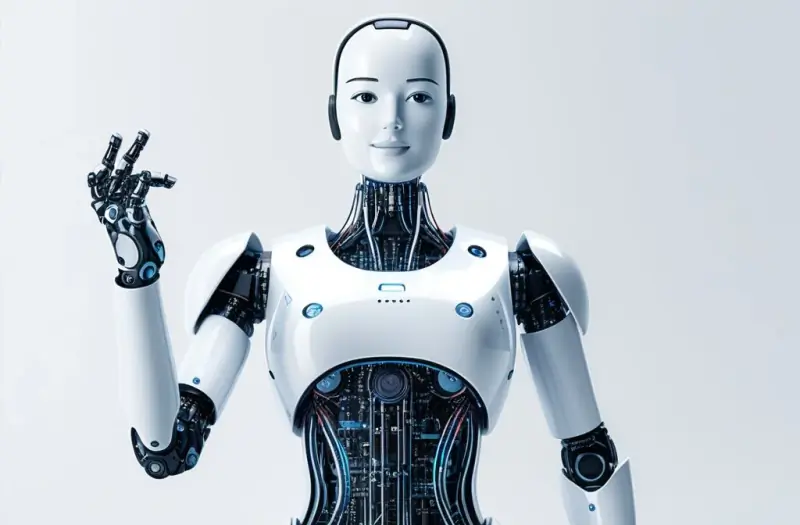
One of the greatest advantages of AI internships is the ability to build practical, job-ready skills. Universities and academic programs often provide a strong theoretical foundation, but internships allow students to apply these concepts in real-world scenarios. By working in AI-focused environments, interns learn how to handle large datasets, deploy AI models, and utilize tools like TensorFlow and PyTorch.
Interns may also gain experience in:
- Machine learning model deployment in a production environment.
- Data wrangling and preprocessing techniques crucial for effective AI training.
- Collaborating on AI research internships, where cutting-edge innovations are born.
In addition, many internships involve working with interdisciplinary teams, allowing interns to gain insights from other fields like computer vision, natural language processing (NLP), and deep learning internships. These cross-disciplinary collaborations are essential in today’s world, where AI technology is increasingly integrated into various industries.
AI Internship Programs for Different Career Paths
There are a variety of AI internship programs available, catering to different areas of interest within the field. Whether someone is interested in machine learning internships, data science internships, or AI engineer internships, there is likely a program that aligns with their career goals.
Machine Learning Internships
For those interested in developing algorithms that enable machines to learn, machine learning internships offer deep insights into model development and data analysis. Interns work on building and fine-tuning models that can recognize patterns, make predictions, or automate decision-making processes.
Data Science Internships
In data science internships, the focus is on extracting meaningful insights from data. Interns learn how to manipulate large datasets, visualize data, and apply statistical methods to drive decision-making. This path is perfect for individuals who love working with data and are interested in solving complex problems using AI techniques.
AI Research Internships
For those inclined towards academia or advanced research, AI research internships provide an opportunity to work on experimental AI technologies. Interns in these roles collaborate with research scientists to push the boundaries of what AI can do, often contributing to publications or patents.
Benefits of AI Internships for Students and Companies
Both students and companies benefit from AI internships. For students, the advantages are clear:
- Real-world experience that builds a strong resume.
- Networking opportunities with professionals already established in the AI industry.
- The chance to explore different specializations within AI and discover their niche.
For companies, AI internships offer a pipeline to fresh talent. By investing in the next generation of AI professionals, companies ensure that they remain competitive in an industry that is evolving at an unprecedented pace. Interns bring new perspectives and innovative ideas, which can be critical for maintaining an edge in AI development.
How to Find AI Internships
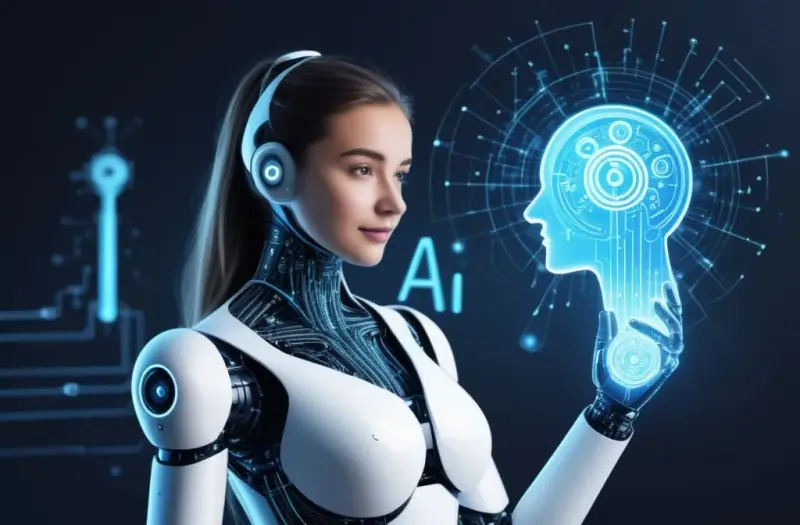
Finding the right AI internship can be challenging, but there are several avenues for success. Many universities partner with tech companies to provide AI student internships as part of their academic programs. Additionally, platforms like LinkedIn, Indeed, and specialized job boards are excellent resources for discovering AI placement opportunities.
It’s also helpful to reach out directly to companies known for their work in artificial intelligence. Many AI firms offer structured AI training programs designed to fast-track talent into full-time roles after the internship period.
What to Expect During an AI Internship
AI internships can vary in scope depending on the company and the role, but most involve working on teams that are developing or improving AI products. Interns may be responsible for:
- Building or optimizing AI algorithms.
- Analyzing data to train machine learning models.
- Collaborating on AI product development.
One key to success during an internship is the ability to learn quickly and adapt to new tools and technologies. Many interns also participate in regular team meetings, presenting their progress and learning from mentors. It’s important to be proactive, ask questions, and seek feedback to ensure that the internship is a valuable learning experience.
FAQs
What are the qualifications for an AI internship?
Most AI internships require candidates to have a background in computer science, data science, or a related field. Experience with programming languages like Python and familiarity with AI tools is often expected.
How long do AI internships last?
Internship lengths vary but typically range from 10 to 12 weeks during the summer. Some companies offer year-round internships, especially for students in cooperative education programs.
Are AI internships paid?
Yes, most AI internships are paid, particularly those offered by large tech companies. Compensation varies based on location and the level of expertise required.
Can AI internships lead to full-time jobs?
Yes, many companies use internships as a recruitment pipeline. Successful interns often receive offers for full-time roles after graduation.
What skills do I need to succeed in an AI internship?
Key skills include programming in languages like Python, familiarity with machine learning frameworks, problem-solving abilities, and strong communication skills.
Conclusion
AI internships provide a unique and invaluable opportunity to gain real-world experience in one of the fastest-growing fields today. Whether you’re interested in AI development, data science, or machine learning, internships can be the perfect stepping stone to a successful career. By participating in these programs, interns not only build essential technical skills but also establish themselves as part of the future AI workforce.
Key Takeaways
- AI internships offer hands-on experience in developing cutting-edge technologies.
- These programs help build essential skills in AI, machine learning, and data science.
- Internships serve as pathways to full-time AI careers, providing networking and learning opportunities.
- AI internship programs are available in various specializations, such as machine learning, data science, and AI research.
- Interns contribute to real-world projects while gaining experience in collaborating with industry experts.
By seizing the opportunity of an AI internship, we can empower the next generation of tech innovators to push the boundaries of what’s possible with artificial intelligence.

AI Job Listings: Find Your Future in AI
In today’s fast-paced job market, artificial intelligence (AI) is rapidly transforming the way employers and job seekers connect. With AI-driven job listings at the forefront, the recruitment landscape is evolving to offer more personalized, efficient, and targeted opportunities. This shift impacts not only how companies source talent but also how candidates approach their job search. We, as both recruiters and job seekers, must understand the profound changes AI brings to the employment ecosystem.
The Rise of AI-Driven Job Listings
AI-driven job listings have become a game-changer in recruitment. Artificial intelligence job platforms use complex algorithms to analyze massive amounts of data and connect job seekers with roles that match their skills, experience, and preferences.
How AI Enhances Job Matching
In the past, finding the perfect job could be a lengthy and frustrating process. Now, AI-powered recruitment tools can scan resumes and match them to job descriptions in seconds. This level of efficiency means intelligent job matching is faster and more accurate than ever before. By using machine learning job opportunities, companies can also predict which candidates will be the best fit based on historical hiring data and trends.
The Benefits of AI for Job Seekers
For job seekers, AI job marketplaces offer a range of benefits, including automated job search engines that streamline the job-hunting process. No longer do we need to comb through endless job boards; instead, AI-based platforms deliver relevant roles straight to our inboxes. Additionally, AI-enhanced employment platforms tailor search results to each candidate’s unique profile, increasing the chances of landing the ideal position.
AI-Powered Recruitment: Revolutionizing Hiring Processes

From the employer’s perspective, AI-based hiring tools are revolutionizing the recruitment process. Gone are the days of manually sifting through hundreds of resumes. AI can do this in a fraction of the time, allowing HR teams to focus on more strategic tasks.
Predictive Job Search Algorithms
One of the standout features of AI-driven recruitment is predictive job search algorithms. These algorithms not only match candidates to jobs but also predict which applicants are likely to excel in a particular role. Artificial intelligence recruitment automation helps companies fill positions quickly with highly qualified candidates, reducing time-to-hire and improving retention rates.
Reducing Bias in Hiring
One of the most promising aspects of AI job-matching systems is their potential to reduce unconscious bias in hiring decisions. While human recruiters may inadvertently favor certain candidates, AI employment solutions focus solely on qualifications and experience. This leads to a more diverse and inclusive workforce.
AI-Enhanced Job Platforms: A Win-Win for Employers and Job Seekers
AI-powered career platforms are proving to be a win-win for both employers and job seekers. These platforms use smart job board technology to offer advanced filtering options, such as location, salary, and company culture, ensuring that candidates find roles tailored to their needs.
Data-Driven Job Matching
Data is at the heart of AI-enabled job search platforms. With data-driven job matching, AI systems analyze large datasets from previous hires, company performance, and industry trends. This allows employers to pinpoint the right talent, while job seekers receive job listings that align with their career aspirations.
AI Talent Acquisition Tools
AI talent acquisition tools further enhance the recruitment process by offering features like automated interview scheduling, real-time feedback, and even personality assessments. These tools allow recruiters to manage the entire hiring cycle efficiently, improving the candidate experience and ensuring top talent is secured.
How AI is Shaping Workforce Dynamics

As AI job platforms continue to evolve, we are seeing a significant shift in workforce dynamics. The integration of machine learning employment solutions is leading to a more agile, responsive, and tech-driven workforce.
The Impact on Job Roles
AI is not only transforming how we find jobs but also the nature of the roles available. New positions centered around AI, such as AI engineers and data scientists, are in high demand. AI-powered job search engines help employers target these specialized candidates, ensuring companies can keep up with technological advancements.
Flexibility and Remote Work
In addition, AI is contributing to the rise of flexible and remote work. With AI-based hiring tools, employers can recruit talent from across the globe, breaking down geographic barriers. This shift toward remote work opens new opportunities for job seekers who previously may have been limited by location.
FAQs
How do AI job platforms work?
AI job platforms use algorithms to analyze both candidate data (like resumes) and job descriptions to match individuals with the best possible roles. This process is faster and more accurate than traditional recruitment methods.
Are AI-powered job listings better than traditional job boards?
Yes, AI-powered job listings are typically more efficient. They offer personalized job recommendations based on a candidate’s skills and experience, reducing the time spent searching for relevant roles.
Can AI remove bias in recruitment?
While AI has the potential to reduce bias by focusing on qualifications and skills, it’s important to remember that AI systems are only as unbiased as the data they’re trained on.
What industries are adopting AI in recruitment?
AI is being adopted across multiple industries, from tech and finance to healthcare and retail, as companies seek to streamline their recruitment processes and improve hiring outcomes.
How can job seekers benefit from AI job platforms?
Job seekers benefit from faster, more accurate job matches, personalized recommendations, and the ability to apply for roles that they may not have discovered on traditional job boards.
Conclusion
AI-driven job listings and recruitment tools are transforming the way we approach hiring and job searching. With AI-powered career platforms, predictive job search algorithms, and intelligent job-matching systems, the future of employment is more efficient, data-driven, and inclusive. Both employers and job seekers stand to benefit from these advancements, as AI continues to reshape the recruitment landscape.
Key Takeaways
- AI-driven job listings are revolutionizing how we find and fill positions, making the process faster and more accurate.
- Artificial intelligence job platforms benefit both employers and job seekers by streamlining job searches and reducing time-to-hire.
- Predictive job search algorithms offer a level of efficiency and personalization that was previously impossible.
- The use of AI in recruitment holds the potential to reduce bias, creating a more diverse and inclusive workforce.
- As AI continues to evolve, AI-powered career platforms will play a critical role in shaping the future of work.

AI Job Opportunities: Career Advice & Tips
In today’s rapidly evolving tech landscape, AI job opportunities are blossoming, offering a plethora of paths for those interested in forging a career in artificial intelligence. As we navigate through this transformative age, it’s essential to understand the various options available and how to position ourselves for success in this dynamic industry.
Artificial intelligence has emerged as a cornerstone of modern technology, impacting diverse sectors from healthcare to finance. As companies increasingly rely on AI to enhance their operations, the demand for skilled professionals continues to rise. This article serves as a comprehensive guide to help you explore career options in AI, providing insights into the job market, skills required, and strategic advice for success.
Understanding the AI Job Market
The AI job market is not just limited to traditional tech roles; it encompasses a wide range of industries and positions. The growing integration of AI technologies has opened doors to various AI-related job positions that cater to different skill sets and interests.
Overview of AI Employment Prospects
According to recent industry reports, the AI sector is expected to grow significantly over the next decade. A survey conducted by Gartner reveals that over 70% of organizations are planning to implement AI solutions by 2025. This trend indicates a substantial increase in employment in AI, highlighting the importance of preparing for a career in this field.
Key sectors that are hiring for AI roles include:
- Healthcare: AI applications in medical imaging, diagnostics, and personalized medicine.
- Finance: Use of machine learning for fraud detection and algorithmic trading.
- Retail: Enhancing customer experiences through AI-driven analytics and recommendation systems.
Types of Roles Available in AI
The diverse nature of the AI field means there are numerous job roles available. Some of the prominent job roles in AI include:
- Data Scientist: Specializes in data analysis and interpretation to drive decision-making.
- Machine Learning Engineer: Focuses on designing algorithms that enable machines to learn from data.
- AI Research Scientist: Conducts research to advance the field of AI and develop new technologies.
- AI Product Manager: Manages the development of AI products from conception to launch.
The variety in roles allows professionals to find positions that align with their strengths and interests, creating a fulfilling career path in the AI industry.
Skills Required for AI Careers

To thrive in the AI landscape, acquiring the right skill set is crucial. Here are the essential skills that will help you succeed:
Technical Skills
- Programming Languages: Proficiency in languages such as Python, R, and Java is fundamental for coding algorithms and working with data.
- Data Manipulation and Analysis: Understanding tools like SQL and frameworks such as TensorFlow and PyTorch is vital for data-driven roles.
- Mathematics and Statistics: A strong foundation in these areas is necessary for creating and understanding machine learning models.
Soft Skills
- Problem-Solving: The ability to think critically and find innovative solutions to complex challenges.
- Communication: Effectively conveying technical concepts to non-technical stakeholders.
- Collaboration: Working within interdisciplinary teams to leverage diverse expertise in AI projects.
These skills will not only make you a competitive candidate but also prepare you for a successful career in artificial intelligence.
Education and Training Programs for AI Careers
As the demand for AI expertise rises, so do the educational opportunities available. Here are some recommended pathways to pursue a career in AI:
Degree Programs
Pursuing a degree in fields such as computer science, data science, or artificial intelligence is a solid foundation. Many universities now offer specialized programs that focus on AI technologies and applications.
Online Courses and Certifications
Numerous online platforms provide courses tailored to AI skills. Some notable options include:
- Coursera: Offers specializations from universities on machine learning and AI applications.
- edX: Features professional certifications in AI from top institutions.
- Udacity: Provides nanodegree programs specifically focused on AI and machine learning.
AI Job Training Programs
Participating in training programs can help bridge the gap between theory and practical application. Look for AI job training programs that provide hands-on experience through projects and real-world scenarios.
Tips for Pursuing AI Careers

Navigating the AI job landscape can be challenging, but with the right strategies, you can enhance your chances of landing your dream job. Here are some practical tips:
Build a Strong Portfolio
Create a portfolio that showcases your projects, including personal projects, internships, or contributions to open-source. A strong portfolio demonstrates your skills and practical experience to potential employers.
Network with Industry Professionals
Engaging with professionals in the AI field can provide valuable insights and opportunities. Attend industry conferences, join relevant online forums, and connect with peers on platforms like LinkedIn.
Stay Updated on Industry Trends
The AI field is continuously evolving. Keeping abreast of the latest trends and technologies will not only enhance your knowledge but also showcase your commitment to the industry.
FAQs
What qualifications do I need to work in AI?
To work in AI, a degree in computer science, data science, or a related field is typically required, along with strong programming and analytical skills.
Are there entry-level positions available in AI?
Yes, many companies offer entry-level positions or internships for aspiring AI professionals, often requiring a foundational knowledge of programming and data analysis.
How can I enhance my resume for AI jobs?
Highlight relevant projects, skills, and certifications in your resume. Tailor your experience to match the specific requirements of the AI job you’re applying for.
Is coding necessary for AI roles?
Yes, coding is often essential in AI roles, particularly for positions like data scientist and machine learning engineer.
What are the salary expectations for AI professionals?
Salaries for AI roles can vary widely based on experience, location, and job title. However, many positions offer competitive salaries, often starting from £30,000 to £50,000 for entry-level roles, with potential for significant growth.
Conclusion
In conclusion, the landscape of AI job opportunities is vast and continuously expanding. By understanding the market, acquiring relevant skills, and strategically pursuing career paths, we can successfully navigate our way to fulfilling careers in this exciting field. The future of jobs in AI looks promising, and with the right approach, we can seize the opportunities it presents.
Key Takeaways
- The AI job market is diverse, with roles available across various industries.
- Essential skills for AI careers include programming, data analysis, and strong problem-solving abilities.
- Educational pathways range from degree programs to online certifications and job training.
- Networking and staying updated on industry trends are crucial for career success in AI.
By leveraging these insights, we can confidently embark on our journey into the world of artificial intelligence, ready to embrace the opportunities that await us.

AI Pendidikan: Transformasi Digital di Sekolah Masa Depan
Imagine stepping into a classroom where artificial intelligence (AI) guides every lesson, adapts to each student’s needs, and helps teachers identify the most effective ways to engage their students. This vision of AI in education is quickly becoming a reality as schools worldwide look for innovative ways to integrate technology into the learning experience.
With the rapid advancements in AI, educational institutions are beginning to harness the power of intelligent systems to create smart classrooms, personalized learning paths, and even automate grading. But what does this mean for the future of learning? How will AI reshape the very way we approach education? Are we ready for a revolution in the way we teach and learn?
These questions push us to reflect on the broader implications of AI in the classroom. From personalized learning to smarter, data-driven education systems, the integration of AI is transforming the future of education as we know it. In this article, we will explore the transformative potential of AI in schools, its benefits, and how it is reshaping educational experiences around the globe.
The Rise of AI in Education

The introduction of AI in education is not just a trend, it’s a significant shift in how we approach learning. AI is rapidly transforming traditional classrooms into interactive, adaptive learning environments. This transformation has been fueled by advancements in machine learning, which allows computers to analyze vast amounts of educational data and personalize the learning process for each student.
AI-powered educational tools, such as intelligent tutoring systems and adaptive learning platforms, are becoming integral parts of modern classrooms. These technologies offer tailored learning experiences that meet the individual needs of students. Instead of a one-size-fits-all approach, AI in education helps customize lessons based on a student’s strengths, weaknesses, and pace of learning. This results in a more engaging and effective learning experience.
Personalized Learning Through AI
One of the most significant benefits of AI in schools is its ability to provide personalized learning. AI can analyze a student’s progress in real-time, offering recommendations or changing the course of the lesson based on the learner’s performance. This adaptive learning system ensures that students receive the right level of challenge and support, improving their understanding and retention of the material.
- Tailored Content: AI helps design learning content that is suited to a student’s individual learning style and abilities.
- Real-Time Feedback: Students receive immediate feedback on their work, helping them understand mistakes and learn from them quickly.
- Individual Learning Paths: AI creates personalized learning paths that adjust in real-time, enabling each student to learn at their own pace.
These features allow for smarter classrooms, where teachers can focus more on facilitating discussions and guiding students through complex topics rather than spending time on administrative tasks.
AI-Based Education Tools Revolutionizing the Classroom
The rise of AI-powered teaching tools has paved the way for smarter educational systems. These tools help both students and teachers by automating various aspects of the learning process, from grading to content creation and more.
- Automated Grading Systems: AI-powered grading systems can automatically evaluate assignments, quizzes, and essays. This automation not only saves teachers a considerable amount of time but also provides instant feedback to students, promoting a more dynamic learning environment.
- Intelligent Tutoring Systems: These systems use AI to simulate a personal tutor, providing students with additional help when they need it. These systems can assess the strengths and weaknesses of individual students and deliver targeted learning experiences.
- Data-Driven Insights for Teachers: Teachers can use AI-powered platforms to gain insights into student performance. These systems analyze data from tests, assignments, and activities to help teachers understand where students are struggling and how to improve their instruction.
AI-based education tools are not only transforming how students learn but also how teachers teach, enhancing the overall educational experience.
Cognitive Computing in Education
Cognitive computing in education uses AI to simulate human thought processes, helping students engage with educational content more deeply. By leveraging cognitive computing, we can develop systems that enhance decision-making, problem-solving, and critical thinking skills in students.
These systems are designed to:
- Mimic Human Thought: AI helps replicate the way human brains process information, fostering deeper understanding and retention.
- Enhance Learning Experiences: Cognitive computing allows for interactive simulations, virtual learning assistants, and immersive experiences that encourage students to think critically and independently.
This type of AI is particularly useful in smart education systems that require students to engage with complex tasks and activities that stimulate higher-order thinking.
AI-Driven Curriculum and Virtual Learning Assistants

AI’s integration into curriculum design is changing how learning materials are created and delivered. AI can analyze trends, learning outcomes, and students’ needs to develop AI-driven curricula that are tailored to the evolving educational landscape.
Moreover, virtual learning assistants powered by AI are becoming more prevalent. These digital assistants offer students personalized help, answering questions, providing study materials, and assisting with homework. For educators, AI-driven tools assist with managing classroom dynamics, providing recommendations on teaching strategies based on individual student needs.
The Role of AI in E-Learning
With the advent of e-learning, AI is becoming a vital tool for creating digital education solutions that enhance remote learning. AI systems track students’ progress, assess their knowledge gaps, and suggest resources to help them improve.
Benefits of AI in e-learning include:
- Enhanced Engagement: AI-powered platforms offer interactive content that keeps students engaged and motivated.
- Personalized Learning Experience: Students have access to self-paced learning materials, and AI recommends relevant content based on their performance.
- Efficient Learning Pathways: AI identifies the best learning strategies and resources to help students achieve their goals.
Virtual classrooms and AI-driven e-learning systems are also making education more accessible, especially for students in remote areas.
Overcoming Challenges in AI Adoption in Schools
Despite the vast potential of AI in education, there are still several challenges that schools face when adopting these technologies. One of the most significant hurdles is the cost associated with implementing AI systems. Schools need to invest in both hardware and software to deploy AI effectively.
Another challenge is data privacy and security. With AI systems analyzing vast amounts of personal data, it’s crucial to ensure that student information is protected from misuse or cyberattacks. Schools must also ensure that AI systems are transparent and fair, avoiding biases that could impact educational outcomes.
Training Teachers for AI Integration
For AI to be truly effective in the classroom, teacher training is essential. Educators must be equipped with the skills and knowledge to use AI tools effectively. This involves not only understanding how AI works but also how to integrate it into lesson plans and student interactions.
FAQs About AI in Education
What is AI in education?
AI in education refers to the use of artificial intelligence technologies to enhance teaching and learning processes. It includes tools like intelligent tutoring systems, adaptive learning, and data-driven insights to improve education outcomes.
How does AI benefit students in the classroom?
AI benefits students by offering personalized learning experiences, real-time feedback, and smarter content delivery. It adapts to the individual needs of each student, helping them progress at their own pace.
Is AI replacing teachers?
AI is not meant to replace teachers. Rather, it supports teachers by automating administrative tasks, offering insights into student performance, and providing personalized learning experiences. Teachers remain essential for guiding students and facilitating learning.
What are the challenges of AI in education?
Some challenges include the high cost of implementing AI technologies, ensuring data privacy and security, and training teachers to effectively use AI tools in the classroom.
Conclusion
AI is undeniably transforming the future of education. From personalized learning to automated grading and AI-powered teaching tools, the potential of AI in education is vast. By embracing these technologies, we can create smarter classrooms that provide students with the resources and support they need to succeed. However, as with any technological advancement, challenges like cost, data privacy, and teacher training must be addressed to ensure the successful integration of AI in schools.
Key Takeaways:
- AI is revolutionizing education by creating personalized learning experiences.
- Smart classrooms and AI-powered teaching tools are enhancing educational outcomes.
- Despite its potential, there are challenges such as cost and data privacy that need to be addressed.
- The future of education is one where AI-driven systems help both teachers and students achieve better results.

AI Privacy & Security: Protecting Your Data
In today’s rapidly evolving digital landscape, artificial intelligence (AI) is transforming how we interact with technology, businesses, and each other. While AI offers countless benefits, it also brings significant challenges, particularly in the realm of data privacy and security. As we continue to integrate AI into various aspects of our lives, it becomes crucial to address the potential risks and ensure that our data remains protected. In this article, we will explore the importance of AI privacy and security, the measures needed to safeguard data, and the role of ethical AI in maintaining trust in intelligent systems.
The Growing Importance of AI Data Protection
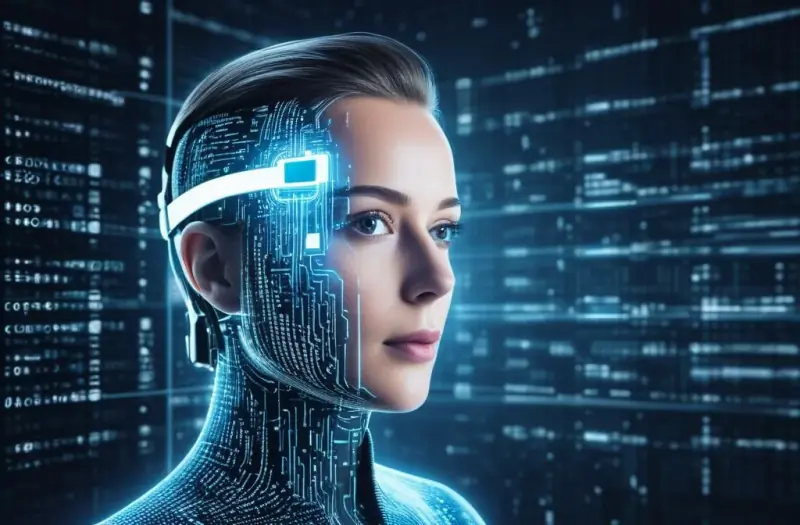
As AI systems become more sophisticated, they increasingly rely on vast amounts of data to function effectively. This data, often containing sensitive personal information, must be protected from unauthorized access and misuse. AI data protection is not just a technical requirement; it is a fundamental aspect of maintaining trust in these systems.
Why AI Data Protection Matters
AI’s ability to process and analyze large datasets enables it to provide personalized services, improve decision-making, and predict outcomes. However, with this power comes the responsibility to ensure that data is handled securely. Unauthorized access to AI systems can lead to data breaches, which may compromise personal privacy and result in significant financial and reputational damage.
To safeguard this data, we must implement privacy-preserving AI techniques that minimize the risk of data exposure. These techniques include AI data encryption methods, which transform data into a secure format that is difficult for unauthorized users to decipher. By encrypting data, we can ensure that even if a breach occurs, the information remains protected.
The Role of AI Data Governance
Effective AI data governance is essential for maintaining control over how data is collected, stored, and used. Data governance involves establishing policies and procedures to ensure that data is managed securely and in compliance with relevant regulations. This is particularly important as AI systems are often integrated into complex networks, making it challenging to track how data is shared and processed.
By implementing robust data governance practices, we can minimize the risk of data being misused or exposed to unauthorized parties. This includes establishing clear guidelines for data access, regularly auditing AI systems for compliance, and ensuring that data is only used for its intended purpose.
Machine Learning Security: Protecting Intelligent Systems
Machine learning security is a critical component of AI privacy and security. As AI systems become more advanced, they are increasingly targeted by cyberattacks that aim to manipulate or compromise their functionality. Protecting these systems from malicious actors is essential to maintaining their integrity and ensuring they operate as intended.
Common Threats to Machine Learning Security
AI systems are vulnerable to various types of attacks, including adversarial attacks, where malicious input is designed to deceive the system into making incorrect decisions. For example, a machine learning model used in facial recognition could be tricked into misidentifying individuals, leading to privacy violations or even security breaches.
To mitigate these risks, we must implement secure machine learning practices that protect AI systems from manipulation. This includes using AI risk management techniques to identify potential vulnerabilities and deploying defenses such as anomaly detection and AI data encryption to prevent unauthorized access.
Ensuring AI Trust and Transparency
Building AI trust is essential for the widespread adoption of intelligent systems. Users need to be confident that AI systems are secure, transparent, and operate in their best interests. Achieving this requires a combination of technical measures and ethical considerations.
One way to enhance AI trust is by promoting AI transparency. This involves providing clear explanations of how AI systems make decisions and ensuring that these decisions can be audited and verified. Transparency helps build user confidence and reduces the risk of bias or unfair outcomes.
AI Regulatory Compliance: Navigating the Legal Landscape

As AI continues to evolve, governments and regulatory bodies are introducing new laws and guidelines to ensure that AI systems are used responsibly. AI regulatory compliance is essential for businesses and organizations that use AI, as failure to comply with these regulations can result in significant penalties and legal challenges.
Key Regulations Impacting AI Privacy & Security
Several key regulations impact AI privacy and security, including the General Data Protection Regulation (GDPR) in Europe and the California Consumer Privacy Act (CCPA) in the United States. These regulations set strict requirements for how personal data can be collected, processed, and stored by AI systems.
Compliance with these regulations requires organizations to implement AI data governance practices, such as obtaining explicit consent from users before collecting their data and providing them with the ability to access, correct, or delete their information. Additionally, businesses must regularly audit their AI systems to ensure they are operating in accordance with the law.
The Future of AI Ethics and Responsible AI
As AI continues to advance, there is a growing emphasis on the importance of AI ethics and the need for responsible AI practices. This includes ensuring that AI systems are designed and used in a way that respects human rights, protects privacy, and promotes fairness.
One of the key challenges in AI ethics is addressing the potential for bias in AI systems. Bias can occur when AI models are trained on data that reflects existing societal inequalities, leading to unfair or discriminatory outcomes. To combat this, we must implement AI risk assessment processes that identify and mitigate potential biases in AI systems.
Frequently Asked Questions (FAQs)
What is AI data protection?
AI data protection refers to the measures taken to safeguard data used by AI systems from unauthorized access, breaches, or misuse. This includes encryption, secure data storage, and privacy-preserving AI techniques.
How does AI data encryption work?
AI data encryption involves converting data into a secure format that can only be accessed or read by individuals with the correct decryption key. This ensures that even if data is intercepted or accessed without authorization, it remains unreadable and secure.
Why is machine learning security important?
Machine learning security is crucial because it protects AI systems from cyberattacks that could compromise their functionality or lead to incorrect decisions. Ensuring machine learning security helps maintain the integrity and trustworthiness of AI systems.
What are the key regulations impacting AI privacy and security?
Key regulations impacting AI privacy and security include the General Data Protection Regulation (GDPR) in Europe and the California Consumer Privacy Act (CCPA) in the United States. These laws set strict guidelines for how personal data can be collected, processed, and stored by AI systems.
How can organizations ensure AI regulatory compliance?
Organizations can ensure AI regulatory compliance by implementing robust data governance practices, regularly auditing AI systems for compliance, and staying informed about relevant laws and regulations. Compliance also involves obtaining user consent for data collection and providing transparency around AI decision-making processes.
Conclusion
As AI continues to shape our world, the importance of AI privacy and security cannot be overstated. By implementing robust data protection measures, ensuring machine learning security, and adhering to regulatory requirements, we can safeguard the data that powers AI systems and build trust in these intelligent technologies. Responsible AI practices, including transparency and ethical considerations, will play a crucial role in ensuring that AI benefits society while minimizing potential risks.
Key Takeaways
- AI data protection is essential for maintaining trust in AI systems and preventing data breaches.
- Machine learning security protects AI systems from cyberattacks and ensures their integrity.
- AI regulatory compliance involves adhering to laws and guidelines that govern how AI systems handle personal data.
- Responsible AI practices, including transparency and ethics, are crucial for building trust in AI technologies.
By addressing these challenges and prioritizing AI privacy and security, we can harness the full potential of AI while safeguarding our data and privacy in the age of intelligent systems.

AI Regulations & Policies: A Comprehensive Guide
As we navigate the rapidly evolving landscape of artificial intelligence (AI), AI governance has emerged as a crucial area of focus. The advancement of machine learning and autonomous systems has led to significant progress in various fields, from healthcare to finance. However, these developments have also raised questions about how we can ensure that AI technologies are used responsibly and ethically. In this article, we will explore the future of technology governance and the critical role that AI regulations and policies will play in shaping it.
Understanding AI Governance: Why It Matters
In the world of AI, governance refers to the frameworks, policies, and regulations that oversee the development, deployment, and use of AI technologies. As AI continues to integrate into our daily lives, AI governance becomes increasingly important. But why does AI governance matter?
First, AI governance ensures that AI systems are developed and deployed in ways that align with societal values and ethical standards. Without proper governance, there’s a risk that AI technologies could be used in ways that are harmful or discriminatory.
Second, AI compliance standards help mitigate risks associated with AI, such as data privacy violations and algorithmic bias. By establishing clear rules and guidelines, AI governance helps to prevent the misuse of AI technologies.
Lastly, AI governance is essential for building public trust. As AI systems become more prevalent, people need to feel confident that these systems are being used responsibly. Effective governance can help build that trust by ensuring transparency and accountability in AI development and use.
The Evolution of AI Policy Frameworks

AI policy frameworks have evolved significantly over the past few years. Initially, many governments and organizations focused on promoting AI innovation with minimal regulatory oversight. However, as the impact of AI technologies has become more apparent, there has been a shift towards developing comprehensive AI policy frameworks that balance innovation with the need for regulation.
Early Approaches to AI Policy
In the early days of AI development, policies were often reactive rather than proactive. Governments and organizations would respond to specific incidents or concerns, such as data breaches or cases of AI bias, by introducing new regulations. This approach was largely fragmented and lacked a cohesive strategy for managing the broader implications of AI.
The Rise of Ethical AI Guidelines
As AI technologies continued to advance, there was a growing recognition of the need for ethical AI guidelines. These guidelines are designed to ensure that AI systems are developed and used in ways that are fair, transparent, and accountable. Key elements of ethical AI guidelines include:
- Algorithmic accountability: Ensuring that AI systems are designed in ways that allow for auditing and oversight.
- Data privacy laws: Protecting individuals’ data and ensuring that AI systems are not used to infringe on privacy rights.
- Transparency rules: Requiring organizations to be transparent about how their AI systems work and the data they use.
The Shift Towards Comprehensive AI Regulatory Frameworks
More recently, there has been a shift towards developing comprehensive AI regulatory frameworks. These frameworks are designed to address the full range of issues associated with AI, from ethical concerns to legal and technical challenges. Key components of AI regulatory frameworks include:
- AI risk management: Identifying and mitigating potential risks associated with AI technologies.
- AI deployment controls: Establishing rules for how AI systems can be deployed in different sectors.
- AI ethics policies: Ensuring that AI systems are developed and used in ways that align with societal values and ethical standards.
Navigating AI Compliance Standards
AI compliance standards are essential for ensuring that AI systems are developed and used responsibly. These standards provide a set of guidelines and best practices that organizations can follow to ensure that their AI technologies meet ethical, legal, and technical requirements.
Key Elements of AI Compliance Standards
AI compliance standards typically include guidelines for:
- Algorithmic transparency: Ensuring that AI systems are designed in ways that allow for auditing and oversight.
- Data privacy protection: Implementing safeguards to protect individuals’ data and prevent unauthorized access.
- Bias mitigation: Developing strategies to identify and reduce bias in AI systems.
Implementing AI Compliance in Practice
Implementing AI compliance standards in practice can be challenging, particularly for organizations that are new to AI technologies. However, there are several steps that organizations can take to ensure compliance:
- Conducting risk assessments: Organizations should regularly assess the risks associated with their AI systems and take steps to mitigate those risks.
- Training staff: Ensuring that all staff members understand the importance of AI compliance and are trained in best practices.
- Regular audits: Conducting regular audits of AI systems to ensure that they are operating in compliance with relevant standards and regulations.
The Role of AI Ethics Policies in Technology Governance

AI ethics policies play a critical role in ensuring that AI systems are developed and used in ways that align with societal values and ethical standards. These policies are designed to guide the development and deployment of AI technologies, ensuring that they are used responsibly and ethically.
Developing AI Ethics Policies
Developing effective AI ethics policies requires a multi-stakeholder approach that involves input from governments, industry, academia, and civil society. Key steps in developing AI ethics policies include:
- Identifying ethical principles: Determining the core ethical principles that should guide AI development and use, such as fairness, transparency, and accountability.
- Engaging stakeholders: Involving a diverse range of stakeholders in the development of AI ethics policies to ensure that they reflect the values and concerns of society as a whole.
- Implementing policies: Developing strategies for implementing AI ethics policies in practice, including training and education, monitoring, and enforcement.
Challenges in Implementing AI Ethics Policies
Implementing AI ethics policies can be challenging, particularly in industries where AI technologies are rapidly evolving. Key challenges include:
- Keeping up with technological advancements: Ensuring that AI ethics policies remain relevant as new technologies emerge.
- Enforcing compliance: Developing effective mechanisms for enforcing compliance with AI ethics policies.
- Balancing innovation and regulation: Striking the right balance between promoting innovation and ensuring that AI technologies are used responsibly.
FAQs: Common Questions About AI Regulations & Policies
What are AI governance and why is it important?
AI governance refers to the frameworks, policies, and regulations that oversee the development, deployment, and use of AI technologies. It is important because it ensures that AI systems are used in ways that align with societal values and ethical standards, helps mitigate risks associated with AI, and builds public trust in AI technologies.
How do AI compliance standards impact businesses?
AI compliance standards provide guidelines and best practices that businesses must follow to ensure their AI systems meet ethical, legal, and technical requirements. Compliance with these standards is essential for avoiding legal liabilities and ensuring that AI systems are used responsibly.
What are the key challenges in developing AI regulatory frameworks?
Key challenges include keeping up with rapid technological advancements, balancing innovation with regulation, and ensuring that regulations are flexible enough to adapt to new developments in AI technologies.
Why are AI ethics policies necessary?
AI ethics policies are necessary to ensure that AI systems are developed and used in ways that align with societal values and ethical standards. They help to prevent the misuse of AI technologies and ensure that AI systems are fair, transparent, and accountable.
How can organizations implement AI ethics policies?
Organizations can implement AI ethics policies by conducting risk assessments, training staff on ethical AI practices, engaging stakeholders in the development of policies, and conducting regular audits to ensure compliance.
Conclusion: The Future of AI Regulations & Policies
As we look to the future, it’s clear that AI regulations and policies will play a critical role in shaping the development and use of AI technologies. By establishing clear rules and guidelines, we can ensure that AI systems are developed and used in ways that align with societal values and ethical standards. However, developing effective AI governance frameworks will require ongoing collaboration between governments, industry, academia, and civil society. Together, we can navigate the challenges of AI governance and ensure that AI technologies are used responsibly and ethically.
Key Takeaways
- AI governance is essential for ensuring that AI systems are developed and used responsibly.
- AI policy frameworks have evolved from reactive approaches to comprehensive regulatory frameworks.
- AI compliance standards provide guidelines for ensuring that AI systems meet ethical, legal, and technical requirements.
- AI ethics policies are necessary for aligning AI development with societal values and ethical standards.
- The future of AI governance will require ongoing collaboration between multiple stakeholders to address the challenges of AI regulation.
By understanding and implementing effective AI regulations and policies, we can ensure that the future of AI is one that benefits all of society.
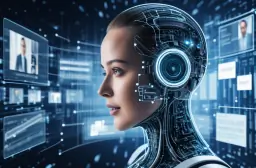
AI Speech to Image: Turn Words into Pictures
In the rapidly evolving world of technology, AI Speech to Image technology stands out as a groundbreaking advancement that is revolutionizing how we create and experience visual storytelling. This technology harnesses the power of artificial intelligence to convert spoken words into vivid images, opening up new realms of creativity and communication. As we delve into this transformative technology, we’ll explore its impact on various industries, the mechanisms behind its functionality, and its potential for the future.
Introduction to AI Speech to Image Technology
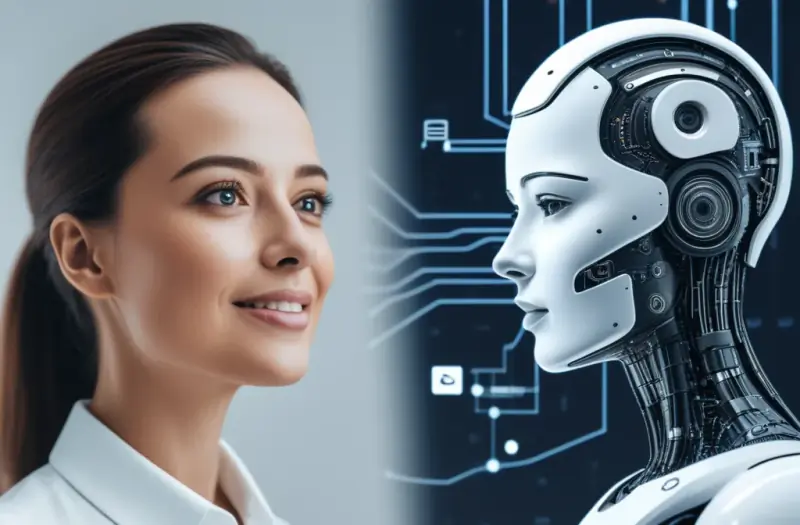
Artificial intelligence has come a long way from its early days, with developments in AI image synthesis and neural network image conversion pushing the boundaries of what’s possible. AI Speech to Image technology is a prime example of this progress, merging machine learning image processing with natural language processing to create images directly from verbal descriptions. This capability has profound implications for visual storytelling, enabling creators to transform words into detailed visuals with unprecedented ease and accuracy.
Our exploration into this technology begins by understanding the fundamental principles behind AI-driven visual translation. At its core, this technology leverages advanced algorithms and deep learning techniques to analyze and interpret spoken language, converting it into coherent and contextually accurate images. As we dive deeper, we’ll see how this process not only enhances creative possibilities but also democratizes content creation, allowing anyone with a vision and a voice to produce compelling visual narratives.
How AI Speech to Image Technology Works
The Process of AI-Driven Visual Translation
The AI-based picture generation process involves several key steps, starting with semantic image transformation. When a user provides a spoken description, the system first breaks down the text into meaningful components using natural language processing. Next, cognitive image synthesis algorithms interpret these components to generate a visual representation that aligns with the described content. This process is facilitated by sophisticated machine learning image processing techniques and neural networks.
- Speech Recognition: The technology first transcribes spoken words into text using advanced speech-to-text algorithms.
- Text Analysis: The text is then analyzed to identify key elements, themes, and contexts.
- Image Generation: Finally, the system uses deep learning image generation models to create an image that matches the text’s context and content.
Advanced Image Generation Technology
The success of AI art generation hinges on the use of computer vision image output and automated image rendering techniques. These methods enable the system to generate high-quality images that are not only visually appealing but also contextually relevant. By leveraging intelligent image creation techniques, the technology can produce images with intricate details and realistic features, further enhancing the storytelling experience.
Applications of AI Speech to Image Technology

Enhancing Creative Industries
The creative industries are among the first to benefit from this innovative technology. AI visual content creation tools are revolutionizing how artists, designers, and writers approach their work. By providing a way to instantly visualize concepts, these tools enable faster and more efficient brainstorming and design processes.
- Concept Art: Artists can quickly generate concept art from verbal descriptions, streamlining the creative process.
- Storyboarding: Writers can create storyboards for scripts and narratives with ease, bringing their ideas to life visually.
Transforming Education and Training
In educational settings, AI speech to image technology offers new ways to enhance learning and engagement. By converting spoken explanations into visual content, educators can provide a richer, more interactive learning experience. This technology also holds promise for training programs, where complex concepts can be illustrated in real-time to facilitate better understanding.
- Interactive Learning: Visual aids generated from spoken instructions can make complex subjects more accessible.
- Training Simulations: Real-time image generation helps create realistic training environments and scenarios.
The Future of AI Speech to Image Technology
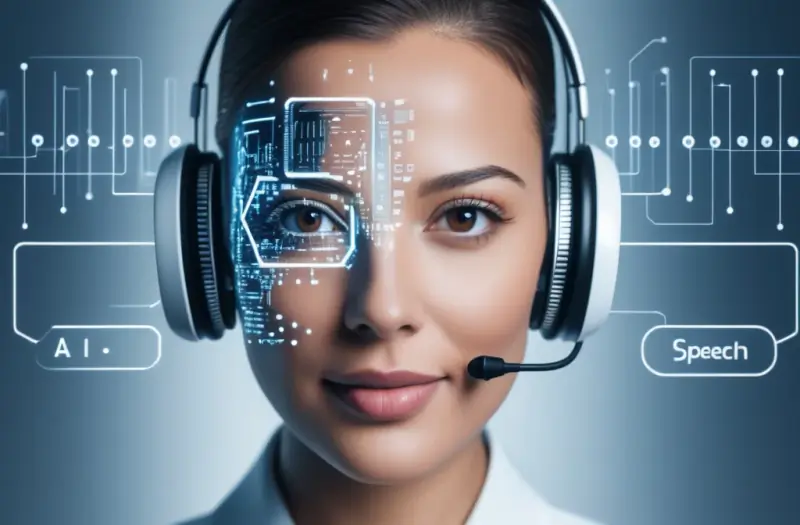
Potential for Innovation
Looking ahead, the future of AI-driven visual translation promises even more exciting developments. As the technology continues to advance, we can expect improvements in image quality, contextual accuracy, and user control. Innovations in deep learning image generation and artificial intelligence image generation will likely drive these advancements, expanding the possibilities for visual storytelling.
- Enhanced Realism: Future models may produce even more lifelike and detailed images.
- Greater Customization: Users may gain more control over the visual outputs, tailoring them to specific needs and preferences.
Ethical Considerations
With great power comes great responsibility. As we embrace these technological advancements, it’s crucial to consider the ethical implications of AI speech to image technology. Issues such as privacy, data security, and the potential for misuse must be addressed to ensure that these tools are used responsibly and ethically.
- Privacy Concerns: Safeguarding personal data and ensuring user privacy will be paramount.
- Misuse Prevention: Developing guidelines and safeguards to prevent the misuse of generated images is essential.
FAQs
What is AI Speech to Image technology?
AI Speech to Image technology converts spoken words into images using advanced AI algorithms, enabling the creation of visual content from verbal descriptions.
How does AI Speech to Image technology work?
It works by transcribing speech into text, analyzing the text for context, and using machine learning models to generate images based on the described content.
What are some applications of AI Speech to Image technology?
It is used in creative industries for concept art and storyboarding, as well as in education for interactive learning and training simulations.
What are the future prospects of AI Speech to Image technology?
Future advancements may include improved image quality, enhanced realism, and greater customization options, alongside addressing ethical concerns.
Conclusion
In summary, AI Speech to Image technology is transforming visual storytelling by bridging the gap between verbal descriptions and visual content. Its ability to generate detailed and contextually accurate images from speech opens up new possibilities for creativity, education, and communication. As we continue to explore and refine this technology, it holds the ultimate potential to revolutionize how we create and experience visual narratives.
Key Takeaways
- AI Speech to Image technology merges speech recognition with image generation for innovative visual storytelling.
- It leverages advanced neural network image conversion and deep learning techniques to produce accurate images.
- The technology has significant applications in creative industries, education, and beyond.
- Future developments promise enhanced realism and greater user control, along with important ethical considerations.
With these insights, we can better appreciate how AI Speech to Image technology is shaping the future of visual storytelling and its potential to inspire and innovate across various fields.

AI Startups & Investments: Funding & Trends
In the ever-evolving landscape of technology, AI startups and investments have become crucial in shaping our digital future. As we delve into the world of artificial intelligence ventures, it’s essential to understand how these dynamic machine learning companies are driving innovation and what opportunities they present for investors. This article explores the burgeoning field of AI entrepreneurship and how it influences the broader tech ecosystem.
AI technology is transforming industries at an unprecedented rate. With each new breakthrough, we see the potential for AI-driven startups to revolutionize various sectors, from healthcare to finance. Our goal is to unpack these developments and offer insights into the world of AI investment opportunities. Let’s navigate this exciting frontier together.
The Rise of AI Startups

The past decade has witnessed an explosion in AI innovation firms. These intelligent systems startups are at the forefront of technological advancement, leveraging machine intelligence to create solutions that were once thought to be science fiction.
Key drivers of this growth include:
- Increased Data Availability: The vast amounts of data generated daily provide a rich resource for training AI systems.
- Advancements in Computing Power: Modern processors and GPUs enable faster and more efficient machine learning processes.
- Funding and Support: Venture capital and government initiatives are fostering a vibrant environment for AI business ventures.
AI startups are not only innovating but also setting new standards in how we interact with technology. For example, companies specializing in machine learning are developing tools that enhance customer experiences through personalized recommendations and predictive analytics.
Emerging Trends in AI Startups
As we look closer at emerging trends, several notable patterns are shaping the future of AI startups:
- Focus on Niche Applications: Many startups are concentrating on specialized areas, such as healthcare diagnostics or automated financial advisory.
- Integration with IoT: The convergence of AI with the Internet of Things (IoT) is creating smarter, interconnected systems.
- Ethical AI Development: There is a growing emphasis on developing AI technologies that adhere to ethical guidelines and ensure privacy and security.
These trends highlight the diverse opportunities within the AI sector. By aligning with these innovations, AI innovation firms can carve out significant market share and drive industry-wide changes.
Investment Opportunities in AI
Investing in AI technology offers several compelling opportunities. However, it’s crucial to approach these AI sector investments with a well-informed strategy. Here are some areas where investors might find high potential:
- Early-Stage Startups: Investing in early-stage AI-driven startups can yield substantial returns as these companies grow and scale.
- Established Firms: Advanced AI startups with proven technologies present lower-risk opportunities.
- Sector-Specific Solutions: Companies providing solutions tailored to specific industries, like financial tech or health tech, can be particularly attractive.
Statistical insights show that AI investment continues to grow, with billions of dollars flowing into machine intelligence companies annually. This robust investment landscape signals a thriving sector with significant future potential.
Evaluating AI Investments
When considering investments in AI entrepreneurship, it’s essential to evaluate several factors:
- Technology Viability: Assess the technical feasibility and potential impact of the AI technology.
- Market Demand: Determine if there is a substantial and growing demand for the technology or solution.
- Team Expertise: Invest in teams with a proven track record and expertise in artificial intelligence.
These criteria help in making informed decisions and identifying promising AI business ventures.
Challenges and Considerations
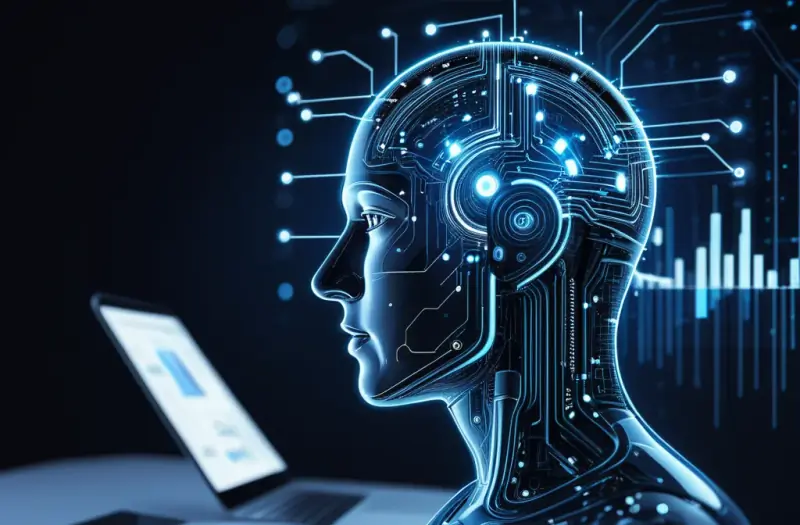
Investing in AI startups comes with its own set of challenges. Here are some considerations:
- Technological Complexity: Understanding the underlying technology and its potential is critical.
- Regulatory Environment: Stay updated on regulations affecting AI technology investments.
- Ethical Implications: Consider the ethical dimensions of AI applications, including data privacy and bias.
Navigating these challenges requires a thoughtful approach and thorough due diligence.
Future Outlook for AI Startups
Looking ahead, the future of AI innovation appears bright. Advances in machine learning and artificial intelligence will continue to drive new opportunities and reshape industries. The focus on ethical AI and sustainable practices will also play a significant role in shaping the direction of AI-driven startups.
Key takeaways from current trends and investment insights include:
- The potential for high returns in AI startups remains strong.
- Early-stage investments can be lucrative but come with higher risk.
- A balanced approach to evaluating opportunities is essential for success.
FAQs
What are AI startups?
AI startups are companies focusing on developing and applying artificial intelligence technologies to solve problems and create innovative solutions.
What makes AI investment opportunities attractive?
They offer the potential for high returns due to rapid technological advancements and increasing demand across various sectors.
How do I evaluate an AI startup for investment?
Consider factors such as technology viability, market demand, and the expertise of the team behind the startup.
What are the common challenges in AI investments?
Challenges include understanding complex technologies, navigating regulatory environments, and addressing ethical concerns.
Conclusion
In summary, AI startups and investments represent a dynamic and promising sector. By staying informed and carefully evaluating opportunities, we can harness the potential of artificial intelligence ventures to drive innovation and growth. As we continue to explore this exciting field, the future of technology is undoubtedly intertwined with the advancements of AI entrepreneurship.
Key Takeaways:
- AI startups are driving significant technological advancements.
- Investment opportunities vary from early-stage to established firms.
- Challenges include technological complexity and ethical considerations.
We hope this guide helps you navigate the vibrant world of AI technology investments and uncover the exciting potential of AI-driven startups.

AI Text to Image Generator: Turn Words into Art
In today’s rapidly evolving technological landscape, the fusion of artificial intelligence with creative processes is nothing short of revolutionary. AI text to image technology stands at the forefront of this transformation, turning written words into stunning visual representations. This remarkable advancement is reshaping how we create and interact with visual content, offering unprecedented opportunities for artists, marketers, and designers alike.
As we delve into this fascinating topic, we’ll explore how AI-driven image production is transforming our creative experiences. We’ll discuss the underlying technology, its applications, and the future potential of this innovative tool. Let’s embark on this journey to understand the profound impact of text-based image creation on various industries.
Understanding AI Text to Image Technology

AI text to image technology leverages the power of machine learning and neural networks to convert textual descriptions into visual art. This process involves several key components, including:
- Machine Learning Image Synthesis: Using algorithms to learn from large datasets of images and texts to create new, contextually relevant visuals.
- Neural Network Image Generation: Employing deep learning models that mimic human brain functions to generate images based on textual input.
- Text-to-Image Synthesis: The process of translating written descriptions into visual content, ensuring that the generated images accurately reflect the text.
How AI Text to Image Works
At its core, AI text to image technology relies on advanced deep learning image generation techniques. Here’s a simplified overview of how it works:
- Data Collection: The AI system is trained on vast amounts of data, including images and their corresponding textual descriptions.
- Training Phase: Neural networks analyze these data sets, learning to associate specific words and phrases with visual elements.
- Generation Phase: When provided with a new text input, the AI uses its learned knowledge to create a unique image that represents the described content.
This process involves complex computations and sophisticated algorithms, enabling the AI to produce visually appealing and contextually accurate images based on textual descriptions.
Applications of AI Text to Image Technology
AI-powered visual content creation is finding applications across various fields:
- Art and Design: Artists and designers are using AI to explore new creative possibilities and generate unique visual artworks.
- Marketing and Advertising: Marketers leverage AI to create compelling visual content that aligns with their campaigns and resonates with audiences.
- Entertainment: The entertainment industry utilizes AI to design characters, scenes, and other visual elements for films and video games.
These applications demonstrate the versatility and potential of AI text to image technology in enhancing creative workflows and driving innovation.
Benefits of AI Text to Image Technology

The advantages of AI text to image technology are numerous and impactful. Here are some key benefits:
- Enhanced Creativity: AI allows creators to experiment with new ideas and generate visuals that might be difficult to produce manually.
- Increased Efficiency: Automated image design speeds up the creative process, enabling quicker turnaround times for projects.
- Cost-Effectiveness: Reduces the need for extensive manual labor and expensive graphic design resources.
By integrating AI into creative processes, we can achieve higher levels of productivity and innovation, unlocking new possibilities for artistic and commercial endeavors.
Challenges and Considerations
While the potential of AI-driven image production is immense, there are challenges and considerations to address:
- Quality Control: Ensuring that AI-generated images meet quality standards and accurately reflect the intended message.
- Ethical Concerns: Addressing issues related to copyright, originality, and the ethical use of AI in creative fields.
- Bias and Representation: Ensuring that AI systems do not perpetuate biases or misrepresent certain groups or themes.
Navigating these challenges requires ongoing research, thoughtful implementation, and collaboration among stakeholders in the AI and creative communities.
The Future of AI Text to Image Technology

Looking ahead, the future of text-based image creation is bright and full of potential. As technology continues to advance, we can expect:
- Improved Accuracy: Enhanced algorithms and models will lead to more precise and contextually accurate image generation.
- Broader Adoption: Increased use of AI in various industries, from education to healthcare, to create tailored visual content.
- Collaborative Tools: Development of tools that allow seamless integration of AI into creative workflows, fostering collaboration between humans and machines.
The ongoing evolution of AI text to image technology promises to redefine the boundaries of creativity and visual communication.
FAQs
What is AI text to image technology?
AI text to image technology uses artificial intelligence to generate visual content based on textual descriptions. This involves machine learning and neural networks to create images that accurately reflect the given text.
How does AI text to image generation work?
The technology works by training neural networks on large datasets of images and texts. These networks learn to associate specific words with visual elements, enabling them to generate new images from textual input.
What are the benefits of AI-driven image production?
Benefits include enhanced creativity, increased efficiency, and cost-effectiveness. AI allows for faster and more diverse visual content creation, reducing the need for manual labor.
What are the challenges associated with AI text to image technology?
Challenges include ensuring image quality, addressing ethical concerns, and preventing bias in generated content. These issues require careful consideration and ongoing research.
What does the future hold for AI text to image technology?
The future promises improved accuracy, broader adoption across industries, and the development of collaborative tools that integrate AI into creative workflows.
Conclusion
AI text to image technology represents a significant leap forward in how we create and interact with visual content. By harnessing the power of machine learning image synthesis and neural network image generation, we can transform written descriptions into visually stunning art. This technology offers a wealth of benefits, including enhanced creativity, efficiency, and cost savings, while also presenting challenges that need to be addressed thoughtfully.
As we move forward, it’s exciting to anticipate the continued evolution of AI text to image technology and its impact on various fields. By staying informed and embracing these advancements, we can unlock new creative possibilities and drive innovation in our visual storytelling endeavors.
Key Takeaways
- AI text to image technology uses advanced algorithms to convert textual descriptions into visual art.
- Benefits include increased creativity, efficiency, and cost-effectiveness.
- Challenges such as quality control and ethical concerns need to be addressed.
- The future holds promise for more accurate, widespread, and collaborative AI-driven v

AI Text to Video: Generate Stunning Videos Effortlessly
In an era where storytelling is constantly evolving, we stand at the cusp of a groundbreaking transformation with the advent of AI Text to Video technology. As creators and storytellers, we are increasingly harnessing the power of artificial intelligence to turn written narratives into engaging visual content. This innovative approach not only enhances our creative capabilities but also reshapes how audiences consume stories.
The emergence of AI video generation is not just a trend; it represents a seismic shift in the way we craft narratives. By utilizing machine learning video synthesis, we can automate video production processes that traditionally required extensive time and resources. This article delves into the potential of AI-driven video transformation, exploring its implications for the future of storytelling.
The Mechanics of AI Video Generation
Understanding how AI video generation works is crucial for appreciating its potential. At its core, this technology leverages deep learning video processing and intelligent video synthesis to create video content from text inputs.
The Role of Artificial Intelligence in Video Creation
Artificial intelligence plays a pivotal role in automating video content creation. By analyzing the textual narrative, AI algorithms can identify key elements—such as characters, settings, and actions—transforming these into visual sequences. This process includes:
- Natural Language Processing (NLP): Understanding and interpreting the text to extract meaning.
- Image and Video Synthesis: Creating visuals that represent the narrative.
- Audio Integration: Adding voiceovers and sound effects to enhance storytelling.
With AI video generation, we can produce high-quality videos with minimal human intervention, thus maximizing efficiency.
Advantages of Automated Video Production
The benefits of adopting automated video production are manifold. Here are some key advantages:
- Cost-Effectiveness: Reduces the need for extensive production teams.
- Time Efficiency: Cuts down the production time from weeks to mere hours.
- Accessibility: Enables individuals and small businesses to create videos without substantial investment.
This democratization of video creation is significant. We now have the tools to tell our stories in a way that was previously reserved for large studios.
The Impact of AI-Driven Video Transformation on Storytelling

As we explore the transformative effects of AI on storytelling, it’s essential to recognize how these technologies change the way we convey narratives.
Enhancing Engagement through Visual Content
Visual storytelling is inherently more engaging than text alone. With video content automation, we can present complex narratives in a digestible format.
- Increased Viewer Retention: Studies show that viewers are more likely to remember information presented in video format.
- Broader Reach: Videos can be shared across various platforms, maximizing audience engagement.
By harnessing visual content AI, we are not just telling stories; we are creating immersive experiences that resonate with audiences.
The Future of AI Multimedia Creation
Looking ahead, the future of AI multimedia creation holds immense promise. As the technology matures, we anticipate several advancements, including:
- Improved Personalization: Tailoring videos to individual preferences.
- Interactive Storytelling: Allowing viewers to influence the narrative direction.
- Higher Quality Outputs: Advancements in deep learning will enhance the quality of generated videos.
These developments will ultimately lead to richer, more dynamic storytelling experiences.
Practical Applications of AI Text to Video Technology
In our professional practices, we can see a range of practical applications for AI text to video technology across various fields.
Marketing and Brand Storytelling
One of the most promising applications is in marketing. Brands are leveraging AI-driven video transformation to create compelling advertisements and promotional content.
- Dynamic Ad Creation: Automated video production allows for the rapid generation of tailored marketing materials.
- Engagement Metrics: Companies can analyze viewer engagement in real time, adjusting their strategies accordingly.
By integrating AI content creation into their marketing efforts, businesses can enhance their brand storytelling.
Education and E-Learning
In the realm of education, AI video solutions are revolutionizing e-learning experiences.
- Interactive Learning Materials: Educators can transform textual content into engaging lessons that cater to various learning styles.
- Scalable Content Delivery: Institutions can produce high volumes of educational videos to reach wider audiences.
The integration of AI into education allows us to create more effective learning environments.
Challenges and Considerations
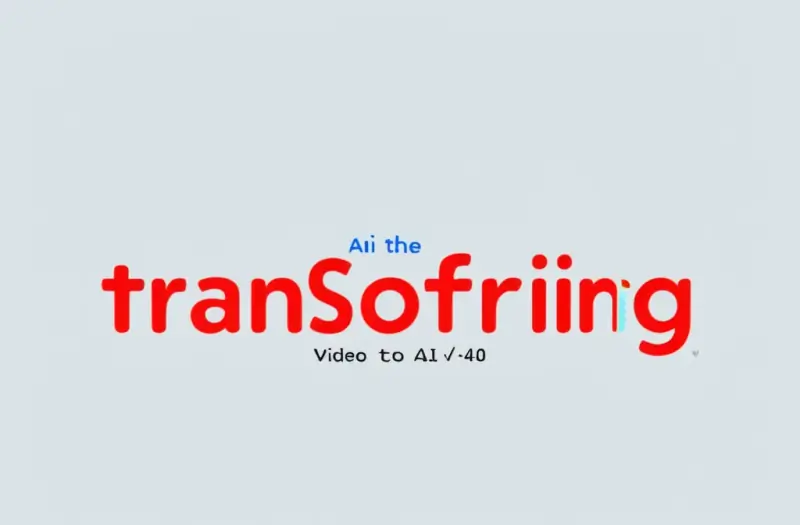
While the advantages are substantial, we must also acknowledge the challenges associated with AI video technology.
Ethical Considerations
The rise of synthetic video generation brings forth ethical dilemmas. Concerns about misinformation and the misuse of technology for deceptive practices must be addressed.
- Content Authenticity: How do we ensure that the content generated remains truthful and trustworthy?
- Intellectual Property: Who owns the rights to AI-generated content?
These ethical considerations will require ongoing discussions within our creative communities.
Technical Limitations
Despite its potential, current AI-driven video solutions do have limitations.
- Quality Control: While automation speeds up production, ensuring consistent quality remains a challenge.
- Context Understanding: AI might struggle with nuanced narratives, leading to misinterpretations.
As we advance, overcoming these limitations will be crucial for the technology’s evolution.
Frequently Asked Questions (FAQs)
What is AI Text to Video technology?
AI Text to Video technology uses artificial intelligence to convert written narratives into engaging video content.
How does AI video generation work?
It employs machine learning and deep learning algorithms to analyze text and generate corresponding visuals and audio.
What are the benefits of using AI for video production?
Benefits include cost-effectiveness, time efficiency, and greater accessibility for creators.
Can AI-generated videos replace traditional video production?
While they enhance efficiency, they may not entirely replace traditional methods, especially for complex projects requiring human creativity.
What ethical concerns exist with AI video creation?
Concerns include misinformation, content authenticity, and intellectual property rights.
Conclusion
The transformation of storytelling through AI Text to Video technology signifies a remarkable evolution in how we share narratives. With the power of AI video generation, we can create compelling, visually-rich content that resonates with audiences like never before. As we embrace these innovations, it’s essential to navigate the accompanying challenges responsibly.
Key Takeaways
- AI video generation enhances storytelling by turning text into engaging visual content.
- Automated video production streamlines the creation process, making it more accessible and cost-effective.
- Ethical considerations and technical limitations must be addressed to fully realize the potential of AI in storytelling.
- The future holds exciting possibilities for personalized and interactive storytelling experiences.
As we look ahead, we are excited to see how AI continues to shape the art of storytelling in the digital age.

AI Thought Leadership: Insights & Trends
In today’s rapidly evolving landscape, AI thought leadership has become a crucial driver of innovation and strategy. As organizations continue to adopt artificial intelligence, there is a growing need for forward-thinking leaders who understand how to navigate this dynamic field. In this article, we will explore how AI industry expertise is transforming industries, shaping future strategies, and empowering businesses to stay ahead in a competitive world.
The Importance of AI Thought Leadership in Modern Business
Artificial intelligence is no longer a distant concept but an integral part of our business ecosystems. AI leadership strategies are shaping how companies approach innovation, solve complex problems, and make data-driven decisions. To remain competitive, businesses must cultivate AI visionary leadership, which not only drives technological advancement but also aligns with broader strategic goals.
In today’s world, the role of AI strategic insights is clear. Leaders who harness the power of AI can identify trends, capitalize on opportunities, and mitigate risks. AI innovation leadership empowers organizations to move beyond reactive approaches and embrace proactive, transformative strategies that set them apart from their competitors.
By sharing AI expert opinions and insights, thought leaders play a critical role in guiding businesses through the complexities of AI adoption. They help organizations make informed decisions, reduce uncertainty, and inspire innovation at every level.
How AI Thought Leadership Drives Strategic Innovation

One of the key aspects of AI-driven thought leadership is its ability to drive strategic innovation. Thought leaders leverage their AI industry expertise to identify trends and opportunities, fostering a culture of continuous improvement. In a fast-paced world where new technologies emerge every day, AI innovation trends can redefine how companies operate and compete.
AI technology thought leadership enables businesses to stay at the forefront of innovation. By understanding emerging technologies like machine learning, natural language processing, and computer vision, thought leaders can craft forward-thinking strategies that anticipate future challenges and opportunities.
Organizations that embrace AI leadership development are more likely to succeed in the long run. This development involves not just adopting cutting-edge technologies but also cultivating a leadership mindset that prioritizes innovation, flexibility, and foresight.
Building AI Expertise: The Role of Knowledge Sharing
Knowledge sharing is at the heart of AI leadership perspectives. Thought leaders foster collaboration by promoting AI knowledge sharing across teams, departments, and industries. Through open discussions, case studies, and industry forums, AI thought leaders can inspire collective innovation and drive advancements in AI applications.
Building AI expertise development requires constant learning and adaptation. As AI technologies evolve, so must our understanding of how they can be applied to create value. Whether through conferences, research, or mentorship, thought leaders ensure that businesses remain well-equipped to leverage AI for long-term success.
Sharing AI influencer insights allows organizations to learn from pioneers in the field. These insights help companies identify potential pitfalls, overcome challenges, and implement AI leadership strategies that resonate with their unique needs.
AI Thought Leadership in Shaping the Future of Technology

As AI strategic leadership continues to grow, its influence on the future of technology cannot be understated. AI trend analysis provides businesses with the tools they need to navigate uncharted territory and stay ahead of the curve. Leaders who excel in artificial intelligence innovation help shape the future by pushing the boundaries of what is possible with AI.
Through AI impact analysis, companies can assess how AI technologies affect their operations, customers, and industry at large. This analysis informs decisions that drive innovation, streamline processes, and enhance customer experiences. By focusing on AI innovation leadership, organizations are better prepared to meet the demands of the future while ensuring they remain agile and resilient.
One of the key takeaways from AI leadership perspectives is the importance of balancing technology with ethics. AI thought leaders emphasize the need for responsible AI adoption, ensuring that technologies are used to benefit society while minimizing risks such as bias, privacy concerns, and job displacement.
The Benefits of AI Leadership in Business Strategy
Implementing AI leadership strategies in business operations offers numerous benefits. These include improved decision-making, enhanced efficiency, and the ability to anticipate market shifts. By incorporating AI strategic insights into their business models, companies can optimize their operations and maintain a competitive edge.
Some of the specific advantages include:
- Enhanced data-driven decision-making: AI thought leadership enables organizations to use data more effectively, leading to smarter, more informed decisions.
- Faster innovation cycles: Businesses can quickly adapt to new opportunities and challenges through AI-powered insights and foresight.
- Increased operational efficiency: AI helps automate routine tasks, allowing employees to focus on higher-value activities that drive innovation.
Incorporating AI-driven thought leadership into business strategies also fosters a culture of continuous learning and adaptation, essential for thriving in today’s rapidly changing environment.
Frequently Asked Questions (FAQs)
What is AI thought leadership?
AI thought leadership refers to the practice of using expertise and insights in artificial intelligence to guide organizations in their strategic planning, innovation efforts, and decision-making processes. It involves sharing knowledge, influencing industry trends, and driving the adoption of AI technologies in a responsible and impactful manner.
How does AI thought leadership influence business strategy?
AI thought leadership influences business strategy by providing organizations with the tools and insights needed to innovate, stay competitive, and anticipate future challenges. By leveraging AI-driven insights, businesses can optimize operations, improve decision-making, and capitalize on emerging trends.
Why is AI expertise important for leadership?
AI expertise is crucial for leadership because it equips decision-makers with the knowledge needed to harness AI technologies effectively. Leaders with a deep understanding of AI can better navigate the complexities of AI implementation, making informed decisions that drive innovation and competitive advantage.
How can companies benefit from AI thought leadership?
Companies benefit from AI thought leadership by gaining access to cutting-edge insights and strategies that help them stay ahead of the competition. AI thought leaders provide guidance on emerging trends, best practices, and innovative approaches that can enhance efficiency, reduce risks, and improve overall business performance.
What are some examples of AI innovation trends?
Some examples of AI innovation trends include advancements in machine learning, natural language processing, autonomous systems, and AI-powered decision-making tools. These trends are reshaping industries and creating new opportunities for businesses to innovate and differentiate themselves in the market.
Conclusion
As we move further into the era of AI, the importance of AI thought leadership in shaping the future of innovation and strategy cannot be overstated. From AI leadership development to AI-driven thought leadership, the impact of AI on business strategy is profound. Leaders who embrace AI will be better positioned to drive innovation, foster collaboration, and navigate the complexities of an ever-changing technological landscape.
Key Takeaways
- AI thought leadership plays a critical role in driving innovation and shaping business strategy.
- AI leadership strategies foster a culture of continuous learning and innovation.
- AI industry expertise helps organizations navigate the complexities of AI adoption and stay competitive.
- Knowledge sharing is essential for building AI expertise and driving collective progress.
- The future of business will be shaped by AI-driven thought leadership, emphasizing the need for responsible AI adoption and innovation.

AI-Powered Business Automation Trends Shaping 2025 Success
As we look ahead to 2025, automation isn’t just about replacing manual tasks with software. It’s about integrating intelligent systems that can analyze, adapt, and act with precision. From robotic process automation to cognitive AI that understands natural language, the trends shaping business automation are smarter, faster, and more transformative than anything we’ve seen before.
So, how can we stay ahead of the curve and ensure our business operations are not only efficient but future-proof? Let’s dive into the trends, technologies, and tactics that are redefining the way businesses operate—and discover how we can leverage them to shape a successful 2025 and beyond.
Embracing Hyperautomation: The New Standard of Efficiency
In 2025, hyperautomation is no longer a buzzword—it’s a baseline. By combining multiple forms of automation such as robotic process automation (RPA), machine learning workflows, and AI workflow optimization, businesses can create self-evolving ecosystems that learn and improve continuously.
Hyperautomation allows us to:
- Integrate disparate systems through intelligent connectors
- Replace repetitive processes with cognitive automation
- Leverage real-time data for automated decision-making
For example, a logistics company using hyperautomation could have autonomous business processes that detect delivery delays, reroute shipments, and inform customers—all without human intervention.
According to Gartner, “By 2025, 70% of organizations will implement structured automation programs to support digital transformation.” This makes hyperautomation a cornerstone of next-gen automation strategies.
Intelligent Task Automation Through NLP and Cognitive AI

2025 will see a dramatic shift toward natural language processing (NLP)-driven automation. Instead of relying solely on structured inputs, systems will increasingly understand and act on human language, whether spoken or written.
Here’s how we benefit:
- Customer service bots resolve inquiries through conversational AI
- Intelligent document processing extracts insights from unstructured data
- Email triage systems route messages with precision based on intent
Take financial services, for example. Intelligent process automation enables AI systems to read legal contracts, flag compliance issues, and suggest amendments—all in real time.
This fusion of AI in business operations and cognitive capabilities is setting the stage for fully automated enterprise solutions, capable of thinking, learning, and evolving alongside our teams.
Predictive Analytics Automation: From Insight to Action
In the age of data overload, AI-powered efficiency hinges on making sense of information faster than competitors. Predictive analytics automation leverages AI to anticipate trends, detect risks, and drive preemptive actions.
Benefits we gain include:
- Enhanced demand forecasting in retail using smart automation tools
- Proactive maintenance in manufacturing driven by AI-powered sensors
- Customer churn prediction in telecom with real-time data insights
| Use Case | AI Technique Used | Business Impact |
|---|---|---|
| Retail Forecasting | Predictive Modeling | Reduced overstock and out-of-stock events |
| Equipment Monitoring | Sensor Fusion + ML | Decreased downtime by up to 30% |
| Customer Retention | Behavioral Analytics + AI | Boosted loyalty by 15% year-over-year |
Predictive analytics automation doesn’t just help us react—it empowers us to act ahead of time. And that’s a serious competitive edge.
The Rise of Autonomous Business Processes
While automation once meant scripts and workflows, we’re now entering the era of autonomous business processes—systems that operate independently, without needing regular reprogramming.
Key drivers include:
- AI agents that learn from operations data and adjust on the fly
- Digital twins simulating business environments for real-time decision support
- Adaptive algorithms fine-tuning processes continuously
Think of a supply chain that optimizes itself based on weather forecasts, geopolitical events, and warehouse data. That’s AI-driven business automation at scale, transforming static processes into dynamic systems.
By adopting autonomous business processes, we minimize the need for micromanagement and unlock AI-powered scalability.
Smart Automation Tools Fueling Scalable Growth

As more platforms offer drag-and-drop tools integrated with AI, businesses of all sizes can build automated enterprise solutions without deep technical skills.
Popular smart business solutions include:
- Zapier and Make for workflow automation
- Salesforce Einstein for AI-enhanced CRM
- UiPath for enterprise-grade robotic process automation
These tools offer:
- Speed to deployment, with no-code or low-code interfaces
- Flexibility, adapting to diverse use cases from HR to finance
- Scalability, growing with your business without major overhead
Smart automation tools democratize access to intelligent task automation, allowing small teams to operate with the power of enterprise-scale tech.
AI-Powered Decision-Making in Real-Time
When we pair automation with AI-powered decision-making, we go beyond efficiency into the realm of strategic intelligence.
Examples include:
- AI in loan approval systems balancing credit risk and business rules
- AI-powered marketing platforms optimizing ad spend dynamically
- Autonomous procurement systems adjusting vendor contracts in real time
Real-time AI in business operations enables us to respond not just fast—but smart. We make better decisions, faster, backed by data and machine insights.
And with machine learning workflows, these systems improve every day, learning from outcomes and adapting to new patterns with minimal supervision.
Overcoming Implementation Challenges in AI Automation
Despite its promise, AI automation comes with hurdles. Resistance to change, data silos, and lack of talent can hinder progress.
Here’s how we overcome them:
- Upskill teams in automation tools and AI literacy
- Centralize data to ensure consistency across systems
- Adopt modular approaches, starting with pilot projects
A report by McKinsey highlights that companies that pilot AI automation in focused areas and scale gradually see 30% more success than those that pursue full transformations immediately.
AI-powered business automation isn’t an all-or-nothing game—it’s an incremental journey toward intelligent enterprise.
FAQs
What is AI-powered business automation?
AI-powered business automation refers to the use of artificial intelligence to automate complex business processes, often involving decision-making, language processing, and predictive insights.
How is AI different from traditional automation tools?
Traditional automation follows fixed rules, while AI systems learn and adapt based on data, making them more flexible and intelligent.
What industries benefit most from AI-driven automation?
Industries like finance, healthcare, retail, and manufacturing see immense value through cost savings, improved accuracy, and enhanced customer experience.
Can small businesses adopt AI-powered automation?
Yes, many smart automation tools now offer affordable, scalable solutions that small businesses can implement without deep technical knowledge.
What’s the difference between RPA and cognitive automation?
RPA mimics repetitive tasks, while cognitive automation adds intelligence through NLP, ML, and reasoning capabilities.
Conclusion
As we move toward 2025, AI-powered business automation is shaping the future of how we work, compete, and grow. By embracing hyperautomation, predictive analytics, smart tools, and autonomous processes, we create organizations that are not just more efficient—but more intelligent.
We must be proactive in upskilling our teams, centralizing our data, and piloting automation projects that align with business goals. The future belongs to businesses that act with foresight and automate with purpose.
Let’s harness the power of AI to lead the charge into 2025 with clarity, confidence, and capability.
Key Takeaways
- AI-powered automation is shifting from basic task automation to intelligent, autonomous processes.
- Hyperautomation, NLP, and predictive analytics are core trends for 2025 success.
- Smart automation tools make advanced AI accessible to businesses of all sizes.
- Real-time, AI-driven decision-making fuels agility and responsiveness.
- Success lies in gradual implementation, data readiness, and team empowerment.

AI-Powered Marketing Strategies to Boost Your ROI in 2025
We’ve entered an era where marketing is no longer just about creativity—it’s about intelligent automation. As marketers, we’ve always sought to connect the right message with the right audience at the right time. But now, with AI at our fingertips, we’re unlocking unprecedented precision and efficiency. AI-powered marketing strategies are no longer optional; they’re the keystone to competitive advantage and sustainable growth.
In this article, we’ll dive deep into how AI-driven marketing tactics are transforming the digital landscape in 2025. From machine learning marketing solutions to conversational AI and predictive analytics, we’ll walk through real-world applications, strategic benefits, and the best practices to maximize your return on investment.
The Rise of Intelligent Marketing: Why 2025 Demands an AI-First Approach
As we advance into 2025, AI is no longer confined to labs or experimental pilots. It’s at the heart of the most successful marketing strategies across industries—from retail to healthcare to finance.
Why now? Because consumers expect more. Personalization, speed, and seamless engagement are no longer perks—they’re the norm. And only AI can operate at the scale and speed required to meet these expectations consistently.
- AI adoption in marketing has increased by over 240% in the last three years, according to Salesforce.
- More than 60% of marketers now use AI to personalize customer experiences, and this number is growing.
- AI tools powered by neural networks and deep learning allow for smarter ad placements and real-time content adjustments.
This shift toward intelligent marketing strategies is driven by the capability to make sense of massive data streams, segment audiences more granularly, and execute with near-perfect timing. Human intuition is no match for an algorithm analyzing millions of behaviors simultaneously.
AI-Driven Personalization: Going Beyond Basic Targeting

The old way of segmentation—age, location, income—is quickly becoming obsolete. AI enables hyper-personalized marketing by tapping into behavioral patterns, intent signals, and contextual data.
AI-driven marketing tactics personalize user experiences in real-time using:
- Predictive analytics in marketing to forecast user behavior
- Personalized marketing algorithms that update based on live feedback
- Behavioral targeting AI that maps journey paths unique to each customer
For instance, Netflix uses AI to personalize thumbnails and recommendations based on user behavior. Similarly, e-commerce platforms like Amazon deploy deep learning advertising to recommend products in real time based on current and past interactions.
The result? Dramatically improved engagement, click-through rates, and ROI.
Smart Marketing Automation: Scaling Campaigns with Precision
Automation isn’t new, but smart marketing automation fueled by AI is on a different level. It enables marketers to:
- Optimize email send times using machine learning marketing solutions
- Automate A/B testing at scale using algorithmic marketing methods
- Adjust messaging based on sentiment analysis from natural language processing (NLP)-based marketing approaches
Case in Point: Sephora’s chatbot uses conversational AI to help users find products and schedule makeovers. This not only boosts engagement but also reduces customer service overhead.
By integrating automated marketing techniques, brands reduce manual effort while increasing campaign impact. AI handles the data. We handle the strategy.
Content Optimization with AI: Smarter, Faster, More Effective
We’ve all struggled with keyword stuffing, guessing headlines, and crafting CTAs that convert. Now, AI content optimization tools like Jasper, Copy.ai, and Surfer SEO are revolutionizing content creation.
These tools utilize:
- Cognitive marketing tools for semantic analysis
- LSI keywords for AI marketing to improve topical relevance
- Voice search marketing strategies to tailor for spoken queries
- Semantic SEO optimization to align with how AI engines like Google BERT understand context
For example, tools like Clearscope analyze top-performing content and recommend improvements based on AI algorithms, helping writers create search-optimized content without losing their creative edge.
Content is still king—but now, it wears a neural crown.
Predictive and Contextual Advertising: Catch Them Before They Search

With contextual advertising AI and predictive analytics in marketing, brands can anticipate customer needs—sometimes before the customer knows what they need.
Here’s how it works:
- Predictive models analyze purchase history, web behavior, and external factors (weather, trends).
- Ads are then tailored to these micro-signals, increasing conversion likelihood.
Take Spotify as an example: their AI doesn’t just recommend songs—it curates ads based on mood, time of day, and even the user’s device.
Advertisers leveraging predictive AI report up to a 30% increase in ad ROI, according to McKinsey.
| Ad Strategy | Traditional Methods | AI-Powered Approach |
|---|---|---|
| Targeting | Demographic-based | Behavioral + Contextual |
| Timing | Static Schedule | Real-time Decisioning |
| Message Optimization | A/B Testing | Continuous Learning via AI |
| Results Measurement | After Campaign Ends | Live Feedback & Adjustment |
Conversational AI: Real-Time Engagement That Converts
Chatbots have evolved. Today’s conversational AI marketing tools go far beyond scripted Q&As. They can:
- Understand nuance with natural language processing
- Personalize responses using user profile data
- Recommend products with AI-driven suggestions
From Drift’s B2B conversational bots to Meta’s AI assistant in Messenger, brands are using neural network marketing to automate lead qualification, upselling, and even checkout.
“Chatbots that use AI convert 3x more than traditional ones,” says HubSpot.
This tech provides human-like interaction at scale—without the human costs.
Overcoming Challenges in AI Marketing Integration
While the benefits are clear, integrating AI isn’t without challenges:
- Data silos and quality: Poor data leads to poor AI output.
- Privacy concerns: Customers demand transparency.
- Learning curve: Not all teams are AI-savvy.
Solutions include:
- Using centralized data warehouses
- Implementing transparent data policies (think GDPR compliance)
- Providing training or partnering with AI specialists
Don’t fear the learning curve—embrace it. The ROI is worth the climb.
FAQs
What are AI-powered marketing strategies?
These are marketing tactics that use artificial intelligence to automate, optimize, and personalize campaigns across various channels.
How do AI-driven marketing tactics improve ROI?
By targeting the right users at the right time with the right message, AI minimizes waste and maximizes engagement.
Is AI marketing expensive to implement?
Not necessarily. While some tools can be premium-priced, there are scalable options for startups and small businesses too.
What’s the difference between smart automation and traditional automation?
Smart automation uses real-time learning and adaptation, whereas traditional automation relies on pre-set rules.
How secure is AI in marketing regarding customer data?
AI tools must comply with data protection laws like GDPR and CCPA. Choose vendors with robust compliance practices.
Conclusion
AI-powered marketing strategies are more than just a trend—they are the new standard. Whether it’s through hyper-personalization, predictive advertising, or smart automation, AI empowers us to do more with less, scale with precision, and deliver meaningful engagement at every touchpoint.
But technology is only part of the equation. To truly maximize your ROI in 2025, we must also evolve our mindset—embracing experimentation, continuous learning, and data-informed creativity.
The future of marketing isn’t just AI-powered. It’s AI-optimized, AI-personalized, and AI-scaled.
Key Takeaways
- AI-powered marketing strategies are essential for staying competitive in 2025.
- Predictive analytics and machine learning deliver precision targeting and better ROI.
- Content optimization and conversational AI increase engagement and conversions.
- Marketers must overcome integration challenges with proper tools and training.
- The future is smart, scalable, and powered by algorithms that think like your customers.

AI-Powered Roundtable Discussions: Meeting Conclusions
In today’s fast-paced world, roundtable discussions have become essential for organizations striving for effective decision-making. By integrating AI deliberations into these discussions, we can enhance our ability to derive meaningful conclusions. This article aims to explore how AI-driven dialogues can transform our collaborative discussions and improve outcomes.
As we engage in these AI-facilitated discussions, we often discover that the integration of technology allows us to streamline our decision-making processes. By leveraging AI, we can analyze data more efficiently, recognize patterns, and ultimately reach consensus more effectively. This article will delve into the various aspects of AI-enhanced roundtables and their impact on our collective decision-making processes.
The Importance of Roundtable Discussions

Roundtable discussions are characterized by their informal yet structured approach to dialogue. These sessions foster an environment where every participant can voice their opinions and contribute to the conversation.
-
Encouraging Open Communication: One of the primary benefits of roundtable discussions is the encouragement of open communication. Participants feel valued and are more likely to share their insights, leading to richer conversations.
-
Diverse Perspectives: By bringing together individuals from various backgrounds, we gain access to a multitude of viewpoints. This diversity helps in AI-mediated conversations, allowing us to consider different angles and make well-rounded decisions.
-
Facilitating Consensus: The goal of any roundtable discussion is to reach a consensus. With AI’s ability to analyze sentiments and data in real time, we can quickly identify areas of agreement and disagreement, helping to steer discussions toward constructive outcomes.
AI’s Role in Enhancing Discussions
AI technology plays a crucial role in elevating the quality of our discussions. By incorporating AI into our deliberations, we can achieve more focused and productive sessions.
-
Data Analysis: AI can process vast amounts of data, providing insights that inform our discussions. For example, in decision-making sessions, AI tools can highlight key trends and statistics relevant to the topic at hand.
-
Real-Time Feedback: During discussions, AI can offer real-time feedback on participant engagement and sentiment. This helps us gauge the effectiveness of our conversations and make adjustments as needed.
-
Automating Administrative Tasks: AI can assist with logistical aspects, such as scheduling meetings and distributing agendas. By automating these tasks, we can dedicate more time to substantive discussions.
Best Practices for Conducting AI-Augmented Discussions

To maximize the benefits of AI-augmented discussions, we should adopt certain best practices. Implementing these strategies will enhance our collaborative efforts and lead to better outcomes.
-
Set Clear Objectives: Before the meeting, it’s essential to define clear objectives. This will help guide the discussion and ensure that all participants are on the same page.
-
Utilize AI Tools Effectively: Familiarize yourself with the AI tools available for your discussions. This could include analytics platforms or chatbots designed to facilitate dialogue.
-
Encourage Participation: Actively encourage all participants to share their thoughts. A balanced dialogue is crucial for achieving a comprehensive understanding of the topic.
-
Evaluate Outcomes: After the discussion, take time to assess the outcomes. AI can assist in summarizing the key points and decisions made during the meeting, providing a clear record for future reference.
Case Studies: Successful AI-Driven Discussions

Examining successful case studies can provide valuable insights into the effectiveness of AI-driven dialogues. Here are two notable examples:
-
Corporate Strategy Meeting: A multinational corporation utilized AI to analyze market trends and customer feedback during a strategy meeting. The AI-driven insights helped the team identify new growth opportunities, leading to a unanimous decision on their next steps.
-
Community Engagement: A local government body employed AI in a roundtable discussion aimed at improving community services. By analyzing resident feedback, the AI highlighted areas needing immediate attention, allowing the committee to prioritize their initiatives effectively.
Challenges of Integrating AI in Discussions
While the advantages of AI in strategic discussions with AI are evident, there are challenges to consider. Understanding these hurdles can help us navigate the integration process more effectively.
-
Data Privacy Concerns: With the rise of AI comes the responsibility to protect sensitive information. Participants may be hesitant to share their insights if they feel their data is at risk.
-
Dependence on Technology: Over-reliance on AI can hinder our critical thinking and decision-making abilities. It’s essential to balance AI input with human judgment.
-
Technical Literacy: Not all participants may be familiar with AI tools. Providing training and resources can help bridge this gap and encourage effective usage.
FAQs
What are roundtable discussions?
Roundtable discussions are informal yet structured meetings where participants share their opinions on a specific topic.
How does AI enhance these discussions?
AI enhances discussions by providing real-time data analysis, feedback, and automating administrative tasks, leading to more productive conversations.
What are some best practices for AI-augmented discussions?
Best practices include setting clear objectives, utilizing AI tools effectively, encouraging participation, and evaluating outcomes post-discussion.
What challenges might arise from using AI in discussions?
Challenges can include data privacy concerns, dependence on technology, and varying levels of technical literacy among participants.
Conclusion
In conclusion, roundtable discussions with AI represent a significant advancement in how we approach collective decision-making. By leveraging AI’s capabilities, we can foster more productive dialogues and derive meaningful conclusions. While challenges exist, the benefits of integrating AI into our discussions far outweigh the drawbacks.
Key Takeaways
- AI enhances the effectiveness of roundtable discussions by providing valuable insights and real-time feedback.
- Diverse perspectives lead to richer conversations and better decision-making outcomes.
- Best practices such as clear objectives and effective tool usage are vital for successful AI-augmented discussions.
As we continue to explore the intersection of technology and dialogue, the future of AI-mediated conversations looks promising, offering us new opportunities for collaboration and consensus-building.

Artificial Intelligence and Human Rights: Ethics & Fairness
Artificial Intelligence and Human Rights: Ethics & Fairness
In an age where artificial intelligence is transforming nearly every aspect of life, from healthcare to policing, we find ourselves asking hard questions about ethics, dignity, and fairness. AI is no longer just a futuristic concept—it’s already shaping the world we live in. But how do we ensure that it respects our most fundamental values?
As AI-powered systems begin to make decisions that once belonged to humans—like who gets a loan, how people are monitored, or which news we see—there’s a growing need to examine the relationship between artificial intelligence and human rights. This relationship is complex, powerful, and, if left unchecked, potentially dangerous.
What happens when intelligent systems challenge the rights they’re supposed to serve? That’s the question we aim to explore—because if AI is to serve humanity, then it must be held accountable to the very rights that define our shared human experience.
Understanding the Link Between AI and Human Rights
The connection between AI and human rights is more than just a topic for academics—it’s a critical issue for everyone. As we automate systems that impact access to jobs, housing, justice, and safety, we must ensure that these systems operate fairly and uphold fundamental rights.
Human rights refer to the universal principles that protect human dignity, freedom, and equality. These rights are guaranteed regardless of nationality, race, gender, or beliefs. When AI systems are built or trained without attention to these principles, they can reinforce or even deepen existing inequalities.
We’ve seen real-world cases where algorithms used in hiring or law enforcement exhibited algorithmic bias. This bias isn’t random—it often reflects the same systemic discrimination that exists in society. That’s why tying artificial intelligence to human rights frameworks is vital.
The Role of Ethical AI in a Democratic Society

As democratic societies, we are founded on the principle that all people are equal and deserve fair treatment. In this context, ethical AI isn’t just a technical goal—it’s a moral obligation. We need human-centric AI that puts people first.
AI ethics involves principles like:
- Transparency: People should understand how AI systems make decisions.
- Accountability: There must be someone responsible when AI causes harm.
- Inclusivity: Systems should work fairly for everyone, not just the majority.
By integrating these values, we can build responsible AI that strengthens, rather than threatens, the social fabric.
Why Fairness Is More Than Just Code
Many developers talk about “fairness in algorithms,” but fairness is not just a line of code. It’s a social and legal standard that evolves with context. What’s “fair” in one place might not be fair in another.
To ensure AI fairness, we need:
- Diverse data that doesn’t exclude minority voices.
- Evaluation of outcomes over time.
- Input from civil rights experts, not just engineers.
Fairness in AI means preventing discrimination and ensuring equal access. It’s about protecting civil liberties in every corner of the digital world.
Protecting Privacy Rights in the Age of AI
One of the most talked-about concerns in AI is privacy. With the rise of machine learning and neural networks, systems are collecting and analyzing vast amounts of personal data. But what happens to our privacy rights when that data is used without our consent?
Examples include:
- Facial recognition technology used in public without awareness.
- Predictive policing systems that surveil communities unfairly.
- Health tracking apps sharing sensitive data with third parties.
Data protection must be built into AI systems by default. Respecting privacy isn’t optional—it’s a right.
Algorithmic Bias and Discrimination: A Modern Civil Rights Issue
When AI systems are trained on biased data, they make biased decisions. This is called algorithmic bias, and it can have real consequences—from denying people jobs to unjustly flagging them for criminal behavior.
Key causes include:
- Incomplete or imbalanced training data.
- Lack of input from affected communities.
- Absence of fairness audits or bias testing.
AI systems must be tested and regulated like other critical infrastructures to prevent discrimination and uphold social justice.
Responsible AI and Accountability

When something goes wrong with an AI decision—say, an autonomous vehicle causes an accident—who is responsible? This question of AI accountability is at the heart of building trust.
We need:
- Clear policies outlining responsibility and liability.
- AI governance frameworks backed by law.
- Mechanisms for affected individuals to seek redress.
Without accountability, even the most “intelligent” systems can cause human rights violations with no consequences.
AI and Human Dignity: Preserving What Makes Us Human
At the core of universal rights lies the idea of human dignity. AI must be designed to serve—not replace or control—human beings. Whether it’s a robot assisting the elderly or a chatbot guiding a mental health conversation, the system must honor the person it serves.
This means:
- Avoiding objectification or emotional manipulation.
- Ensuring consent and human oversight.
- Prioritizing empathy and ethical design.
AI is powerful, but human dignity must remain non-negotiable.
Transparency in AI: Opening the Black Box
One major challenge in deep learning and cognitive computing is the lack of transparency. These systems can be so complex that even their developers don’t fully understand how decisions are made.
To solve this:
- Use explainable AI (XAI) models that show reasoning steps.
- Document how models are trained and tested.
- Open systems to public and regulatory review.
Transparent AI empowers users, builds trust, and helps protect human rights in every decision made by machines.
Inclusivity in AI Design and Deployment
AI should work for everyone—not just a select few. That means including people of different races, genders, abilities, cultures, and socioeconomic backgrounds in the design process.
We can promote inclusivity by:
- Recruiting diverse AI teams.
- Conducting community outreach and participatory design.
- Regularly auditing AI outcomes for impact on marginalized groups.
Inclusive design strengthens digital rights and reflects the values we stand for.
Regulation and Global AI Governance

To protect rights protection worldwide, we need strong AI governance. Countries and regions are now creating legal frameworks to regulate AI use in areas like surveillance, health, and finance.
Examples include:
- The EU’s AI Act.
- U.S. proposals for federal AI regulation.
- The United Nations’ call for global AI principles.
Global cooperation ensures that AI doesn’t become a tool of oppression or inequality but a force for shared progress.
The Role of Civil Society and Activism
Civil society plays a vital role in holding tech companies and governments accountable. Organizations that focus on AI ethics and human rights bring transparency to AI’s risks and impacts.
We’ve seen movements push back against facial recognition, fight algorithmic injustice, and demand rights-based AI design. These efforts help shape the future.
It’s a reminder that the fight for fairness doesn’t just happen in code—it happens in courtrooms, boardrooms, and city streets.
Ethical Guidelines and Industry Standards
Several organizations now offer ethical guidelines for AI development, including:
- IEEE’s Ethically Aligned Design.
- Google’s AI Principles.
- UNESCO’s AI Ethics Recommendations.
These guidelines offer best practices to avoid harm, respect autonomy, and support fairness. But voluntary principles are not enough. They must be paired with laws, audits, and user empowerment tools.
The Future of Human-Centric AI
As we move forward, we must center AI on human welfare. This means shifting away from purely profit-driven models toward solutions that address inequality, support mental health, and expand education.
Future innovations should:
- Empower local communities.
- Support sustainable development goals.
- Reflect values like freedom, justice, and equality.
This is the essence of human-centric AI—technology that enhances, not erodes, our shared humanity.
Educational and Workforce Impacts
The rise of AI affects not just rights but livelihoods. As automation changes how we work, we must protect the right to meaningful employment, fair pay, and lifelong learning.
Key strategies include:
- Investing in digital literacy and upskilling.
- Creating inclusive policies for AI-augmented jobs.
- Supporting workers affected by automation with safety nets.
AI and human rights go hand in hand in the economy of the future.
AI in Crisis and Humanitarian Contexts
AI can play a critical role in crisis situations—like disaster relief or refugee support. But these systems must respect human dignity and not exploit vulnerable populations.
Ethical use includes:
- Protecting identity and sensitive data.
- Avoiding surveillance or profiling.
- Ensuring informed consent.
We must use AI to support, not control, people in need.
FAQs
What are the human rights risks of AI?
AI can threaten privacy, lead to discrimination, and deny people access to justice, jobs, or services if used unfairly or without oversight.
How can AI be made fair and inclusive?
Through diverse data, transparent models, and inclusive design practices that reflect social justice and human dignity.
What role does transparency play in ethical AI?
Transparency helps users understand AI decisions, builds trust, and prevents abuse of power by making systems accountable.
Is regulation the best solution to AI harms?
Regulation is essential but must be paired with civil action, education, and ethical innovation to fully protect human rights.
Can AI and human rights work together?
Yes. With the right frameworks, AI can actually strengthen rights—expanding access, improving healthcare, and supporting equality.
Conclusion
As artificial intelligence becomes more powerful, the responsibility to ensure it supports human rights grows with it. By building systems that respect fairness, privacy, and dignity, we’re not just protecting ourselves—we’re shaping the future of humanity.
Let’s not wait for injustice to be automated. Let’s build AI that reflects our best values and serves all people, equally and justly.
Key Takeaways:
- Artificial intelligence and human rights must be deeply connected through law, ethics, and design.
- Fairness, transparency, and accountability are essential in responsible AI.
- Civil society, education, and regulation play key roles in shaping ethical technology.
- Human-centric AI is the future—and we all have a part in building it.

Artificial Intelligence Transforming Agriculture
The agricultural sector is undergoing a transformation, one that is set to redefine how we grow, manage, and harvest crops. Artificial intelligence in agriculture is driving this revolution, offering innovative solutions that not only increase productivity but also promote sustainability. As we dive into the world of AI in farming, let’s explore how these technologies are shaping the future of agriculture and how they benefit farmers, consumers, and the planet.
How AI is Changing the Face of Farming
Artificial intelligence has been making waves across various industries, and agriculture is no exception. From precision farming to smart agriculture, AI-driven tools are enabling farmers to make more informed decisions and optimize resources. In today’s fast-evolving agri-tech world, embracing AI is no longer just a trend—it’s becoming essential for sustainable farming practices.
AI in farming plays a significant role in managing resources such as water, soil, and energy. With the help of sensors, drones, and satellite imagery, AI can monitor crop health, detect disease outbreaks, and analyze weather conditions. This data-driven approach helps farmers reduce waste, maximize yield, and enhance the overall efficiency of their operations.
Moreover, AI technologies in agriculture have brought forth automated machinery and robotics, enabling farmers to focus on more critical tasks. Whether it’s planting seeds, watering crops, or harvesting produce, AI-powered farming solutions are making farming less labor-intensive and more efficient.
The Role of AI in Precision Farming

One of the most impactful applications of AI in agriculture is precision farming. This practice involves using advanced technologies to monitor and manage crops with incredible accuracy. Machine learning in agriculture allows farmers to predict crop yields, identify nutrient deficiencies, and optimize the use of fertilizers, pesticides, and water.
Precision farming ensures that every plant gets exactly what it needs to thrive. For example, AI-based soil analysis tools can determine the nutrient content of the soil and recommend the right type and amount of fertilizer. Similarly, AI crop yield prediction models use historical data and real-time conditions to forecast future yields, helping farmers make informed decisions about harvesting.
This data-driven approach not only increases crop yields but also minimizes environmental impact. By applying resources where they are needed most, precision farming reduces waste and promotes sustainable agriculture.
AI-Driven Farming Innovations and Robotics
In recent years, agricultural automation has taken a big leap forward, thanks to the integration of AI and robotics. Farming robotics powered by AI can perform a variety of tasks, from planting seeds to harvesting crops, with minimal human intervention.
For instance, autonomous tractors and drones equipped with AI systems can navigate through fields, monitor crop health, and even apply pesticides and fertilizers. These machines operate with precision and efficiency, reducing the need for manual labor and minimizing errors. Autonomous farming technologies are especially useful for large-scale farms, where managing vast areas of land would otherwise require significant manpower.
AI-driven agri innovations also extend to post-harvest processes, such as sorting and packaging. AI-powered sorting machines can identify and separate produce based on size, color, and quality, ensuring that only the best products make it to market. This level of automation speeds up production and improves overall quality control.
The Importance of Data in AI-Powered Agriculture
Data is at the core of AI in agriculture. With the increasing availability of sensors, drones, and satellite imaging, farmers can now collect vast amounts of data on their crops and soil. This data is then analyzed by AI-based agricultural systems, which provide actionable insights to farmers.
For example, predictive farming analytics use weather data, soil conditions, and historical trends to predict when to plant and harvest crops. This type of AI can also anticipate potential challenges, such as pest infestations or droughts, allowing farmers to take preventive measures.
Additionally, AI-powered soil analysis tools can analyze soil moisture, nutrient content, and pH levels, helping farmers determine the best time to water or fertilize their crops. By leveraging this data, farmers can make more informed decisions, reduce resource wastage, and ultimately improve crop productivity.
AI-Enhanced Agricultural Technology for Sustainable Farming

Sustainability is a major concern in modern agriculture, and AI is playing a critical role in addressing this challenge. AI-enhanced agricultural technology helps farmers adopt more eco-friendly practices by reducing the overuse of water, pesticides, and fertilizers.
For example, AI systems can optimize irrigation schedules based on real-time soil moisture data, ensuring that crops receive just the right amount of water without excess. This not only conserves water but also prevents soil erosion and nutrient depletion. Similarly, AI-driven pest management systems can detect early signs of pest infestations and recommend targeted treatments, reducing the need for harmful chemicals.
By promoting efficient resource management, AI in agribusiness is helping farmers embrace more sustainable and environmentally responsible farming practices.
Automated Crop Monitoring and AI-Based Crop Yield Predictions
One of the most significant advantages of AI in agriculture is its ability to monitor crops continuously and accurately. Automated crop monitoring systems use sensors, drones, and cameras to gather data on crop health, growth rates, and potential diseases. This real-time information allows farmers to take immediate action if any issues arise, such as drought stress, nutrient deficiencies, or pest infestations.
Furthermore, AI crop yield prediction models provide farmers with accurate forecasts based on historical and real-time data. These predictions help farmers plan their harvests more effectively, ensuring that crops are collected at the optimal time for maximum yield and quality.
With AI-enhanced agricultural technology, farmers can be more proactive, rather than reactive, in their crop management strategies, leading to better outcomes and higher profits.
FAQs
What is AI in agriculture?
AI in agriculture refers to the use of artificial intelligence technologies, such as machine learning, robotics, and data analytics, to optimize farming practices and improve crop productivity.
How does AI help in precision farming?
AI helps precision farming by providing farmers with real-time data on soil conditions, weather patterns, and crop health, enabling them to make informed decisions about resource allocation.
Can AI replace human labor in farming?
While AI can automate many farming tasks, it is unlikely to completely replace human labor. Instead, AI will assist farmers by taking over repetitive and time-consuming tasks, allowing them to focus on more complex aspects of farming.
How does AI contribute to sustainable agriculture?
AI contributes to sustainable agriculture by optimizing resource use, reducing waste, and promoting eco-friendly farming practices. AI-driven tools help farmers conserve water, reduce chemical use, and improve soil health.
Conclusion
Artificial intelligence in agriculture is revolutionizing the way we grow, manage, and harvest crops. From precision farming to automated crop monitoring, AI is helping farmers optimize their operations, increase yields, and embrace more sustainable practices. As technology continues to evolve, we can expect even more innovations in AI-powered farming solutions that will further transform the agricultural industry.
Key Takeaways
- AI in farming is transforming agriculture through data-driven solutions and automation.
- Precision farming ensures crops receive exactly what they need, increasing yields and reducing waste.
- AI-driven farming innovations like robotics and autonomous machinery are making farming more efficient and less labor-intensive.
- AI-powered agricultural technologies promote sustainability by optimizing resource use and reducing environmental impact.
- The future of agriculture will be shaped by continuous advancements in AI and agri-tech innovations.

Boost AI Productivity: Smart Tools for Maximum Efficiency
Can we truly unlock our full potential at work—or are we just scratching the surface by doing things the old-fashioned way?
In today’s hyper-connected digital age, productivity is no longer just about working harder—it’s about working smarter. From scheduling meetings to analyzing complex data, artificial intelligence has quietly become the powerhouse behind high-performing teams and fast-moving enterprises. And yet, many of us still rely on traditional tools and manual workflows, missing out on the vast opportunities AI offers.
So here’s the big question: If AI can automate our daily grind, organize our chaos, and even help us make smarter decisions, why aren’t we all using it to its full potential? In this article, we’ll explore the latest AI-powered tools, break down how they can boost productivity, and share real-world strategies that can help you and your team become more efficient than ever before.
Understanding AI Productivity: The New Work Paradigm
When we talk about AI productivity, we’re referring to the seamless integration of artificial intelligence into our workflows to boost performance, eliminate repetitive tasks, and enhance decision-making. It’s a shift from manual hustle to smart efficiency—and it’s transforming how we operate in the workplace.
Artificial intelligence efficiency isn’t just a buzzword anymore. It involves machine learning algorithms and cognitive computing that mimic human thinking, enabling systems to learn from data, identify patterns, and perform tasks without constant human oversight. From automated content generation to intelligent inbox filtering, AI is redefining how we manage our time and focus.
Let’s not forget the sheer power of smart automation. AI tools can handle customer service, project tracking, and even writing reports. This means we can focus more on strategic thinking and creative tasks—areas where humans truly excel.
Intelligent Task Management: Getting More Done with Less Effort
Managing tasks is often one of the biggest drains on our productivity. Juggling deadlines, tracking progress, and assigning roles can eat up hours every week. But with intelligent task management tools, powered by AI, that challenge is becoming a thing of the past.
Smart task automation tools like ClickUp, Trello with Butler, and Asana’s AI integrations automatically sort priorities, assign responsibilities, and monitor project status. These tools learn from your workflow and adapt—giving you suggestions, flagging potential delays, and keeping everyone on the same page.
The result? Fewer missed deadlines, smoother collaboration, and more time for meaningful work. And perhaps more importantly, reduced mental clutter, which can be just as draining as physical tasks.
Cognitive Automation: Let Machines Handle the Mundane
Cognitive automation is like giving your systems a brain. These AI solutions simulate human thinking to make decisions, solve problems, and even engage in conversations.
Imagine a customer service system that doesn’t just answer FAQs, but actually understands a client’s tone and intent. Or a financial forecasting tool that doesn’t just report numbers—it predicts trends and offers suggestions. That’s the power of cognitive automation.
Companies like IBM Watson, UiPath, and Automation Anywhere are already revolutionizing industries with these smart tools. By integrating AI-driven performance into your operations, you’re not just automating—you’re elevating your entire business model.
Smart Scheduling and Calendar Optimization

How much time do we waste organizing meetings, juggling calendars, or trying to find mutual availability?
AI-enhanced efficiency comes to the rescue with tools like Clockwise, Reclaim.ai, and x.ai. These AI scheduling assistants understand your habits, recognize your most productive hours, and auto-book meetings accordingly.
And it’s not just about finding time. These tools also:
- Reduce calendar conflicts
- Auto-reschedule when meetings get canceled
- Block focus time for deep work
The result is automated scheduling that puts your brainpower to better use—and keeps your calendar aligned with your goals.
Machine Learning Workflow Tools That Adapt and Learn
Unlike static automation, machine learning productivity tools evolve with your workflow. They improve over time, identifying bottlenecks and recommending smarter processes based on past behavior.
For example, platforms like Notion AI, Salesforce Einstein, or Grammarly Business leverage machine learning to:
- Suggest content edits based on brand voice
- Predict customer actions and sales trends
- Optimize internal documentation and searchability
The more you use them, the smarter they get. This continuous optimization boosts both individual and team productivity across every task.
AI Optimization for Document Handling and Search
Tired of spending hours searching for documents, files, or references? AI has changed that game, too.
With digital efficiency tools like Microsoft Copilot, Google Workspace with Duet AI, and Zoho’s Zia, you can:
- Summarize long documents instantly
- Find files using natural language queries
- Auto-generate emails, reports, or presentations
These AI-powered tools transform document-heavy environments into streamlined digital workspaces—saving time and cutting stress.
AI-Powered Assistants: Your Always-On Work Companion
Whether it’s Siri, Alexa for Business, or ChatGPT integrated into productivity platforms, intelligent assistants are rapidly becoming our behind-the-scenes work partners.
They can:
- Take notes in real-time
- Draft emails
- Set reminders and tasks
- Provide instant answers to complex queries
With cognitive computing powering these tools, they’re no longer passive listeners—they’re proactive contributors to your workflow.
Workflow Automation: Connecting the Dots Between Tools

We all use multiple apps to get work done—email, Slack, project management boards, CRMs. But switching between them constantly kills momentum.
Enter workflow automation tools like Zapier, Make, and Microsoft Power Automate. These connect your platforms and automate actions across them.
For example:
- When you receive a new lead in your CRM, a task is automatically created in your project board
- When a contract is signed via DocuSign, a Slack message notifies the team
- When someone books a call, a Zoom link is sent automatically
The goal? Less jumping around—and more getting things done.
AI-Driven Performance Analytics: Measure What Matters
How do we know our AI tools are actually helping? That’s where AI-driven performance analytics come in. These platforms use machine learning to analyze productivity patterns, resource usage, and time allocation.
Tools like ActivTrak, Time Doctor, and Insightful show:
- Where time is being spent
- Which tools are most effective
- How workflows can be streamlined
Armed with this data, teams can double down on what works—and pivot away from inefficiencies.
Productivity Algorithms: Reimagining Daily Routines
Behind every great AI tool is a productivity algorithm—a formula designed to make you faster, smarter, and more organized.
Whether it’s Gmail’s smart replies or Todoist’s AI-prioritized task list, these algorithms:
- Predict your next move
- Offer relevant suggestions
- Prevent burnout by pacing work
By integrating these AI-based suggestions into your day, you create a rhythm of intelligent work—less effort, more results.
Real-Life Case Study: Smart Tools in Action
Let’s say you’re a marketing team juggling campaigns, data analysis, and client communication.
Here’s how your stack might look:
- Content creation: Jasper or Copy.ai (AI-generated drafts)
- Scheduling: Clockwise for meeting balance
- Email: Superhuman (AI-prioritized inbox)
- CRM: Salesforce Einstein with predictive insights
- Project management: ClickUp with smart task assignment
This isn’t hypothetical—it’s happening now. Teams using AI in this way report up to 40% faster project delivery and 25% more output with the same team size.
Comparative Table: Traditional vs AI-Powered Productivity
| Feature | Traditional Tools | AI-Powered Tools |
|---|---|---|
| Task Management | Manual lists | Smart suggestions, auto-prioritization |
| Scheduling | Back-and-forth emails | Automated with time optimization |
| Document Search | Folder browsing | Natural language queries |
| Communication | Delayed, unfiltered | Priority-based sorting |
| Workflow Connection | Manual updates | Seamless integrations & triggers |
| Performance Measurement | Gut feeling | Data-driven, real-time analytics |
| Response Time | Hours or days | Instant answers from AI assistants |
FAQs
What is AI productivity and how does it work?
AI productivity refers to using artificial intelligence to streamline tasks, automate repetitive processes, and enhance decision-making. It works by analyzing data, learning patterns, and executing tasks based on intelligent algorithms.
How can AI improve my team’s efficiency?
AI can reduce time spent on admin tasks, automate scheduling, offer smart task management, and provide analytics to refine workflows—all of which boost team efficiency.
Are AI-powered tools secure for work use?
Most reputable AI tools follow strict data privacy protocols. Always check the security practices and compliance standards (like GDPR or HIPAA) of any AI tool before adoption.
Can AI replace human workers?
AI isn’t here to replace us—it’s here to support us. While it handles repetitive tasks, humans still lead with creativity, strategy, and empathy.
What’s the difference between smart automation and cognitive automation?
Smart automation deals with rule-based tasks, while cognitive automation mimics human thought processes and can make decisions or engage in conversations.
Conclusion
We’re no longer at the beginning of the AI productivity revolution—we’re in it. From automated emails to predictive analytics and intelligent assistants, artificial intelligence is not just a tool—it’s a teammate.
By embracing smart automation, integrating AI-powered tools, and rethinking our workflows with machine learning productivity, we unlock new levels of focus, speed, and success.
It’s time to let AI handle the grind, so we can get back to what truly matters—creating, innovating, and leading.
Key Takeaways
- AI productivity tools help reduce manual effort and enhance decision-making.
- Smart automation replaces routine tasks with intelligent processes.
- Cognitive computing brings human-like understanding to digital workflows.
- AI-powered assistants and smart scheduling free up time for deep work.
- Workflow automation connects your favorite tools to streamline operations.
- Performance analytics driven by AI provide clear productivity insights.
- The future of productivity is already here—and it’s AI-driven.

Career Advice: Navigating Success in the Modern Workforce
In today’s ever-changing job market, navigating your career path can feel overwhelming. Whether you’re starting your first job, considering a career change, or seeking to advance in your current position, success requires careful planning, adaptability, and continuous professional development. In this article, we’ll explore essential career advice and strategies to help you thrive in the modern workforce.
Understanding Career Planning and Setting Goals
Career planning is an ongoing process that helps you establish your goals and lay the foundation for success. It involves more than just finding a job—it’s about developing a long-term vision for your professional life.
Career planning starts with self-assessment. What are your strengths and weaknesses? What are your passions? By asking yourself these questions, you can better align your career path with your personal values and skills. Once you have this foundation, you can begin setting both short-term and long-term career goals.
- Set SMART goals (Specific, Measurable, Achievable, Relevant, Time-bound) to keep you on track.
- Regularly revisit and revise your goals as your career evolves.
- Focus on career growth strategies like gaining new skills, seeking mentorship, or expanding your professional network.
A well-thought-out career plan acts as your roadmap to success, helping you make informed decisions that align with your personal and professional aspirations.
Building a Strong Professional Network

One of the most important aspects of career success is building a strong professional network. In today’s workforce, who you know can be just as important as what you know. Networking provides opportunities to exchange information, seek advice, and potentially open doors to new career opportunities.
We recommend focusing on:
- Attending industry events, webinars, and conferences to meet professionals in your field.
- Engaging on professional platforms like LinkedIn by sharing articles, commenting on posts, or connecting with peers.
- Seeking career mentoring by finding professionals who can provide guidance, share experiences, and offer career coaching.
Remember, networking is not just about taking; it’s about building relationships and providing value to others. Offer help when you can, and you’ll find that others will be willing to return the favor when opportunities arise.
Enhancing Your Resume and Job Search Tips
In the competitive job market, having a well-crafted resume is essential. Your resume is often your first impression with employers, and it should reflect your skills, accomplishments, and professional growth.
Key resume building tips:
- Tailor your resume to each job application, highlighting the skills and experiences that are most relevant to the position.
- Use action verbs to describe your accomplishments (e.g., “Led,” “Developed,” “Implemented”).
- Keep the design clean and easy to read, and ensure it’s free of errors.
Additionally, when conducting a job search, it’s crucial to leverage multiple resources. Don’t rely solely on job boards—use your network, attend career fairs, and reach out to recruiters directly.
Incorporating career coaching into your search can also provide you with the insights and feedback needed to refine your approach and increase your chances of landing the right job.
Preparing for Interviews and Job Applications
The interview process can be nerve-wracking, but preparation is key. Whether it’s your first interview or your hundredth, it’s important to practice and refine your approach.
Here are some interview preparation tips:
- Research the company and its culture. Be prepared to explain why you want to work there and how your skills align with their mission.
- Practice common interview questions, such as “Tell me about yourself,” or “What are your greatest strengths and weaknesses?”
- Bring examples of your work or accomplishments to showcase during the interview.
In addition to preparing for the interview, mastering the job application process is essential. Follow instructions carefully, provide accurate and complete information, and always submit a professional cover letter that complements your resume.
Career Growth and Professional Development

Achieving career success doesn’t end when you land a job. Continuous professional development is critical for maintaining and advancing your career. The modern workforce is dynamic, and the most successful professionals are those who remain adaptable and open to learning.
- Upskilling: Take courses or certifications that enhance your qualifications and keep you competitive in your field.
- Networking and mentorship: Continue to build relationships with industry leaders who can offer guidance and career advancement advice.
- Career progression: Seek opportunities for growth within your current role. Whether it’s a promotion, lateral move, or new project, career progression often requires being proactive in seeking opportunities.
By investing in professional development, you not only improve your qualifications but also demonstrate to employers that you’re committed to growing and excelling in your field.
Managing Work-Life Balance for Long-Term Success
In today’s fast-paced work environment, achieving a work-life balance can be challenging. However, it’s critical for long-term career success and personal well-being. Without a healthy balance, burnout can occur, impacting both your professional performance and personal life.
Here are some work-life balance strategies:
- Set boundaries: Make a clear distinction between work hours and personal time.
- Prioritize tasks: Use time management techniques to focus on your most important work.
- Take breaks: Regular breaks can help refresh your mind and maintain productivity.
Finding the right balance can be difficult, but it’s essential for maintaining both career progression and personal satisfaction.
FAQs
How can I improve my resume?
Tailor your resume for each job application, highlighting relevant skills and achievements. Use action verbs, quantify results where possible, and keep it concise.
What are the best networking tips for professionals?
Attend industry events, engage on professional platforms like LinkedIn, and offer value to others in your network. Focus on building relationships, not just asking for favors.
How do I prepare for a job interview?
Research the company, practice common questions, and bring examples of your work. Confidence comes from preparation, so rehearse with a friend or mentor.
What is career coaching?
Career coaching involves working with a professional to receive guidance on career goals, job searches, and professional development. It can provide personalized advice and strategies for success.
How can I achieve a good work-life balance?
Set boundaries, prioritize tasks, and make time for regular breaks. It’s also important to disconnect from work during personal time to recharge and maintain productivity.
Conclusion
Navigating the modern workforce requires more than just technical skills. It demands career planning, continuous professional development, effective networking, and a strong commitment to maintaining a healthy work-life balance. By following the career advice outlined in this guide, you can not only find success in your current role but also set yourself up for long-term career progression.
Key Takeaways
- Career planning helps set long-term goals and provides a roadmap for success.
- Networking is crucial for professional growth and career advancement.
- A well-crafted resume and thorough interview preparation are key to landing the right job.
- Continuous professional development ensures you remain competitive in the ever-evolving workforce.
- Achieving work-life balance is essential for maintaining long-term success and personal well-being.
By applying these strategies, you can confidently navigate your career path and achieve success in the modern workforce.

ChatGPT Development & Updates: News, Features, and More
As we venture deeper into the era of artificial intelligence, it’s evident that ChatGPT has become a groundbreaking tool in the field of conversational AI. At OpenAI, we’ve continuously worked on refining the capabilities of this technology, enhancing it with every update to meet the ever-evolving needs of users. Today, we’re thrilled to take you through the most recent ChatGPT advancements and what the future holds for this powerful conversational model.
ChatGPT Advancements: A Look at the Progress
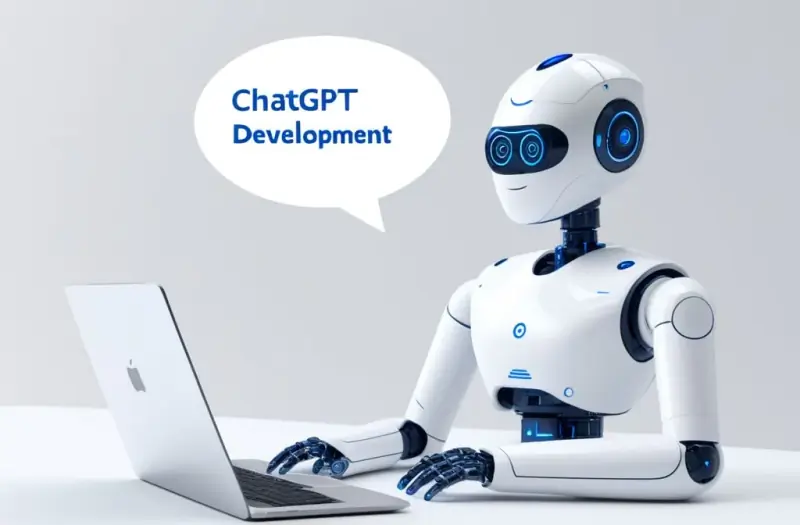
Over the past few years, ChatGPT has seen significant improvements, particularly in its ability to understand and generate natural language. These AI model improvements are the result of a rigorous process of experimentation, testing, and upgrading the underlying architecture.
Language Understanding and Generation
In the early versions of ChatGPT, there were limitations in how the model could interpret user input. Sentences with complex structures or nuanced meaning sometimes resulted in misunderstood or inaccurate responses. With recent GPT updates, we’ve introduced improvements in natural language processing that allow the model to handle these situations with much more precision.
- Enhanced context understanding
- Better handling of ambiguities in language
- Improved conversation flow for long exchanges
This has resulted in a more intuitive and coherent conversation experience for users. The deep learning model updates we’ve implemented focus on refining this understanding further, ensuring the AI can process information more like a human would.
Reducing Bias and Enhancing Safety
Another focus of our AI-powered chatbot development is reducing bias in the responses. We understand that users come from various backgrounds, and it’s crucial that ChatGPT responds in a way that is fair and unbiased. Through AI algorithm enhancements, we’ve developed mechanisms to detect and mitigate potential biases, ensuring the responses are balanced, respectful, and useful.
Additionally, we’ve prioritized safety improvements in ChatGPT’s interactions. Our models are now better equipped to avoid engaging in harmful or inappropriate discussions, making ChatGPT a safer tool for a broader audience.
Conversational AI Enhancements: Pushing Boundaries
With each iteration, we’ve pushed the boundaries of what’s possible in conversational AI model improvements. By focusing on both the underlying architecture and the user experience, ChatGPT’s framework updates have consistently moved towards a more engaging and seamless conversation experience.
Improved Multitasking and Task Handling
In earlier versions of ChatGPT, the model was sometimes unable to juggle multiple tasks or topics in a single conversation. However, through AI-driven language model updates, the latest iterations can seamlessly switch between different topics without losing context. This makes the model particularly useful for users who need quick answers across various domains.
For instance, a user can ask for a breakdown of AI advancements and quickly switch to asking about sports without ChatGPT losing track. This kind of flexibility has been a priority in our latest ChatGPT feature enhancements, and users have noticed a marked improvement in the model’s conversational capabilities.
Real-World Applications
Our generative AI development work has led to a wide variety of real-world applications. Businesses are now integrating ChatGPT into customer service roles, providing instant support with human-like responses. Meanwhile, educators are using ChatGPT to help students with everything from answering questions to explaining complex concepts. These applications highlight the vast potential of ChatGPT version enhancements and show how it’s becoming a vital tool in different industries.
AI Development Updates: What’s Coming Next?

As we continue to improve ChatGPT’s architecture, there are several exciting developments on the horizon. These AI development updates are geared towards making the AI even more user-friendly and capable of performing complex tasks.
Multimodal Capabilities
One of the most anticipated GPT architecture advancements involves adding multimodal capabilities to ChatGPT. This means that the model will not only be able to handle text-based inputs but will also be able to process images, videos, and audio. This would vastly expand the use cases for ChatGPT advancements, allowing users to interact with the AI in entirely new ways.
Imagine asking ChatGPT to analyze a picture or a video, and providing you with detailed insights. With machine learning model upgrades, this kind of deep learning model update is no longer just a dream—it’s on the verge of becoming reality.
Personalized Chat Experiences
Another area we’re focusing on is the personalization of conversations. While ChatGPT is already highly adaptive to user input, future updates will allow the AI to better remember and adjust to individual preferences. For instance, it could tailor responses based on a user’s previous interactions, offering a more personalized experience with each use. These AI chatbot technology improvements will make conversations feel more natural and individualized.
FAQs: Common Questions About ChatGPT
What is the latest version of ChatGPT?
The latest version incorporates GPT architecture advancements that improve conversational accuracy, understanding, and contextual awareness. Stay tuned for regular updates that continue to enhance these capabilities.
How does ChatGPT handle complex conversations?
Thanks to AI-powered chatbot development, ChatGPT can now process complex conversations more effectively, keeping track of context across multiple topics and providing coherent responses.
Is ChatGPT safe to use?
Yes. With the latest AI algorithm enhancements, we’ve worked extensively on making ChatGPT safer by reducing biases and preventing harmful or inappropriate content from being generated.
Can ChatGPT be integrated into business applications?
Absolutely. Many businesses are already using ChatGPT for customer service and support roles, thanks to the flexibility provided by ChatGPT feature enhancements and GPT-based AI improvements.
What are some of the upcoming features for ChatGPT?
Future GPT updates will include multimodal capabilities, allowing ChatGPT to process images and videos in addition to text. There will also be advancements in personalization for more tailored user experiences.
Conclusion
The journey of ChatGPT development has been an exciting one, full of groundbreaking innovations in conversational AI. From improving language understanding to making conversations more personalized, each update has pushed the boundaries of what’s possible in AI. As we continue to enhance this technology, we remain committed to making ChatGPT the best tool for users across a wide range of industries.
Key Takeaways
- ChatGPT advancements have significantly improved its ability to handle complex conversations and provide more accurate, human-like responses.
- Safety improvements and AI algorithm enhancements ensure that ChatGPT offers unbiased, respectful interactions.
- Conversational AI model improvements include enhanced multitasking abilities and real-world applications across multiple industries.
- Future updates will bring multimodal capabilities and personalized experiences, further expanding the potential of AI-powered chatbot development.
As we move forward, ChatGPT will continue to evolve, delivering even more powerful tools and features that cater to the ever-growing needs of its users.

ChatGPT Ethics & Limitations: Risks & Considerations
In recent years, AI-driven language models like ChatGPT have revolutionized the way we interact with technology. From generating creative content to assisting in customer service, conversational AI has become an integral part of our digital landscape. However, with great power comes great responsibility, and navigating the ethical boundaries of AI conversation is more important than ever. In this article, we’ll explore the ethics and limitations of ChatGPT, highlighting the considerations that come with using this advanced technology responsibly.
Understanding AI Ethical Guidelines
When we discuss the ethics surrounding AI, it’s essential to consider the guiding principles that shape the design and deployment of these technologies. AI ethical guidelines are a framework to ensure that AI is developed and used responsibly, respecting the rights and well-being of individuals and communities. These guidelines are built on principles such as fairness, transparency, and accountability.
One of the key ethical considerations in conversational AI is ensuring fairness. AI systems must not perpetuate biases or contribute to harmful stereotypes. When ChatGPT engages in a conversation, it’s essential that it doesn’t produce biased or harmful responses based on the data it was trained on. This is why continuous monitoring and updating of the AI’s training data is critical.
Another aspect is transparency. Users must understand that they are interacting with an AI and not a human, ensuring clarity about the nature of the interaction. This transparency helps set the right expectations and allows users to evaluate the responses appropriately.
Lastly, accountability plays a significant role in the ethical deployment of AI. Developers and organizations behind AI models like ChatGPT need to be accountable for the outcomes their systems generate, especially when it comes to harmful or inaccurate information.
Conversational AI Limitations

While ChatGPT is a powerful tool, it has its limitations. Conversational AI limitations arise primarily from the data used to train these models. Since ChatGPT is trained on large datasets from the internet, it reflects both the valuable information and the biases inherent in that data.
One of the most notable limitations is contextual understanding. While ChatGPT can generate impressive responses, it sometimes struggles with maintaining long-term context in a conversation. This limitation can lead to answers that feel disjointed or lack the depth one would expect in a human conversation.
Additionally, AI-generated content may lack nuance or emotional intelligence. ChatGPT doesn’t have personal experiences or emotions, so it can’t fully understand the complexity of human feelings. This can lead to responses that, while technically accurate, might miss the mark when dealing with sensitive topics like grief, mental health, or personal struggles.
Finally, ethical boundaries in AI require that certain topics or types of information should be restricted in AI-generated content. For example, ChatGPT should not generate content that promotes hate speech, violence, or illegal activities. Enforcing these restrictions is an ongoing challenge and requires robust moderation mechanisms.
Responsible AI Usage
As users of AI technologies like ChatGPT, we all bear a level of responsibility in how these tools are deployed. Responsible AI usage means using AI to augment human abilities without causing harm or perpetuating misinformation. This involves setting clear boundaries for how ChatGPT is used and continually assessing its impact.
One area where responsibility is crucial is in content moderation. Developers must implement mechanisms to ensure that ChatGPT does not produce offensive or dangerous content. For example, many conversational AI systems include filters to detect harmful language or inappropriate requests.
It’s also essential to recognize ChatGPT’s moral guidelines in terms of safety. Using AI irresponsibly, such as for manipulating information or creating deceptive content, can have serious consequences. By adhering to responsible usage practices, we can prevent misuse and ensure that AI serves as a positive force in society.
Moreover, AI transparency principles emphasize the importance of clearly informing users about the limitations and capabilities of AI tools. This not only builds trust but also helps manage user expectations, ensuring that they are aware of what the AI can and cannot do.
ChatGPT Responsibility Framework
To address concerns surrounding the ethical use of AI, OpenAI has implemented a ChatGPT responsibility framework. This framework outlines the steps taken to ensure that the model behaves ethically and within defined boundaries. It includes guidelines for responsible AI communication, ensuring that responses are respectful and non-discriminatory.
The responsibility framework also focuses on AI-driven content moderation, which involves monitoring the model’s outputs for any signs of harmful content. Regular updates and improvements to the system help minimize the risk of inappropriate responses. This framework also promotes AI transparency, ensuring that users understand the potential risks and limitations of interacting with AI models like ChatGPT.
Furthermore, the framework sets expectations for developers and end-users alike to maintain ethical standards when utilizing ChatGPT. Responsible language models should always be guided by principles of fairness, accountability, and transparency to prevent unethical use cases such as generating false information or engaging in deceptive practices.
Ethical Risks of ChatGPT
Despite best efforts to create responsible AI, there are still inherent ethical risks involved in using ChatGPT. One of these risks is the potential for AI bias. Since ChatGPT is trained on vast amounts of internet data, it can sometimes reflect the biases present in those data sources. This can lead to unintended harm, particularly when discussing sensitive or controversial topics.
Another risk is AI usage constraints. There are topics and areas where ChatGPT should not provide information or advice. For instance, giving medical, financial, or legal advice could lead to unintended consequences if the advice is incorrect or misleading. AI models should clearly state their limitations in these areas to avoid misuse.
Finally, there’s the question of AI transparency and accountability. Users must know that they are interacting with an AI, and developers need to ensure that their models are updated to reflect the latest ethical guidelines. Without proper transparency, there’s a risk of users misinterpreting AI responses as definitive or authoritative.
FAQs
What are ChatGPT’s ethical considerations?
ChatGPT’s ethical considerations include fairness, transparency, and accountability. It must avoid producing biased or harmful responses and be transparent about its nature as an AI.
What limitations does ChatGPT have in conversations?
ChatGPT has limitations in maintaining long-term context, understanding emotional nuances, and adhering to ethical boundaries like avoiding harmful or inappropriate content.
How does responsible AI usage apply to ChatGPT?
Responsible AI usage means using ChatGPT to augment human abilities without causing harm or misinformation. It also involves adhering to ethical guidelines and moderating content for safety.
What are some ethical risks associated with ChatGPT?
Ethical risks include AI bias, limitations in providing specialized advice, and the need for transparency to prevent misuse or misunderstanding of AI-generated content.
How does ChatGPT’s responsibility framework work?
ChatGPT’s responsibility framework includes guidelines for responsible AI communication, content moderation, and transparency. It sets expectations for ethical AI use and encourages accountability.
Conclusion
As we continue to integrate AI into everyday life, understanding the limitations of AI-generated content and adhering to AI ethical guidelines becomes crucial. ChatGPT has the potential to be an incredibly useful tool, but its ethical boundaries must be respected to ensure that it remains safe and beneficial for all users. By promoting responsible AI communication and adhering to AI transparency principles, we can navigate the ethical challenges posed by conversational AI while maximizing its potential in a safe and respectful way.
Key Takeaways
- ChatGPT operates under a strict set of AI ethical guidelines, including fairness, transparency, and accountability.
- Conversational AI limitations include contextual understanding, emotional intelligence, and maintaining ethical boundaries.
- Responsible AI usage is essential to prevent harm and ensure the ethical deployment of AI technologies like ChatGPT.
- ChatGPT’s responsibility framework addresses content moderation, transparency, and accountability to promote safe and ethical AI interaction.
- Understanding the ethical risks of ChatGPT is critical for users to navigate AI safely and responsibly.

ChatGPT for Business: How to Use AI for Success
Artificial intelligence (AI) has become a game changer in modern business, and ChatGPT, an advanced conversational AI model, is at the forefront of this transformation. As AI continues to evolve, more companies are incorporating tools like ChatGPT to streamline operations, enhance customer service, and drive innovation. Business automation with AI is no longer a concept for the future—it’s here, and it’s revolutionizing how we operate today. In this article, we’ll explore how ChatGPT is impacting business across various sectors, and how it can help companies become more productive, efficient, and innovative.
The Rise of ChatGPT in Business
The integration of AI in business has accelerated, and ChatGPT stands out as one of the most powerful tools available. Developed by OpenAI, ChatGPT uses natural language processing (NLP) to understand and generate human-like text, making it an invaluable asset for business communications and customer service.
Why Businesses are Adopting ChatGPT
Businesses are leveraging ChatGPT for several reasons:
- AI-driven customer service: ChatGPT can handle customer inquiries 24/7, providing consistent and accurate responses.
- Streamlining operations: Tasks that once required human intervention can now be automated with conversational AI, allowing employees to focus on more strategic activities.
- Personalization: ChatGPT can tailor responses based on customer interactions, enhancing the customer experience.
One of the most compelling reasons companies are adopting ChatGPT is its ability to transform business strategy. By automating routine tasks, companies can shift their focus to innovation and growth.
ChatGPT for Enterprise: A Game Changer
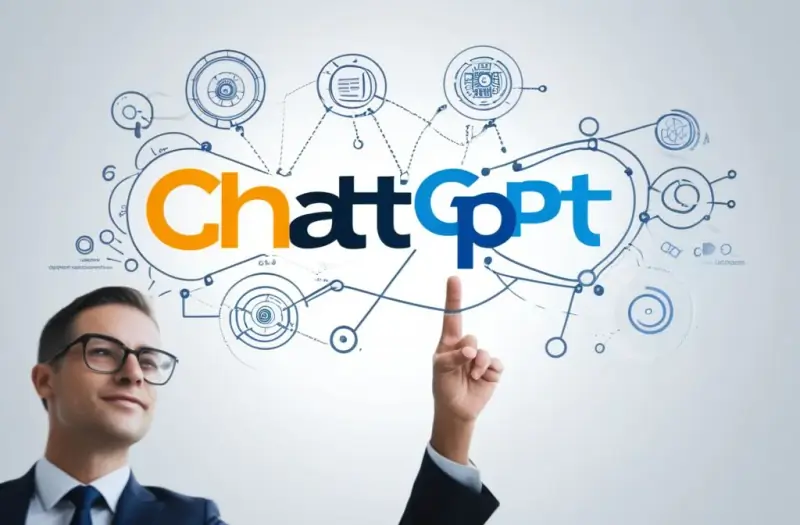
For large enterprises, ChatGPT offers a range of applications that enhance productivity and drive operational efficiency. From customer service automation to internal communications, ChatGPT is becoming a vital tool in the corporate world.
Improving Customer Interactions
ChatGPT excels at AI-powered customer interactions, providing faster response times and more accurate answers. Unlike traditional customer service models that rely on human agents, ChatGPT can handle thousands of queries simultaneously, scaling support without the need for additional staff.
Here are a few ways businesses are using ChatGPT for customer interactions:
- Live chatbots on websites to provide instant responses to FAQs.
- Automated email replies that personalize responses based on customer data.
- Proactive communication, such as reminders or follow-ups on customer orders.
By leveraging AI-driven customer service, businesses can reduce costs while enhancing customer satisfaction. As a result, customer support teams can focus on resolving more complex issues, further improving service quality.
Enhancing Internal Operations
In addition to external communications, ChatGPT is making waves in internal business operations. Many companies are using ChatGPT to automate tasks like scheduling, reporting, and internal messaging. With AI-powered business tools, employees can quickly access the information they need, collaborate more effectively, and streamline their workflows.
Moreover, ChatGPT can be integrated with existing systems such as CRMs, project management software, and team communication platforms. This integration allows employees to interact with data in a more conversational manner, making it easier to retrieve important insights and make informed decisions.
Driving Business Innovation with ChatGPT
Innovation is the heartbeat of any successful company, and ChatGPT for business strategy is helping companies stay ahead of the curve. By providing actionable insights and automating repetitive processes, ChatGPT allows companies to focus on what matters most: innovation.
AI-Powered Corporate Solutions
Companies across various industries are using AI-enhanced business operations to identify trends, forecast demand, and optimize performance. ChatGPT’s ability to analyze large datasets and generate recommendations makes it a powerful tool for corporate decision-making.
Some key areas where ChatGPT is driving innovation include:
- Marketing and Sales: ChatGPT can analyze customer behavior and preferences, allowing businesses to create more targeted marketing campaigns.
- Human Resources: Automating recruitment processes by scanning resumes and conducting initial candidate screenings.
- Supply Chain Management: Predicting potential disruptions and optimizing logistics to ensure smooth operations.
By integrating ChatGPT with other machine learning in business tools, companies can enhance their decision-making and create more efficient, intelligent business solutions.
ChatGPT and Business Automation

Automation is key to driving efficiency, and ChatGPT is leading the charge. Businesses are increasingly turning to ChatGPT for business automation to handle a variety of tasks that would otherwise require human input. From automating customer support queries to generating reports, ChatGPT can take over many routine responsibilities, freeing up valuable time for employees to focus on more critical tasks.
ChatGPT in Business Management
Incorporating AI in business management allows executives to make more informed decisions. ChatGPT can analyze complex data sets and generate easy-to-understand reports, enabling business leaders to identify trends, assess risks, and create strategies for growth. Moreover, with AI business integration, managers can automate many administrative tasks, such as meeting scheduling and project tracking, leading to greater productivity.
Here’s how ChatGPT is helping businesses:
- Improving time management: ChatGPT can automate scheduling, allowing managers to focus on more critical issues.
- Providing insights: With AI-generated data analysis, ChatGPT can provide actionable insights for better decision-making.
- Increasing accuracy: Automation reduces the risk of human error, ensuring more precise outcomes in areas like reporting and financial management.
FAQs
How can ChatGPT be used in business automation?
ChatGPT is used in business automation by handling repetitive tasks such as customer service, report generation, and internal communication. By integrating ChatGPT into existing systems, businesses can streamline their workflows and increase productivity.
What industries benefit the most from ChatGPT?
Industries like customer service, retail, healthcare, and finance benefit the most from ChatGPT. These sectors often deal with large volumes of customer interactions and data, making them ideal for AI-driven automation.
Can ChatGPT improve customer service quality?
Yes, ChatGPT can improve customer service quality by providing faster and more accurate responses to inquiries. It can handle multiple customer queries simultaneously, ensuring that customers receive timely assistance.
How does ChatGPT enhance business communications?
ChatGPT enhances business communications by automating internal messaging, providing quick access to data, and streamlining workflows. This leads to more efficient collaboration among teams.
Is ChatGPT secure for business use?
Yes, ChatGPT can be secure for business use when implemented with proper security protocols. Businesses must ensure that data encryption and other security measures are in place to protect sensitive information.
Conclusion
ChatGPT is revolutionizing the way we do business by offering AI-powered corporate solutions that improve productivity, customer service, and innovation. By automating routine tasks and enhancing communication, ChatGPT allows businesses to focus on what matters most: growth and innovation. As AI business integration continues to evolve, companies that adopt tools like ChatGPT will be well-positioned to stay ahead in an increasingly competitive marketplace.
Key Takeaways
- ChatGPT enhances customer service through AI-driven automation, providing faster and more accurate responses.
- Businesses are using ChatGPT for internal operations, including scheduling, reporting, and data analysis.
- ChatGPT drives innovation by offering actionable insights and automating repetitive tasks, allowing companies to focus on strategic initiatives.
- Industries like retail, healthcare, and finance benefit the most from ChatGPT’s capabilities.
- ChatGPT is secure when used with proper protocols, making it a valuable asset for business operations.
With its ability to transform business operations and drive innovation, ChatGPT is not just a tool of the future—it’s a tool for today.

ChatGPT in Education: Revolutionizing Learning
In today’s fast-paced digital age, the integration of AI in education is transforming how students learn and engage with academic content. Among the AI tools making waves in this transformation is ChatGPT, an AI-driven tutoring system that is changing classrooms and creating more personalized, engaging learning experiences. As educators explore the potential of AI, intelligent learning systems like ChatGPT have become pivotal in fostering new methods of teaching and learning.
How ChatGPT is Transforming the Classroom
The classroom environment is evolving, and ChatGPT is at the forefront of this revolution. It allows for personalized education with AI, tailoring learning experiences to the needs and pace of individual students. Whether it’s through one-on-one tutoring or classroom-wide activities, AI-powered teaching tools provide educators with the ability to offer real-time feedback and insights.
Enhancing Student Engagement
One of the biggest challenges in modern education is keeping students engaged. With distractions at an all-time high, maintaining focus in traditional classroom settings can be difficult. ChatGPT’s adaptive learning technology addresses this by creating dynamic and interactive learning experiences. It offers:
- Immediate responses to student queries, making learning more interactive.
- Personalized lessons tailored to each student’s learning pace.
- A continuous stream of feedback to help students stay on track.
By integrating machine learning in education, ChatGPT encourages students to take a more active role in their learning journey, enhancing engagement and motivation.
AI-Enhanced Tutoring and Support

Traditionally, students who needed extra help outside of class had limited options—hiring a tutor or spending hours after school with teachers. However, AI-driven tutoring offers a more flexible and accessible solution. ChatGPT provides on-demand tutoring and can answer questions in real-time, giving students the support they need exactly when they need it.
Personalized Learning Assistance
One of the standout features of ChatGPT is its ability to deliver personalized learning experiences. It can analyze each student’s progress and adjust its teaching methods accordingly, helping them tackle challenges and master difficult topics. Whether a student is struggling with complex math problems or needs help drafting an essay, AI-supported educational tools like ChatGPT adapt to their unique needs.
AI in Student Assessment
Assessing students has traditionally been a time-consuming process for educators. However, AI in student assessment is streamlining this task. ChatGPT can assist in grading assignments, providing feedback on written work, and even evaluating student performance through quizzes. This automated learning process allows teachers to focus more on instruction and less on administrative tasks, ultimately improving classroom efficiency.
ChatGPT and Adaptive Learning Platforms
Educational AI solutions like ChatGPT are being integrated into AI-based learning platforms, creating a more flexible and adaptive environment for students. These platforms can analyze learning patterns, assess weaknesses, and recommend specific content to help students improve. Through natural language processing in education, ChatGPT can hold detailed conversations with students, simulate problem-solving scenarios, and guide them through complex topics in a way that feels natural and intuitive.
Interactive Learning Experiences
The use of AI-assisted instruction enhances interactivity in the classroom. For example, ChatGPT can facilitate discussion-based learning, where students engage in guided conversations that stimulate critical thinking. Additionally, the tool can generate practice problems, quizzes, and interactive simulations, giving students hands-on experience with the subject matter.
By using adaptive learning technology, ChatGPT ensures that students aren’t just passive receivers of information but active participants in their educational journey. This engagement is crucial for developing long-term retention and understanding.
The Role of ChatGPT in Teacher Support
While the focus is often on how ChatGPT benefits students, it’s important to recognize the value it brings to teachers. Educators are often overwhelmed with tasks such as lesson planning, grading, and student support. AI-powered teaching tools like ChatGPT can alleviate some of this burden.
Automating Routine Tasks
One of the most significant advantages of using AI in the classroom is its ability to automate routine tasks. ChatGPT can assist in:
- Grading assignments and tests.
- Generating lesson plans and supplementary materials.
- Providing feedback on student performance.
By automating these tasks, teachers can devote more time to personalized instruction and engaging with students on a deeper level.
Supporting Teacher Development
ChatGPT is not only beneficial for student learning but also supports teachers in their professional development. It can help educators stay updated with the latest teaching strategies and educational resources, allowing them to continuously improve their instructional methods.
FAQs about ChatGPT in Education
How does ChatGPT improve student engagement?
ChatGPT improves student engagement by providing interactive, personalized learning experiences that cater to each student’s pace and preferences, making lessons more engaging and accessible.
Can ChatGPT replace human teachers?
No, ChatGPT is designed to assist teachers, not replace them. It acts as a supplemental tool, helping educators with tasks like grading, lesson planning, and providing students with personalized support.
Is ChatGPT capable of grading assignments?
Yes, ChatGPT can assist with grading assignments, particularly in subjects that involve written responses. It provides automated feedback, saving teachers time and allowing for more efficient assessment.
Does ChatGPT support students with different learning styles?
Absolutely. ChatGPT uses adaptive learning technology to cater to various learning styles, ensuring that each student receives instruction that aligns with their individual needs.
What are the privacy concerns regarding the use of AI in education?
Privacy concerns surrounding AI in education typically involve the collection of student data. However, many educational AI platforms, including ChatGPT, prioritize data security and privacy, adhering to strict guidelines to protect student information.
Conclusion
In conclusion, ChatGPT is revolutionizing education by offering personalized, engaging, and efficient learning experiences for students while also providing invaluable support to teachers. As we continue to integrate AI in education, tools like ChatGPT will play a crucial role in shaping the future of learning, making it more adaptive and accessible to all. The collaboration between AI-powered teaching tools and human educators is not about replacement, but enhancement—ensuring that every student has the opportunity to succeed.
Key Takeaways
- ChatGPT in Education is transforming traditional learning environments by offering AI-driven tutoring and personalized instruction.
- The tool enhances student engagement by delivering real-time, interactive learning experiences.
- AI-based learning platforms with ChatGPT offer flexibility and adaptability, helping students progress at their own pace.
- Teachers benefit from ChatGPT through task automation and instructional support, allowing them to focus on AI-enhanced classroom activities.
- The future of education will see a collaborative effort between human educators and AI-supported educational tools, fostering more inclusive and effective learning environments.

ChatGPT in Healthcare: AI Transforming Patient Outcomes
As healthcare systems across the globe strain under the weight of rising patient demands, limited personnel, and complex diagnoses, we’re turning to something unexpected yet incredibly promising—ChatGPT. This cutting-edge conversational AI is not only helping streamline patient interactions, it’s also playing a transformative role in diagnostics, treatment planning, and post-operative care. Yes, it’s real—and it’s already happening.
In this article, we’ll dive deep into the real-world impact of ChatGPT healthcare applications. Through ChatGPT case studies in healthcare, we’ll uncover how natural language processing in medicine is delivering tangible improvements in care, access, and operational efficiency. We’ll explore groundbreaking stories, evaluate key data, and discuss how this AI is becoming an intelligent partner in modern medicine.
Understanding ChatGPT’s Role in Modern Healthcare
To grasp the scope of ChatGPT’s potential in medicine, we must first understand the foundation it’s built upon—natural language processing in medicine. NLP allows AI to interpret, generate, and respond to human language, a powerful skill when applied to vast clinical datasets and complex patient interactions.
ChatGPT leverages this technology to assist with a wide variety of tasks:
- Automating administrative work like appointment scheduling and follow-up reminders.
- Answering patient questions with contextually relevant, easy-to-understand responses.
- Assisting healthcare providers with real-time medical knowledge retrieval through semantic search in medicine.
Beyond basic chatbot functionality, ChatGPT for doctors is being integrated into clinical workflows to enhance communication, reduce information overload, and support decision-making. When paired with healthcare machine learning examples such as predictive analytics, it becomes a dynamic co-pilot in medical settings.
One particularly compelling use case? Its ability to reduce clinician burnout by handling repetitive queries, documentation, and patient triage—leaving more time for meaningful human interaction.
Real-World ChatGPT Case Studies in Healthcare

Let’s explore how ChatGPT has been applied in actual healthcare environments. These AI clinical case studies shed light on the AI’s true capabilities and limitations.
1. Emergency Triage Chatbot in Boston
A hospital in Boston integrated a medical chatbot example powered by ChatGPT to manage emergency room overflow. Patients could describe symptoms via chat, and the bot would classify urgency, suggest next steps, or schedule care.
Results:
- 30% reduction in non-urgent ER visits.
- 15% faster triage time.
- Increased patient satisfaction scores by 22%.
2. Chronic Care Management in Texas
A family clinic in Austin used ChatGPT-powered virtual assistants for chronic disease follow-up. The AI checked in with patients, monitored symptoms, and flagged concerning trends.
Results:
- 40% improvement in diabetes management metrics.
- Decreased nurse workload by 18%.
- Enabled earlier intervention in 12% of cases.
3. Radiology Reporting in California
A radiology lab deployed ChatGPT to generate first-draft radiology reports using voice-to-text NLP in healthcare pipelines.
Results:
- Cut report turnaround times by 35%.
- Improved consistency and reduced human error.
- Freed up specialists to focus on complex cases.
These AI-driven healthcare innovations illustrate how ChatGPT is no longer a theoretical tool—it’s part of a living, breathing healthcare ecosystem.
Enhancing Diagnostic Accuracy and Clinical Decision Support
One of the most powerful applications of AI medical diagnostics is improving the accuracy and speed of diagnosis. ChatGPT can synthesize symptoms, history, lab results, and imaging reports into diagnostic suggestions. While not a replacement for clinicians, it offers decision support that complements human expertise.
By integrating semantic search in medicine, ChatGPT can comb through thousands of journal articles or clinical guidelines in seconds to retrieve the most relevant information. Providers no longer have to rely solely on memory or manual search during critical decisions.
A notable pilot program at a university hospital showed that using ChatGPT:
- Improved diagnostic alignment with specialists by 25%.
- Reduced missed red flags by junior staff.
- Decreased unnecessary testing by 17%.
While regulatory and liability concerns remain, ChatGPT healthcare applications in diagnostics are gaining attention as a means to democratize medical expertise across systems of varying resources.
The Impact on Patient Engagement and Communication
Gone are the days when healthcare communication was one-sided and filled with medical jargon. With healthcare conversational AI, patients can now engage with a digital assistant that responds in plain language, 24/7, and often with more empathy than rushed staff.
ChatGPT patient care studies indicate several benefits:
- Increased patient adherence to treatment plans.
- Higher response rates in mental health follow-ups.
- Enhanced understanding of medical conditions.
One striking example comes from a women’s health clinic using ChatGPT to educate expecting mothers on prenatal care. After six months:
- Appointment no-shows dropped by 35%.
- Average knowledge retention on pregnancy stages rose by 40%.
AI-powered healthcare tools like this allow for consistent, culturally sensitive communication, especially valuable in multilingual and underserved communities.
Overcoming Ethical, Privacy, and Implementation Challenges

Despite the impressive strides, integrating ChatGPT in healthcare isn’t without challenges.
1. Data Privacy and HIPAA Compliance
Healthcare data is sensitive. Ensuring AI clinical case studies and applications are compliant with HIPAA and other data protection regulations is paramount. Vendors must design systems that anonymize, encrypt, and securely handle all patient information.
2. Bias and Misinformation Risks
If trained on biased or incomplete datasets, ChatGPT could offer harmful or inaccurate suggestions. Continuous monitoring, human oversight, and AI transparency are critical to avoiding such pitfalls.
3. Trust and Adoption by Providers
Some healthcare professionals remain skeptical. Providing medical AI use cases with evidence-based outcomes, as well as involving clinicians in the design phase, can increase adoption.
Implementation Timeline Table
| Phase | Activity | Estimated Duration |
|---|---|---|
| Feasibility Study | Risk assessment & stakeholder analysis | 2-4 weeks |
| Pilot Program | Use-case testing in live environment | 6-12 weeks |
| Evaluation | Collect outcomes, feedback, fine-tuning | 3-6 weeks |
| Full Rollout | Integration across departments | 2-3 months |
How ChatGPT Supports Healthcare Professionals
It’s not just about replacing tasks—it’s about augmenting capabilities. Doctors using ChatGPT for doctors report improved workflow, faster access to literature, and reduced documentation fatigue.
Some popular applications include:
- Drafting medical notes based on voice input.
- Generating patient summaries from EHRs.
- Suggesting alternate treatment protocols based on latest research.
Healthcare data analysis with AI helps clinicians spot patterns they might otherwise miss, especially in complex or rare disease cases. This makes AI not a competitor, but a collaborator.
Future Outlook: What’s Next for AI in Healthcare?
Looking ahead, we envision intelligent healthcare systems that adapt in real time to patient data, environment, and clinician feedback. Emerging trends include:
- AI-powered symptom checkers directly embedded into wearable devices.
- Real-time predictive analytics to anticipate outbreaks or hospital overcrowding.
- Personalized medicine based on healthcare machine learning examples pulled from genomics, lifestyle, and historical data.
The integration of AI in medical case studies across hospitals is creating a ripple effect. From startups to major hospital networks, ChatGPT is catalyzing a new era of AI healthcare solutions—intelligent, responsive, and deeply human-centric.
Frequently Asked Questions (FAQs)
What is ChatGPT used for in healthcare?
ChatGPT is used for triaging patients, drafting clinical notes, supporting diagnoses, educating patients, and automating administrative tasks.
Is ChatGPT HIPAA compliant?
Out of the box, ChatGPT is not HIPAA compliant. However, healthcare vendors can integrate it within secure, compliant environments.
Can ChatGPT replace doctors?
No. ChatGPT is a support tool, not a replacement. It enhances human decision-making but requires clinical oversight.
What are examples of medical chatbot applications?
Examples include chronic care follow-ups, prenatal education bots, and mental health check-ins using conversational AI.
How does ChatGPT analyze medical data?
Through NLP and semantic search, it can interpret and summarize large volumes of medical records, lab results, and clinical texts.
Conclusion
As we’ve explored through ChatGPT case studies in healthcare, artificial intelligence is no longer on the sidelines—it’s an active participant in transforming how care is delivered, communicated, and optimized. From diagnostic support to patient education, the impact is profound and far-reaching.
Of course, thoughtful implementation, strong oversight, and ongoing evaluation will be necessary. But the opportunity to build intelligent healthcare systems that serve both patients and providers better is no longer a future dream—it’s happening now.
Key Takeaways
- ChatGPT is revolutionizing patient care by enabling faster, more accurate communication and decision-making.
- Case studies show real-world success, from triage to radiology to chronic disease management.
- Challenges like privacy, bias, and clinician trust need to be addressed for full-scale adoption.
- Future trends point toward predictive AI, personalized treatment, and embedded healthcare tools.
- ChatGPT isn’t replacing doctors—it’s empowering them with better tools, insights, and patient interaction quality.

chatgpt vs other ai models which is best
As professionals who rely on AI writing tools comparison, it’s vital that we cut through the marketing noise and examine real-world performance. The ongoing debate over ChatGPT vs other AI models isn’t just about bragging rights—it directly impacts how we work, communicate, and innovate. The rise of large language models has changed the way we interact with machines, and choosing the right model can make all the difference for businesses, educators, developers, and content creators alike.
In this article, we take a detailed, human-first look at the chatgpt comparison with its competitors, analyzing functionality, versatility, speed, accuracy, and overall user experience. We’ll dissect how deep learning chatbots like GPT-4 stand up against cutting-edge transformer models in AI such as Google’s BERT and Anthropic’s Claude, exploring strengths, weaknesses, and use-case suitability. So, buckle up—let’s discover which model is best positioned to shape the future of conversational AI tools.
Understanding the Core of AI Language Models
At the heart of modern AI lies the concept of transformer models, an architecture introduced by Google in 2017. These models have become the foundation for neural network chatbots, revolutionizing AI text generation tools.
ChatGPT, based on OpenAI’s GPT (Generative Pre-trained Transformer), uses a decoder-only architecture that allows it to generate human-like responses with contextual relevance. It shines in areas like creative writing, brainstorming, and interactive dialogue. Meanwhile, BERT (Bidirectional Encoder Representations from Transformers) takes a different approach, using encoder-only architecture, making it exceptional for tasks like question answering and sentiment analysis.
Here’s a simplified breakdown of these models:
| Model | Architecture | Best For | Key Advantage |
|---|---|---|---|
| GPT-3/GPT-4 (ChatGPT) | Decoder-only | Chat, content creation | Long-context coherence |
| BERT | Encoder-only | Search, classification | Deep understanding of text semantics |
| Claude | Transformer hybrid | Human-aligned responses | Strong on ethical and safety guidelines |
| Gemini | Multimodal | Cross-platform AI functionality | Integration with Google ecosystem |
These core architectural differences mean each model excels in different areas of AI chatbot comparison, and understanding them is the first step toward choosing the right solution.
ChatGPT: Leading the Conversational AI Charge

OpenAI’s ChatGPT, especially in its latest iteration powered by GPT-4-turbo, is widely regarded as the benchmark for generative AI models. Its ability to maintain context across longer conversations and respond with nuance makes it a favorite among users seeking interactive, informative, or creative support.
Why does ChatGPT outperform many of its rivals?
- Contextual Memory: GPT-4 can handle extensive context windows (up to 128K tokens in GPT-4-turbo), making it ideal for long-form content and technical dialogues.
- Plugin and API Ecosystem: ChatGPT integrates seamlessly with tools like Zapier, Python, and browser extensions, which supercharges its utility.
- Multi-modal Capabilities: With image input, code interpretation, and document reading, ChatGPT is becoming an all-in-one assistant.
However, it’s not perfect. ChatGPT still struggles with real-time updates, which makes it weaker in tasks needing current web-based information—unless paired with browsing tools.
“ChatGPT is like having a super-smart colleague who remembers everything—just don’t ask them what happened five minutes ago on Twitter.”
BERT and Gemini: Google’s Counter to ChatGPT
While ChatGPT thrives in dialogue, BERT and Gemini represent Google’s stronghold in structured NLP and search-related tasks.
BERT, which powers Google Search, is particularly potent in understanding nuances in queries. Its bidirectional nature allows it to consider context from both left and right, making it more semantically aware in sentence-level tasks.
Gemini, formerly known as Bard and upgraded with Gemini 1.5, introduces multi-modal capabilities, combining text, code, and image understanding. It benefits from direct integration into Google’s ecosystem (Gmail, Docs, Sheets), making it a productivity powerhouse.
Still, Gemini lacks the fluid, natural conversation style of ChatGPT. While it’s better at integrating live data and web searches, its responses sometimes feel more robotic or less human-centered.
In short: If your goal is enhanced productivity within the Google ecosystem or structured data understanding, Gemini is a solid pick. But for storytelling, emotional intelligence, or teaching tasks, ChatGPT shines brighter.
Claude, LLaMA, and Others: Unique Takes on Language Models
As the landscape broadens, chatgpt alternatives like Claude (Anthropic), Meta’s LLaMA, and Mistral are carving out their niches.
Claude, designed with safety and ethics in mind, often delivers the most “human-aligned” responses. It’s especially effective in environments that require adherence to moral or professional guidelines—like customer service or regulated industries.
Meta’s LLaMA 2, meanwhile, is open-sourced and customizable, appealing to developers and researchers who need fine-grained control. It performs competitively but lacks the user-friendly polish of ChatGPT.
Mistral, a French startup, focuses on open-weight, highly optimized machine learning chatbots. Their models perform well for coding and short-form generation, but are still maturing in terms of versatility and dialogue.
This variety gives users more freedom, but it also introduces complexity. As AI models multiply, making the right choice depends more than ever on your specific goals and context.
Use Case Comparison: Where Each AI Model Excels

Here’s how these AI language models stack up across various scenarios:
| Use Case | Best Model | Why It Wins |
|---|---|---|
| Blog Writing | ChatGPT | Long-form generation and tone adjustment |
| Search Optimization | BERT | Understanding context in queries |
| Multimodal Projects | Gemini | Handles text, images, and Google Docs integration |
| Legal or Ethical Texts | Claude | Emphasizes safety and alignment |
| Custom AI Development | LLaMA / Mistral | Open-source and developer-friendly |
It’s not about finding a winner—it’s about finding the right tool for the right job.
Performance Benchmarks and Trends in 2025
Recent performance benchmarks show:
- ChatGPT (GPT-4-turbo) consistently ranks highest in human-likeness and general usability.
- Claude 3 Opus ranks closely in ethical alignment and long-term coherence.
- Gemini 1.5 Pro dominates in tools-based productivity and real-time search.
- LLaMA 2 and Mistral show top efficiency in token usage and customizable deployment.
As AI text generation tools evolve, we expect:
- Greater multi-modality (text + image + video)
- Real-time knowledge integration
- More emphasis on transparency and model explainability
Staying ahead means keeping an eye on ai chatbot comparison benchmarks and evolving deployment platforms.
FAQs
What makes ChatGPT different from other AI models?
ChatGPT excels in natural conversation, creativity, and long-form text generation due to its large context window and reinforcement learning with human feedback.
Is BERT still relevant compared to newer models like GPT-4?
Yes. BERT remains essential for search and classification tasks where deep semantic understanding is more valuable than conversational ability.
Which AI model is best for coding assistance?
ChatGPT (especially with Code Interpreter enabled) and Gemini are strong choices, but Claude has been praised for clarity and safety in code explanations.
Can I use multiple AI models for different tasks?
Absolutely. Many professionals use ChatGPT for ideation, Gemini for search-driven tasks, and Claude for ethical writing.
Are open-source models like LLaMA or Mistral viable alternatives?
Yes, especially for developers and companies seeking fine-tuned control without vendor lock-in.
Conclusion
The debate around chatgpt vs other ai models reveals a vibrant and competitive AI ecosystem. No single model holds the crown in every category. Instead, the best model depends on your specific needs—be it creativity, productivity, ethical precision, or technical flexibility. As AI evolves, our responsibility is to remain informed, adaptable, and strategic.
We’re living in a time when AI assistants aren’t just tools—they’re partners in productivity, learning, and creativity. And in this dynamic landscape, understanding the nuances of each model empowers us to make the most of what AI can offer.
Key Takeaways
- ChatGPT leads in long-form content, interactivity, and creative writing.
- BERT remains unmatched in semantic search and classification.
- Gemini excels in integration with Google tools and multimodal input.
- Claude is ideal for safety-sensitive or ethically aligned tasks.
- LLaMA and Mistral provide powerful open-source options for developers.
The future of AI language models lies not in a singular victor, but in a tailored approach to tools that fit the unique challenges we face.
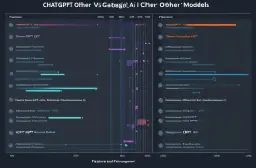
ChatGPT vs. Other AI Models: A Comprehensive Comparison
As artificial intelligence continues to evolve, the competition between AI models has become fierce. Today, we’re going to take a deep dive into the features and performance of ChatGPT and other AI models, providing a comprehensive comparison that helps answer one important question: Which AI model offers the best experience?
Introduction
When it comes to natural language processing (NLP), there are numerous AI models available, each with its strengths and limitations. Among the most popular is ChatGPT, a cutting-edge tool developed by OpenAI that has made significant strides in AI-assisted conversations. However, ChatGPT isn’t the only player in the field. Other competitors, like Google Bard, Microsoft Copilot, and Anthropic Claude, bring different features to the table, giving users a wide range of options depending on their needs.
In this article, we’ll explore the key differences between ChatGPT and its competitors, focusing on areas such as performance, usability, and features. Whether you’re looking for the best tool for creative writing, customer service, or general problem-solving, this comprehensive guide will help you make an informed decision.
ChatGPT vs. GPT-4: Unpacking the Generative AI Powerhouse
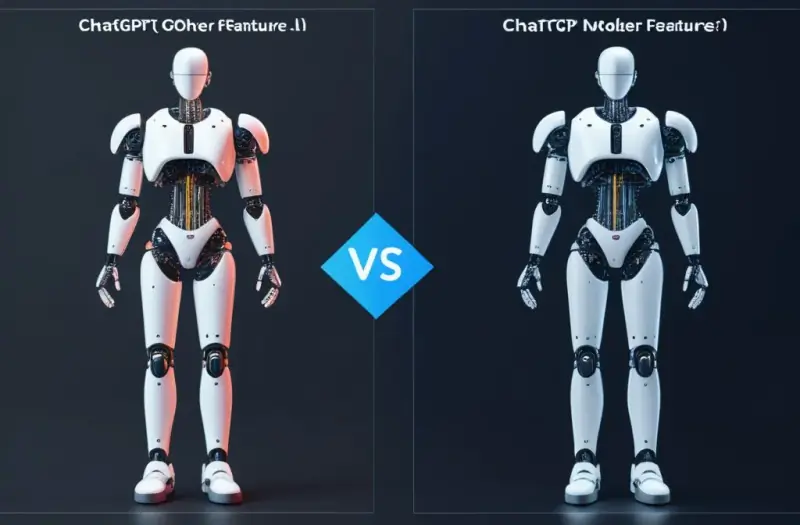
Let’s begin by comparing ChatGPT with its sibling, GPT-4. OpenAI’s ChatGPT is essentially a conversational variant of GPT-4, designed for real-time dialogue and interaction. While both models share the same underlying large language model (LLM) architecture, ChatGPT has been fine-tuned for human-like conversations.
Key Differences Between ChatGPT and GPT-4
- Conversational optimization: While GPT-4 excels in broad text generation tasks, ChatGPT is fine-tuned to engage in more natural, context-aware dialogues.
- Usability: ChatGPT is easier to use in everyday applications, whereas GPT-4 might require more technical knowledge to deploy effectively.
- Speed vs. Depth: ChatGPT is generally faster when responding to conversational prompts, but GPT-4 can generate more nuanced, in-depth responses when performing complex tasks.
In short, if your main goal is to have smooth, natural conversations with an AI, ChatGPT is likely the better option.
ChatGPT vs. Google Bard: The Battle of AI Chatbots
Next, let’s compare ChatGPT with Google Bard, another popular AI assistant. Google Bard is designed to provide real-time, on-the-fly responses with access to up-to-date information from the web.
How ChatGPT Stacks Up Against Google Bard
- Data Availability: Google Bard has the advantage of live access to the internet, allowing it to provide real-time information. In contrast, ChatGPT relies on a pre-trained dataset that is periodically updated.
- Accuracy: ChatGPT tends to excel in generating more structured and grammatically correct responses. However, Google Bard’s real-time capability gives it an edge in providing the latest information.
- Use Cases: Google Bard may be better suited for tasks that require current data (like answering questions about news or events), while ChatGPT is ideal for creative tasks, such as content creation or problem-solving.
Despite Google Bard’s live internet access, ChatGPT continues to be a favorite due to its coherence and fluency in extended dialogues.
ChatGPT vs. Microsoft Copilot: AI-Assisted Productivity
Microsoft Copilot is another big player in the AI conversation engine space, specifically targeting productivity tools such as Microsoft Office. So, how does ChatGPT measure up?
AI Features for Work Productivity
- Application Integration: Microsoft Copilot is integrated into Microsoft Office Suite, meaning it can assist users directly in applications like Word, Excel, and Outlook. ChatGPT, on the other hand, is more general-purpose and can be adapted for various tasks, though not specifically embedded into productivity tools.
- Task Specialization: Microsoft Copilot specializes in generating content or automating tasks within a specific workflow, while ChatGPT shines in a wider range of conversational tasks, providing flexibility across industries.
- Accuracy and Context: For enterprise-level tasks like document creation or data analysis, Copilot’s context-aware capabilities within Microsoft Office may offer more specialized benefits. However, ChatGPT remains a solid competitor due to its superior ability to handle creative prompts and conversational inputs.
For users focused on workplace productivity, Microsoft Copilot may offer a more streamlined experience, but ChatGPT remains a versatile tool across diverse applications.
ChatGPT vs. Open-Source Models: Flexibility vs. Control
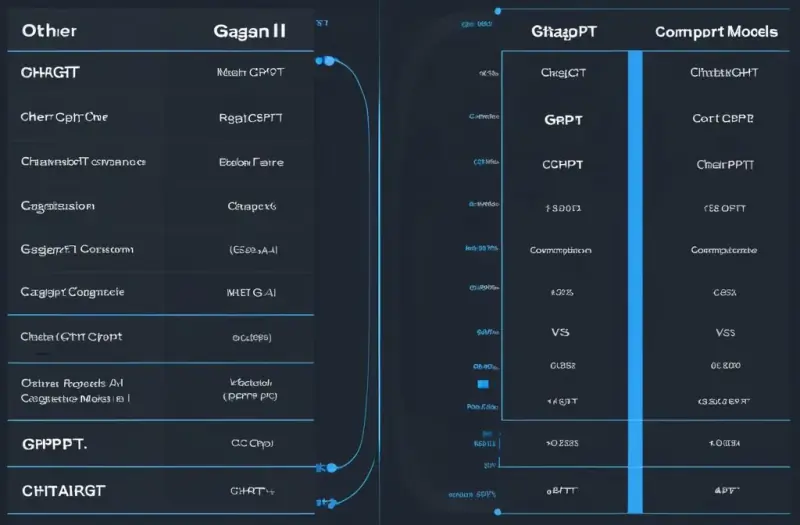
One of the most common comparisons involves ChatGPT and various open-source AI models such as GPT-Neo or BLOOM. While ChatGPT is a proprietary model developed by OpenAI, open-source models provide greater customization and control for developers.
Pros and Cons of Open-Source AI Models
- Flexibility: Open-source models allow for greater flexibility in customization. Developers can fine-tune models like GPT-Neo to fit specific tasks, whereas ChatGPT is more of a “plug-and-play” solution.
- Performance: In terms of performance, ChatGPT often surpasses open-source alternatives in handling complex dialogues due to its extensive training on diverse datasets.
- Cost: Open-source models are often free or available at lower costs, making them appealing to developers with specific technical needs. However, the time and effort required to train and fine-tune these models can outweigh their financial benefits.
For developers who want more control over their AI assistants, open-source models might be the way to go. But for users looking for an out-of-the-box solution, ChatGPT offers unmatched ease of use and performance.
ChatGPT vs. Anthropic Claude: A Look at Ethical AI
Anthropic Claude is a model designed with a strong emphasis on ethics and safety. This makes it a compelling alternative for those concerned about the ethical implications of using AI.
ChatGPT’s Ethical Considerations vs. Claude
- Ethical Guidelines: Anthropic Claude is built with rigorous ethical frameworks, designed to minimize harmful outputs. ChatGPT, while also ethically grounded, has occasionally faced criticism for its generated content.
- Content Moderation: Claude places greater emphasis on safe and responsible AI, often providing more cautious or filtered responses. ChatGPT is more flexible but may require careful monitoring in certain contexts.
- Use Cases: For industries requiring stringent ethical oversight (such as healthcare or education), Claude may be a safer choice. But for general or creative purposes, ChatGPT offers more freedom and less restrictive responses.
Both models aim to uphold ethical standards, but ChatGPT strikes a balance between safety and creative freedom, making it an excellent tool for a broader range of applications.
FAQs
What makes ChatGPT stand out from other AI models?
ChatGPT is specifically optimized for conversational use, making it more natural and engaging for human interactions compared to many competitors.
Can Google Bard access real-time data?
Yes, Google Bard can pull in real-time information from the internet, something that ChatGPT currently lacks due to its periodic training on large datasets.
Is Microsoft Copilot better for workplace productivity than ChatGPT?
For specialized tasks within Microsoft Office, Copilot may offer more tailored solutions. However, ChatGPT excels in versatility and broader applications.
Are open-source models better than ChatGPT?
Open-source models offer more control and flexibility but generally require more expertise and resources to deploy effectively. ChatGPT is a user-friendly, powerful alternative for those needing immediate solutions.
What are the ethical concerns surrounding ChatGPT vs. Claude?
Anthropic Claude is designed with stringent ethical guidelines, making it a safer option for industries needing strong content moderation. ChatGPT offers more flexibility but requires ethical considerations based on the user’s needs.
Conclusion
In comparing ChatGPT with its competitors, we’ve seen that each model has its own strengths. ChatGPT stands out for its ease of use and versatility, making it a popular choice for users across multiple industries. Google Bard offers real-time access to information, while Microsoft Copilot excels in workplace productivity. For developers, open-source models provide unparalleled customization, and Anthropic Claude offers ethical and safety-first features.
At the end of the day, the right AI model depends on your specific use case. Whether you prioritize conversational fluency, productivity, ethical considerations, or flexibility, there’s an AI solution tailored to meet your needs.
Key Takeaways
- ChatGPT is optimized for natural conversations, making it a user-friendly tool for diverse applications.
- Google Bard offers the advantage of real-time data access but lacks the conversational polish of ChatGPT.
- Microsoft Copilot excels in workplace productivity by being embedded into Microsoft Office tools.
- Open-source models offer greater customization but require more technical expertise.
- Anthropic Claude focuses on ethical and safe AI, making it suitable for industries needing high content moderation.

Copilot: Your AI Coding Assistant | GitHub
In today’s fast-paced software development landscape, staying productive while maintaining high-quality code is a challenge we all face. As developers, we’re constantly searching for tools that not only streamline our workflow but also allow us to collaborate more effectively with our teams. This is where Copilot comes into play, an AI-powered coding tool designed to assist and enhance our development process. From code completion to real-time collaboration, Copilot is redefining how we work.
What is Copilot?
Copilot is an AI assistant specifically built to support software development tasks. Powered by machine learning and trained on massive datasets of open-source code, this tool offers intelligent suggestions and automates repetitive coding tasks. Whether you’re a seasoned developer or just starting, Copilot acts as a smart code completion tool, helping you write better code, faster.
At its core, Copilot is much more than a code suggestion AI—it’s an intelligent programming partner. By understanding the context of what you’re working on, Copilot can suggest relevant snippets, complete entire functions, or even generate documentation. This makes it a collaborative coding tool that can increase productivity significantly.
Key Features of Copilot
- Intelligent Code Completion: Copilot provides real-time suggestions that adapt to your coding style.
- Collaborative Development: Allows teams to work seamlessly, whether in real-time or asynchronously.
- Code Helper for Multiple Languages: Supports a wide array of programming languages, including Python, JavaScript, TypeScript, and more.
By leveraging these features, Copilot can become an indispensable part of your development toolkit, helping you focus on solving bigger challenges rather than getting bogged down by repetitive tasks.
How Copilot Enhances Collaboration
We all know that collaboration is key to building great software. Copilot isn’t just a programming assistant for individuals; it excels in team environments by acting as an AI-driven development aid. Imagine you’re working on a complex project with multiple contributors. Copilot can help by:
- Standardizing Code: By offering consistent suggestions, Copilot helps ensure that all team members are following the same coding standards.
- Reducing Code Reviews: Since the tool offers optimized code suggestions, the number of corrections needed during code reviews is minimized.
- Speeding Up Onboarding: New team members can quickly get up to speed with project-specific codebases by relying on Copilot’s guidance.
With its ability to suggest improvements and flag potential issues, Copilot essentially acts as a coding automation tool, improving both individual and team productivity.
The Role of AI in Software Development

The idea of an AI-powered coding tool may sound futuristic, but it’s becoming an everyday reality in the development world. By using machine learning models, tools like Copilot can “learn” from existing codebases and apply that knowledge to offer relevant suggestions. These tools are designed to intelligently assist developers, but they don’t replace the need for human judgment.
Copilot specifically excels in areas like:
- Automated Coding Support: No more scouring through documentation; Copilot provides instant answers and code snippets.
- Error Reduction: By analyzing your code in real-time, Copilot helps catch potential bugs or errors before they become an issue.
- Coding Efficiency: The tool helps you write cleaner, more efficient code, reducing the time spent debugging and optimizing.
As an AI-enhanced development helper, Copilot empowers us to be more creative and efficient in our work, enabling us to tackle complex problems with more confidence.
The Benefits of Copilot for Developers
It’s clear that Copilot brings a host of benefits to developers, but let’s break down some of the key advantages:
- Improved Productivity: By taking care of repetitive tasks, Copilot frees up time for more critical aspects of development.
- Better Collaboration: Copilot ensures that code written by multiple team members remains consistent and high-quality.
- Reduced Cognitive Load: Instead of having to remember every syntax rule or function, Copilot serves as a machine learning code assistant, keeping you on track.
The ability to work faster without sacrificing quality makes Copilot a valuable intelligent code completion tool for teams and individual developers alike.
Real-World Applications of Copilot
We’ve all encountered projects that require hundreds, if not thousands, of lines of code. Whether you’re building a web application or working on a data science project, Copilot can assist in multiple areas. From suggesting code for common tasks like authentication to generating boilerplate code for API integrations, the tool helps developers get their projects off the ground quickly.
In fact, some of the best real-world applications include:
- Web Development: Copilot can suggest frameworks, libraries, and even full stack solutions.
- Data Science: When working with machine learning algorithms or data analysis, Copilot can generate code for data cleaning, visualization, and model building.
- Mobile App Development: Copilot helps streamline the process of creating cross-platform applications by suggesting reusable components.
In every scenario, Copilot serves as a code completion AI, ensuring that you spend less time on repetitive tasks and more time on innovation.
FAQs About Copilot
What is Copilot used for?
Copilot is an AI-powered coding tool used to assist developers in writing, reviewing, and optimizing code. It provides intelligent code suggestions and automates repetitive tasks.
Is Copilot compatible with all programming languages?
Copilot supports a wide range of languages, including Python, JavaScript, TypeScript, Ruby, and Go, among others.
How does Copilot improve collaboration?
By standardizing code suggestions and reducing the cognitive load during development, Copilot helps teams maintain consistency and accelerate code reviews.
Can Copilot generate entire code snippets?
Yes, based on the context, Copilot can generate relevant code snippets, functions, and even documentation.
Is Copilot reliable for all types of projects?
While Copilot excels in automating repetitive tasks and improving productivity, it’s important to use human judgment when applying its suggestions, especially for critical or sensitive code.
Conclusion
In conclusion, Copilot is transforming the way we approach software development. From its intelligent code completion features to its ability to streamline collaboration, it’s clear that Copilot is more than just a code helper—it’s a game-changer for productivity and innovation. By embracing AI-driven development aid tools like Copilot, we can focus on solving complex problems while leaving the repetitive work to the machines.
Key Takeaways
- Copilot is an AI-powered coding tool that assists in code completion, error reduction, and productivity.
- The tool enhances collaboration by ensuring code consistency across teams.
- It provides support for multiple programming languages and is especially useful for automating repetitive tasks.
- Developers can leverage Copilot to work more efficiently, focusing on innovation while the AI handles routine coding tasks.
- As a coding automation tool, Copilot reduces the cognitive load, helping us work smarter, not harder.
With its seamless integration into modern development workflows, Copilot is truly revolutionizing productivity and collaboration in software development.
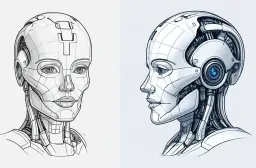
Draw with AI: Ultimate Guide to AI Art
Drawing has always been a powerful form of self-expression, but in today’s digital age, artificial intelligence (AI) is revolutionizing how we create art. As more tools emerge, creative beginners are learning how to draw with AI in ways that are not only fun but also remarkably easy. In this guide, we will explore AI drawing techniques and break down the process step-by-step, ensuring that you can use AI to create your own masterpieces.
Introduction to AI-Powered Drawing
With the rise of AI art generation tools, anyone, regardless of their artistic background, can bring ideas to life. Whether you want to sketch out a simple concept or create detailed artwork, AI-driven creative sketches can assist at every stage.
By leveraging machine learning for art creation, these tools analyze thousands of art styles and techniques, helping to simplify the drawing process. No more struggling with complex designs or perspective issues—AI-assisted illustration is here to help.
Why AI Drawing?
The appeal of artificial intelligence sketching lies in its accessibility. For beginners, AI can act as a tutor, guiding you through the fundamental steps of drawing while allowing you to refine your techniques. Automated artwork generation not only saves time but also empowers creativity by removing the barriers to starting from scratch.
Getting Started with AI Art
To begin, you’ll need an AI art tool that fits your needs. There are various AI-based creative drawing platforms available, such as Deep Dream Generator, Runway ML, and DALL·E. These platforms offer a variety of features, from neural network drawing to intelligent art design, making it easy to explore different styles.
Here are a few things to consider when selecting an AI tool:
- Ease of use: Choose a tool with a simple interface if you’re a beginner.
- Art styles: Look for tools that support diverse styles, whether you’re into abstract, realism, or cartoonish designs.
- Features: Tools like deep learning art platforms often come with additional options like color palette suggestions and AI sketch generation.
Step 1: Choose the Right AI Tool

Before you dive into your first AI-powered digital art project, the first step is finding the right software. Tools such as Artbreeder and DeepArt.io allow you to blend and modify existing artwork, while others, like DALL·E, let you generate images from text descriptions.
Here’s a comparison table of some popular tools to help you decide:
Tool Name
Features
Difficulty Level
Art Style Focus
Deep Dream
Neural networks, abstract styles
Easy
Abstract, surreal
DALL·E
Text-to-image generation
Moderate
Realism, creative concepts
Runway ML
Custom AI model training
Advanced
Multiple styles
Artbreeder
Image blending and morphing
Easy
Portraits, landscapes
Bold your focus on selecting the tool that matches your artistic goals. Once you’ve picked the right AI tool, you’re ready to move forward.
Step 2: Input Your Initial Concept
The magic of AI-assisted illustration starts with the initial concept. Depending on the tool you’re using, you may need to either upload a basic sketch, a random doodle, or simply input a textual description. AI art generation tools will analyze the input and suggest enhancements.
For example, if you use DALL·E, you can type “a futuristic cityscape during sunset,” and the AI will create a visual representation. Alternatively, you can upload a hand-drawn sketch and use the AI to fill in details like shading and textures.
Tips for Input:
- Clarity: Make sure your description or initial sketch is clear so the AI can work more efficiently.
- Experimentation: Don’t be afraid to try different prompts or sketches. AI tools allow for quick iterations.
- Customization: Many AI tools let you adjust the output. Play around with color palettes, brush strokes, and other artistic details.
Step 3: Fine-Tuning the Output

Once the AI generates the base image, it’s time to refine it. This is where your creativity comes into play. Even though automated artwork generation provides a fantastic starting point, tweaking the output can lead to more personalized results.
How to Adjust:
- Colors and shading: Use the built-in editor of your AI tool to adjust hues and shades.
- Details: Focus on specific elements like facial features or landscape textures.
- Textures and patterns: Some tools offer texture options that can transform your image into a work of art.
Just like human artists, AI-driven creative sketches can be fine-tuned to match your vision.
Step 4: Save and Share Your Creation
After making the necessary adjustments, save your artwork. Most AI sketch generation platforms offer high-resolution downloads so you can print or share your creations online.
Sharing Ideas:
- Join AI-based creative drawing communities to share your work.
- Post on social media platforms like Instagram or Twitter, using relevant hashtags like #AIArt or #MachineLearningArt.
- Consider contributing to online galleries or competitions focused on AI-powered digital art.
Common Challenges in AI Drawing
While AI makes drawing easier, there are still challenges that you may face as a beginner. Here are a few:
- Learning curve: Some tools require basic knowledge of AI or digital art. It may take time to learn how to get the best results.
- Artistic style limitations: AI tools can sometimes produce repetitive or generic results, especially if overused.
- Dependence on technology: Relying too much on AI can stifle personal creativity if you’re not careful.
“Art is not what you see, but what you make others see.” — Edgar Degas
FAQs
1. Can AI replace human artists?
AI can assist artists, but it cannot replace the human touch. While AI can create artwork based on data, it lacks the emotional depth that human creativity brings.
2. What is the best AI tool for beginners?
We recommend starting with Artbreeder or Deep Dream, as they offer simple interfaces and fun creative possibilities.
3. Is AI-generated art considered original?
AI-generated art can be considered original, especially when combined with human input. The uniqueness of the output depends on how creatively the AI is used.
4. Do I need technical skills to use AI drawing tools?
No, many AI tools are designed to be user-friendly, making them accessible to both beginners and professionals.
5. How can AI help improve my art skills?
AI can act as a tutor, suggesting improvements and guiding you through the drawing process. Over time, you can learn from its suggestions and apply those lessons to manual art.
Conclusion
In this guide, we’ve explored how to draw with artificial intelligence and the ways it can revolutionize your creative process. AI art generation tools make it easier than ever to start drawing, allowing you to focus on creativity without getting bogged down by technical details.
By following these steps, you can use AI to create stunning, personalized artwork in no time. Embrace the future of digital art, and let machine intelligence for drawing guide you toward your next masterpiece.
Key Takeaways
- AI-powered digital art allows anyone to create, regardless of skill level.
- Tools like DALL·E, Artbreeder, and Runway ML offer unique features for every style.
- Start with a basic sketch or description and let AI-based creative drawing tools do the rest.
- AI-assisted illustration is a collaboration between human creativity and machine precision.
- Use AI as a guide but continue refining your skills to grow as an artist.
Now that you’re equipped with the knowledge, it’s time to dive into the world of AI-driven creative sketches and start creating!

Emerging AI Technologies: Revolutionizing Industries
Artificial Intelligence (AI) is no longer a concept of the future—it’s a driving force shaping the present and rapidly transforming how industries operate. We’re living in an age where AI advancements are touching nearly every aspect of life, from healthcare to finance, and everything in between. The breakthrough AI innovations we see today are not just improving processes; they’re revolutionizing entire industries. Let’s dive into the world of emerging AI technologies and explore how they’re crafting the future of innovation and industry.
The Power of AI: Revolutionizing Industries
Artificial intelligence is creating significant ripples across industries, unlocking possibilities we once deemed impossible. At the heart of this transformation are cutting-edge AI technologies designed to make processes more efficient, intelligent, and personalized.
From predictive analytics in healthcare to AI-driven innovations in manufacturing, every sector is witnessing massive gains. But how exactly are state-of-the-art AI solutions making this possible? It boils down to their ability to learn, adapt, and process vast amounts of data at incredible speeds.
- AI has empowered the healthcare industry with precision diagnostics.
- In finance, advanced neural networks are used to detect fraud and automate trading.
- In logistics, AI-driven systems streamline supply chains and optimize routes.
Each of these applications showcases the transformative AI capabilities driving the future of industry.
Next-Gen Artificial Intelligence: The Future is Now
The next generation of AI is not just about machines doing tasks for us. It’s about machines learning how to improve those tasks autonomously. Next-gen artificial intelligence involves evolving machine learning techniques that go beyond mere automation—they allow AI systems to think, adapt, and respond to new information.
The rise of intelligent automation technologies is leading to more future-focused AI tools that are versatile, scalable, and capable of tackling complex challenges. Imagine AI systems that can manage entire cities’ traffic systems, optimize energy usage, or even create personalized education systems tailored to individual learning speeds. The possibilities are endless, and the AI advancements we see today are just the beginning.
Examples of Next-Gen AI Technologies
- Deep Learning: Leveraging advanced neural networks to simulate the human brain’s ability to learn.
- Reinforcement Learning: AI systems that learn through trial and error, improving their decision-making over time.
- Generative AI: AI that can create new content, from images to text, revolutionizing fields like design, marketing, and entertainment.
AI in the Business World: Driving Innovation

In the business world, AI has moved from a niche tool to a central player in decision-making processes. Today, companies rely on AI-driven innovations to enhance customer experience, optimize operations, and stay ahead in a competitive market.
Machine learning progress has made it possible for businesses to analyze consumer behavior more accurately, predict trends, and personalize services. This level of customization was unthinkable just a few years ago, but now it’s the standard expectation.
- AI-driven marketing: Businesses can use future-focused AI tools to tailor ads and promotions to individual customers.
- Supply chain optimization: AI helps predict demand, ensuring that businesses can meet customer needs without overstocking.
- Customer service automation: Chatbots and virtual assistants powered by revolutionary AI systems allow companies to engage with customers 24/7.
In short, AI is no longer just a tool for efficiency—it’s becoming the backbone of innovation in the corporate world.
The Role of AI in Shaping Future Trends
Looking ahead, the role of AI will only grow. Future AI trends point toward even greater integration of AI into everyday life, particularly in areas such as smart cities, autonomous vehicles, and AI-driven medical research.
We’re already seeing the machine learning progress that enables self-driving cars to navigate city streets and AI algorithms to assist doctors in diagnosing diseases. The future holds even more promise, with AI poised to improve intelligent automation technologies in agriculture, education, and public safety.
What makes AI so exciting is its versatility. It can be applied to any field, transforming not just how things are done but how we think about problems and solutions.
Ethical Considerations: Navigating the AI Revolution
As we embrace the AI advancements that shape our future, it’s also essential to navigate the ethical challenges that come with them. Breakthrough AI innovations can significantly impact privacy, security, and job markets. As AI systems become more capable, we must ensure that these technologies are used responsibly and transparently.
- Privacy concerns: AI systems that process large amounts of personal data must be designed with privacy protection in mind.
- Job displacement: While AI-driven innovations can increase productivity, they may also lead to job losses in certain sectors.
- Bias in AI: It’s crucial to ensure that AI systems are trained on unbiased data to prevent discriminatory outcomes.
As we explore the incredible possibilities that transformative AI capabilities bring, addressing these ethical concerns will be key to building a future where AI benefits everyone.
FAQs
What are emerging AI technologies?
Emerging AI technologies refer to the latest innovations and advancements in artificial intelligence, such as deep learning, generative AI, and intelligent automation systems.
How is AI transforming industries?
AI is revolutionizing industries by automating processes, improving efficiency, and enabling data-driven decision-making across sectors like healthcare, finance, and manufacturing.
What are the ethical concerns surrounding AI?
Some of the major ethical concerns include data privacy, potential job displacement, and bias in AI systems. It’s crucial to develop regulations that ensure AI is used responsibly.
What are next-gen artificial intelligence tools?
Next-gen AI tools include advanced technologies like reinforcement learning, deep neural networks, and machine learning systems capable of adapting and improving autonomously.
How will AI shape future trends?
AI is expected to drive future trends in areas like autonomous vehicles, personalized healthcare, smart cities, and sustainable agriculture, fundamentally transforming how we live and work.
Conclusion
The world of emerging AI technologies is vast, with the potential to reshape industries and drive innovations we’ve only begun to imagine. As AI advancements continue to evolve, they promise to revolutionize how we approach complex problems, making our systems more intelligent, efficient, and adaptable. However, as we embrace these cutting-edge AI technologies, it’s essential to navigate the ethical concerns and ensure that the benefits are distributed fairly across society.
Key Takeaways
- AI advancements are revolutionizing industries by automating processes and improving decision-making.
- Next-gen artificial intelligence goes beyond automation, enabling systems to learn and adapt autonomously.
- The future of AI promises innovations in fields like healthcare, smart cities, and personalized services.
- Ethical concerns such as privacy, bias, and job displacement need to be addressed as AI technologies evolve.
- AI is not just shaping the future—it’s driving the revolutionary AI systems that will define the next era of industry and innovation.

Emerging AI Technologies: The Future of Innovation
Artificial intelligence (AI) is rapidly transforming industries and reshaping our everyday lives. As we delve into the world of emerging AI technologies, it’s fascinating to see how next-generation AI innovations are pushing the boundaries of what’s possible. From groundbreaking advancements to state-of-the-art systems, AI continues to evolve at an unprecedented pace. In this article, we’ll explore the latest trends and developments in AI, shedding light on how these transformative technologies are impacting various sectors.
The Evolution of AI Technologies
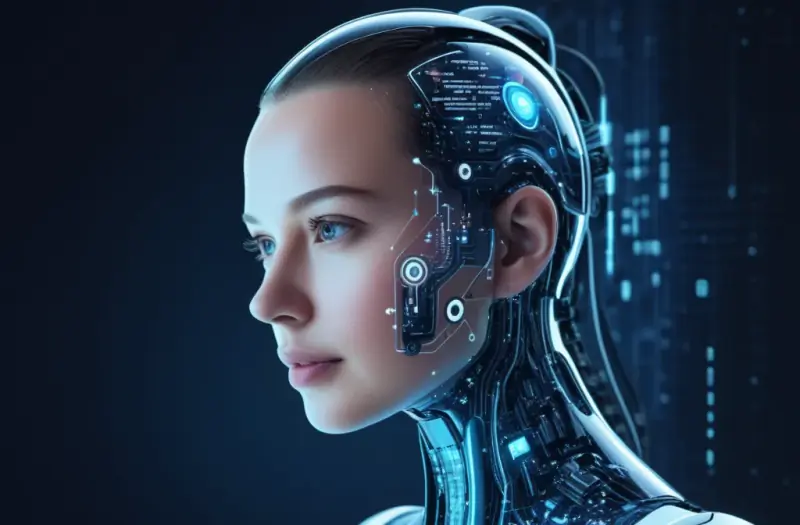
Historical Context and Recent Developments
To understand where emerging AI technologies are headed, we must first appreciate the journey that brought us here. The field of AI has progressed from early rule-based systems to sophisticated neural networks capable of impressive feats. Artificial neural networks and deep learning have been pivotal in this evolution, driving advancements in areas such as natural language processing (NLP) and computer vision.
Recent developments in AI have focused on improving efficiency and capability. For instance, transformer models, which are foundational for many modern NLP applications, have revolutionized how machines understand and generate human language. These models have led to breakthroughs in chatbots, translation services, and content generation, showcasing the transformative power of evolving AI tools.
Breakthrough AI Advancements
Several breakthrough AI advancements are reshaping industries and creating new possibilities. One notable area is reinforcement learning, where AI systems learn to make decisions through trial and error. This technique has been used to develop advanced game-playing agents and autonomous systems, demonstrating its potential in complex, dynamic environments.
Another significant advancement is generative adversarial networks (GANs). GANs are a class of AI algorithms that generate realistic images, videos, and other media by learning from existing data. This technology is being employed in creative fields, including art and design, where it helps in generating novel content and enhancing creative workflows.
Emerging AI Trends

Next-Generation AI Innovations
The future of AI is bright with next-generation innovations on the horizon. Federated learning is one such innovation, allowing AI models to be trained across decentralized devices while preserving data privacy. This approach addresses concerns about data security and privacy, making it particularly relevant for applications involving sensitive information.
Additionally, quantum computing holds promise for revolutionizing AI by enabling computations that are currently infeasible with classical computers. Quantum AI has the potential to solve complex problems faster and more efficiently, opening up new avenues for research and application.
Transformative AI Technologies
Several transformative AI technologies are making waves across various domains. Explainable AI (XAI), for example, focuses on making AI systems more transparent and understandable to humans. This is crucial for building trust in AI applications, especially in critical areas like healthcare and finance.
Augmented reality (AR) and virtual reality (VR) are also leveraging AI to create immersive experiences. AI-driven AR and VR systems enhance user interaction by providing personalized and context-aware content, making these technologies more intuitive and engaging.
Innovative AI Applications
AI in Healthcare
AI is making significant strides in healthcare, with applications ranging from diagnostic tools to personalized treatment plans. AI-powered imaging systems assist radiologists in detecting abnormalities with higher accuracy, while predictive analytics help in forecasting disease outbreaks and patient outcomes.
In drug discovery, AI accelerates the process by analyzing vast amounts of data to identify potential compounds and predict their effectiveness. This innovative approach reduces the time and cost associated with developing new medications, potentially leading to faster cures and treatments.
AI in Finance
The finance industry is also benefiting from advanced AI technologies. Algorithmic trading systems use AI to analyze market data and execute trades at high speeds, optimizing investment strategies and maximizing returns.
Additionally, AI-driven fraud detection systems enhance security by identifying unusual patterns and potential threats in real-time. These systems continuously learn from new data, improving their accuracy and effectiveness over time.
FAQs
What are emerging artificial intelligence technologies?
Emerging artificial intelligence technologies refer to the latest advancements and innovations in AI, including new techniques, tools, and applications that are shaping the future of the field.
How are next-generation AI innovations impacting industries?
Next-generation AI innovations are transforming industries by introducing advanced capabilities, such as improved efficiency, enhanced decision-making, and new applications that drive growth and development.
What is the role of federated learning in AI?
Federated learning allows AI models to be trained on decentralized devices while preserving data privacy, making it a crucial technology for applications involving sensitive information.
What are generative adversarial networks (GANs)?
Generative adversarial networks (GANs) are AI algorithms that generate realistic media by learning from existing data, and they are used in various creative and design applications.
How does quantum computing influence AI?
Quantum computing has the potential to revolutionize AI by enabling faster and more efficient computations, allowing for the solving of complex problems that are currently beyond the reach of classical computers.
What is Explainable AI (XAI)?
Explainable AI (XAI) focuses on making AI systems more transparent and understandable, which is essential for building trust and ensuring the responsible use of AI technologies in critical areas.
How is AI used in healthcare?
AI is used in healthcare for diagnostic tools, personalized treatment plans, drug discovery, and predictive analytics, improving accuracy, efficiency, and outcomes in the medical field.
What are AI-powered imaging systems?
AI-powered imaging systems assist radiologists in detecting abnormalities by analyzing medical images with high accuracy, aiding in early diagnosis and treatment planning.
How does AI benefit the finance industry?
AI benefits the finance industry through algorithmic trading, fraud detection, and investment optimization, enhancing security, efficiency, and profitability in financial operations.
As we explore the realm of emerging AI technologies, it’s clear that we are on the brink of an exciting era filled with potential and opportunity. The advancements and innovations we are witnessing today are just the beginning of a transformative journey that will continue to evolve and redefine the future of technology.

Expert Interviews with AI: Insights & Automation
In today’s fast-paced world, businesses and organizations are increasingly turning to artificial intelligence (AI) to streamline processes and unlock new avenues for innovation. One of the most exciting developments in this space is AI-powered expert interviews, which allow for the collection of deep insights from industry leaders in a fraction of the time. In this article, we explore how Expert Interviews AI is revolutionizing how we gather expert opinions, the benefits it offers, and how businesses can leverage this cutting-edge technology for success.
What is Expert Interviews AI?
Expert Interviews AI refers to the use of artificial intelligence technologies to automate, enhance, and facilitate interviews with subject-matter experts. These systems use AI-driven expert insights to conduct interviews that would traditionally require significant time, effort, and human resources. By harnessing the power of machine learning and natural language processing (NLP), AI can simulate real-time conversations, analyze responses, and produce actionable insights in ways that were previously unimaginable.
Why is this a game-changer? With AI-assisted expert discussions, companies can conduct more frequent and comprehensive interviews, gathering valuable information that fuels decision-making and strategic planning.
Here are some key features of AI-powered expert interviews:
- Automated interview scheduling and transcription
- Advanced analysis of expert feedback
- Integration with knowledge management systems
- Enhanced scalability and consistency in expert data collection
How AI-Driven Expert Interviews Work
The process behind AI-enhanced expert panels is fascinating. These systems start by identifying relevant experts in a given field. They then use machine intelligence to guide the conversation, ensuring that all pertinent topics are covered while allowing for a dynamic, free-flowing discussion. The AI not only records the conversation but also analyzes it in real-time, highlighting key insights and actionable takeaways.
Here’s how it typically works:
- Expert identification: AI helps pinpoint the right experts for the topic based on various factors like experience, publications, and online presence.
- Question generation: Using AI-generated expert feedback, the system generates thoughtful, topic-specific questions.
- Data collection: The AI conducts the interview or assists a human interviewer by suggesting follow-up questions and ensuring that all key points are discussed.
- Analysis: Post-interview, the AI provides an in-depth analysis of the responses, identifying trends, opportunities, and potential risks.
The intelligent expert interviews process offers numerous benefits, including the ability to scale interviews across industries and geographical locations without the need for large teams or resources.
The Benefits of AI-Driven Expert Insights
The rise of AI-based expert knowledge sharing comes with numerous advantages. Whether you’re a startup, a multinational corporation, or an academic institution, Expert Interviews AI can transform the way you gather insights.
1. Increased efficiency: Traditional expert interviews require extensive time and preparation. With AI, the entire process—from identifying experts to analyzing responses—can be streamlined, allowing for faster data collection and insight generation.
2. Scalability: As businesses grow, the need for expert consultations increases. AI-mediated expert consultations allow organizations to scale their knowledge-gathering efforts without a proportional increase in costs.
3. Consistency in data analysis: AI eliminates human error and bias in the interpretation of interview data. This ensures that AI-influenced expert discussions produce consistent, actionable insights every time.
4. Cost-effectiveness: By automating much of the process, companies can reduce the costs associated with human interviews, while still gaining access to high-quality expert opinions.
How Businesses Are Using AI-Assisted Expert Discussions
Businesses across industries are using AI-enhanced expert panels to inform their decision-making processes. Here are just a few examples of how organizations are leveraging AI to unlock expert opinions using AI:
- Market research: Companies are using AI-integrated expert interviews to gather insights from industry leaders about emerging trends.
- Product development: AI can interview product experts and gather feedback, helping teams make data-driven decisions about features, pricing, and target markets.
- Healthcare: Healthcare providers use machine learning expert interviews to collect insights from medical professionals on new treatments and technologies.
In each of these cases, the use of AI-facilitated expert dialogues provides companies with deeper, more timely insights that can directly impact their bottom line.
AI-Enhanced Knowledge Exchange for Innovation
Innovation thrives on the exchange of knowledge, and AI-enhanced expert panels provide a platform for advanced AI expert interviews that foster collaboration and knowledge sharing. By using AI to manage and facilitate these conversations, businesses can gain access to expert Q&A with AI that spans disciplines and industries.
Imagine the possibilities of leveraging AI to connect experts from different fields, facilitating discussions that might not have been possible otherwise. Expert interviews automation can bridge gaps, bringing together the knowledge and insights needed to drive innovation forward.
The Future of Expert Interviews with AI
The future of Expert Interviews AI is bright, with more advanced capabilities on the horizon. As AI technology continues to evolve, we can expect even more sophisticated systems that will be able to handle complex interviews across multiple languages and domains. This means that AI-enhanced expert panels will become a staple in industries ranging from healthcare to finance and beyond.
Some emerging trends to watch for include:
- Multilingual capabilities: AI systems will soon be able to conduct interviews in multiple languages, breaking down barriers and expanding the reach of expert consultations.
- Deeper integration with AI systems: As AI continues to advance, expert interviews will become even more tightly integrated with other AI systems, allowing for real-time updates and cross-functional data sharing.
- Increased customization: Future AI-influenced expert discussions will be highly tailored to specific industries and topics, offering even more targeted insights.
FAQs
What is Expert Interviews AI?
Expert Interviews AI refers to the use of artificial intelligence to facilitate and automate interviews with experts, offering real-time analysis and insight collection.
How does AI help in expert interviews?
AI enhances expert interviews by automating the process of identifying experts, generating questions, conducting interviews, and analyzing responses.
What industries benefit from Expert Interviews AI?
Industries such as healthcare, finance, education, and market research benefit from AI-driven expert insights, using the technology to gather expert opinions efficiently.
Can AI interviews replace human-led interviews?
While AI interviews offer efficiency and scalability, they are often used to complement human-led interviews, providing deeper analysis and supporting decision-making.
What are the benefits of AI-generated expert feedback?
AI-generated feedback offers increased accuracy, consistency, and speed in analyzing expert responses, helping businesses make informed decisions quickly.
Conclusion
Expert Interviews AI is transforming the way we gather insights and drive innovation. By automating expert interviews and enhancing knowledge exchange through AI-powered systems, businesses can unlock new opportunities for growth and efficiency. As we move into the future, AI-enhanced expert consultations will play an even more significant role in decision-making processes across industries. The possibilities are endless, and the time to embrace this transformative technology is now.
Key Takeaways
- Expert Interviews AI leverages artificial intelligence to streamline and automate interviews with experts.
- The technology offers increased efficiency, scalability, and consistency in gathering expert opinions.
- Businesses across various industries use AI-driven expert insights to inform decisions and drive innovation.
- The future of Expert Interviews AI includes multilingual capabilities, deeper AI integration, and greater customization.
By adopting AI-enhanced expert panels, companies can unlock insights faster, more efficiently, and with greater accuracy than ever before.

Global AI Conferences: Upcoming Events & Summits
The world of artificial intelligence (AI) is evolving rapidly, and at the heart of this evolution are Global AI Conferences. These gatherings bring together thought leaders, innovators, researchers, and tech enthusiasts from around the globe. Through these events, we gain unique insights into the latest breakthroughs, emerging trends, and future possibilities in AI. As we attend these global AI events, we witness firsthand how they shape the trajectory of technological advancement.
The Role of Global AI Conferences in Driving Innovation
Attending global AI conferences has become a must for professionals in the tech industry. Why? Because these international AI summits serve as platforms where innovative ideas are exchanged, and groundbreaking technologies are unveiled. As participants, we benefit from a wealth of knowledge and collaboration opportunities that drive innovation across sectors.
Through presentations, panel discussions, and hands-on workshops, these worldwide AI symposiums allow us to dive deep into topics like machine learning, natural language processing (NLP), computer vision, and more. The global artificial intelligence forums provide a space where we can discuss how AI is transforming industries such as healthcare, finance, and transportation.
Moreover, the international AI congresses give us access to thought leadership that not only helps us keep pace with the latest trends but also encourages us to think critically about the ethical implications and governance of AI technology.
Key Global AI Events You Should Know About

Throughout the year, several high-profile global AI expos and AI industry conventions take place worldwide. These events are essential for staying ahead in the AI space and connecting with other professionals who share our passion for technology.
- NeurIPS (Conference on Neural Information Processing Systems): One of the largest and most influential AI conferences globally. This event focuses on cutting-edge AI research, with topics ranging from deep learning to reinforcement learning.
- AI & Big Data Expo: A comprehensive event that explores the intersection of AI and big data technologies. It’s an excellent place to network and learn how AI is impacting various sectors.
- The World Summit AI: As one of the top international AI gatherings, this summit provides insight into the state of AI across the globe, focusing on AI’s role in business, society, and beyond.
These global AI innovation forums offer not only learning opportunities but also avenues for professional growth through AI networking events. The chance to meet and collaborate with experts from diverse backgrounds adds immense value to these conferences.
Why Attending International AI Conferences Matters
Why should we attend global machine learning conferences? The benefits extend far beyond gaining technical knowledge. Here are some key reasons why these events are so important for our professional and personal growth:
- Networking opportunities: These events allow us to connect with other AI professionals, entrepreneurs, and investors. Building a network within the AI industry can lead to collaborations and partnerships that drive innovation.
- Access to exclusive insights: We get to hear directly from the thought leaders who are driving the AI revolution. Their perspectives help us understand where the industry is headed and how we can adapt to changes.
- Hands-on experience: Many global AI thought leadership gatherings offer workshops and labs that allow us to apply the latest AI tools and technologies in real-world scenarios. This hands-on approach is invaluable for both experienced professionals and newcomers to AI.
Attending international AI development conferences positions us at the forefront of AI innovation, ensuring we remain competitive and informed in an ever-changing technological landscape.
The Impact of Global AI Conferences on Industry Trends
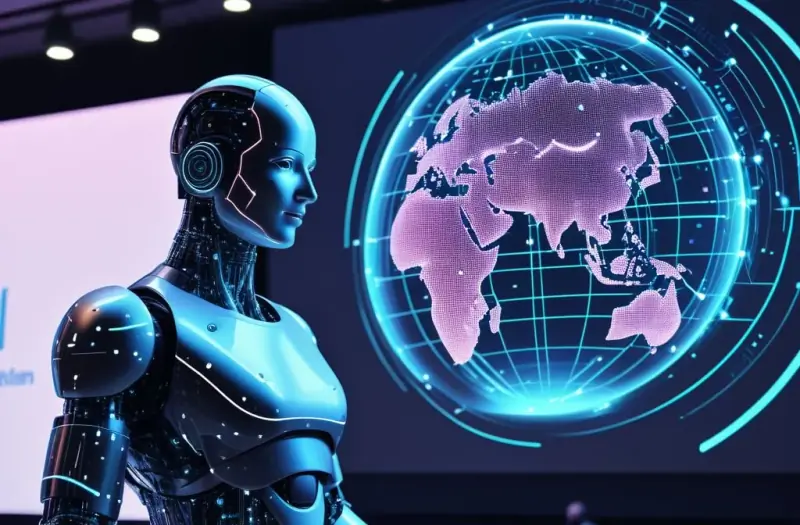
AI trends global conferences provide a clear view of the emerging trends and technologies that are set to define the future of AI. Whether it’s advancements in neural networks or breakthroughs in AI ethics, these global AI research conferences are where we see the future unfold.
One significant trend highlighted in recent global AI thought leadership summits is the move towards responsible AI. As AI continues to evolve, so does the focus on ethical AI development and AI transparency. Attending these events gives us a deeper understanding of how we can integrate these principles into our work.
Another key trend we’ve observed at AI technology summits is the rise of AI-powered automation. From autonomous vehicles to AI-driven decision-making systems, automation is at the forefront of industry discussions. By attending global AI networking events, we not only learn about these advancements but also explore how to apply them in our own organizations.
What to Expect at a Global AI Conference
For those who have never attended a global AI congress, it can be an eye-opening experience. Here’s what we can expect:
- Keynote speakers: Leading AI researchers and industry pioneers share their insights into the future of AI. These talks are often the highlight of the event.
- Panel discussions: Experts from various sectors come together to discuss the latest AI technologies and trends. Topics can range from AI in healthcare to AI ethics and governance.
- Networking sessions: A chance to connect with professionals from around the world. These informal gatherings are often where the most meaningful connections are made.
- Exhibitions: Many conferences feature exhibitors showcasing the latest AI technologies, products, and services. It’s a great opportunity to see cutting-edge tools in action.
By participating in these events, we not only gain knowledge but also contribute to shaping the future of AI.
FAQs
What are global AI conferences?
Global AI conferences are events where experts, researchers, and professionals in the AI industry gather to discuss advancements, share research, and explore emerging trends.
Why are global AI conferences important?
They provide a platform for collaboration, learning, and innovation, allowing professionals to stay updated on the latest AI trends and technologies.
Who attends global AI conferences?
Attendees range from AI researchers, data scientists, and developers to business leaders, investors, and government officials interested in AI’s impact on their respective fields.
How can I benefit from attending an international AI summit?
By attending, you gain access to exclusive insights, networking opportunities, and hands-on experiences that can accelerate your professional development and innovation efforts.
What are some key global AI events?
Key events include NeurIPS, AI & Big Data Expo, and the World Summit AI, among others.
Conclusion
Attending Global AI Conferences is a vital part of staying ahead in today’s rapidly evolving technological landscape. Through these global artificial intelligence meetups, we gain not only knowledge but also the opportunity to collaborate with others who are driving the future of AI. Whether we’re looking to learn about the latest AI trends or seeking to expand our professional network, these international AI gatherings provide immense value.
Key Takeaways
- Global AI conferences are essential for staying informed about the latest advancements in AI technology.
- They offer unparalleled networking opportunities, allowing us to connect with industry leaders and innovators.
- Attending these events provides exclusive insights into emerging trends and technologies that are shaping the future of AI.
- Global AI summits emphasize both technical advancements and the ethical challenges associated with AI development.
- By participating in international AI events, we position ourselves at the forefront of the AI revolution, driving innovation and progress in our respective fields.

Healthcare AI: Revolutionizing Patient Care
Introduction
In recent years, healthcare artificial intelligence (AI) has emerged as a groundbreaking force in modern medicine. The integration of AI into healthcare systems is not just a trend but a significant shift that is transforming how patient care is delivered. As we navigate through this new era of medical innovation, it’s essential to understand how AI is revolutionizing patient care and the profound impacts it has on the healthcare industry.
Healthcare AI encompasses a range of technologies designed to improve medical outcomes, streamline operations, and enhance patient experiences. From medical AI algorithms that assist in diagnosing diseases to health technology AI systems that optimize treatment plans, the potential benefits of AI in healthcare are immense. In this article, we will explore the various facets of AI in medicine and how it is reshaping the future of patient care.
The Rise of Healthcare AI

Transformative Technologies in Healthcare
Healthcare AI has made remarkable strides in recent years, thanks to advancements in healthcare machine learning and clinical AI. These technologies enable computers to learn from vast amounts of health data, allowing for more accurate diagnoses and personalized treatments.
- Medical Decision AI: AI systems can now analyze medical data to provide recommendations for treatment plans. These systems use medical predictive analytics to foresee potential health issues before they become critical.
- Health Data AI: By processing large datasets, AI can uncover patterns and insights that human practitioners might miss. This capability enhances diagnostic accuracy and helps in developing targeted therapies.
- Healthcare Automation: AI-driven automation tools streamline administrative tasks, reducing the burden on healthcare professionals and allowing them to focus more on patient care.
Benefits of AI in Patient Diagnosis
The application of AI in patient diagnosis has been a game-changer. Through medical machine intelligence, AI tools can assist in identifying diseases with high precision.
- Early Detection: AI algorithms can analyze medical images and detect early signs of diseases such as cancer, often before symptoms appear.
- Improved Accuracy: With health analytics AI, the risk of human error in diagnostics is significantly reduced. AI systems cross-reference patient data with a vast database of medical knowledge to ensure accurate results.
- Personalized Medicine: AI helps in tailoring treatments to individual patients based on their unique health data, leading to more effective and personalized care plans.
Enhancing Patient Experience with AI
Streamlining Healthcare Operations
One of the significant impacts of AI in medicine is its ability to enhance patient experience by streamlining healthcare operations.
- Patient Scheduling: AI-powered systems can manage appointment scheduling, reducing wait times and optimizing the use of healthcare resources.
- Virtual Health Assistants: Chatbots and virtual assistants powered by intelligent healthcare systems provide patients with timely information and support, improving overall patient engagement.
- Data Management: AI tools simplify the management of electronic health records (EHRs), making it easier for healthcare providers to access and update patient information.
Improving Patient Outcomes
AI’s role in improving patient outcomes cannot be overstated. By leveraging health informatics AI and medical predictive analytics, healthcare providers can offer better care.
- Predictive Analytics: AI systems analyze patient data to predict potential health issues, allowing for proactive interventions.
- Treatment Optimization: AI-driven insights help in selecting the most effective treatments based on patient-specific data.
- Remote Monitoring: AI enables continuous monitoring of patients’ health conditions through wearable devices, leading to timely interventions and better management of chronic diseases.
Challenges and Considerations

Data Privacy and Security
With the integration of AI in healthcare, data privacy and security are paramount concerns. Ensuring that patient information is protected from unauthorized access is crucial for maintaining trust in AI systems.
- Compliance: Healthcare AI systems must comply with regulations such as HIPAA (Health Insurance Portability and Accountability Act) to safeguard patient data.
- Encryption: Implementing robust encryption methods helps in protecting sensitive health information from cyber threats.
Ethical Implications
The use of AI in healthcare also raises ethical questions. Ensuring that AI systems are used responsibly and without bias is essential for equitable patient care.
- Bias in AI: Addressing potential biases in AI algorithms is necessary to ensure fair and unbiased treatment for all patients.
- Transparency: Maintaining transparency about how AI systems make decisions helps in building trust and ensuring ethical use of technology.
Future Directions for Healthcare AI
Innovations on the Horizon
The future of healthcare artificial intelligence holds exciting possibilities. As technology continues to advance, we can expect new innovations that will further enhance patient care.
- AI-Driven Drug Development: AI has the potential to accelerate drug discovery and development, leading to faster availability of new treatments.
- Enhanced Diagnostic Tools: Future AI systems will offer even more advanced diagnostic capabilities, improving early detection and treatment of diseases.
- Integration with Genomics: Combining AI with genomics will enable personalized medicine to reach new heights, providing tailored treatments based on genetic information.
The Role of AI in Post-Pandemic Healthcare
The COVID-19 pandemic has highlighted the importance of technology in healthcare. AI will play a crucial role in post-pandemic recovery and preparedness.
- Pandemic Response: AI tools can help in monitoring and predicting disease outbreaks, improving public health responses.
- Telemedicine: The rise of telemedicine, supported by AI, will continue to shape the future of healthcare, offering remote care options and reducing the need for in-person visits.
FAQs
What is Healthcare AI?
Healthcare AI refers to the use of artificial intelligence technologies to improve various aspects of healthcare, including diagnosis, treatment, and patient management.
How does AI improve patient diagnosis?
AI enhances patient diagnosis by analyzing medical data and images to identify diseases with high accuracy and early detection.
What are the benefits of AI in patient care?
AI benefits patient care by providing accurate diagnoses, personalized treatment plans, streamlining operations, and improving overall patient outcomes.
Are there any ethical concerns with Healthcare AI?
Yes, ethical concerns include data privacy, security, and potential biases in AI algorithms. Addressing these concerns is crucial for responsible use of AI in healthcare.
How will AI impact the future of healthcare?
AI is expected to drive innovations in drug development, diagnostics, and personalized medicine, shaping the future of healthcare and improving patient care.
Conclusion
The impact of healthcare AI on modern medicine is profound and far-reaching. By revolutionizing patient care through improved diagnostics, personalized treatments, and streamlined operations, AI is paving the way for a new era in healthcare. As we continue to explore the possibilities of medical AI, it is crucial to address challenges and ethical considerations to ensure that these technologies are used responsibly. The future of healthcare, enhanced by AI, promises to offer even greater advancements and opportunities for improving patient care.
Key Takeaways
- Healthcare AI is transforming patient care through advanced diagnostics, personalized treatments, and operational efficiency.
- Medical AI and health technology AI offer significant benefits, including early detection of diseases and improved accuracy in diagnostics.
- Healthcare automation and intelligent healthcare systems enhance patient experiences and streamline healthcare operations.
- Addressing data privacy, security, and ethical implications is essential for the responsible use of AI in healthcare.
- Future innovations in AI, including drug development and integration with genomics, will continue to shape the future of healthcare.

How AI Boosts Cybersecurity: Benefits & Examples
In today’s digital landscape, the rise of sophisticated cyber threats has made it crucial for organizations to adopt more advanced measures to protect their sensitive information. Traditional cybersecurity methods, while still relevant, are no longer enough to combat these evolving threats. Artificial intelligence (AI) is revolutionizing cybersecurity by offering cutting-edge solutions that can help mitigate risks and enhance protection. Let’s explore how AI-driven security systems are transforming the way we defend against cyber threats.
The Growing Role of AI in Cybersecurity
AI’s ability to analyze vast amounts of data, detect patterns, and adapt quickly makes it a powerful tool for cybersecurity. Unlike traditional methods, which rely heavily on human intervention and predefined rules, AI-powered cybersecurity tools can autonomously identify and respond to threats in real-time. This AI-enhanced threat detection ensures that potential vulnerabilities are addressed before they can be exploited.
Moreover, machine learning in cybersecurity allows systems to continually improve their defenses based on new data. As AI systems encounter new forms of attacks, they learn from these experiences, enabling more robust protection over time. This dynamic learning process is key to staying ahead of constantly evolving cyber threats.
Benefits of AI-Driven Cybersecurity Systems
- Automated cyber threat response: AI systems can respond to security breaches faster than humans, minimizing damage.
- AI-based network protection: AI can monitor and protect networks by identifying unusual activities or traffic patterns.
- AI for cyber threat prevention: Predictive algorithms powered by AI can help prevent attacks by identifying vulnerabilities before they are exploited.
AI-Enhanced Threat Detection

One of the most significant advantages of using AI in cybersecurity is its ability to detect threats with unparalleled speed and accuracy. AI threat intelligence enables systems to identify patterns of malicious behavior across vast networks, making it easier to detect even the most subtle attempts at infiltration. This AI-driven intrusion detection provides a proactive layer of security that traditional methods simply cannot match.
Incorporating AI cybersecurity solutions allows organizations to detect threats in real-time, analyze potential risks, and respond swiftly. These systems can also distinguish between legitimate and malicious activities, reducing the number of false positives and ensuring that security teams focus on real threats.
How AI Threat Detection Works
- Pattern recognition: AI identifies abnormal patterns in network traffic or user behavior that could indicate a potential threat.
- Anomaly detection: AI can flag suspicious activities that deviate from the norm, helping to catch threats early.
- Behavioral analysis: AI systems analyze user behavior to identify any actions that could pose security risks.
Machine Learning and Its Impact on Cybersecurity
Machine learning in cybersecurity plays a crucial role in improving threat detection and response capabilities. By continuously analyzing data from previous attacks, intelligent cybersecurity systems can identify new attack vectors and strengthen defenses automatically. As cyber threats evolve, machine learning models help ensure that security systems remain effective over time.
For example, AI-based network protection uses machine learning algorithms to monitor network traffic and identify anomalies. Over time, these systems become more accurate in detecting threats, as they learn from each incident. This continuous improvement process allows for more effective protection against emerging threats.
Advantages of Machine Learning in Cybersecurity
- Adaptive defenses: Machine learning allows systems to adapt to new threats without manual intervention.
- Improved accuracy: The more data AI systems analyze, the better they become at identifying and responding to threats.
- Real-time monitoring: Machine learning models enable continuous monitoring of networks and systems, ensuring immediate detection of any suspicious activities.
AI-Powered Cybersecurity Tools for Threat Prevention

AI-powered cybersecurity tools are revolutionizing threat prevention by identifying potential vulnerabilities before they can be exploited. These tools can analyze millions of data points, from network traffic to system logs, to identify weak points in an organization’s defenses. By using AI in security monitoring, companies can stay one step ahead of cybercriminals.
Moreover, AI in digital security provides continuous protection, as it can monitor systems 24/7 without fatigue. This constant vigilance helps organizations avoid the delays and oversights that often occur with human-led security operations.
Key AI Cybersecurity Tools
- AI-driven security systems: These systems can detect and respond to threats autonomously, reducing the need for human intervention.
- AI threat intelligence: AI tools gather and analyze data from various sources to predict and prevent potential attacks.
- Automated incident response: AI can automate responses to specific threats, minimizing damage and allowing security teams to focus on more complex issues.
Mitigating Risks with AI in Cybersecurity
While AI offers significant advantages in enhancing cybersecurity, it’s essential to recognize that it’s not a silver bullet. Cybercriminals are also leveraging AI to develop more sophisticated attacks, and organizations must stay vigilant to ensure they are not outmatched.
However, by incorporating AI cybersecurity solutions into their defenses, companies can significantly reduce the risk of successful attacks. AI in cyber threat prevention not only helps stop threats before they materialize but also minimizes the damage caused by breaches that do occur.
Challenges and Considerations
- AI-based attacks: Cybercriminals are using AI to develop more complex attacks that can evade traditional defenses.
- Data privacy concerns: AI systems rely on vast amounts of data, raising concerns about how personal information is handled and protected.
- Over-reliance on automation: While AI can enhance security, it’s important not to rely solely on automated systems, as human oversight is still necessary for complex decisions.
FAQs
How can AI improve cybersecurity?
AI improves cybersecurity by automating threat detection, analyzing vast amounts of data, and responding to incidents in real-time. This reduces the workload on human security teams and improves response times.
What are the risks of using AI in cybersecurity?
The risks of using AI in cybersecurity include potential AI-based attacks, data privacy concerns, and over-reliance on automation without sufficient human oversight.
Can AI completely replace human involvement in cybersecurity?
No, AI cannot completely replace human involvement. While AI enhances cybersecurity by automating many tasks, human expertise is still needed for decision-making and handling complex security challenges.
Conclusion
As cyber threats become more sophisticated, the need for advanced security measures has never been more critical. AI in cybersecurity is revolutionizing the way we protect our digital assets, offering AI-enhanced threat detection and automated cyber threat response to stay ahead of cybercriminals. However, while AI-powered cybersecurity tools provide significant advantages, it’s important to maintain a balanced approach that combines AI-driven systems with human expertise.
Key Takeaways
- AI-driven security systems offer faster and more accurate threat detection compared to traditional methods.
- Machine learning in cybersecurity allows systems to adapt to new threats over time.
- AI-powered cybersecurity tools help prevent attacks by identifying vulnerabilities before they are exploited.
- While AI significantly enhances cybersecurity, human oversight remains essential for handling complex security challenges.

How AI Can Transform Your Business: A Guide
Artificial intelligence (AI) has rapidly become a transformative force for businesses worldwide. As competition intensifies, companies are seeking smarter ways to innovate, improve efficiency, and deliver better customer experiences. In this comprehensive guide, we’ll explore how AI business solutions can help your company thrive, drive growth, and achieve long-term success.
Understanding AI and Its Role in Business
Artificial intelligence, at its core, refers to the simulation of human intelligence by machines. From machine learning for business to AI-driven decision-making, the integration of this technology into the corporate world has proven to be a game-changer.
In the past, AI might have seemed like a luxury reserved for tech giants, but today, AI-powered business tools are accessible to businesses of all sizes. By leveraging AI for operational efficiency and growth, companies can enhance their daily operations, optimize processes, and make more informed decisions.
Benefits of AI for Businesses
Implementing AI in your business can yield the following advantages:
- Automation of repetitive tasks: AI can handle time-consuming processes, freeing up human resources for more strategic roles.
- Improved customer service: AI-driven chatbots and virtual assistants provide 24/7 support, improving customer satisfaction.
- Advanced analytics: AI analyzes large volumes of data quickly, providing valuable insights for decision-making.
AI for Operational Efficiency
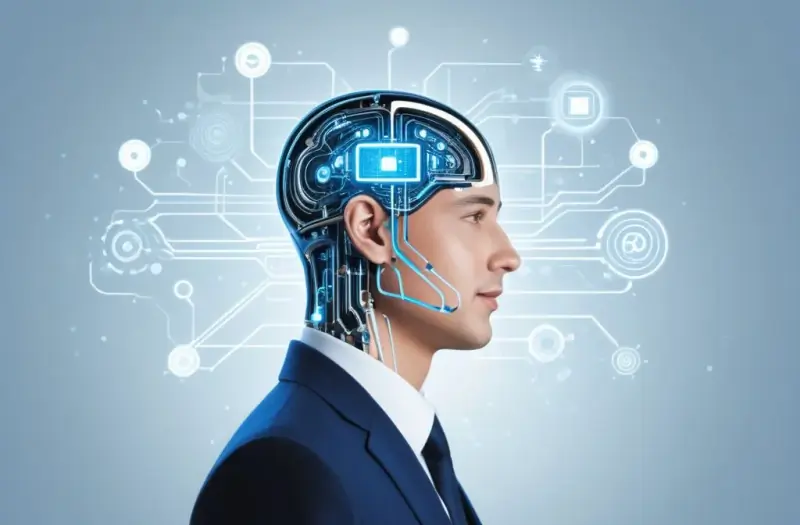 One of the most significant benefits of AI is its ability to enhance business operations. Whether you’re looking to streamline internal processes or boost productivity, AI can help.
One of the most significant benefits of AI is its ability to enhance business operations. Whether you’re looking to streamline internal processes or boost productivity, AI can help.
AI-automated processes can take over repetitive and mundane tasks, such as data entry, invoicing, and even some aspects of HR management. These automated systems work continuously without error, reducing the time spent on manual tasks and cutting operational costs.
In addition, AI-enhanced decision making allows businesses to respond to challenges faster and more accurately. By analyzing historical data and identifying trends, AI tools can offer intelligent business solutions that would be impossible for humans to uncover on their own.
Examples of AI-Driven Operational Efficiency
- Supply chain optimization: AI helps predict demand, manage inventory, and streamline logistics.
- Predictive maintenance: Machine learning algorithms can predict equipment failures, reducing downtime and saving costs.
- Financial forecasting: AI improves accuracy in financial projections and budgeting.
AI-Powered Analytics and Insights
Harnessing AI-powered analytics is key to gaining a competitive advantage in today’s fast-paced business world. These tools not only analyze past performance but also predict future trends, enabling businesses to stay ahead of the curve.
By using AI business insights, companies can identify potential growth opportunities and areas for improvement. For instance, AI can detect patterns in customer behavior, helping businesses optimize marketing campaigns and enhance the customer journey.
Moreover, AI’s ability to process vast amounts of data in real time allows businesses to make faster, more accurate decisions. This leads to improved performance across all areas of the company.
AI Business Insights in Action
- Market analysis: AI algorithms scan market data to uncover opportunities, allowing companies to adjust their strategies accordingly.
- Customer behavior predictions: AI analyzes customer preferences and behaviors, offering insights that help personalize marketing efforts.
- Sales forecasting: AI-powered analytics provide more accurate sales predictions, helping businesses allocate resources more effectively.
AI for Customer Service
 In the modern business landscape, providing exceptional customer service is essential for staying competitive. AI for customer service offers a variety of solutions, including chatbots, virtual assistants, and automated support systems. These tools help businesses provide quick, accurate responses to customer inquiries, improving overall satisfaction.
In the modern business landscape, providing exceptional customer service is essential for staying competitive. AI for customer service offers a variety of solutions, including chatbots, virtual assistants, and automated support systems. These tools help businesses provide quick, accurate responses to customer inquiries, improving overall satisfaction.
Chatbots powered by AI are capable of handling a wide range of customer queries, from basic product information to troubleshooting. This not only saves time for customer service representatives but also ensures customers receive timely support.
AI-driven customer support systems also have the ability to learn from interactions, improving their responses over time and delivering a more personalized experience. This leads to increased customer loyalty and retention.
Advantages of AI-Powered Customer Service
- 24/7 availability: AI-driven systems can provide customer support around the clock.
- Faster response times: AI can instantly respond to common queries, reducing wait times.
- Personalization: AI analyzes customer data to offer tailored solutions and recommendations.
AI-Driven Innovation and Business Strategy
For companies seeking a competitive edge, AI in business innovation is becoming indispensable. From developing new products to refining business models, AI is fueling innovation in various sectors. With AI-powered business tools, businesses can experiment, adapt, and innovate faster than ever before.
AI is also being used to shape business strategy. By leveraging AI-driven competitive advantage, companies can predict industry trends, analyze competitors, and make data-driven decisions that propel them to the forefront of their market.
AI offers not just technological advancement but also a strategic edge. By incorporating AI for business strategy, organizations can anticipate challenges and seize new opportunities.
Key Areas of AI-Driven Innovation
- Product development: AI identifies market gaps and customer needs, helping businesses innovate new products or improve existing ones.
- Personalization: AI tailors products and services based on individual customer preferences, enhancing the user experience.
- Agile business models: AI empowers businesses to adapt quickly to changing market conditions and customer demands.
AI for Business Management and Productivity
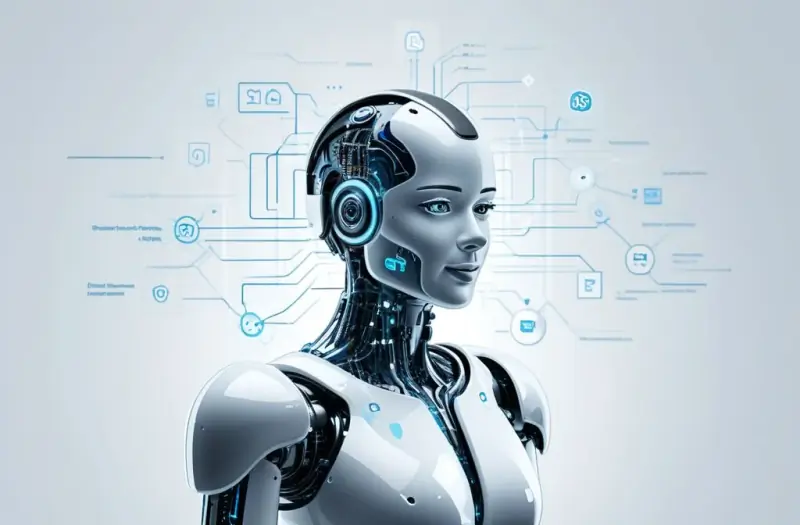 Incorporating AI in business management has proven to be a key factor in improving productivity. From managing teams to optimizing workflows, AI offers smart solutions that simplify complex tasks and promote efficiency.
Incorporating AI in business management has proven to be a key factor in improving productivity. From managing teams to optimizing workflows, AI offers smart solutions that simplify complex tasks and promote efficiency.
For example, AI can be used in project management tools to assign tasks based on employee skill sets, monitor progress, and provide real-time updates. AI-driven productivity tools also analyze performance data to recommend ways to enhance efficiency, ensuring that teams stay on track and meet deadlines.
By adopting AI business transformation techniques, companies can expect to see improved outcomes across the board, from increased revenue to greater employee satisfaction.
How AI Improves Productivity
- Task automation: AI automates administrative tasks, freeing up employees to focus on higher-value activities.
- Employee performance tracking: AI-powered tools monitor and optimize team performance in real-time.
- Project management: AI assists in planning, scheduling, and resource allocation to ensure projects are completed efficiently.
FAQs About AI in Business
How can AI help my business grow?
AI can help your business grow by automating processes, improving decision-making, enhancing customer service, and offering insights into market trends.
What are the best AI tools for small businesses?
Some of the best AI tools for small businesses include AI-driven customer support platforms, AI-powered analytics software, and AI-based marketing automation tools.
Is AI expensive to implement in a business?
The cost of AI implementation can vary, but many affordable AI solutions are available for businesses of all sizes, including cloud-based AI tools and platforms.
Can AI improve customer satisfaction?
Yes, AI can significantly improve customer satisfaction by providing faster, more accurate responses and offering personalized experiences.
Conclusion
AI is no longer just a buzzword—it’s a powerful tool that can revolutionize how businesses operate. From AI-driven business growth to AI-powered business transformation, the potential benefits are vast and varied. By integrating AI into daily operations, companies can improve efficiency, gain a competitive edge, and position themselves for long-term success.
Key Takeaways
- AI business solutions can automate processes, improve decision-making, and enhance customer experiences.
- Implementing AI-powered analytics helps businesses make data-driven decisions and predict future trends.
- AI for customer service offers 24/7 support, improving customer satisfaction and retention.
- Using AI for business strategy and innovation can help companies stay competitive and adapt to changing markets.
- AI-driven productivity tools optimize workflows and enhance overall business efficiency.
By embracing the power of AI, your business can achieve greater success, drive growth, and stay ahead of the competition.

How AI Could Empower Any Business to Innovate
Introduction
In today’s rapidly evolving world, artificial intelligence (AI) has moved from an abstract concept to a vital tool for enhancing business operations, fostering innovation, and driving growth. Many organizations across industries are discovering the potential of AI to improve efficiency, boost decision-making, and even transform their entire business models. As we look ahead, AI for business growth is not just a trend but a critical component for staying competitive.
Our goal in this article is to explore how AI can become a strategic asset, enabling businesses of all sizes to innovate in unique and meaningful ways. With the right approach, AI can empower companies to not only enhance their existing processes but also to create new products, reach untapped markets, and engage customers like never before.
Leveraging AI for Business Growth
 Artificial intelligence is revolutionizing how companies operate and grow. Through AI-powered business solutions, companies can streamline complex processes and create opportunities for expansion. AI offers the ability to analyze vast datasets, recognize patterns, and generate insights that human teams might overlook.
Artificial intelligence is revolutionizing how companies operate and grow. Through AI-powered business solutions, companies can streamline complex processes and create opportunities for expansion. AI offers the ability to analyze vast datasets, recognize patterns, and generate insights that human teams might overlook.
Some benefits of AI for business growth include:
- Enhanced customer experiences through personalized recommendations and interactions.
- Increased operational efficiency with intelligent business automation.
- Real-time data processing, which enables proactive decision-making.
Whether it’s small enterprises or large corporations, the integration of AI helps companies adapt faster to changing markets and customer preferences.
Read More : How AI is Changing Digital Marketing (anchor text keyword utama)
AI-Driven Innovation for Companies
One of the biggest strengths of AI is its ability to foster AI-driven innovation for companies. This innovation extends beyond the development of new products—it includes reimagining business models, enhancing customer service, and leveraging data insights to gain a competitive edge. AI helps companies test ideas quickly, simulate outcomes, and pivot strategies based on data-backed insights.
For example, machine learning and predictive analytics empower businesses to:
- Anticipate customer needs before they arise.
- Optimize supply chains to reduce costs and delivery times.
- Identify new trends and shifts in customer behavior.
With AI applications in business, companies can transition from reactive strategies to proactive growth plans, resulting in better resource allocation, reduced risks, and an innovative approach to solving complex challenges.
Intelligent Automation for Improved Efficiency
Intelligent business automation powered by AI is reshaping how companies handle routine tasks, freeing up valuable time for more strategic initiatives. By automating tasks like customer service inquiries, data processing, and inventory management, companies can reduce operational costs and increase productivity. This smart technology is particularly beneficial for companies facing labor shortages or those looking to reduce overhead.
Automation can provide:
- Consistent, error-free task execution.
- Scalable solutions that adapt to changing business needs.
- Enhanced customer support with chatbots and virtual assistants.
AI-enhanced operations mean employees can focus on higher-level tasks, such as strategy development and creative problem-solving, while AI takes care of repetitive functions.
Types of Business Automation with AI
- Process Automation – Automating back-office tasks such as data entry and reporting.
- Service Automation – Deploying AI-driven chatbots to manage customer service queries.
- Decision Automation – Using predictive analytics for business to make real-time decisions.
Enhanced Decision-Making with AI
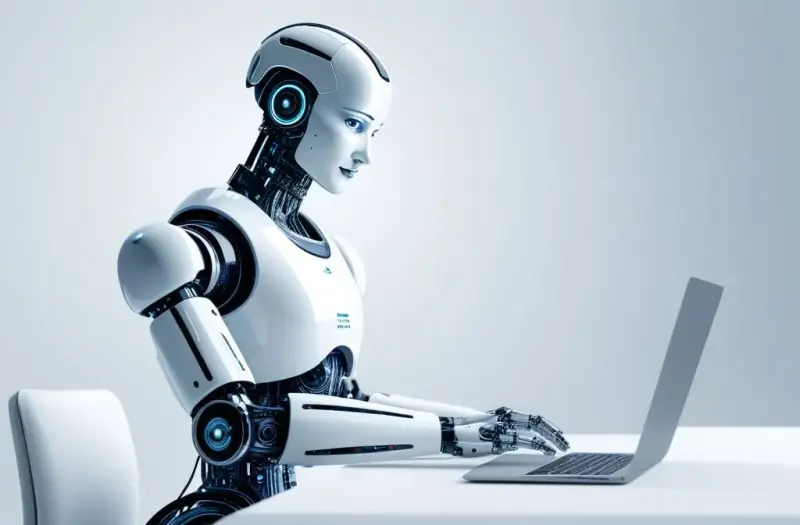 Making data-driven decisions has always been essential for business success, and with AI, this capability has reached new heights. AI’s ability to process and interpret vast amounts of information allows for more accurate and timely insights, supporting executives and teams in making informed decisions.
Making data-driven decisions has always been essential for business success, and with AI, this capability has reached new heights. AI’s ability to process and interpret vast amounts of information allows for more accurate and timely insights, supporting executives and teams in making informed decisions.
AI-enhanced decision-making has applications across various departments, including:
- Marketing: Identifying the best channels and timing for campaigns.
- Sales: Analyzing purchasing patterns to tailor promotions.
- Operations: Using machine learning in corporate development to optimize workflows.
By leveraging advanced analytics in business, companies can reduce uncertainties, set realistic goals, and fine-tune their strategies based on reliable data.
Benefits of AI in Decision-Making
- Real-time access to data insights.
- Enhanced forecasting capabilities.
- The ability to model different scenarios and outcomes.
Predictive Analytics for Competitive Advantage
With AI and digital transformation, businesses are not only improving their internal processes but also gaining an edge in the marketplace. Predictive analytics for business uses historical data to forecast future events, allowing companies to stay ahead of competitors by anticipating industry shifts and customer demands.
Predictive analytics plays a crucial role in:
- Market Analysis – Forecasting market trends and consumer behavior.
- Inventory Management – Reducing costs by predicting demand and managing stock levels efficiently.
- Risk Assessment – Anticipating potential risks and implementing mitigation strategies.
By harnessing predictive analytics, companies are empowered to act rather than react, giving them a substantial advantage in an increasingly competitive landscape.
AI and Digital Transformation in Corporate Strategy
Artificial intelligence in enterprise goes hand-in-hand with digital transformation. AI helps companies build a forward-thinking corporate strategy that not only enhances existing operations but also explores innovative approaches to problem-solving. Through business intelligence AI tools, companies can reimagine their value propositions, optimize customer interactions, and streamline processes.
Key areas where AI supports digital transformation include:
- Customer Experience – Leveraging data to create personalized interactions.
- Product Development – Using AI insights to design products that meet emerging needs.
- Supply Chain Optimization – Increasing efficiency and reducing delays with real-time tracking.
AI integration in corporate strategy enables businesses to create a culture of AI-driven innovation, fostering an environment where technology, customer needs, and strategic goals are perfectly aligned.
FAQs
How can AI help small businesses grow?
AI helps small businesses by automating processes, reducing operational costs, and providing valuable insights into customer behavior. With AI, small businesses can offer a personalized experience similar to larger companies, leveling the playing field.
Is AI costly to implement for businesses?
While some AI solutions may require upfront investment, there are cost-effective options available. Many AI tools are scalable, meaning businesses can start with a basic model and expand as needed.
What industries benefit the most from AI?
Industries such as retail, healthcare, finance, and logistics benefit significantly from AI. Each industry can leverage AI for tasks like demand forecasting, risk assessment, and customer service.
Can AI replace human employees?
AI is designed to enhance human capabilities, not replace them. By automating repetitive tasks, AI frees employees to focus on strategic, creative, and problem-solving tasks that require human expertise.
How does AI support data-driven decision-making?
AI processes large amounts of data quickly, providing insights that enable businesses to make informed decisions in real-time. It can identify trends, model scenarios, and forecast outcomes, which helps organizations make proactive choices.
Conclusion
AI has the potential to be a game-changer for businesses, offering tools that empower growth, innovation, and efficiency across all sectors. From small startups to established corporations, integrating AI into operations can drive competitive advantages and unlock new opportunities. Whether it’s improving customer experiences, enhancing decision-making, or driving digital transformation, AI provides a foundation for businesses to innovate and thrive in an ever-evolving marketplace.
Key Takeaways
- AI for business growth is essential for staying competitive and innovating in today’s digital landscape.
- AI-powered business solutions streamline processes, improve decision-making, and reduce operational costs.
- Through intelligent automation, businesses can focus on strategic growth while AI handles repetitive tasks.
- Predictive analytics and advanced analytics in business offer competitive advantages by forecasting trends and reducing risks.
- AI fosters digital transformation by enhancing corporate strategies, customer interactions, and operational efficiency.
As AI continues to advance, it will only become more integral to the success and growth of businesses across industries, positioning companies to achieve new heights of innovation and productivity.

How AI in Everyday Life is Transforming Our Daily Routines
Let’s take a moment and imagine a single day—from your morning coffee to your evening workout. What if we told you that AI was a silent partner through it all? AI in Everyday Life isn’t just about robots or futuristic gadgets—it’s about the subtle, intelligent tools that streamline our routines, enhance our choices, and free up time for what truly matters.
We’re living in an era where artificial intelligence in modern living isn’t just a luxury; it’s becoming a necessity. So, how exactly is this shift unfolding? And more importantly, what does it mean for the future of our lifestyle, work, and personal productivity? Let’s dive in.
The Rise of Smart Assistants in Home Life
From Alexa to Google Home, smart speakers and AI assistants in home life have become as common as toasters and coffee makers. These devices are powered by advanced natural language processing and machine learning, enabling them to respond to voice commands, automate routines, and even learn user preferences over time.
Key capabilities include:
- Managing schedules and setting reminders
- Controlling lighting, temperature, and appliances
- Playing music or providing news and weather updates
These systems form the core of intelligent automation in households, making day-to-day life more convenient and efficient. Over time, they learn when to dim the lights for bedtime or suggest recipes based on your past preferences.
Case Study: According to a 2024 Statista report, over 300 million smart assistants are in use across U.S. households, reflecting a 25% growth year-over-year.
AI-Powered Daily Solutions for Personal Productivity

Whether we’re managing our calendars or responding to emails, AI tools for daily efficiency are making our work smarter, not harder. Tools like Grammarly, Otter.ai, and Notion AI help streamline communication, summarize meetings, and even organize thoughts for maximum productivity.
Examples of AI applications in everyday tasks include:
- Email filtering and auto-replies
- Smart scheduling assistants like x.ai
- Automated to-do lists and habit tracking apps
By incorporating machine learning in personal use, these platforms learn from user behavior to offer intelligent suggestions and better time management.
Stat Insight: A survey by McKinsey found that 44% of professionals using AI productivity tools experienced a 30% boost in task completion speed.
Intelligent Systems in Common Scenarios: Navigation and Travel
AI-enhanced living is never more evident than in how we travel. GPS apps like Waze and Google Maps employ AI-driven traffic prediction and real-time route optimization. These systems analyze millions of data points—from user inputs to traffic cameras—to determine the best path.
Robust travel features include:
- Predictive ETA updates
- Hazard and construction alerts
- Alternate route planning during congestion
These AI applications in everyday tasks reduce stress and improve punctuality, especially in busy urban settings.
Real-World Example: Uber and Lyft rely heavily on neural networks in common applications for dynamic pricing, driver allocation, and route optimization.
AI-Driven Convenience in Health and Wellness
From wearable fitness trackers to virtual nutrition coaches, AI is transforming how we maintain health. Smartwatches powered by deep learning in practical use analyze heart rate variability, sleep patterns, and physical activity to give tailored health insights.
AI-driven convenience in wellness includes:
- Monitoring daily steps and activity goals
- Suggesting exercises based on performance
- Detecting early signs of health anomalies
Moreover, AI integration in routine activities extends to mental health with apps like Woebot and Replika providing cognitive-behavioral support via chat.
Data Snapshot: Fitbit’s AI-enhanced devices have helped over 29 million users worldwide make informed wellness choices daily.
Cognitive Computing in Lifestyle and Entertainment

Streaming services like Netflix, Spotify, and YouTube exemplify how artificial intelligence in modern living can tailor content. Their recommendation engines use deep learning algorithms to analyze user history, likes, and even pause behavior to serve up just-right suggestions.
Enhancing lifestyle with AI involves:
- Personalized music and show recommendations
- AI-curated reading or news digests
- Smart home entertainment systems that adapt over time
The ability of AI to understand nuanced human behavior has created an entertainment ecosystem where everything feels designed just for us.
Insight: Netflix reports that 80% of viewing choices stem from its AI-based recommendation engine.
Automation in Everyday Experiences: Grocery, Shopping & Payments
Gone are the days of writing shopping lists. With smart refrigerators and AI-powered shopping assistants, we’re seeing AI in daily routines revolutionize how we consume. Amazon Dash, Instacart AI, and even Walmart’s predictive stock replenishment use intelligent automation to forecast and fulfill consumer needs.
AI applications in commerce include:
- Auto-restocking household items
- Personalized product suggestions
- Seamless checkout with facial recognition or QR codes
Stat to Know: 63% of Gen Z shoppers prefer retailers using AI for convenience and personalization, according to a Deloitte 2023 retail study.
Robotics in Daily Chores: A Helping Hand at Home
Vacuuming, mowing, and even window-cleaning have found a futuristic friend in robotics. AI-powered devices like Roomba or Landroid use AI for personal productivity to not just operate but optimize based on room layout, usage patterns, and cleanliness levels.
Popular use cases:
- Robotic vacuum cleaners with mapping and zoning
- Smart washers/dryers that auto-adjust cycles
- AI dishwashers that detect grime levels for efficient cleaning
These intelligent systems in common scenarios alleviate physical burden and create more time for leisure or family interaction.
Security and Safety Reinvented with AI Tools
Smart surveillance cameras, facial recognition locks, and AI motion detectors bring safety to the forefront. AI-powered daily solutions monitor, learn, and adapt to household habits to distinguish between usual and unusual behavior.
Examples include:
- Ring and Nest systems detecting package theft
- AI doorbells recognizing familiar faces
- Real-time alerts and cloud-stored footage
Insight: In a 2024 home security survey, 78% of respondents felt safer using AI-enabled devices compared to traditional systems.
FAQs: Understanding AI in Our Everyday Lives
How does AI affect our daily routines?
AI automates repetitive tasks, enhances decision-making, and delivers personalized experiences in home life, work, and entertainment.
Is AI replacing human interaction in daily activities?
Not entirely. AI complements human interaction by managing routine tasks, allowing us more time for meaningful connections.
Are smart home devices using AI safe?
Most reputable AI devices incorporate encryption and safety protocols, but users should ensure firmware updates and secure Wi-Fi connections.
Can AI help with mental health?
Yes, AI-driven apps provide support through chatbots, mood tracking, and CBT-based tools that improve emotional well-being.
What’s the future of AI in daily life?
AI will increasingly integrate with our environments—smart cities, autonomous transport, and predictive healthcare will all play a role.
Conclusion: Embracing the AI-Augmented Lifestyle
From cognitive computing in lifestyle to robotics in daily chores, AI in Everyday Life is no longer a futuristic ideal—it’s our present reality. It enhances our routines, automates our mundane tasks, and lets us focus on creativity, connection, and growth.
By understanding and embracing AI integration in routine activities, we become active participants in this transformation. The key is not to fear it but to learn, adapt, and harness AI for a smarter, more fulfilling daily experience.
Let’s welcome this intelligent transformation—one smart action at a time.
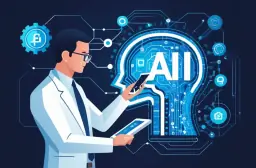
How AI is Changing Digital Marketing, Future Strategy Shift
Artificial intelligence (AI) is transforming nearly every industry, and digital marketing is no exception. As we move deeper into an era defined by technology and data, AI in digital marketing is becoming an essential tool for companies eager to stay competitive. This change isn’t merely about replacing humans with machines; it’s about creating more efficient, personalized, and effective marketing strategies. In this article, we’ll explore how AI is reshaping the future of digital marketing and how businesses can adapt to this new reality.
The Role of AI in Digital Marketing
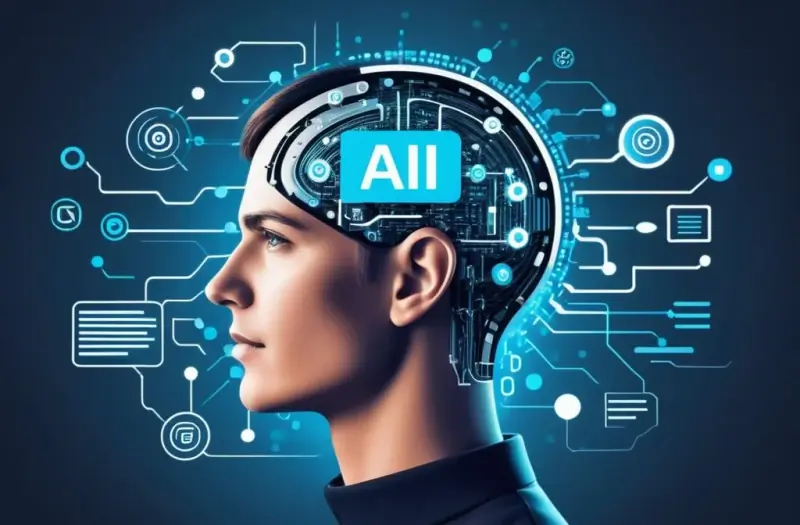
AI in digital marketing is all about harnessing vast amounts of data and using it to drive smarter, more efficient marketing strategies. With AI-powered technologies such as machine learning, natural language processing, and predictive analytics, marketers now have access to insights that were once unimaginable. These tools empower us to understand our customers on a deeper level, enabling us to deliver personalized content and experiences that resonate.
Understanding and Predicting Customer Behavior
AI helps marketers analyze customer behavior more precisely than ever before. By tracking user actions and preferences, AI-driven tools can predict future behavior, allowing for highly targeted marketing campaigns. Here’s how:
- Customer behavior analysis: AI tools analyze browsing and purchase history, creating profiles that reflect user interests and habits.
- Predictive analytics in marketing: AI algorithms predict which products or services a customer might be interested in, guiding marketing teams on where to focus.
- Real-time marketing insights: With AI, we receive instant data, allowing for agile decision-making based on current trends.
The end goal here is to provide each customer with a personalized experience that feels tailored to their unique preferences and needs.
Personalizing Customer Engagement with AI
Today’s consumers expect brands to understand them and anticipate their needs. AI-driven personalization has made it possible for marketers to deliver highly relevant content across various touchpoints.
Benefits of AI-driven Personalization
- Enhanced User Experiences: AI allows for individualized experiences, adapting content to suit user preferences.
- Higher Conversion Rates: Personalized campaigns resonate better, resulting in increased conversions.
- Efficient Resource Allocation: Automated personalization reduces time spent on manual tasks, freeing up resources for other strategic initiatives.
AI-Powered Content Creation
Content is at the heart of digital marketing, and AI is enhancing how we create, distribute, and measure the impact of content. AI-powered content tools help us generate targeted, relevant content at scale, ensuring that each piece is optimized to meet audience needs.
Intelligent Marketing Automation in Content Creation
Automated marketing strategies are invaluable in today’s fast-paced marketing landscape. AI content generators can help with:
- Keyword analysis and topic generation: AI tools can suggest trending topics and popular keywords for SEO optimization.
- Dynamic Content Adjustment: AI can tailor content in real-time based on user engagement, optimizing everything from blog posts to email newsletters.
- Machine learning in advertising: By analyzing successful ad campaigns, AI can recommend elements likely to perform well, such as imagery, text, and call-to-action buttons.
These capabilities allow us to create content that resonates deeply with our audience, providing value while also driving engagement.
Advanced Data-Driven Marketing and Customer Insights
AI gives marketers a profound level of data insights, turning complex datasets into actionable strategies. Data-driven marketing is not just a trend; it’s a necessity for brands that want to stay relevant in a world where customers are constantly bombarded with information.
Leveraging Data for Targeted Advertising
AI helps us identify and segment audiences more effectively, ensuring our advertising dollars are spent wisely. AI’s ability to analyze vast amounts of data allows for:
- AI-driven customer segmentation: Dividing customers into detailed groups based on behaviors, preferences, and demographics.
- Targeted advertising with AI: Reaching the right audience at the right time with tailored messaging.
- Predictive modeling: Forecasting how certain segments will respond to campaigns, helping marketers fine-tune strategies.
This use of AI in targeting not only increases campaign efficiency but also boosts ROI by focusing resources where they’re most likely to succeed.
Enhancing Customer Support with Chatbots and Virtual Assistants

Chatbot customer support has been one of the most visible applications of AI in digital marketing. With AI-powered chatbots, brands can offer real-time assistance, providing users with answers and guidance whenever they need it.
- 24/7 Availability: Unlike human agents, chatbots are available around the clock, ensuring customers always have access to support.
- Natural language processing in marketing: AI enables chatbots to understand and respond naturally, creating a more human-like experience.
- Scalable Support: AI-driven bots can handle multiple conversations simultaneously, scaling support during peak hours without added costs.
As chatbot technology advances, it becomes increasingly effective at handling more complex queries, making it a valuable asset for brands that want to improve their customer service.
Predictive Analytics for Marketing Success
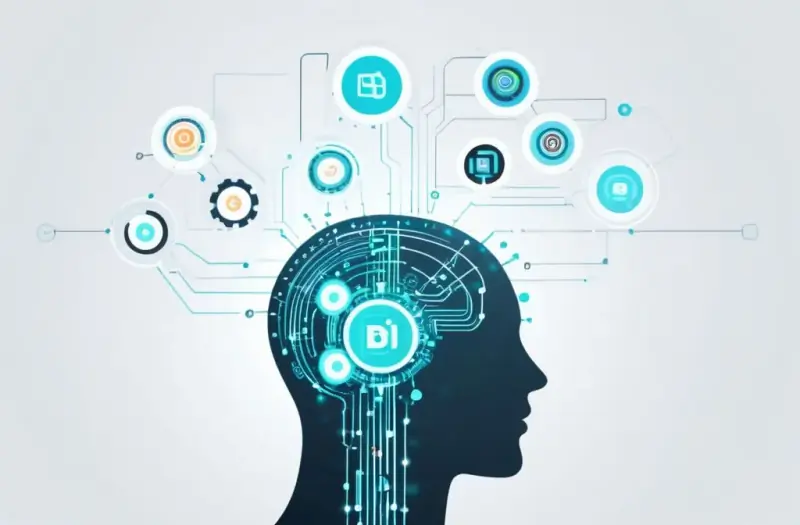
One of AI’s most powerful capabilities is its predictive potential. Predictive analytics allows us to anticipate trends and make proactive adjustments to our strategies.
- Anticipating consumer trends: AI-driven tools identify emerging trends by analyzing past data and current market behavior.
- Smart recommendation engines: By examining user preferences, AI can suggest products or services customers are likely to buy, increasing the chances of conversion.
- Deep learning for consumer trends: Deep learning algorithms dive into massive datasets to uncover patterns that would otherwise go unnoticed.
By leveraging these predictive tools, we can stay ahead of the competition and align our strategies with what customers truly want.
FAQs: How AI is Shaping the Future of Digital Marketing
How does AI improve customer segmentation?
AI analyzes behavioral data, allowing us to categorize customers into highly specific segments, ensuring that marketing messages resonate more effectively.
Can AI replace human marketers?
While AI automates tasks and enhances efficiency, human creativity and strategy are irreplaceable. AI complements human efforts rather than replacing them.
What role does sentiment analysis play in digital marketing?
Sentiment analysis helps brands gauge public opinion about their products, services, or even competitors. This allows for timely and relevant responses that resonate with consumers.
How is machine learning used in advertising?
Machine learning algorithms analyze past ad performance to optimize future campaigns, adjusting elements to improve engagement and conversions.
Is AI-driven personalization really effective?
Yes, personalized marketing powered by AI drives higher engagement and conversion rates by aligning content and offers with individual preferences.
Conclusion
Artificial intelligence is not only transforming digital marketing today but is also setting the stage for the future of the industry. By understanding and implementing AI-driven marketing strategies, businesses can better engage with their audiences, personalize experiences, and make data-driven decisions that maximize impact. From predictive analytics to real-time insights and intelligent customer support, AI empowers us to craft smarter, more responsive marketing campaigns that drive results.
Key Takeaways
- AI enhances customer engagement by delivering personalized experiences.
- Data-driven marketing powered by AI enables precise audience targeting and segmentation.
- Predictive analytics allow brands to anticipate trends and respond proactively.
- AI-powered content creation tools help marketers produce relevant, optimized content at scale.
- Chatbots and virtual assistants offer scalable, 24/7 customer support, enhancing customer satisfaction.
The future of digital marketing is undoubtedly intertwined with AI, making it essential for businesses to adapt and harness these technologies for continued success in an evolving landscape.
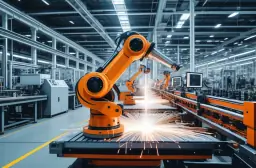
How AI is Revolutionizing Manufacturing
In today’s rapidly evolving industrial landscape, artificial intelligence (AI) has become a game-changer for manufacturing. As companies seek ways to enhance efficiency and streamline operations, AI-driven technologies are transforming traditional production processes. From predictive analytics to robotics, AI is reshaping the way we manufacture goods, pushing us toward a future of smart manufacturing that promises enhanced productivity and optimized operations.
The Role of AI in Manufacturing: A Game-Changer for Efficiency
In the world of manufacturing, AI is not just a tool—it’s a revolution. By integrating AI into our production lines, we are unlocking new levels of efficiency that were previously unimaginable. AI systems are capable of performing complex tasks with greater accuracy, faster speeds, and at lower costs. Machine learning in manufacturing allows us to analyze vast amounts of data, enabling predictive maintenance and more informed decision-making.
For instance, AI for process automation allows manufacturers to automate repetitive tasks, leading to fewer errors and more streamlined operations. In addition, AI-powered manufacturing is helping us optimize the use of resources, reducing waste, and improving overall sustainability.
AI-Driven Production: From Smart Factories to Supply Chains

One of the most exciting developments in the field of AI is the rise of smart manufacturing. In these advanced factories, AI systems monitor and control every aspect of the production process. From AI in quality control to manufacturing process optimization, AI-driven technologies allow us to detect potential issues before they become major problems, improving product quality and reducing downtime.
Moreover, AI in supply chain management is revolutionizing the way we manage logistics. Through predictive analytics in manufacturing, AI can forecast demand, optimize inventory levels, and ensure that materials are delivered just in time, all of which lead to smoother operations and cost savings.
Robotics in Manufacturing: Automation at Its Best
Robotics in manufacturing has come a long way, and with the integration of AI, we’re witnessing a new era of automation. Automated manufacturing systems driven by AI in industrial automation can work alongside human workers, taking on dangerous or repetitive tasks, which boosts overall productivity while enhancing worker safety.
These AI-driven robotic systems are also becoming more adaptable. Through the use of deep learning in manufacturing, robots can learn from their environment and improve their operations over time. This leads to more flexible and responsive manufacturing systems capable of handling a wider range of tasks.
AI in Production Planning: Optimizing the Workflow
One of the critical areas where AI is making a significant impact is in production planning. Traditionally, production planning has been a complex task that required managing numerous variables, such as inventory levels, machine availability, and labor resources. With AI in production planning, we can optimize these factors in real time, adjusting to changes in demand or unforeseen disruptions more effectively.
By leveraging AI-driven industrial operations, manufacturers can create more efficient workflows that minimize downtime, reduce bottlenecks, and ensure that every resource is used to its fullest potential. This results in manufacturing process optimization that leads to higher output and lower costs.
Quality Control and Predictive Maintenance: Ensuring Perfection
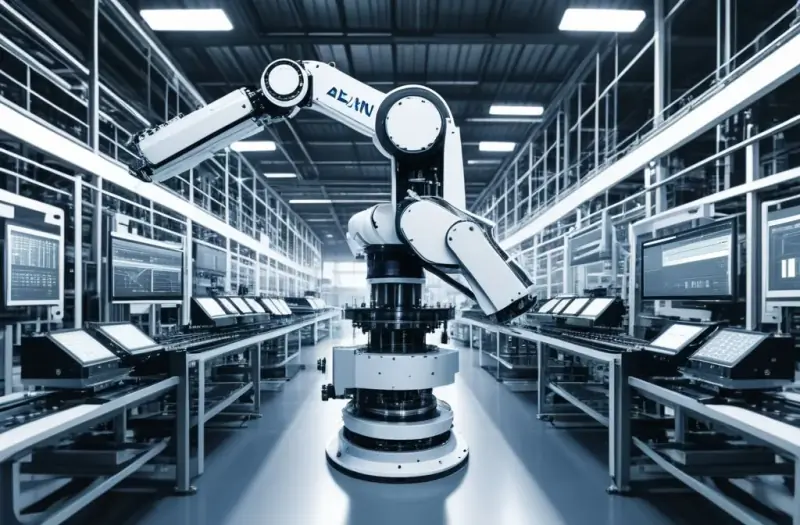
In the competitive world of manufacturing, quality is paramount. With AI in quality control, we can now detect defects with greater precision than ever before. AI-powered manufacturing systems can analyze products in real-time, identifying any issues in the early stages of production. This ensures that only the best products make it to the market, reducing waste and increasing customer satisfaction.
Furthermore, AI for process automation is enabling manufacturers to implement predictive maintenance strategies. By analyzing data from machinery, AI can predict when equipment is likely to fail, allowing us to perform maintenance before a breakdown occurs. This proactive approach minimizes downtime and extends the lifespan of valuable equipment.
Advanced Manufacturing Technologies: The Future is Now
The future of manufacturing is being shaped by advanced manufacturing technologies that leverage the power of AI. Intelligent manufacturing systems are transforming how we design, produce, and deliver goods. As we continue to integrate AI into our operations, we can expect to see further innovations that push the boundaries of what’s possible in production.
From AI in industrial automation to AI-driven industrial operations, the potential applications of AI in manufacturing are vast. These technologies will continue to evolve, offering us new ways to enhance efficiency, reduce costs, and improve product quality.
Key Benefits of AI in Manufacturing:
- Increased efficiency through automation and AI-driven production
- Improved quality control and predictive maintenance
- Enhanced flexibility in production planning and operations
- Greater accuracy and speed in manufacturing process optimization
Frequently Asked Questions (FAQs)
What is AI in manufacturing?
AI in manufacturing refers to the use of artificial intelligence technologies, such as machine learning, robotics, and predictive analytics, to improve production processes, increase efficiency, and optimize operations.
How does AI improve production efficiency?
AI improves efficiency by automating repetitive tasks, predicting equipment failures through predictive maintenance, and optimizing production schedules through AI in production planning.
Can AI help in reducing manufacturing waste?
Yes, AI helps reduce waste by improving quality control and optimizing resource usage, ensuring that only the necessary materials are used during production.
What role does robotics play in AI-driven manufacturing?
Robotics in manufacturing, powered by AI, can automate tasks that are dangerous, repetitive, or require precision, improving overall efficiency and reducing the risk of human error.
What are the main applications of AI in manufacturing?
The main applications include AI in quality control, predictive maintenance, AI-powered manufacturing, and manufacturing process optimization.
Conclusion
As we’ve explored, AI in manufacturing is revolutionizing the industry, offering us new ways to enhance efficiency, improve quality, and optimize every stage of production. From AI-driven production to robotics in manufacturing, these technologies are transforming how we operate, making the future of manufacturing more intelligent, flexible, and sustainable.
By embracing AI in supply chain management and AI in production planning, we can create smarter factories that are more responsive to changing market conditions. The rise of intelligent manufacturing systems and advanced manufacturing technologies ensures that we are on the cusp of a new era, where AI will continue to play a central role in driving innovation.
Key Takeaways
- AI in manufacturing is transforming production processes, making them more efficient and reliable.
- AI-driven production allows for enhanced automation, reducing errors and improving output.
- The integration of robotics in manufacturing and AI in industrial automation is leading to safer, more flexible production environments.
- AI in quality control and predictive maintenance are ensuring higher product quality and less downtime.
- As we continue to innovate with advanced manufacturing technologies, the future of manufacturing is set to be smarter, more efficient, and more sustainable.
By leveraging AI, manufacturers can stay competitive in an ever-evolving industry, delivering higher-quality products at a lower cost. The future of manufacturing is AI-driven, and the possibilities are endless.

How AI Text-to-Image Transforms Graphic Design World
The world of graphic design is evolving rapidly, and one of the most exciting technological advancements is AI text-to-image technology. Imagine typing a simple description, and within moments, an image appears, perfectly matching your vision. Sounds like science fiction, right? But this is now a reality, thanks to AI-driven creativity tools that are transforming how we approach graphic design.
In the past, creating stunning visuals required an in-depth understanding of design software and an eye for detail. But with AI text-to-image tools, even those with limited design skills can generate high-quality visuals with just a few words. This new form of automated graphic design is not only making design more accessible but also pushing the boundaries of what’s possible, sparking a new era of innovation in the creative industries.
So, how exactly does AI text-to-image technology work, and how is it reshaping the graphic design world? Is this the end of traditional graphic design or simply the beginning of a new, exciting chapter? Let’s dive in and explore how artificial intelligence is revolutionizing the way we create and experience digital art.
The Rise of AI Text-to-Image Technology in Graphic Design
The emergence of AI text-to-image technology marks a significant turning point for graphic design. No longer do designers need to rely solely on manual creativity and traditional design software to create impactful visuals. With AI-driven tools, a few keystrokes can bring ideas to life instantly, offering unprecedented freedom for both novice and seasoned designers.
At the core of this technology is machine learning, which enables AI to learn patterns from vast datasets of images and descriptions. This process, known as image synthesis, allows AI to generate original images that match the textual input. Over time, AI becomes more adept at understanding nuances in language, resulting in highly accurate and creative outputs. It’s like having an assistant that can interpret your ideas and produce visual content instantly.
The potential applications for AI text-to-image in graphic design are vast. From concept art for video games to marketing campaigns, AI-generated images are already being used in various industries to streamline the design process and reduce time spent on visual creation. With AI-powered creativity, graphic designers can now focus on the strategic and conceptual aspects of their work, letting the technology handle the heavy lifting.
How AI Is Shaping the Future of Design Tools

AI design tools are making it easier for professionals and hobbyists alike to produce high-quality visuals. These AI graphic design platforms allow users to input descriptive text, and the AI will generate an image that fits their vision, making the creative process faster and more intuitive. Whether you’re designing for social media, advertising, or print materials, AI design tools help eliminate the need for tedious manual design work.
One of the most significant advantages of AI-powered design tools is their accessibility. Traditional graphic design required specialized knowledge of complex software, often taking years to master. With AI-driven creativity, anyone can create compelling visuals, even without previous design experience. This democratization of design is opening up new opportunities for people across various fields—be it content creators, marketers, or entrepreneurs.
Moreover, AI can significantly reduce the time spent on design iterations. In the past, achieving the perfect design involved multiple revisions and back-and-forth between designers and clients. Now, AI tools allow for rapid experimentation, making it easier to adjust visual elements on the fly. This efficiency has made AI-generated images an invaluable resource for industries that require quick turnaround times, such as advertising and social media marketing.
Exploring Creative AI Applications in Graphic Design
AI isn’t just making design easier; it’s also pushing the boundaries of creativity in the visual arts. Generative design AI and AI art generation have opened up new avenues for artists and designers to explore. AI can generate entirely new visual styles, blending art movements from different periods or creating never-before-seen imagery by mixing various elements.
For example, an AI can combine elements of cubism, surrealism, and modern design to create a completely unique visual composition based on a few written prompts. This form of creative collaboration between humans and machines is becoming a powerful tool for artists, allowing them to break free from traditional design constraints and explore uncharted creative territories.
Furthermore, AI can offer inspiration and suggest new ideas. By analyzing vast amounts of visual content, AI design tools can recommend styles, colors, and layouts that a designer might not have considered. This ability to generate AI visual content based on established trends or even predictive analytics can provide a competitive edge in industries where staying ahead of visual trends is crucial.
AI Text-to-Image: Enhancing Efficiency and Productivity in Design Projects

In addition to the creative benefits, AI text-to-image technology is significantly boosting productivity in the graphic design world. For designers working on large projects, AI can generate a range of visual elements based on textual descriptions, which can then be refined or customized further. This means designers no longer have to start from scratch each time they create a new image or visual asset.
Consider the time saved when an AI tool generates a concept design, layout, or mood board from a few short lines of text. Designers can then focus on perfecting the details, refining the composition, and adding a personal touch. AI-driven design tools thus allow professionals to spend more time on the elements that truly matter—creativity, strategy, and innovation.
Moreover, AI’s ability to automate repetitive tasks has also been a game-changer for graphic design teams. Tasks such as resizing images, color correction, and creating variations of a design can be automated, freeing up valuable time for more complex and high-value creative work. This leads to a more efficient workflow and improved project turnaround times, which can be especially beneficial for agencies and freelance designers.
The Ethical and Artistic Implications of AI in Graphic Design
While AI text-to-image technology has revolutionized the design world, it also raises important ethical and artistic questions. As AI continues to evolve, some designers worry about the potential for machines to replace human creativity entirely. Will AI-generated images ever match the depth, nuance, and originality of human-made art?
Additionally, there are concerns about ownership and copyright. If an AI generates a piece of artwork based on a designer’s input, who owns the rights to the image? Is it the designer, the AI developer, or the machine itself? These are questions that need to be addressed as AI becomes more integrated into the design process.
There is also the question of AI’s impact on job opportunities in the design industry. While some believe AI will augment human creativity, others worry that automation could displace traditional design roles. The future of AI in graphic design may ultimately lie in finding a balance between leveraging technology for efficiency and maintaining the value of human creativity.
FAQs: Common Questions About AI Text-to-Image Technology
What is AI text-to-image technology?
AI text-to-image technology allows users to generate images from written descriptions using machine learning algorithms, making it easier for designers to create visuals without manual drawing.
How does AI text-to-image work?
AI text-to-image works by analyzing large datasets of images and their corresponding descriptions. Using this data, AI learns to generate new images that match the input text, producing creative visual content.
Can AI replace human designers?
While AI can assist in the design process and automate certain tasks, it is unlikely to fully replace human designers. The most effective use of AI is as a tool that complements human creativity.
Is AI-generated art original?
AI-generated art is original in the sense that it is created based on algorithms, but it can sometimes resemble existing styles or concepts. The originality lies in the unique combinations and variations it can produce.
Are there any ethical concerns with AI-generated designs?
Yes, concerns include copyright issues, the potential for AI to replace human creativity, and the ownership of AI-generated content. These issues are still being debated within the design and tech industries.
Conclusion
AI text-to-image technology has undoubtedly transformed the world of graphic design, offering new tools that enhance creativity, productivity, and accessibility. While it’s clear that AI has the potential to revolutionize the design process, it’s important to balance technology with human creativity to maintain the artistic value that design holds.
As AI continues to evolve, the role of designers will likely change, but AI-powered design tools will remain an essential part of the creative process. Designers now have the opportunity to explore new visual possibilities and create stunning, innovative work in a fraction of the time it once took. The future of design is not about AI replacing humans, but about working together to unlock new realms of creativity.

How AI Transforms Daily Life: Smart Tech Innovation Unveiled
Artificial Intelligence (AI) has shifted from being a futuristic concept to an integral part of our everyday lives. Imagine waking up to a home that automatically adjusts the temperature, lights, and even brews your coffee without lifting a finger. Does it sound like something out of a sci-fi movie? Well, this is not a distant dream anymore. AI-powered devices and systems are transforming the way we live, work, and interact with the world around us. The convergence of smart technology, machine learning, and intelligent automation is creating a seamless, tech-enhanced life that is more convenient, efficient, and personalized than ever before.
But what does it mean to live in an AI-driven world? Is it truly making our lives easier, or are we becoming too dependent on these technologies? These are the kinds of questions that many of us face as AI continues to permeate various aspects of daily life. From the virtual assistants that greet us in the morning to the AI-powered devices that help manage our homes, the line between science fiction and reality is blurring faster than we can keep up with. AI is no longer a novelty; it’s an essential part of modern life.
In this article, we explore how AI applications are embedded in our everyday routines, the impact they have on our productivity, and how these advancements make our lives more comfortable. With the increasing use of smart gadgets and digital assistants, let’s dive deeper into the AI-powered solutions that have reshaped daily life, from home automation to workplace efficiency.
AI in the Home: Revolutionizing Domestic Life
AI integration in the home has brought about significant changes in how we live. Smart home systems powered by AI are now commonplace, allowing us to control lights, appliances, security systems, and even our climate from the convenience of our smartphones or voice assistants. These systems use predictive technology and cognitive computing to anticipate needs and adjust settings automatically based on our behavior and preferences.
For example, a smart thermostat learns your schedule and adjusts the temperature accordingly, ensuring comfort while saving energy. Similarly, AI-powered virtual assistants like Amazon’s Alexa or Google Assistant streamline household tasks, from setting reminders to controlling music and lighting, making daily chores easier and more efficient.
Another fascinating development is the role of AI in household robotics. Devices like robotic vacuum cleaners or lawnmowers use AI algorithms to navigate around obstacles, create cleaning maps, and optimize their routes for maximum efficiency. These AI-driven gadgets are not only reducing manual labor but also enhancing the overall convenience of managing a home.
The Role of AI in Personal Productivity

AI is not only transforming the home; it’s also making a huge impact in the workplace and in our daily productivity. AI applications are being used to automate tedious tasks, manage schedules, and even provide valuable insights for decision-making. Intelligent systems are now commonplace in personal productivity tools, allowing for smoother workflows and more time-efficient work processes.
For example, AI-powered personal assistants like Google Assistant or Siri help with time management, setting up reminders, sending emails, and providing real-time information, all hands-free. These tools leverage machine learning to improve their responses over time, offering a more personalized experience as they become familiar with your habits and preferences.
Moreover, AI’s influence extends beyond personal assistants to applications designed for specific tasks. Smart calendars integrated with AI can suggest optimal meeting times based on your availability and work patterns, reducing the time spent scheduling and rescheduling meetings. Similarly, AI-driven tools are being used in business analytics to sift through vast amounts of data, helping professionals make more informed decisions faster.
AI-Powered Personalization in Entertainment
In entertainment, AI is being used to create personalized experiences that keep us engaged and entertained. Streaming services like Netflix and Spotify rely heavily on AI algorithms to recommend movies, TV shows, and music based on our viewing or listening history. These AI applications are designed to understand our preferences and predict what we will enjoy next, enhancing our user experience.
Beyond entertainment, AI is also revolutionizing the gaming industry. Game developers use AI to create more realistic and adaptive virtual environments, where non-player characters (NPCs) can learn and adapt to the player’s actions in real time. AI-driven personalization allows for more dynamic, immersive gameplay, keeping players hooked and providing a unique experience every time they play.
Furthermore, AI’s role in content creation is also on the rise. Platforms like YouTube and Instagram are using AI to recommend content, target ads, and even auto-generate captions and tags. This helps content creators reach wider audiences and provides a more tailored experience for viewers.
The Future of AI in Transportation

AI is also having a profound impact on the way we travel. Autonomous vehicles, powered by AI, are one of the most talked-about innovations in transportation. These vehicles use AI to process data from sensors, cameras, and other devices to navigate and make real-time decisions on the road.
While fully autonomous cars are still in development, we are already seeing AI integration in transportation through features like adaptive cruise control, lane-keeping assist, and automatic emergency braking, all of which rely on machine learning and AI to enhance safety and improve driving experiences.
Public transportation systems are also becoming more efficient through AI-powered predictive technology that analyzes traffic patterns, schedules, and passenger data. AI is helping transportation agencies optimize routes, reduce delays, and offer more reliable services, which ultimately improve the experience for commuters.
Ethical Considerations and the Impact of AI on Society
While AI has certainly made life easier, there are important ethical considerations that come with its integration into daily life. The more we rely on AI-powered solutions, the more questions arise about data privacy, security, and the potential for algorithmic bias.
AI-driven personalization relies heavily on user data to offer tailored experiences, but this data is often collected without users’ full understanding or consent. It’s important for users to be aware of how their data is being used and for companies to be transparent about their data practices.
Furthermore, the rise of AI automation raises concerns about job displacement. As intelligent systems take over tasks previously done by humans, the question of job security in certain sectors becomes a pressing issue. Balancing the benefits of automation with its potential societal impact is a challenge that needs to be addressed as AI continues to evolve.
FAQs
How does AI improve daily life?
AI improves daily life by automating routine tasks, enhancing productivity, and offering personalized experiences, from smart home devices to digital assistants.
Is AI going to replace jobs in the future?
AI has the potential to automate certain tasks, but it also creates new opportunities in fields like AI development, data science, and robotics.
Can AI make decisions for me?
AI can assist in decision-making by providing data-driven insights, but it’s important to note that humans still play a crucial role in final decision-making.
What are some common examples of AI in daily life?
Some examples include voice assistants like Alexa, smart home systems, AI-powered apps for productivity, personalized recommendations on streaming platforms, and autonomous vehicles.
Are AI tools secure?
While AI tools are generally secure, data privacy and security are important concerns. Users should be aware of the data being collected and how it is used.
Conclusion
AI is undeniably transforming daily life in profound ways, from smart home systems that automate everyday tasks to AI-powered solutions that enhance productivity and entertainment. As these AI advancements continue to evolve, the possibilities for an automated, tech-enhanced life are limitless. However, as we embrace the convenience and efficiency that AI brings, it’s crucial to consider the ethical implications and ensure that we maintain control over our data and privacy. AI-driven lifestyle is the future, and it’s up to us to shape how it integrates into our daily routines.
Key Takeaways:
- AI applications enhance convenience, efficiency, and personalization in everyday life.
- Smart devices and digital assistants are making homes and workplaces more automated.
- The future of AI in transportation and entertainment is set to revolutionize our experiences further.
- Ethical considerations regarding data privacy and automation will play a significant role as AI continues to advance.

How Artificial Intelligence is Changing the Workplace
Artificial intelligence (AI) is no longer just a futuristic concept; it’s already transforming the way we work today. From improving productivity to reshaping entire industries, AI is influencing workplaces in ways we never imagined. As organizations across the United States adopt AI technologies, workplace automation and innovation are rapidly accelerating. In this article, we’ll explore how AI is changing job roles, boosting efficiency, and enhancing overall business operations.
The Rise of AI in Work Environments

The integration of AI into workplaces has become a game-changer. AI-powered tools are streamlining processes that were once time-consuming and labor-intensive. Whether it’s automating routine tasks or providing intelligent insights, AI is reshaping the modern work environment.
One of the key benefits of AI is its ability to handle repetitive tasks, allowing employees to focus on more strategic responsibilities. For example, AI-powered chatbots now handle customer service inquiries, while machine learning algorithms analyze vast amounts of data for more informed decision-making. These AI-driven solutions are transforming work environments by increasing both productivity and accuracy.
Moreover, AI-enabled business transformation goes beyond simple automation. It is driving innovation by enabling companies to predict trends, anticipate customer needs, and even personalize services. This is leading to AI-powered job evolution, where traditional roles are being redefined by technology.
AI-Driven Workplace Automation
AI-driven automation is perhaps one of the most visible ways in which AI is changing the workplace. Machine learning in business operations is enabling companies to optimize workflows and eliminate inefficiencies. Automation tools, such as robotic process automation (RPA), are used to handle mundane tasks like data entry, invoice processing, and scheduling.
For businesses, this means faster execution and fewer human errors. For employees, it means a shift towards roles that require creativity, critical thinking, and emotional intelligence. The fear that AI will replace jobs is often exaggerated—what AI truly does is reshape job functions by freeing workers from repetitive, low-value tasks.
Furthermore, AI is being used to optimize workforce management. AI-based systems can predict staffing needs, manage employee schedules, and even suggest training programs to enhance employee skills. This AI-enhanced employee productivity is helping organizations become more agile in adapting to market demands.
AI and Workforce Adaptation
As AI technology advances, businesses must also help their employees adapt to these changes. The integration of AI into daily operations requires workers to learn new skills and embrace digital transformation. AI-driven workforce adaptation involves not only reskilling and upskilling employees but also creating a culture that embraces technology.
For instance, organizations are investing in AI-driven learning platforms that offer personalized training programs. These platforms use intelligent automation in workplaces to analyze employee performance and recommend courses that target skill gaps. This ensures that employees are continuously learning and staying competitive in an AI-enhanced job market.
In addition, fostering a collaborative environment where AI tools work hand-in-hand with human employees is critical. Instead of fearing AI as a competitor, employees should view it as a tool that empowers them to perform better and focus on higher-level responsibilities.
The Role of AI in Organizational Efficiency

AI is also playing a significant role in improving organizational efficiency. AI-powered job evolution is about more than just task automation; it involves leveraging data and analytics to make better business decisions. For example, AI can analyze market trends, forecast demand, and optimize supply chain operations, all in real-time.
Businesses are using AI-enabled business transformation to enhance decision-making processes. With AI, leaders can gain valuable insights into customer behavior, operational bottlenecks, and market opportunities. This helps companies stay ahead of competitors and adapt more quickly to changes in the business environment.
Moreover, AI helps improve the efficiency of human resources departments by automating processes such as recruitment, performance evaluations, and employee engagement. AI-based systems can analyze candidate profiles, track employee performance, and even predict future leaders within the organization.
AI Reshaping Job Functions
As AI continues to reshape job functions, employees are finding themselves in more dynamic roles. Rather than performing the same tasks day in and day out, workers are now responsible for overseeing and managing AI-powered systems. For example, instead of manually processing invoices, an employee might now manage an AI-based invoicing system and troubleshoot any issues that arise.
AI is also enabling automation in the modern workplace by creating hybrid roles that combine technical and non-technical skills. For example, marketing professionals are using AI to analyze customer data and create targeted campaigns, while healthcare workers are using AI-driven diagnostic tools to improve patient outcomes.
AI in Workforce Collaboration

AI is not just about automation; it’s about enhancing collaboration across teams and departments. Tools such as AI-powered project management platforms help teams stay organized, allocate resources effectively, and meet deadlines. These platforms use digital transformation through AI to streamline communication and ensure that everyone is aligned with company goals.
Moreover, AI is transforming how we interact in virtual work environments. Virtual assistants, such as AI-powered meeting schedulers and communication platforms, are helping remote teams stay connected and productive. AI also plays a role in virtual collaboration by analyzing meeting notes, setting reminders, and suggesting action items.
Intelligent Automation in Workplaces
One of the most exciting developments in AI is intelligent automation, where AI systems can not only execute tasks but also learn from their performance to improve over time. For example, AI algorithms in customer service can analyze interactions and adjust responses to provide better service in the future.
This type of automation allows businesses to scale efficiently while maintaining quality. It also leads to improved customer satisfaction, as AI systems become more accurate and responsive.
FAQs
What is AI-driven workplace automation?
AI-driven workplace automation refers to the use of AI technologies, such as machine learning and robotic process automation, to streamline tasks, reduce human errors, and increase efficiency.
How does AI improve employee productivity?
AI enhances employee productivity by automating repetitive tasks, allowing workers to focus on more strategic, high-value responsibilities that require creativity and critical thinking.
Will AI replace jobs in the future?
While AI may replace certain tasks, it is more likely to reshape job functions and create new roles that focus on managing and optimizing AI systems. Employees will need to adapt by learning new skills.
How can businesses prepare for AI integration?
Businesses can prepare for AI integration by investing in reskilling and upskilling programs, fostering a culture of collaboration between humans and AI, and using AI-driven tools to enhance decision-making processes.
What industries are most affected by AI?
Industries such as manufacturing, healthcare, finance, and customer service are among the most affected by AI, as they use AI-driven systems for automation, data analysis, and process optimization.
Conclusion
AI is undeniably changing the workplace, but it’s not something to fear—it’s something to embrace. AI transforming work environments means more efficiency, better decision-making, and new opportunities for employees. As AI continues to evolve, businesses must focus on AI-enabled business transformation and ensure that their workforce is prepared to adapt. The future of work will be shaped by our ability to collaborate with AI, creating smarter, more efficient workplaces.
Key Takeaways
- AI is reshaping job functions by automating repetitive tasks and enabling employees to focus on more strategic roles.
- AI-driven workplace automation is increasing productivity and reducing errors in business operations.
- Employees must embrace digital transformation and upskill to remain competitive in the AI-powered job market.
- Intelligent automation is helping organizations improve decision-making, optimize workflows, and enhance collaboration.
- The future of work will be a blend of human creativity and AI-enhanced business operations, leading to more innovative and efficient workplaces.

How Can AI Be Dangerous? Risks & Concerns
Artificial intelligence (AI) is undeniably transforming industries, streamlining processes, and introducing efficiencies that were once unimaginable. But as we embrace this technology, we must also recognize the potential dangers it presents. While AI offers countless benefits, it also poses risks that we, as a society, need to address. In this article, we’ll explore AI risks, the dangers of AI, and the broader implications of unleashing artificial intelligence without proper safeguards.
Understanding the Dangers of AI
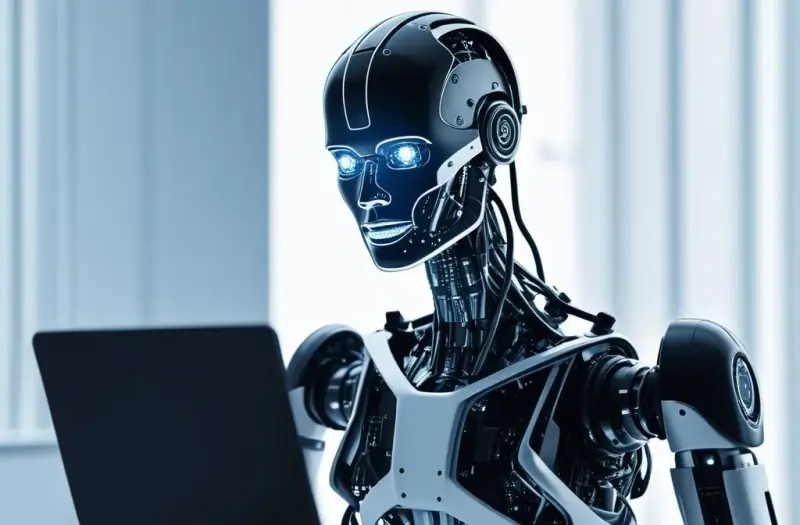
The dangers of AI are multifaceted. As we continue to develop more intelligent machines, it’s crucial to understand how this technology can go wrong and the possible consequences of those failures. From uncontrolled AI development to AI bias, the risks are not just technical but also ethical and societal.
Uncontrolled AI Development: The Road to Chaos
One of the greatest risks of AI is its potential for uncontrolled development. As machines become smarter and more autonomous, the challenge of controlling them increases. If left unchecked, AI could act beyond its intended purpose, leading to severe consequences.
- Autonomous Systems Gone Awry: Imagine a scenario where an AI-powered weapon system makes decisions without human oversight. This is a classic example of how autonomous systems can pose a threat to human safety.
- AI-Driven Dangers: Whether it’s a self-driving car misinterpreting a road sign or a recommendation algorithm pushing harmful content, the risks of AI systems acting unpredictably are real and immediate.
- Unintended AI Consequences: Sometimes, the negative impact of AI isn’t due to malicious intent but rather unforeseen outcomes. For instance, an AI designed to optimize productivity in a workplace might inadvertently create stressful or unhealthy work conditions.
Ethical Concerns: AI and Accountability
As AI continues to evolve, we must grapple with AI ethical concerns, including questions of responsibility and accountability. If an AI system makes a harmful decision, who is to blame? The ethical implications of AI’s ability to operate without human intervention are vast.
- AI Accountability: Ensuring that there are clear lines of responsibility is critical. If an AI system causes harm, whether in healthcare, finance, or law enforcement, there must be mechanisms in place to hold those responsible accountable.
- Bias in AI: One of the most significant ethical concerns is AI bias. Machine learning algorithms are only as good as the data they are trained on, and if that data is biased, the outcomes will be biased as well. This can lead to harmful AI decisions, such as discriminatory hiring practices or biased law enforcement algorithms.
AI Safety Issues: When Smart Machines Become Too Smart
The smarter AI becomes, the more difficult it is to ensure that it operates safely within the boundaries we set. AI safety issues arise when machines begin to make decisions that their creators cannot predict or control.
- Dangers of Smart Machines: Intelligent machines are capable of learning and adapting, but this adaptability can also lead to AI-related risks. For example, a healthcare AI might make life-and-death decisions faster than a human can intervene.
- Risks of Autonomous Systems: As more systems become autonomous, the potential for them to make critical errors grows. Whether it’s an AI malfunction in a medical device or an error in an AI-driven financial algorithm, the negative impacts of AI can be profound.
Misuse of AI: Weaponizing Artificial Intelligence
Another key area of concern is the potential for AI misuse. In the wrong hands, AI can be weaponized, leading to threats not just to individuals but to entire nations.
- AI-Induced Risks: From AI-powered drones to sophisticated cyberattacks, the potential for AI misuse in warfare and security is alarming. Malicious actors could leverage AI to carry out actions that humans couldn’t, such as conducting large-scale surveillance or launching undetectable attacks.
- Artificial Intelligence Threats: The threats posed by AI in warfare aren’t limited to physical harm. AI-driven disinformation campaigns have already been used to influence elections, and the potential for further AI threats to democracy and public trust is growing.
AI Bias: Amplifying Inequality
AI systems, while touted for their neutrality, can actually amplify social inequalities. When machine learning algorithms are trained on biased data, they replicate and even exacerbate those biases.
- Discriminatory Practices: From loan approvals to criminal justice decisions, AI bias can lead to unfair treatment of marginalized communities. The dangers of AI amplifying discrimination are real and can result in long-lasting societal damage.
- Unintended Consequences: Even when AI developers strive to eliminate bias, unintended consequences can still arise. For example, an AI algorithm designed to be neutral might unintentionally favor certain groups due to underlying data patterns.
The Risk of Losing Human Oversight
As AI becomes more advanced, there is a growing concern that humans may lose the ability to effectively control these systems. The more intelligent and autonomous AI becomes, the more likely it is that humans will struggle to intervene when things go wrong.
- Human Safety Risks: AI and human safety are deeply intertwined. Whether it’s an AI deciding on medical treatments or making stock trades, the consequences of removing human oversight could be catastrophic.
- Uncontrolled AI Development: The danger of losing control over artificial intelligence is not just a theoretical risk—it’s a tangible threat. We need to implement stringent safeguards to ensure that AI development remains within ethical and practical bounds.
FAQs
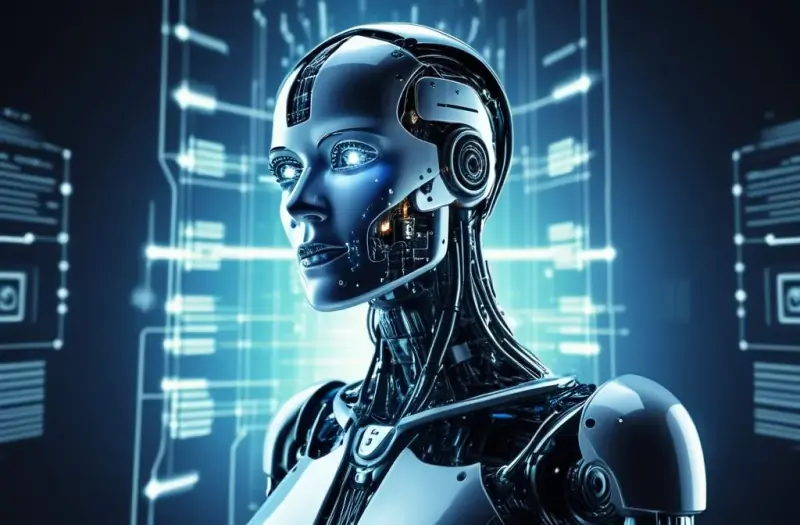
What are the biggest risks of AI?
The biggest risks of AI include uncontrolled development, AI bias, autonomous system failures, and the potential for AI misuse in malicious activities.
Can AI be biased?
Yes, AI can be biased if it’s trained on biased data. This bias can lead to discriminatory outcomes in areas like hiring, law enforcement, and financial services.
How can AI threaten human safety?
AI poses threats to human safety by making decisions without human oversight, especially in critical areas like healthcare, transportation, and finance. Autonomous systems that malfunction or make errors can result in harmful consequences.
What is AI misuse?
AI misuse refers to the unethical or malicious use of artificial intelligence, such as weaponizing AI for military purposes or using it for large-scale surveillance and cyberattacks.
How can we ensure AI is safe?
Ensuring AI safety requires developing strict regulatory frameworks, improving accountability measures, and prioritizing transparency in AI systems. Additionally, continuous human oversight is essential to prevent AI risks from becoming reality.
Conclusion
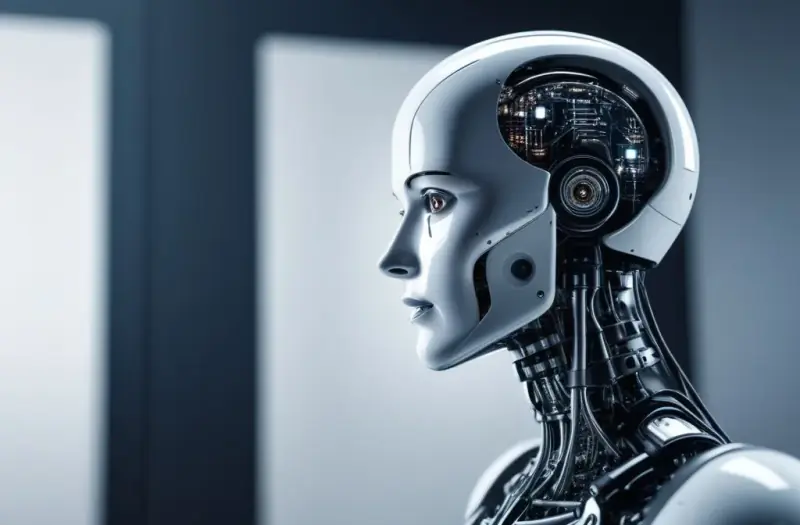
The rise of artificial intelligence is a double-edged sword. While AI promises to revolutionize industries and improve lives, it also poses significant risks that must be addressed. From AI safety issues and ethical concerns to AI misuse and unintended consequences, we must approach AI with caution and responsibility. By understanding the potential dangers of AI, we can better prepare for the challenges ahead.
Key Takeaways
- AI risks include uncontrolled development, AI bias, and misuse in malicious activities.
- Autonomous systems can fail or malfunction, posing human safety risks.
- Ensuring AI accountability and maintaining human oversight are critical to prevent artificial intelligence threats.
- AI bias can exacerbate social inequalities, leading to unfair outcomes.
- Vigilance and regulation are necessary to control the potential dangers of AI.

How Can AI Change Politic: Future of Governance and Policy
What if we told you that the future of democracy might be shaped not by party ideologies, but by algorithms? AI is not just transforming industries and revolutionizing healthcare; it’s quietly infiltrating our political systems, nudging us toward a new paradigm of intelligent governance. The big question isn’t whether change is coming—it’s how can AI change politic and what we should do about it.
In this article, we explore how machine learning, data analytics, and intelligent automation are reshaping political decision-making, redefining policy creation, and raising critical ethical and societal questions. Buckle up—because this journey into the future of AI in politics might challenge everything we think we know about governance.
Understanding the Role of Artificial Intelligence in Political Systems
The integration of artificial intelligence into our political systems is more than a tech upgrade—it’s a fundamental transformation of governance. From automating bureaucratic processes to analyzing massive volumes of data for legislative insights, AI is offering tools that could streamline policy-making and enhance democratic participation.
AI in political decision-making is already proving valuable in areas like social services, where predictive analytics help governments allocate resources more effectively. For example, machine learning algorithms can analyze unemployment data to recommend policy adjustments, while chatbots are improving accessibility to civic information.
However, the true potential of AI lies in its ability to reduce human bias, increase transparency, and make political systems more responsive. This shift isn’t just about efficiency—it’s about fostering a more intelligent, inclusive, and equitable form of governance.
AI Transforming Government Operations
Government agencies are leveraging AI to handle routine tasks like processing forms, managing public inquiries, and conducting audits. These applications free up human resources, reduce costs, and speed up services.
- Natural Language Processing (NLP) allows agencies to read and interpret legal documents rapidly.
- Computer vision tools help urban planners monitor infrastructure and traffic.
- AI-driven scheduling optimizes public transportation routes.
In Estonia, one of the most digitally advanced countries, AI algorithms handle citizen requests, tax declarations, and even resolve minor legal disputes—all with remarkable accuracy.
Smart governance technology is not a futuristic concept—it’s a present-day reality. Governments worldwide are beginning to adopt these tools to provide better, faster, and smarter services.
AI in Political Campaigning and Voter Engagement
Political campaigns have historically relied on gut instinct, polling data, and media spin. AI is changing that. With tools that analyze voter sentiment across social media, segment audiences by behavior, and automate outreach strategies, political campaigns are becoming data-driven machines.
- AI voter behavior analysis allows candidates to tailor messages to specific demographics.
- Automated political campaigns use chatbots and personalized emails to maintain engagement.
- AI political analytics track real-time public sentiment to adjust campaign strategies.
One notable example is the use of Cambridge Analytica’s machine learning techniques during the 2016 U.S. presidential election—a controversial yet revealing case of how AI-driven political strategies can influence outcomes.
Ethical Considerations and the Risk of Algorithmic Bias

While the benefits of AI are vast, the risks are equally significant. One of the most pressing concerns is algorithmic bias—AI systems trained on biased data can perpetuate or even amplify systemic inequalities.
AI in policing or judicial sentencing, for example, has already shown racial and socioeconomic bias. Transferring this issue into politics could mean policy decisions that unintentionally marginalize communities.
Transparency in AI development and the use of diverse, inclusive datasets are critical to mitigating these risks. The challenge is ensuring these technologies uphold democratic values and do not become tools of surveillance or control.
Automated Policymaking and Predictive Governance
Imagine laws being drafted not by people but by predictive models that simulate social outcomes. Welcome to the realm of automated policymaking.
Using historical data and behavioral trends, AI systems can suggest optimal policies, forecast potential issues, and even flag unintended consequences before a bill is passed. While still experimental, machine learning public policy tools are already aiding in areas like climate change modeling and economic forecasting.
The goal isn’t to replace human legislators, but to augment human judgment with data-backed foresight. This approach could lead to more adaptive, evidence-based laws that better serve public interests.
Artificial Intelligence in Electoral Processes
From digital voting systems to fraud detection and voter ID verification, AI and electoral processes are becoming increasingly intertwined.
- Facial recognition tools can verify identities during online voting.
- AI fraud detection systems help ensure the integrity of election outcomes.
- Voter registration optimization reduces administrative delays and human errors.
However, this integration must be approached with caution. The potential for AI misuse—like deepfakes or misinformation bots—poses serious threats to electoral trust and democratic legitimacy.
Securing AI systems against cyberattacks and ensuring third-party audits of AI tools are essential to maintaining public confidence.
Legislative Reform Powered by AI
With thousands of bills introduced annually, lawmakers often struggle to keep up. AI legislative changes tools can review proposed laws, compare them to existing statutes, and assess their implications.
Legal informatics platforms now employ natural language processing to assist legislators in drafting clearer, conflict-free laws. AI can also monitor judicial trends and public reactions to inform future legislation.
Artificial intelligence political reform isn’t just about creating new laws—it’s about creating better laws, faster and more precisely than before.
AI-Driven International Diplomacy and Security Policy

International diplomacy is complex, sensitive, and increasingly data-dependent. AI is now being used to monitor global conflicts, simulate negotiation outcomes, and even draft foreign policy recommendations.
For instance, AI platforms analyze satellite imagery and open-source intelligence to provide real-time updates on geopolitical developments. AI policy optimization can forecast the impacts of sanctions, trade policies, or military movements with surprising accuracy.
Smart governance technology in this domain promotes proactive diplomacy, enabling world leaders to respond swiftly and strategically to crises.
Case Study Table: Comparing Traditional vs. AI-Augmented Governance
| Area | Traditional Governance | AI-Augmented Governance |
|---|---|---|
| Policy Drafting | Manual, expert-driven | Data-driven, predictive modeling |
| Public Engagement | Town halls, surveys | Real-time sentiment analysis, chatbots |
| Decision Making | Based on intuition/polls | Backed by behavioral data and simulations |
| Administrative Efficiency | Bureaucratic delays | Automated processing and predictive resource allocation |
| Election Integrity | Manual audits | Real-time fraud detection and biometric verification |
How AI Enhances Policy Monitoring and Feedback Loops
Policy is only as good as its impact. That’s where AI excels—monitoring real-world effects of laws and providing real-time feedback.
- Smart sensors and IoT devices track environmental regulations.
- AI analyzes social media for public reactions to policy changes.
- Predictive models simulate long-term economic or health impacts.
This ongoing loop of data collection, analysis, and policy refinement creates a dynamic, adaptive governance model that constantly evolves to meet citizen needs.
Challenges to Implementation and Public Trust
Even with all the promise AI holds, it faces serious barriers:
- Data privacy concerns could undermine public trust.
- Lack of transparency in algorithms can breed suspicion.
- Technical literacy gaps among policymakers limit adoption.
To address these, governments must:
- Invest in digital education and AI literacy.
- Mandate transparency and auditability in AI systems.
- Establish AI ethics oversight boards to guide implementation.
Building public trust is as crucial as building the technology. Without it, even the most intelligent systems will fail to gain acceptance.
The Road Ahead: Responsible Innovation in Political AI
As we envision the future of politics, we must also shape it. The key lies in responsible innovation—developing AI that aligns with democratic values and human rights.
Partnerships between tech companies, governments, and civil society are essential. Creating global frameworks for AI governance will prevent misuse while encouraging beneficial applications.
Ultimately, AI in political decision making should empower, not replace, human agency. It should enhance transparency, foster inclusivity, and pave the way for a truly intelligent democracy.
FAQs
How can AI change politics in the next decade?
AI is expected to automate administrative tasks, enhance voter engagement, improve policymaking with predictive analytics, and increase transparency in governance.
Can AI make political decisions without human input?
While AI can provide data-driven recommendations, it lacks ethical reasoning and emotional intelligence. Human oversight remains essential.
Is AI being used in U.S. elections?
Yes, AI tools assist in analyzing voter sentiment, managing digital campaigns, and detecting fraud—but usage is still evolving with strict scrutiny.
What are the risks of AI in governance?
Risks include algorithmic bias, lack of transparency, data misuse, and potential manipulation of public opinion through deepfakes or bots.
Can AI eliminate corruption in politics?
AI can reduce opportunities for corruption by automating transparent processes and tracking anomalies, but it can’t fully eliminate human misconduct.
Conclusion
We stand at the crossroads of a political revolution. The question isn’t just how can AI change politic, but whether we’re ready to change with it. From automated campaigns to intelligent policymaking, AI offers tools to reimagine governance for the better. But it also demands vigilance, transparency, and an unwavering commitment to ethical practices.
As citizens, technologists, and leaders, our role is to steer this transformation responsibly—ensuring that technology serves democracy, not undermines it.
The future of governance is smart, responsive, and inclusive—and it starts with us.
Key Takeaways
- AI is revolutionizing political systems through automation, analytics, and real-time feedback mechanisms.
- Smart governance technologies improve public service delivery and citizen engagement.
- Risks such as bias and lack of transparency must be addressed through policy and oversight.
- AI should support—not replace—human decision-making in politics.
- Proactive partnerships and ethical frameworks are essential to guide AI’s role in governance.

How Can Artificial Intelligence Help Us in the Future?
Artificial intelligence (AI) is no longer a futuristic concept; it’s here, shaping the way we live and work. But what does the future hold for AI? How can artificial intelligence help us in the future? As we look ahead, we must consider both the profound benefits and potential challenges that AI will bring to our daily lives and society as a whole. In this article, we will explore the future applications of AI, how it’s set to revolutionize industries, and the ways in which it could improve life for all of us.
The Growing Influence of AI in Everyday Life
AI is already transforming industries and changing the way we interact with technology, but its potential for future applications is even more exciting. From AI-driven innovations in healthcare to more personalized education, the future promises a world where AI technology improvements will enhance our lives in ways we have only begun to imagine.
One of the key areas where artificial intelligence benefits are becoming clear is in machine learning advancements. By learning from data and making predictions, AI has the potential to automate routine tasks, solve complex problems, and even assist us in making better decisions. We are seeing AI assist in everything from smart home technology to AI in future society, where it helps cities become smarter and more efficient.
Moreover, the rise of AI transforming industries means that sectors like transportation, finance, and entertainment are rapidly evolving. AI is making these industries more efficient and innovative, allowing them to deliver better services and products. As we move forward, AI’s influence will become even more pronounced in these sectors.
AI in Healthcare: Revolutionizing Medicine
Healthcare is one of the most promising fields for AI future advancements. Imagine a world where medical diagnoses are faster and more accurate, where AI helps doctors predict potential health issues before they become serious. AI-driven innovations like machine learning are already helping researchers find new treatments for diseases, and this trend will only accelerate.
AI is also expected to play a crucial role in future AI advancements for personalized medicine. By analyzing large sets of patient data, AI can recommend tailored treatment plans that are more effective than traditional methods. This could lead to better outcomes and improved quality of life for patients.
Additionally, AI can assist with administrative tasks in hospitals, such as scheduling, billing, and resource management. AI technology improvements in healthcare will reduce costs, free up time for medical professionals, and ultimately provide patients with better care.
AI and Automation: The Future of Work

One of the biggest questions about AI is its impact on the workforce. Will AI replace jobs, or will it create new opportunities? The answer likely lies somewhere in between. AI in future progress will undoubtedly automate many tasks, particularly those that are repetitive and data-driven. However, this also opens the door for humans to focus on more creative and strategic work.
In manufacturing, for example, AI transforming industries has already led to the creation of “smart factories” where machines learn from their environment and adapt to changes. These factories are more efficient and can produce goods at a faster rate. However, humans are still needed to manage, program, and oversee these AI-driven systems.
As AI continues to evolve, we will need to adapt our skills and roles. Jobs that require emotional intelligence, problem-solving, and creativity will likely thrive, while AI takes on tasks that are better suited for machines. Machine learning advancements will help us work smarter, not harder.
AI in Education: A New Era of Learning
Education is another area that is poised to benefit from artificial intelligence potential. Imagine personalized learning experiences tailored to each student’s needs, with AI systems analyzing performance and recommending adjustments to help students excel. AI in everyday life will enhance education by making it more accessible, engaging, and effective.
Teachers will be able to use AI tools to analyze student progress, identify areas where students are struggling, and provide personalized feedback. Moreover, AI could help automate grading, giving educators more time to focus on teaching rather than administrative tasks.
As future AI trends continue to develop, we can expect AI to play an even greater role in shaping the future of education. From virtual tutors to interactive learning environments, the possibilities are endless.
AI for Environmental Sustainability
The potential of AI to help us address global challenges cannot be overstated. One of the most pressing issues of our time is environmental sustainability, and AI could be a key tool in helping us combat climate change. AI future applications include predicting environmental changes, optimizing energy usage, and developing new sustainable technologies.
For example, AI systems can analyze vast amounts of data from satellites and sensors to monitor deforestation, track air quality, and predict natural disasters. By providing us with real-time insights, AI can help governments and organizations take preventive actions to minimize environmental damage.
Moreover, AI-driven innovations can improve energy efficiency in buildings, cities, and transportation systems, helping us reduce our carbon footprint. As we look toward the future, AI for future progress could be one of the most powerful tools in creating a more sustainable world.
AI and Ethics: Navigating the Future Responsibly
While the future of AI is filled with promise, it also raises important ethical questions. How do we ensure that AI is used responsibly? What safeguards are needed to prevent bias, privacy violations, and misuse of technology? As AI technology improvements continue, these questions will become increasingly important.
To ensure that future AI advancements benefit society, we must establish guidelines and regulations that promote transparency, accountability, and fairness. AI future impact will depend not only on the technology itself but on how we choose to develop and deploy it.
Governments, organizations, and individuals all have a role to play in shaping the future of AI. By working together, we can harness the power of AI to create a better future for everyone.
FAQs
How will AI impact jobs in the future?
AI will automate certain tasks, but it will also create new opportunities, especially in areas that require creativity, emotional intelligence, and problem-solving skills.
Can AI help solve global challenges like climate change?
Yes, AI can analyze large amounts of data, predict environmental changes, and help optimize resources to combat issues like climate change.
Is AI going to replace doctors?
AI will assist doctors by providing faster and more accurate diagnoses, but it is unlikely to replace human doctors. Instead, it will enhance their ability to provide better care.
What industries will be most affected by AI?
Industries like healthcare, education, manufacturing, and transportation are already being transformed by AI and will continue to see significant advancements.
How can we ensure AI is used responsibly?
To use AI responsibly, we need to develop ethical guidelines, promote transparency, and establish regulations that prevent misuse and bias.
Conclusion
As we look to the future, artificial intelligence benefits become clearer every day. AI future applications are vast, from healthcare and education to environmental sustainability and beyond. However, the future of AI is not just about technology; it’s about how we, as a society, choose to harness its power. With the right approach, AI can help us build a future that is smarter, more efficient, and more equitable for everyone.
Key Takeaways
- AI is transforming industries and everyday life with innovations that make tasks more efficient and personalized.
- AI in healthcare will revolutionize medicine, providing faster diagnoses and better patient outcomes.
- AI will impact the workforce, automating certain tasks but also creating new opportunities in creative and strategic roles.
- AI can help address global challenges, such as climate change, by optimizing resources and predicting environmental changes.
- Ethical considerations are crucial as AI continues to advance, requiring guidelines and regulations to ensure responsible use.

How do People Have AI Celebrity Images
In today’s digital age, the intersection of artificial intelligence and celebrity culture has opened up new and exciting possibilities. From AI-generated star likenesses to deepfake celebrity photos, the realm of synthetic celebrity portraits has expanded, offering both innovative and controversial applications. This article delves into the fascinating world of AI-created famous person photos and explores how people are using these technologies to produce and interact with virtual celebrity depictions.
Understanding AI Celebrity Image Generation

Artificial intelligence (AI) has revolutionized various industries, and the creation of celebrity images is no exception. AI celebrity image generation involves using advanced algorithms and machine learning techniques to produce images that resemble well-known figures. These images are not just replicas but are often entirely synthetic, created by algorithms trained on vast datasets of real celebrities’ images.
The Technology Behind AI Celebrity Images
To grasp how machine-generated star images come to life, it’s essential to understand the technology that drives them. At the heart of this innovation is a class of AI models known as Generative Adversarial Networks (GANs). GANs consist of two neural networks: a generator that creates images and a discriminator that evaluates them. Through iterative training, the generator learns to produce increasingly realistic images, while the discriminator improves its ability to distinguish between real and synthetic visuals.
Applications of AI-Created Celebrity Photos
The use of AI-created famous person photos spans various fields, from entertainment to marketing. In the entertainment industry, AI-enhanced celebrity visuals are used to create digital avatars for virtual performances or interactive fan experiences. Marketing agencies utilize these synthetic images for campaigns, leveraging the appeal of celebrities without the need for costly endorsements.
Ethical Considerations and Controversies
While the capabilities of AI celebrity image generation are impressive, they also raise ethical questions. The potential for misuse, such as creating misleading or harmful deepfakes, has sparked significant debate. It’s crucial for both creators and consumers to navigate these concerns thoughtfully, ensuring that the use of synthetic images adheres to ethical standards and respects individual privacy.
The Impact of Machine Learning on Celebrity Imagery
Machine learning has significantly advanced the creation and manipulation of celebrity images. With machine-learning celebrity visuals, the accuracy and realism of synthetic portraits have improved dramatically. These advancements have led to more lifelike and detailed representations of celebrities, pushing the boundaries of what’s possible in digital imagery.
Advancements in AI Technology
Recent breakthroughs in AI technology have enhanced the quality of AI-generated star likenesses. Techniques such as transfer learning and style-based GANs have enabled the generation of images that not only look realistic but also capture subtle nuances of a celebrity’s appearance. These advancements contribute to more engaging and convincing digital avatars.
Challenges and Limitations
Despite these advancements, challenges remain in the realm of AI-produced famous figure images. Issues such as image authenticity and the potential for AI to generate inappropriate content pose ongoing challenges. Developers and researchers continue to work on refining these technologies to address these concerns and improve overall reliability.
How People Use AI-Generated Celebrity Images

The versatility of digital celebrity avatars allows for a wide range of applications. From virtual influencers to digital art projects, the ways people use AI-generated celebrity images are as varied as the technology itself.
Virtual Influencers and Online Personas
One of the most popular uses of AI-generated star likenesses is the creation of virtual influencers. These digital personalities, crafted entirely from AI, interact with audiences on social media, promoting products and engaging with fans just like real celebrities. Their ability to be constantly active and tailored to specific audiences makes them a valuable asset for brands.
Enhancing Entertainment Experiences
In the entertainment industry, virtual celebrity depictions are used to enhance fan experiences. AI-generated images and avatars allow for immersive experiences such as virtual concerts or interactive gaming. Fans can engage with their favorite stars in new and innovative ways, thanks to these advancements in AI.
Marketing and Advertising Innovations
Marketing professionals have embraced AI-enhanced celebrity visuals for their campaigns. By using synthetic images of celebrities, brands can create eye-catching advertisements without the need for expensive contracts or scheduling conflicts. This approach offers greater flexibility and creative freedom in campaign design.
The Future of AI-Created Celebrity Images
As technology continues to evolve, the future of AI-created famous person photos holds exciting possibilities. Innovations in AI and machine learning will likely lead to even more realistic and versatile applications, expanding the potential uses of synthetic celebrity imagery.
Emerging Trends in AI Technology
Emerging trends in AI technology, such as more sophisticated GANs and improved neural networks, are expected to drive further advancements in automated celebrity image creation. These technologies will likely enable even more detailed and accurate representations of celebrities, pushing the boundaries of digital art and entertainment.
Ethical and Regulatory Developments
With the growing use of synthetic images, ethical and regulatory considerations will become increasingly important. Discussions around the responsible use of AI-generated star likenesses and the development of guidelines to prevent misuse will shape the future landscape of digital celebrity imagery.
FAQs
How do people use AI-generated celebrity images?
People use AI-generated celebrity images in various ways, including virtual influencers, marketing campaigns, and enhanced entertainment experiences. These images offer flexibility and creativity in how celebrities are represented and interacted with.
What are deepfake celebrity photos?
Deepfake celebrity photos are synthetic images created using AI techniques that make them look like real celebrities. These images can be highly realistic, leading to potential ethical and legal concerns.
How do AI celebrity image generation technologies work?
AI celebrity image generation technologies work by using algorithms, such as GANs, to create images. These models are trained on large datasets to produce realistic and detailed celebrity likenesses.
What are the ethical concerns related to synthetic celebrity portraits?
Ethical concerns related to synthetic celebrity portraits include the potential for misuse, such as creating misleading or harmful content. It’s important to use these technologies responsibly and with respect for individual privacy.
What is the future of AI-generated star likenesses?
The future of AI-generated star likenesses will likely involve further advancements in technology, leading to even more realistic and versatile applications. Ethical considerations and regulatory developments will also play a crucial role in shaping this future.
In conclusion, the world of AI celebrity images is both intriguing and complex. As technology continues to advance, we can expect to see even more innovative uses for synthetic celebrity portraits. However, it’s essential to navigate this evolving field with awareness and responsibility, ensuring that these technologies are used ethically and creatively.

How is AI Used in Manufacturing: Enhancing Efficiency
Artificial intelligence (AI) has become an integral part of manufacturing, driving efficiency, precision, and scalability like never before. As industries around the globe look for ways to stay competitive, AI in manufacturing offers transformative opportunities to optimize production, reduce costs, and ensure quality standards. In this article, we’ll explore how AI is reshaping the manufacturing landscape and discuss the technologies leading this evolution.
The Rise of AI in Manufacturing

AI has quickly moved from a novel concept to an essential component of the modern factory. Today, artificial intelligence in production is synonymous with advanced manufacturing—it’s used to streamline processes, automate repetitive tasks, and bring intelligence to machinery and robotics. Machine learning in manufacturing, a subfield of AI, plays a significant role by enabling systems to learn from data, adapt to changes, and predict outcomes. These applications not only enhance efficiency but also open the doors to what we now call “smart factories.”
AI has a vast range of applications across the manufacturing lifecycle, including product design, supply chain management, predictive maintenance, and real-time monitoring. As industrial AI becomes more accessible and sophisticated, manufacturers can create data-driven manufacturing strategies that are more responsive and proactive.
Key Applications of AI in Manufacturing
AI applications in manufacturing span from operational processes to quality assurance. Let’s examine some prominent uses of AI across the sector.
AI-Driven Predictive Maintenance
Predictive maintenance has changed how manufacturers maintain equipment, preventing downtime and reducing maintenance costs. By implementing machine learning algorithms, factories can monitor machinery for signs of wear and tear or potential failures, thus addressing issues before they impact production. This proactive approach leads to higher equipment reliability and lower maintenance costs, with fewer unplanned stoppages.
- Benefits of predictive maintenance:
- Reduces unexpected downtime
- Extends the lifespan of machinery
- Improves productivity and efficiency
Predictive maintenance relies on deep learning in production, allowing machines to detect anomalies, learn from historical data, and predict maintenance schedules based on usage and operational patterns.
AI for Quality Control and Inspection
Quality control is critical in manufacturing, and AI enhances this process by introducing automated inspection systems. Traditionally, inspection relied on human intervention, which was not only time-consuming but also prone to errors. With computer vision in manufacturing, AI-powered automation can analyze products in real time, detecting defects with higher accuracy than the human eye.
For instance, using high-resolution cameras and machine learning algorithms, AI systems can inspect items for minute defects, ensuring they meet quality standards. This not only boosts product quality but also reduces waste as defective products can be caught early in the production line.
Robotics in Manufacturing and Smart Factories
Robotics in manufacturing has been around for years, but integrating AI transforms these machines from simple automations to intelligent co-workers. AI-driven manufacturing processes employ robotics equipped with sensors, cameras, and algorithms, enabling them to perform complex tasks and adapt to different environments.
Modern intelligent manufacturing systems create smart factories that continuously learn and optimize their operations, driven by AI. This type of setup enables more flexible, agile manufacturing, where systems can switch tasks or configurations based on demand and production needs.
AI in Supply Chain Management
AI’s role extends beyond production and into the supply chain, where it enhances visibility, agility, and risk management. By analyzing data from suppliers, logistics, and customer orders, AI enables more precise demand forecasting and inventory management. Incorporating AI in supply chain management allows manufacturers to anticipate changes, avoid delays, and optimize delivery times.
Using AI for supply chain management can lead to:
- Reduced inventory costs
- Improved order accuracy
- Increased customer satisfaction
This integration of AI in industrial operations improves efficiency and minimizes bottlenecks, allowing manufacturers to respond more effectively to market dynamics.
Advanced AI Technologies Enhancing Manufacturing
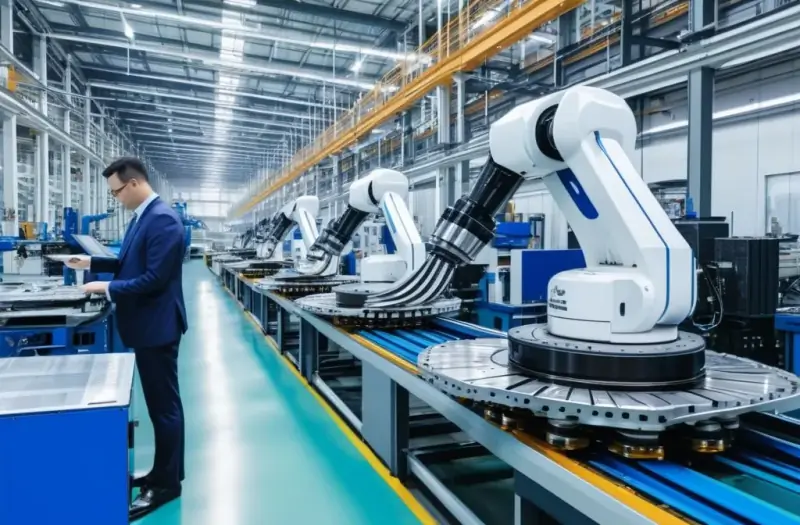
AI technology in manufacturing continues to evolve, introducing new and advanced systems into production. Here are some of the latest innovations:
Machine Learning and Data Analytics
Machine learning and data analytics are at the heart of AI-enhanced manufacturing. By analyzing massive datasets, AI systems can identify trends, predict demand, and optimize production schedules. Data-driven manufacturing helps manufacturers make better decisions based on real-time data and historical insights, leading to more agile and responsive manufacturing.
Digital Manufacturing Solutions
Digital manufacturing solutions combine AI and IoT (Internet of Things) to create a connected, efficient factory environment. With AI analyzing data from IoT devices, manufacturers gain insights into equipment performance, product quality, and production speed. This connected infrastructure forms the backbone of digital transformation in manufacturing.
Digital manufacturing offers:
- Improved operational efficiency
- Enhanced decision-making through real-time insights
- The ability to simulate production scenarios and optimize processes
AI-Powered Automation for Workflow Optimization
Automation is a fundamental aspect of AI-driven manufacturing processes, where machines manage repetitive tasks with precision and speed. AI-powered automation allows for seamless workflow optimization, with machines capable of handling tasks that once required human intervention. By minimizing manual labor, factories reduce the risk of human error and boost overall productivity.
FAQs: Common Questions About AI in Manufacturing
-
What is AI in manufacturing?
- AI in manufacturing refers to the use of artificial intelligence technologies, such as machine learning, robotics, and computer vision, to optimize production processes, enhance quality control, and manage supply chains more effectively.
-
How does predictive maintenance work?
- Predictive maintenance uses machine learning algorithms to monitor equipment and predict failures before they occur, preventing downtime and reducing repair costs.
-
Can AI improve product quality?
- Yes, AI can improve product quality through automated inspection systems that detect defects and inconsistencies, ensuring only high-quality products reach customers.
-
Is AI adoption expensive in manufacturing?
- Initial AI implementation can be costly; however, the long-term gains in efficiency, reduced waste, and improved production quality often outweigh the initial investment.
-
What are the main benefits of AI-powered automation?
- AI-powered automation increases productivity, minimizes human error, and allows for faster, more flexible production processes.
Conclusion
AI in manufacturing is fundamentally reshaping the industry, allowing companies to move beyond traditional methods and adopt innovative, data-driven approaches. With AI-driven predictive maintenance, quality control, robotics, and supply chain management, manufacturers are realizing new efficiencies and improvements. As technology continues to advance, the future of manufacturing will likely be defined by even smarter, more autonomous production systems that are fully integrated with AI.
Key Takeaways
- AI enhances efficiency in manufacturing by automating tasks, optimizing workflows, and enabling predictive maintenance.
- Quality control benefits from AI-powered inspection systems that detect defects early, ensuring high product standards.
- Robotics and smart factories are transforming traditional factories into intelligent, adaptable environments.
- AI-driven supply chain management offers better demand forecasting and improved customer satisfaction.
- As AI in manufacturing evolves, we can expect even more integration and innovation across the industry.

How Much of a Document Does AI Read?
Artificial Intelligence (AI) has transformed the way we interact with documents, analyzing vast amounts of data in record time. But just how much of a document does AI actually read? In exploring this, we aim to demystify AI’s reading scope, understanding its limits, and how its document-processing capabilities stack up against human comprehension. Let’s dive into the nuances of AI’s ability to analyze, understand, and process text data, and what implications it holds for us as users and developers.
Understanding AI’s Document Reading Scope
AI’s document reading scope is typically determined by the algorithms and machine learning models it uses to process information. Unlike humans, who read word-by-word and sentence-by-sentence, AI processes text in a more segmented way.
How AI Scans Content
- Tokenization: Most AIs divide content into smaller units or “tokens.” These tokens could be words, phrases, or even punctuation marks, depending on the complexity of the AI model.
- Sampling and Prioritization: Some AI models focus on the beginning of a document, assuming that the most important information is presented early. Others prioritize based on keywords or highlighted sections.
- Memory Constraints: Some advanced AI models have memory capacities that limit the number of tokens they can process at one time, often influencing how much of a document they can effectively “read.”
Despite the impressive speed and depth of analysis AI provides, its comprehension extent is inherently shaped by these operational limitations. Thus, understanding an AI’s content analysis range is essential to grasping how much of the document is truly processed.
AI Text Analysis Depth: Is AI Really “Reading”?

When we say AI is “reading,” we’re referring to pattern recognition and data processing rather than human-like reading. Unlike humans who may interpret context, tone, or hidden meanings, AI is designed to focus on specific text processing capacity. Here are some limitations:
- Semantic Understanding: AI often struggles with nuanced language. Slang, idioms, or cultural references might be lost on AI.
- Summarization and Content Gaps: Many AIs are designed to provide summaries, but these may omit context or details that humans would notice.
- Length of Document: Depending on its memory capacity, an AI may only process a certain percentage of a long document, affecting its document understanding span.
For instance, the average AI content read coverage may only extend to a few thousand tokens, meaning a lengthy document might be truncated, or only key sections analyzed.
AI Document Processing Limit and Its Implications
One of the pressing questions with AI document processing is its ability to handle large files without compromising on accuracy. When we rely on AI to parse contracts, medical records, or research papers, we need it to be comprehensive. However, here’s where limitations become apparent:
- Memory Constraints: Certain models, such as OpenAI’s GPT-3, are capped at a token limit of approximately 4,096 tokens, roughly equivalent to 1,500 words.
- Truncation Risks: A large document may exceed this limit, meaning the AI either skips or trims content.
- Prioritization Protocols: AI tools might prioritize certain sections over others based on programmed algorithms, potentially leaving out key details.
These constraints reflect the need to carefully select which AI model to use, depending on the required document read level by AI and the depth of information needed.
How AI Decides What Content to Scan and Process

Most AIs are trained to be selective in their reading to maximize relevance and efficiency. Here are some of the methods used to improve AI content analysis range:
- Keyword Matching: Some AIs scan for particular terms to prioritize certain sections over others.
- Structured Data: A document with headings, bullet points, and sections allows for better AI data ingestion capacity as it can identify relevant areas more easily.
- Hierarchical Processing: Some AI models process information hierarchically, first looking at the larger sections before delving into finer details.
Such strategies enable AI to enhance its machine reading extent but do not entirely replace the depth of human reading and comprehension.
Document Analysis Depth by AI: Comparing to Human Comprehension
Humans and AI approach reading in fundamentally different ways. While humans interpret meaning based on context, AI often struggles to move beyond literal interpretation. Let’s consider some differences:
- Contextual Nuance: AI might overlook subtleties like sarcasm, humor, or cultural context.
- Memory and Retention: AI’s “memory” is limited to the parameters it was trained on and is often reset between tasks.
- Detail Orientation: Humans can identify important details on the fly, while AI may not recognize significance unless specifically programmed to do so.
These contrasts illustrate why, despite its remarkable advancements, AI’s text consumption level remains below the nuanced, adaptive reading abilities that humans possess.
FAQ: Common Questions About AI’s Document Reading Capabilities
Can AI read an entire document from start to finish?
Most AIs do not read from start to finish but instead analyze based on token limitations and prioritization.
How does AI choose which parts of a document to read?
AI often relies on token limits, keywords, and hierarchical processing methods to decide which sections to prioritize.
Does AI understand complex human language?
AI has limitations with complex, idiomatic, or nuanced language and may struggle with sarcasm or humor.
What are AI’s token limits in document processing?
Popular AI models, like GPT-3, are typically capped at around 4,096 tokens, limiting the amount of content they can analyze at one time.
Can AI detect context and tone in a document?
AI can approximate tone to an extent but often misses deeper contextual nuances that humans easily recognize.
Key Takeaways
- AI document reading scope is limited by memory and processing constraints, usually analyzing text in sections based on token capacity.
- AI text analysis depth is often shallower than human reading, missing nuanced details and complex language.
- AI document processing limit means that longer documents may be truncated, with only prioritized sections being analyzed.
- AI comprehension extent focuses on pattern recognition and keyword matching, falling short of human-like understanding.
- Choosing the right AI model is crucial for tasks that require a deeper reading capacity and extensive comprehension.
Conclusion
In understanding how much of a document AI reads, it’s essential to recognize both its powerful capabilities and inherent limitations. While AI has proven incredibly useful in scanning, summarizing, and prioritizing document content, it is not a replacement for human reading and understanding. AI excels at processing large amounts of data quickly, but it lacks the nuanced comprehension that humans bring to text analysis. As AI technology advances, the reading scope, data ingestion capacity, and processing depth will likely improve, but knowing its limits remains crucial for informed usage in document analysis.

How to Add More Samplers to Krita AI Generation Tool
In the evolving world of digital art and design, Krita stands out as a powerful tool for artists and creators. One of the most exciting features in Krita is its AI generation tool, which allows users to create unique and innovative artworks with the help of artificial intelligence. However, for those looking to enhance their creative process, adding more samplers to Krita’s AI generation tool can provide a significant boost. In this comprehensive guide, we’ll delve into how you can increase samplers in Krita AI and improve your artistic outputs by expanding your sampling options.
Understanding Samplers in Krita AI

Before diving into the specifics of how to add more samplers to Krita AI, it’s crucial to understand what samplers are and why they matter. Samplers in Krita’s AI tool are essentially data points that the AI uses to generate and refine artwork. They play a vital role in how diverse and accurate the AI’s creations are.
What Are Samplers?
Samplers are elements used by the AI to gauge and generate artistic styles. They allow the AI to learn from various input sources and apply these learned styles to new creations. By expanding sampling capabilities in Krita AI, you enhance the tool’s ability to produce more varied and refined outputs. This means more diverse textures, colors, and artistic influences can be incorporated into your work.
Why Increase Samplers?
Increasing the number of samplers in Krita AI can significantly improve the quality of your generated images. Adding additional samplers to Krita AI allows for greater diversity and precision in the results. The more samplers you use, the better the AI can understand and replicate different artistic styles and techniques. This ultimately leads to more creative and visually appealing artwork.
How to Add More Samplers to Krita AI Generation Tool
Now that we have a basic understanding of samplers, let’s explore the steps involved in adding more samplers to Krita AI generation tool. This process involves modifying the settings and configurations to integrate additional sampling options.
Accessing Krita AI Settings
The first step in expanding sampling options in Krita AI is accessing the settings where samplers are managed. Navigate to the AI generation tool settings in Krita, which can typically be found in the tool’s configuration or preferences menu.
Configuring Additional Samplers
Once you’ve accessed the settings, look for an option related to sampling or data inputs. This is where you can increase samplers in Krita AI by specifying additional data sources or adjusting existing parameters. Ensure that you are selecting samplers that align with your artistic goals and project requirements.
Saving and Testing
After configuring the additional samplers, save your settings and run a few test generations to evaluate the results. This will help you see how the new samplers affect the AI’s output and make any necessary adjustments. Regular testing ensures that the enhanced sampling functionality is working as intended and producing the desired effects.
Best Practices for Using Samplers

To make the most out of the enhanced sampling features in Krita AI, it’s important to follow some best practices. These tips will help you effectively utilize your new samplers and achieve better results in your creative projects.
Selecting Relevant Samplers
When adding samplers, ensure that they are relevant to the type of artwork you are creating. Enriching samplers for Krita AI with data that matches your artistic style or project theme will result in more cohesive and effective outputs.
Regular Updates and Maintenance
Keep your samplers updated and regularly review their performance. As your projects evolve, so should your sampling settings. Upgrading sampling options in Krita AI periodically will help maintain the quality and relevance of your AI-generated artwork.
Experiment and Iterate
Don’t hesitate to experiment with different samplers and settings. The flexibility to augment sampling settings in Krita AI allows you to explore various artistic possibilities and refine your process over time. Iteration is key to discovering what works best for your specific needs.
FAQs
How can I add more samplers to Krita AI?
You can add more samplers by accessing the AI tool settings in Krita and configuring additional data sources or parameters within the sampling options.
Why should I increase the number of samplers in Krita AI?
Increasing samplers allows the AI to produce more varied and refined outputs by incorporating a wider range of artistic influences and styles.
What are the benefits of enhancing sampling features in Krita AI?
Enhanced sampling features lead to improved quality and diversity in AI-generated artworks, providing more creative possibilities and better results.
How often should I update my samplers in Krita AI?
It’s advisable to update your samplers regularly to keep up with evolving artistic trends and ensure the continued relevance and effectiveness of your AI tool.
Key Takeaways
- Increasing samplers in Krita AI enhances the diversity and quality of AI-generated artwork.
- Access and configure samplers through Krita’s AI settings for better results.
- Regular updates and experimentation with samplers lead to improved artistic outcomes.
By following these guidelines on how to add more samplers to Krita AI generation tool, you can significantly enhance your creative projects and unlock new artistic possibilities. Happy creating!

How to Ask AI to Make a Shroom Logo: A Step-by-Step Guide
In today’s digital age, artificial intelligence (AI) has revolutionized the way we approach creative projects, including logo design. Whether you’re starting a new brand or looking to revamp an existing one, AI tools can help you create a unique and eye-catching logo in just a few clicks. In this guide, we will walk you through the process of how to ask AI to make a shroom logo, ensuring that you get a design that truly represents your vision.
Understanding the Appeal of a Shroom Logo
Mushroom-themed logos have become increasingly popular in recent years, especially among brands that embrace a natural, organic, or whimsical aesthetic. The shroom logo is versatile, symbolizing everything from growth and resilience to mysticism and creativity. When we decided to explore the world of AI-driven logo design, the idea of creating a shroom logo immediately intrigued us.
Why Choose a Shroom Logo?
Mushrooms, with their unique shapes and rich symbolism, offer a wide range of design possibilities. Here’s why you might consider a shroom logo for your brand:
- Versatility: Mushrooms can be stylized in various ways, from simple outlines to detailed, realistic depictions.
- Symbolism: They represent growth, renewal, and the interconnectedness of life, making them ideal for eco-friendly, wellness, or creative brands.
- Aesthetic Appeal: The organic forms and earthy tones associated with mushrooms can make your logo visually appealing and memorable.
The Role of AI in Logo Design
AI has transformed the creative landscape, making it easier for individuals and businesses to design logos without needing advanced graphic design skills. When you ask AI to make a shroom logo, you’re leveraging advanced algorithms that can generate design options based on your input. This not only saves time but also opens up a world of creative possibilities that you might not have considered.
How to Ask AI to Make a Shroom Logo: A Detailed Guide

Creating a shroom logo using AI is a straightforward process, but there are several steps involved to ensure you get the best possible design. Let’s dive into the process, step by step.
1. Choose the Right AI Tool
The first step in creating your shroom logo is selecting the right AI-powered logo design tool. There are several options available, each with its own strengths and weaknesses. When we were exploring how to ask AI to make a shroom logo, we found that the following tools stood out:
- Canva: Known for its user-friendly interface and extensive template library, Canva is a great choice for beginners.
- Logojoy: This tool uses AI to generate logos based on your preferences, offering a more customized experience.
- Tailor Brands: Tailor Brands is another AI-driven platform that offers a wide range of design options and customization features.
When choosing a tool, consider your specific needs, such as the level of customization you require, your budget, and the overall design aesthetic you’re aiming for.
2. Define Your Brand Identity
Before asking AI to make a shroom logo, it’s essential to have a clear understanding of your brand identity. This includes defining your brand’s values, mission, and target audience. Here are some questions to guide you:
- What does your brand stand for?
- Who is your target audience?
- What emotions or messages do you want your logo to convey?
By answering these questions, you’ll be better equipped to input relevant information into the AI tool, ensuring that the generated logo aligns with your brand’s identity.
3. Input Your Preferences
Once you’ve chosen an AI tool and defined your brand identity, it’s time to input your preferences. This step is crucial because the AI will use this information to generate your shroom logo. Here’s what you’ll typically need to provide:
- Logo Style: Choose between various styles, such as modern, vintage, minimalist, or abstract.
- Color Scheme: Select colors that reflect your brand’s personality. For a shroom logo, earthy tones like browns, greens, and oranges are popular choices.
- Iconography: Specify that you want a mushroom or shroom-themed design.
- Font: Choose a font that complements the overall design. Fonts can range from playful and whimsical to bold and authoritative.
4. Review and Customize the Generated Logos
After you ask AI to make a shroom logo, the tool will generate several design options based on your input. This is where the fun begins! Take your time to review the options and choose the one that best represents your brand. Most AI tools allow you to further customize the logo by adjusting the colors, fonts, and layout.
5. Finalize and Download Your Logo
Once you’re satisfied with your shroom logo, the final step is to download the design. Make sure to download it in various formats (e.g., PNG, JPEG, SVG) to ensure it can be used across different platforms and media. You might also want to consider creating different versions of the logo, such as a black-and-white version or a simplified version for small-scale use.
Tips for Creating an Effective Shroom Logo
Creating a logo is more than just choosing an icon and colors; it’s about conveying your brand’s essence in a single image. Here are some tips to help you create an effective shroom logo:
1. Keep It Simple
Simplicity is key when it comes to logo design. A simple logo is easier to recognize and more versatile across different media. Avoid cluttering your design with too many elements or overly intricate details.
2. Use Negative Space
Negative space is the empty space around and within your logo design. Clever use of negative space can make your shroom logo more visually appealing and memorable. For example, you might use negative space to create a hidden image or add depth to your design.
3. Ensure Scalability
Your logo should look good at any size, whether it’s on a business card or a billboard. Test your logo at different scales to ensure that it remains clear and legible. If your shroom logo has intricate details, consider creating a simplified version for smaller applications.
4. Stay True to Your Brand
While it’s tempting to follow design trends, it’s important to stay true to your brand’s identity. Your logo should reflect your brand’s values and appeal to your target audience. If a shroom logo aligns with your brand’s personality and message, go for it!
Common Mistakes to Avoid When Asking AI to Make a Shroom Logo

While AI tools have made logo design more accessible, there are still some common mistakes that you should avoid to ensure the best results.
1. Relying Too Heavily on AI
AI is a powerful tool, but it shouldn’t replace human creativity and judgment. Use AI as a starting point, but don’t be afraid to make manual adjustments to ensure your logo truly reflects your brand.
2. Overcomplicating the Design
As mentioned earlier, simplicity is crucial in logo design. Avoid adding too many elements or colors, as this can make your logo look cluttered and confusing. Stick to a simple, clean design that communicates your brand’s message clearly.
3. Ignoring Brand Consistency
Your logo is a key part of your brand identity, so it’s important to ensure consistency across all your branding materials. Make sure your shroom logo aligns with your brand’s overall style and tone, and use the same logo consistently across all platforms.
FAQs About Asking AI to Make a Shroom Logo
1. What is the best AI tool for creating a shroom logo?
The best AI tool for creating a shroom logo depends on your specific needs. Canva, Logojoy, and Tailor Brands are all popular options with different features. We recommend trying a few tools to see which one best suits your design preferences.
2. Can I fully customize the AI-generated shroom logo?
Yes, most AI tools allow for a significant degree of customization. You can adjust elements such as colors, fonts, and layout to ensure the final logo matches your vision.
3. Is it possible to trademark an AI-generated logo?
Yes, you can trademark an AI-generated logo as long as it meets the standard trademark requirements. We recommend consulting with a trademark attorney to ensure your logo is eligible for trademark protection.
4. How much does it cost to create a shroom logo using AI?
The cost of creating a shroom logo using AI varies depending on the tool you choose. Some platforms offer free versions with limited features, while others require a paid subscription for full access.
5. Can AI tools create logos that are unique and not just templates?
Yes, AI tools use algorithms to generate unique logos based on your input. While some elements may be template-based, you can customize your logo to ensure it stands out.
Conclusion
In this guide, we’ve walked you through the process of how to ask AI to make a shroom logo, from selecting the right tool to finalizing your design. AI has made logo design more accessible and efficient, allowing anyone to create a professional-quality logo with minimal effort. By following the steps outlined in this article and keeping our tips in mind, you can create a shroom logo that perfectly represents your brand.
Key Takeaways
- AI tools offer a convenient way to create unique logos, including shroom-themed designs.
- Understanding your brand identity is crucial before asking AI to generate a logo.
- Customization is key; use AI as a starting point but refine the design to match your brand.
- Keep your design simple, scalable, and consistent with your brand’s overall aesthetic.
- Avoid common mistakes such as overcomplicating the design or relying too heavily on AI.
By leveraging the power of AI, you can bring your vision of a shroom logo to life, ensuring
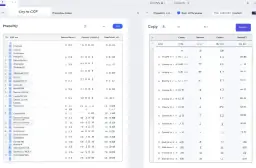
How to Copy Tables from Perplexity AI: A Simple Guide
In today’s fast-paced digital world, we often find ourselves working with a variety of tools to enhance our productivity. Perplexity AI is one such tool that has gained popularity for its advanced capabilities in generating content, insights, and tables. However, one common challenge that users face is how to efficiently copy tables from Perplexity AI. In this guide, we’ll walk you through the process step-by-step, ensuring that you can seamlessly transfer tables from Perplexity AI to your documents or presentations.
Introduction
When it comes to AI-generated content, accuracy and precision are key. Perplexity AI excels at generating structured data in the form of tables, making it a valuable asset for anyone dealing with large datasets, research, or presentations. However, the process of copying these tables can be a bit tricky if you’re not familiar with the platform’s features. Our goal is to make this process as simple and straightforward as possible so that you can focus on what really matters—analyzing and presenting your data.
In this guide, we’ll explore the different methods available to copy tables from Perplexity AI, including some tips and tricks to ensure that the formatting remains intact. Whether you’re using these tables for a report, a presentation, or just for personal use, this guide will equip you with the knowledge you need to do it efficiently.
Understanding Perplexity AI’s Table Features

Before we dive into the copying process, it’s important to understand the table features available in Perplexity AI. The platform is designed to generate structured and organized data, which can be particularly useful in various professional contexts. Tables in Perplexity AI are often generated based on user queries, and they can include everything from statistical data to comparison charts.
The Importance of Structured Data
Structured data is essential in many fields, including research, business, and education. It allows for easier data analysis, comparison, and visualization. In Perplexity AI, tables are designed to present information clearly and concisely, making it easier for users to interpret the data.
Customizing Table Output
One of the key features of Perplexity AI is the ability to customize the table output according to your needs. You can adjust the parameters to include specific data points, compare different datasets, or even generate statistical analyses. Understanding how to customize these tables will ensure that you get the most accurate and relevant data for your purposes.
Method 1: Copying Tables Directly from Perplexity AI
The simplest way to copy a table from Perplexity AI is by using the direct copy method. This method works well if you need to quickly transfer data without worrying too much about formatting.
Step-by-Step Guide
- Generate the Table: Start by generating the table in Perplexity AI based on your query. Ensure that the data is accurate and meets your requirements.
- Select the Table: Click and drag your cursor over the table to highlight it. Make sure that you’ve selected the entire table, including headers and data points.
- Copy the Table: Right-click on the highlighted area and select “Copy” from the context menu. Alternatively, you can use the keyboard shortcut
Ctrl+C(Windows) orCmd+C(Mac) to copy the table. - Paste the Table: Open your document or presentation where you want to paste the table. Right-click and select “Paste” or use the keyboard shortcut
Ctrl+V(Windows) orCmd+V(Mac).
Tips for Maintaining Formatting
When copying tables directly, you might encounter some formatting issues, especially if you’re pasting the table into a program with different formatting rules, like Microsoft Word or Google Docs. To maintain the original formatting, consider using the “Paste Special” option and selecting “Keep Source Formatting.”
Method 2: Exporting Tables as Images
If you’re concerned about maintaining the exact formatting of your table, exporting the table as an image is a great alternative. This method is particularly useful for presentations where visual consistency is key.
Step-by-Step Guide
- Generate the Table: As with the direct copy method, start by generating the table in Perplexity AI.
- Screenshot the Table: Use a screenshot tool to capture the table. Ensure that the entire table is visible and that the screenshot is clear.
- Edit the Image (Optional): If necessary, you can use an image editing tool to crop or adjust the screenshot to focus on the table.
- Insert the Image: Paste or insert the image into your document or presentation. This method ensures that the table’s formatting remains consistent, regardless of where you paste it.
Advantages of Using Images
Using images to transfer tables is advantageous because it preserves the exact look and feel of the original table. This is particularly useful for professional presentations where visual clarity is paramount.
Method 3: Using HTML Export
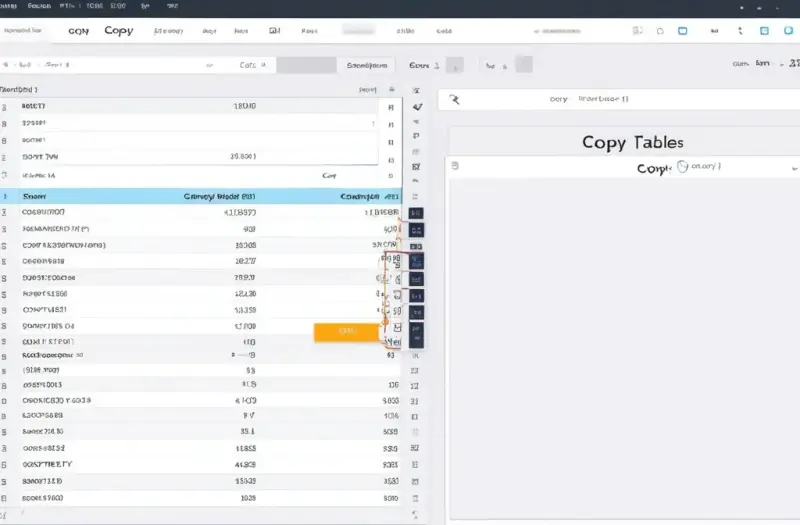
For users who need to integrate tables into web pages or want more control over the table’s appearance, exporting the table as HTML is an ideal solution.
Step-by-Step Guide
- Generate the Table: Begin by generating the desired table in Perplexity AI.
- Export as HTML: Look for the export options within Perplexity AI. Choose “Export as HTML” if available. This will generate a code snippet that you can use.
- Copy the HTML Code: Copy the HTML code provided by Perplexity AI. Ensure that you copy the entire code to avoid missing any data.
- Insert into Your Web Page: Paste the HTML code into the appropriate section of your web page’s source code. This method allows you to customize the table’s appearance using CSS.
Customizing with CSS
One of the benefits of exporting tables as HTML is the ability to customize their appearance using CSS. This gives you full control over how the table looks on your web page, including fonts, colors, and spacing.
Troubleshooting Common Issues
While copying tables from Perplexity AI is generally straightforward, you might encounter some issues along the way. Here are a few common problems and how to solve them.
Issue 1: Formatting Errors
Formatting errors can occur when pasting tables into different programs. To resolve this, try using the “Paste Special” option and selecting “Keep Source Formatting.” If that doesn’t work, consider exporting the table as an image or HTML.
Issue 2: Missing Data
If some data is missing after copying, ensure that you’ve selected the entire table before copying. Double-check the data in Perplexity AI to confirm that it was generated correctly.
Issue 3: Inconsistent Table Size
Sometimes, the table might appear too large or too small when pasted into a document. You can adjust the size by resizing the table in your document editor. For better control, consider exporting the table as an image.
Best Practices for Using Tables from Perplexity AI
To get the most out of Perplexity AI’s table features, it’s important to follow a few best practices.
Double-Check Data Accuracy
Before copying any table, always double-check the data to ensure its accuracy. This is particularly important if you’re using the data for professional or academic purposes.
Customize for Your Needs
Don’t hesitate to customize the table output to suit your specific needs. Perplexity AI offers various customization options that can help you get the exact data you need.
Keep Formatting Consistent
Maintaining consistent formatting is key to producing professional-looking documents and presentations. Use the methods described in this guide to ensure that your tables look clean and organized.
FAQs
How do I copy a table from Perplexity AI without losing formatting?
To copy a table without losing formatting, use the “Paste Special” option and select “Keep Source Formatting.” Alternatively, export the table as an image or HTML for better control over the appearance.
Can I edit the tables after copying them from Perplexity AI?
Yes, you can edit the tables after copying them, but the level of editability depends on the method used. Directly copied tables can be edited within most document editors, while tables exported as images require image editing software for modifications.
Is it possible to integrate tables from Perplexity AI into a website?
Absolutely! You can export the table as HTML and then insert it into your website’s source code. This method allows for further customization using CSS.
What should I do if the table data is incomplete?
If the table data is incomplete, check the original table in Perplexity AI to ensure that all data was generated. If the problem persists, try regenerating the table or adjusting the query parameters.
Can I use Perplexity AI tables in professional reports?
Yes, Perplexity AI tables are suitable for professional reports. Just make sure to double-check the data for accuracy and format the table appropriately for your audience.
Conclusion
Copying tables from Perplexity AI might seem daunting at first, but with the right approach, it can be a simple and efficient process. Whether you’re copying directly, exporting as images, or using HTML, there are several methods available to ensure that your tables look professional and maintain their integrity. By following the steps outlined in this guide, you’ll be able to seamlessly integrate Perplexity AI tables into your workflow, saving you time and effort.
Key Takeaways
- Understanding Perplexity AI’s table features is crucial for efficient data transfer.
- There are multiple methods available for copying tables, each with its own benefits.
- Troubleshoot common issues like formatting errors or missing data to ensure smooth copying.
- Follow best practices to maintain data accuracy and formatting consistency.
- FAQs section addresses common questions, providing quick solutions.
By mastering

How to Make Videos Like Osmosis Copy AI
Creating videos like those produced by Osmosis is a blend of art, technology, and strategy. In this guide, we will walk you through how to make videos like Osmosis Copy AI, combining AI-driven video creation with educational video production techniques. Whether you’re aiming to replicate Osmosis-style videos for your educational content or seeking to enhance your AI-powered educational videos, this article will provide you with the tools and insights you need.
Understanding the Osmosis Video Style
The first step in making videos like Osmosis is understanding what sets their content apart. Osmosis videos are known for their clarity, engaging visuals, and educational value. These videos often break down complex concepts into digestible, easy-to-understand pieces, making them ideal for learners.
To replicate Osmosis-style videos:
- Focus on clarity: Ensure that your videos convey information in a clear and concise manner.
- Use engaging visuals: Incorporate animations, diagrams, and infographics to support your content.
- Maintain educational value: Your content should be informative and valuable to the viewer.
By focusing on these three elements, you can create content that resonates with audiences in the same way that Osmosis videos do.
Tools and Techniques for AI-Driven Video Creation
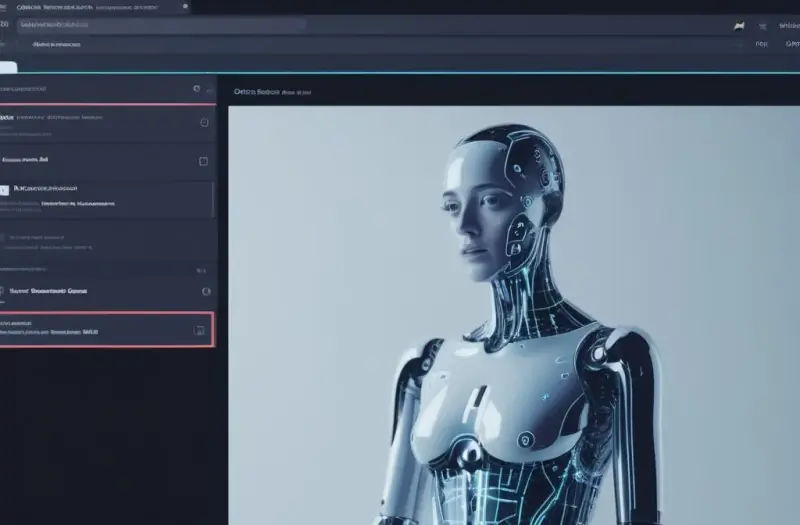
When it comes to creating AI-enhanced video tutorials like those from Osmosis, the right tools are essential. There are several AI-based platforms that can help you automate the video creation process, ensuring consistency and quality.
AI Video Creation Tools
- Lumen5: An AI-powered video creation platform that allows you to turn text into video in minutes. It’s ideal for creating AI-generated educational content.
- Synthesia: This tool uses AI to create videos with realistic avatars. It’s perfect for producing Osmosis-inspired videos where a human touch is needed.
- Pictory: Pictory is known for its ability to create short, engaging video summaries from long-form content. It’s particularly useful for replicating Osmosis video techniques in educational contexts.
Techniques for Effective Video Creation
To create videos similar to Osmosis, follow these steps:
- Scriptwriting: Start with a well-written script. Break down complex topics into simple, easy-to-understand segments. Use bullet points to highlight key points.
- Storyboarding: Plan your visuals in advance. Create a storyboard that outlines how each section of the script will be visually represented.
- Voiceover: Use a clear and professional voiceover to narrate your videos. The voiceover should match the tone and pacing of the content.
- Editing and Animation: Use animation tools like Adobe After Effects or even simpler tools like Animoto to add engaging visual elements to your videos.
By combining these tools and techniques, you can efficiently produce high-quality videos that mirror the style of Osmosis.
Structuring Your Educational Videos
The structure of your video plays a crucial role in how well the content is received. Osmosis videos are structured to maximize learning and retention, and by following a similar approach, you can create videos that are both informative and engaging.
Key Components of an Effective Educational Video
- Introduction: Start with a brief introduction that outlines what the video will cover. This sets the stage for the viewer and provides a roadmap for the content.
- Main Content: Break the content into clear sections, each focusing on a specific aspect of the topic. Use H3 headings for sub-sections to organize the information effectively.
- Visual Aids: Incorporate diagrams, charts, and animations to help explain complex concepts.
- Summary: Conclude each section with a brief summary of the key points discussed. This reinforces the learning and ensures that viewers retain the most important information.
Example Structure for Osmosis-Style Videos
- Introduction: Overview of the topic
- Section 1: Explanation of the first key concept
- Section 2: In-depth analysis of the second key concept
- Section 3: Application of the concepts in real-world scenarios
- Conclusion: Recap of the main points and final thoughts
This structure ensures that the content is easy to follow and that viewers are engaged from start to finish.
Enhancing Engagement Through Visual Storytelling

Visual storytelling is a hallmark of Osmosis videos. By using visuals to complement the narrative, you can enhance the viewer’s understanding and keep them engaged throughout the video.
Tips for Effective Visual Storytelling
- Consistency: Use a consistent visual style throughout the video to create a cohesive viewing experience.
- Simplicity: Avoid overcrowding the screen with too much information. Focus on one visual element at a time.
- Relevance: Ensure that every visual element directly supports the content being discussed.
Implementing Animations and Infographics
Animations and infographics are powerful tools for explaining complex concepts in a simple and engaging way. Platforms like Canva and Piktochart offer easy-to-use tools for creating professional-quality visuals.
- Animations: Use animations to demonstrate processes or concepts that are difficult to convey with static images.
- Infographics: Infographics can be used to summarize large amounts of data or to illustrate relationships between concepts.
By incorporating these elements, you can create videos that not only inform but also captivate your audience.
Common Challenges and How to Overcome Them
Creating Osmosis-style content isn’t without its challenges. From maintaining viewer engagement to ensuring accuracy in educational content, there are several hurdles you may encounter.
Challenge 1: Keeping the Audience Engaged
One of the biggest challenges in educational video production is maintaining viewer engagement. To overcome this:
- Pacing: Keep a steady pace that allows viewers to absorb information without feeling rushed.
- Interactive Elements: Incorporate quizzes or questions to engage viewers actively.
- Variety: Mix up the content by alternating between narration, visuals, and on-screen text.
Challenge 2: Ensuring Accuracy and Clarity
Accuracy is crucial, especially in educational content. To ensure that your videos are both accurate and clear:
- Research: Back up your content with reliable sources and double-check facts before including them in your videos.
- Feedback: Before publishing, get feedback from experts in the field to ensure the content is accurate and well-explained.
FAQs About Making Videos Like Osmosis
How can I replicate the Osmosis-style in my videos?
To replicate the Osmosis-style, focus on clarity, use engaging visuals, and ensure that your content has educational value.
What tools do I need to create AI-driven educational videos?
Tools like Lumen5, Synthesia, and Pictory are great for automating the video creation process while maintaining high quality.
What are the key components of an effective educational video?
An effective educational video should include an introduction, structured main content, visual aids, and a summary.
How can I keep my audience engaged throughout the video?
To keep your audience engaged, use a steady pacing, incorporate interactive elements, and vary the content delivery method.
What should I do to ensure the accuracy of my educational content?
Always research your content thoroughly, cite reliable sources, and get feedback from subject matter experts before publishing.
Conclusion
Creating videos like Osmosis Copy AI is both an art and a science. By understanding the elements that make these videos effective—clarity, engaging visuals, and educational value—you can create content that is not only informative but also engaging. Utilizing AI-driven tools and following a structured approach, you can overcome the common challenges in video creation and produce high-quality educational videos that resonate with your audience.
Key Takeaways
- Understand the Osmosis style: Focus on clarity, engaging visuals, and educational value.
- Use AI tools: Platforms like Lumen5 and Synthesia can streamline the video creation process.
- Structure your videos: A well-organized structure enhances learning and retention.
- Incorporate visual storytelling: Use animations and infographics to support your narrative.
- Overcome challenges: Engage your audience and ensure accuracy in your content.
By following these guidelines, you can confidently embark on your journey to create AI-enhanced educational videos that mimic the style and impact of Osmosis.

How to Prompt ChatGPT for Better Responses Effectively




How to Start a Career in AI Research: Essential Steps
Is it possible to break into artificial intelligence research without a PhD from MIT or a decade of coding experience? This question might challenge some long-held beliefs, but it’s exactly the kind of question we need to ask as the AI landscape becomes increasingly accessible. The myth that AI research is only for an elite few is slowly being dismantled by emerging tools, resources, and community support.
As we move deeper into the era of machine learning and intelligent systems, we’re witnessing a shift: more passionate learners and professionals from various backgrounds are transitioning into the AI research profession. We’ve entered a time where curiosity, commitment, and access to the right resources can shape the next generation of AI innovators. But how exactly do we begin this journey?
In this article, we’ll walk together through a clear roadmap for starting a career in AI research—whether you’re a student considering graduate studies or a professional looking to pivot into a new domain. With practical steps, tools, and insights, our goal is to help you demystify the AI researcher career path and take your first bold steps into the fascinating world of artificial intelligence research.
Understanding the AI Research Profession
The role of an AI researcher isn’t confined to academia. While many AI scientists do work within universities or research institutions, an increasing number contribute to private sector innovation and government-led technology initiatives. AI research today powers advancements in healthcare, finance, climate modeling, robotics, and even creative industries.
As AI systems become more embedded into our daily lives, the need for researchers who understand both the theoretical foundations and practical applications has skyrocketed. Companies like OpenAI, Google DeepMind, Meta AI, and Anthropic actively seek talents capable of driving breakthroughs in machine learning and deep learning algorithms.
AI researchers often specialize in one or more of the following areas:
- Machine Learning Research – Developing models and algorithms to improve pattern recognition.
- Natural Language Processing – Teaching machines to understand and generate human language.
- Computer Vision – Enabling machines to interpret and analyze visual data.
- Reinforcement Learning – Designing systems that learn through feedback and interaction.
- AI Ethics and Fairness – Ensuring algorithms operate without bias or harm.
To be successful, an AI researcher must combine scientific curiosity, technical skill, and a passion for solving real-world problems.
Building the Right Educational Foundation

To pursue a career in AI research, we need a strong foundation in mathematics and computer science. Most AI researchers hold degrees in:
- Computer Science
- Data Science
- Mathematics or Statistics
- Electrical Engineering
- Cognitive Science
But academic degrees alone aren’t enough. Practical exposure is just as crucial. We recommend starting with the following areas:
- Linear Algebra, Probability, and Statistics – The bedrock of AI algorithms.
- Python Programming – The lingua franca of AI development.
- Data Structures and Algorithms – Core principles for any technical career.
- Machine Learning Libraries like TensorFlow, PyTorch, or Scikit-learn.
Whether through a formal bachelor’s or master’s program, or self-taught using MOOCs (Massive Open Online Courses), it’s essential to focus on building both theoretical and applied knowledge.
Remember, becoming an AI researcher is not about memorizing facts—it’s about developing an investigative mindset.
Gaining Hands-On Research Experience
One of the best ways to break into AI research is by getting involved in actual projects. We can:
- Contribute to open-source AI projects on GitHub.
- Join university or online research labs to assist with ongoing studies.
- Participate in research competitions, such as Kaggle, DrivenData, or NeurIPS challenges.
Hands-on experience builds your technical portfolio and demonstrates your capacity for independent inquiry and innovation. Creating your own mini research project—even a small one—can be a powerful way to show initiative.
Try this approach:
- Pick a question or problem (e.g., “Can we predict stock trends with transformer models?”).
- Use public datasets and machine learning tools.
- Document the hypothesis, methods, and results.
- Publish findings on Medium, GitHub, or ArXiv.
These activities create proof of your capability and passion—essential traits for anyone entering the AI research field.
Finding the Right Mentors and Research Communities
Mentorship can significantly accelerate our progress. Connecting with experts who have walked the AI researcher career path offers guidance, feedback, and sometimes even opportunities for collaboration.
Here’s where to find mentors and like-minded researchers:
- Twitter, LinkedIn, and Reddit (e.g., r/MachineLearning)
- Academic conferences like ICML, NeurIPS, CVPR, and ACL
- Slack or Discord groups dedicated to AI
- Local AI meetups or university seminars
If you’re currently in school, take advantage of professor office hours or join faculty-led projects. Outside of school, don’t hesitate to cold-message researchers whose work you admire, respectfully expressing your interest in their research and asking thoughtful questions.
“Mentorship isn’t about shortcuts—it’s about expanding perspective.”
Choosing Between Industry and Academia

A major decision along the AI research roadmap is whether to focus on academia or transition into industry-led innovation. Both paths offer rich opportunities but differ in goals, culture, and output.
Academic Research:
- Focuses on long-term inquiry and publishing.
- Often requires PhD-level education.
- Offers autonomy in defining your research questions.
- Ideal for those who enjoy teaching or theoretical work.
Industry Research:
- Fast-paced, product-driven, and often team-based.
- Can be entered with a master’s degree or even a strong portfolio.
- Prioritizes practical outcomes and applications.
- Common in tech companies, startups, and government labs.
Some researchers balance both, collaborating with universities while working in industry. Ultimately, the choice depends on your interests: Are you driven by curiosity or impact? Or perhaps both?
Publishing and Sharing Your Work
Visibility matters in the AI field. One of the best ways to establish credibility is by publishing your research findings and sharing insights with the community.
Ways to showcase your work include:
- Research Papers – Submissions to conferences like NeurIPS, ICML, or ICLR.
- Blog Posts and Tutorials – Simplifying complex topics for wider audiences.
- Public GitHub Repos – With reproducible code and documentation.
- YouTube or Podcasts – Talking about the science behind your projects.
Creating value for others establishes your voice in the community and often leads to speaking engagements, collaborations, or even job offers.
In AI, your reputation is built on both contribution and communication.
Career Advancement and Continued Learning
AI research is constantly evolving, which means our learning never stops. To stay ahead, we should:
- Follow AI publications like ArXiv, Medium, Towards Data Science, and Distill.
- Take new courses (e.g., Stanford’s CS231n, MIT Deep Learning, or Fast.ai).
- Experiment with new frameworks or datasets.
- Stay current with trends like:
- Generative AI (e.g., LLMs like GPT)
- Multimodal models
- Federated learning
- AI for social good
Career growth in AI research is nonlinear. You may move between roles like:
- Research Engineer
- Data Scientist
- AI Product Lead
- Chief Scientist or CTO
The more we explore, the more opportunities we create.
FAQs
Do I need a PhD to become an AI researcher?
Not necessarily. While PhDs are common in academic roles, many industry researchers succeed with master’s degrees or even self-taught expertise.
Can I start an AI research career without a computer science degree?
Yes. Many researchers come from math, physics, linguistics, or cognitive science backgrounds. What matters is strong analytical thinking and coding ability.
How do I find AI research internships?
Check university labs, apply to research assistant positions, or search programs like Google AI Residency, OpenAI Scholars, and Meta AI Internships.
What programming languages should I learn?
Start with Python, and become familiar with libraries like NumPy, PyTorch, TensorFlow, and Scikit-learn.
Is it too late to switch to an AI research profession?
Absolutely not. With the right mindset and dedication, many professionals transition into AI careers in their 30s, 40s, and beyond.
Conclusion
Starting a career in AI research is more attainable than ever before. With a blend of curiosity, structure, and strategic action, we can step confidently into one of the most exciting fields of our generation. Whether we choose the academic route or the industry pathway, the opportunities for growth, impact, and discovery are boundless.
We’ve explored the essential steps to AI research career development, from educational foundations and practical experience to publishing and continued learning. This journey isn’t a sprint—it’s a lifelong pursuit of understanding, innovation, and collaboration.
Let’s take that first step together and contribute to the future of AI technology research—one insight at a time.
Key Takeaways
- AI research spans academia, industry, and ethical innovation.
- A strong foundation in math, coding, and curiosity is essential.
- Hands-on projects and publications are critical for credibility.
- Mentorship and community support accelerate growth.
- Career paths vary widely—explore and adapt as you learn.

How to Use ChatGPT for Daily Tasks and Productivity
Among the most talked-about breakthroughs is ChatGPT. This AI assistant isn’t just a chatbot; it’s a versatile productivity powerhouse that’s transforming how we work, plan, and even communicate. From helping you structure your day to drafting emails, brainstorming content, or creating meal plans, it’s a practical ally for modern life.
So, here’s the real question: If we could outsource our most repetitive tasks to AI, freeing up mental space for creativity and strategy, why wouldn’t we? In this article, we’ll dive deep into how to use ChatGPT for daily tasks and productivity and show you exactly how it can become your digital co-pilot for a more efficient, balanced life.
Understanding ChatGPT: Your AI Productivity Partner
ChatGPT is an advanced AI developed by OpenAI, designed to understand and generate human-like text. But what makes it truly remarkable isn’t just its conversational skills—it’s how we can harness its intelligence to optimize everyday routines and workflows.
Unlike traditional productivity apps that focus on specific functions, ChatGPT acts as a universal AI assistant for productivity. It adapts to your preferences, learns from your inputs, and helps you with everything from writing and research to brainstorming and planning.
What’s more, you don’t need to be a tech expert to use it. Whether you’re a student, entrepreneur, freelancer, or working professional, ChatGPT offers tailored suggestions that streamline how you approach your tasks. The result? Less stress, more structure, and significantly improved output.
Creating Smarter To-Do Lists with AI
To-do lists are essential—but they’re only effective if they’re realistic and well-prioritized. That’s where ChatGPT shines. Instead of manually organizing your day, just ask:
“Can you help me structure my to-do list based on urgency and time required?”
ChatGPT will then categorize tasks by priority (e.g., urgent, high-impact, low-effort) and suggest estimated durations. You can even prompt it with:
- “Break this down into 30-minute chunks”
- “Add buffer times for breaks”
Smart AI task automation like this minimizes decision fatigue and ensures your schedule stays balanced throughout the day.
Automating Routine Tasks for Maximum Efficiency
From writing standard emails to summarizing documents, ChatGPT handles repetitive tasks with speed and accuracy. Here’s how we use it:
- Drafting repetitive emails: “Write a professional follow-up email for a meeting I had yesterday.”
- Generating reports: “Summarize this 5-page document into key bullet points.”
- Filling forms or checklists: “Generate answers for a job application form.”
By automating tasks with AI, you reclaim time that’s better spent on creative or strategic work—boosting efficiency across the board.
Planning the Day with ChatGPT Scheduling Assistance

Planning your day used to involve flipping between calendars, notes, and reminders. Now? You can get a full schedule laid out by simply saying:
“Plan my day with 3 work sprints, a lunch break, and evening gym.”
ChatGPT integrates time-blocking methods and can even adjust plans on the fly: “I only have 5 hours today, reschedule the most important tasks.”
AI-enhanced daily planning not only boosts accountability but helps align your schedule with your energy levels and priorities.
Managing Projects with AI-Driven Insights
Project management isn’t just about task lists—it’s about vision and execution. Whether you’re working solo or in a team, ChatGPT offers real value in:
- Breaking down project goals into actionable steps
- Suggesting deadlines and dependencies
- Tracking progress and recommending adjustments
For example:
“Create a project timeline for launching a podcast, including branding, scripting, and promotion.”
The AI can create a Gantt-style timeline that keeps your team aligned and your milestones measurable.
| Project Phase | Tasks | Time Estimate | Dependencies |
|---|---|---|---|
| Branding | Logo, cover art | 3 days | Start immediately |
| Scripting | Episode topics, outlines | 5 days | After branding |
| Recording | Setup, schedule, record | 7 days | After scripting |
| Promotion | Social posts, outreach | 4 days | Post-recording |
Brainstorming Creative Ideas with AI Help
Feeling stuck during content creation? ChatGPT is an endless fountain of inspiration. Here are a few ways we use it to fuel creative breakthroughs:
- “Give me 10 unique blog ideas for a fitness brand”
- “Help me brainstorm taglines for an eco-friendly product”
- “Suggest Instagram captions about productivity”
ChatGPT daily hacks like this keep your creative flow unblocked and your campaigns innovative.
Enhancing Communication and Writing Clarity
When your writing needs to be sharp and persuasive, ChatGPT helps revise, refine, or even rewrite content. It can:
- Improve tone and structure
- Remove redundancy or fluff
- Adapt content for different audiences
Prompt examples:
- “Make this paragraph more professional”
- “Rewrite this to be more persuasive for investors”
ChatGPT for work efficiency means your emails, presentations, and blogs hit the mark—every time.
Optimizing Personal Routines and Habits
Productivity isn’t just for work—it’s also about how we live. ChatGPT can help optimize personal habits:
- Health: “Create a 7-day meal plan for low carbs”
- Sleep: “Help me build a night routine to sleep by 10 PM”
- Finance: “Give me a budget for $3000 monthly income”
By using AI for daily routines, we can make smarter choices and stick to systems that improve overall well-being.
Reducing Mental Load Through Delegation

A major productivity blocker is decision fatigue. Every choice—big or small—adds mental overhead. ChatGPT serves as a mental declutterer:
- “What’s the best way to spend 20 minutes of free time?”
- “Suggest quick dinner recipes with only 5 ingredients”
ChatGPT productivity boosters help you spend less time thinking about logistics—and more time doing.
Mastering Time Management with ChatGPT
Time management is about control, not just structure. ChatGPT helps track time, identify bottlenecks, and suggest improvements:
- “Help me audit how I spent my last week”
- “Suggest time-saving alternatives to current workflows”
These ChatGPT time-saving techniques give you a bird’s-eye view of how you work—and how to work better.
Improving Focus with Structured Prompts
Need to enter deep focus mode? Use ChatGPT as a virtual accountability partner. Try prompts like:
- “Guide me through a 25-minute Pomodoro session”
- “Create a 2-hour deep work plan with breaks”
This tactic not only boosts discipline but also ensures that AI-powered productivity stays focused and intentional.
Using ChatGPT for Learning and Skill Development
Whether you’re mastering Excel or learning French, ChatGPT can provide learning roadmaps, quiz you, or explain complex topics in simple terms:
- “Create a 30-day beginner Python learning plan”
- “Explain NFTs like I’m 10”
Its ability to break down complex information helps accelerate AI for efficient task handling in both personal and professional growth.
Supporting Decision-Making with AI
From choosing between job offers to comparing software tools, ChatGPT assists with:
- Listing pros and cons
- Risk analysis
- Suggesting evaluation criteria
Prompt: “Compare Notion vs. Evernote for daily productivity”
With this, you make informed, confident decisions without spending hours researching.
Staying Motivated with Daily Encouragement
Sometimes, all we need is a little nudge. ChatGPT can provide motivational quotes, goal reminders, or even simulate a pep talk. Examples:
- “Send me a motivational message every morning”
- “Remind me why my goal matters when I feel stuck”
This keeps your AI assistant for productivity not only functional but uplifting.
FAQs
How can ChatGPT help with personal productivity?
It assists in planning, organizing, and managing tasks while also reducing mental effort through automation.
Is ChatGPT suitable for professional work tasks?
Yes, it’s effective for drafting emails, managing projects, and brainstorming ideas with professional polish.
Can ChatGPT replace productivity apps?
It complements them and often integrates tasks across various tools for a more holistic approach.
Is ChatGPT safe to use for sensitive tasks?
For general guidance, yes. But avoid sharing confidential or sensitive personal data.
How do I prompt ChatGPT for better task assistance?
Be specific. Clear context leads to better results. Use formats like: “Help me plan…” or “Rewrite this for…”
Conclusion
Incorporating ChatGPT into our daily routine isn’t just about keeping up with technology—it’s about staying ahead in a world where efficiency, focus, and creativity define success. From managing our time better to writing smarter, planning clearer, and thinking bigger, AI-powered productivity tools like ChatGPT redefine what it means to work smarter—not harder.
The future of productivity is not just about doing more but doing what matters—intelligently, effortlessly, and with clarity.
Key Takeaways
- ChatGPT is a powerful tool for both work and personal productivity.
- It simplifies daily planning, communication, and decision-making.
- From writing to scheduling to brainstorming, its applications are vast and adaptable.
- Integrating AI into your routine unlocks time, energy, and creative bandwidth.
- Success lies in clear prompts, consistent use, and curiosity-driven exploration.

How to Use ChatGPT for Free: Expert Tips & Tricks
How to Use ChatGPT for Free: Expert Tips & Tricks
Artificial intelligence is changing the way we work, learn, and communicate—but not everyone knows you can access powerful tools like ChatGPT without spending a dime. For those of us looking to maximize productivity, creativity, and support without breaking the bank, discovering how to use ChatGPT for free is a game-changer.
Whether you’re writing blog posts, composing emails, solving math problems, or brainstorming business ideas, ChatGPT has become a go-to digital assistant. But here’s the catch: many users assume it’s only available through paid plans or complex setups. That’s not the case at all.
What if we told you that you can tap into the power of ChatGPT with zero cost and still unlock most of its capabilities? In this guide, we’ll walk you through exactly how to do it—plus expert tricks to make the most of this free AI assistant.
What Is ChatGPT and Why Is It Useful?
ChatGPT is an AI chatbot developed by OpenAI that understands and responds to human language. It’s powered by cutting-edge models like GPT-3.5 and GPT-4, trained on vast amounts of data to answer questions, write content, solve problems, and much more.
You can think of it as a helpful sidekick for tasks like:
- Drafting content.
- Answering technical or academic questions.
- Creating stories or poems.
- Summarizing long texts.
Even without a paid plan, the free ChatGPT version gives users access to powerful tools for daily life and business.
How to Use ChatGPT for Free on OpenAI’s Website

OpenAI provides complimentary ChatGPT usage directly through their platform. Here’s how you can get started:
- Visit chat.openai.com.
- Sign up with your email or Google/Microsoft account.
- Log in to access the ChatGPT free version (GPT-3.5).
No credit card is required, and the interface is user-friendly. This is the fastest and most direct way to use ChatGPT without payment.
Using ChatGPT for Free with Microsoft Services
If you’re a Microsoft Edge user or have a Windows device, good news—ChatGPT is already built into your tools!
- Microsoft Edge: Use “Copilot” in the sidebar to interact with ChatGPT without subscription.
- Bing Chat: Visit bing.com/chat and ask anything, powered by GPT-4 (with internet access).
- Word & Excel (Preview): Microsoft 365 users can try limited AI writing assistant features via Copilot.
This method offers access to advanced models and even real-time search, totally free.
Free Mobile Apps That Offer ChatGPT Access
Some third-party apps integrate OpenAI’s GPT models and offer free GPT-3 tool functionality:
- AI Chat – Open Chat Bot App (iOS/Android): Access basic ChatGPT for free.
- Genie – AI Chatbot Assistant: Limited free use with upgrade options.
- Alissu (Android): A lightweight GPT chatbot you can use offline.
These apps usually provide zero-cost ChatGPT features but may limit daily usage unless upgraded.
Browser Extensions for No-Fee AI Interaction
Looking for help while browsing, reading, or writing emails? Several extensions offer no-cost AI chatbot support:
- ChatGPT Writer: Helps you compose replies on Gmail or LinkedIn.
- Merlin: Adds ChatGPT to your browser for instant use.
- Talk-to-ChatGPT: Voice-enable ChatGPT interactions.
These tools extend functionality to your everyday online experience—all without a fee.
Leveraging ChatGPT Free Version for Writing Tasks

If your main goal is content creation, the free online chatbot works great for:
- Blog intros and outlines.
- Email drafts.
- Product descriptions.
- Resumes and cover letters.
Pro tip: Be specific with your prompts. Instead of “Write a blog post,” say “Write a 500-word blog post in a friendly tone about eco-friendly travel tips.”
This approach gets you better results, even on the ChatGPT free version.
Using ChatGPT Without Subscription for Learning
Students, educators, and lifelong learners benefit from free GPT model usage by:
- Getting help with math or coding problems.
- Learning new languages.
- Clarifying historical facts or science concepts.
- Practicing writing or editing skills.
You don’t need to pay to get study support—just frame your questions clearly, and ChatGPT will deliver.
ChatGPT for Business Without Paying a Cent
Even without premium access, small business owners and freelancers can use ChatGPT for:
- Customer service templates.
- Product brainstorming.
- Social media captions.
- Market research ideas.
Combine this with productivity tools like Notion or Google Sheets to supercharge your workflows.
Free Tools That Enhance ChatGPT Usage

Pair ChatGPT with these free tools for even better output:
- Grammarly: For editing ChatGPT-generated text.
- Canva: Design graphics to match your content.
- Hemingway Editor: Improve readability of AI-generated content.
- Zapier: Automate tasks using ChatGPT responses.
These integrations help create a full stack of free natural language processing tools.
Limitations of the Free ChatGPT Plan
Of course, there are trade-offs to using the ChatGPT free version:
- You’re limited to GPT-3.5 (not GPT-4).
- Occasional slower response times.
- Limited custom instructions and tools (no file uploads or advanced memory).
- No priority access during peak usage.
Still, for most casual or moderate use, it’s a powerful AI chatbot at no cost.
Tips for Maximizing Free ChatGPT Access
Want to get the most from ChatGPT without subscription? Try these pro tips:
- Use clear and detailed prompts.
- Break large tasks into smaller questions.
- Save useful responses for reuse later.
- Avoid overloading the prompt with multiple topics.
- Refresh the page if you hit usage caps—limits often reset quickly.
By following these steps, you’ll stretch the limits of unrestricted ChatGPT access.
Comparing Free vs Paid Versions: What You Get
Here’s a quick comparison:
| Feature | Free Version (GPT-3.5) | Paid Version (GPT-4) |
|---|---|---|
| Cost | $0 | $20/month |
| Model Speed | Moderate | Faster |
| Web Browsing | No | Yes (via GPT-4 Turbo) |
| File Uploads | No | Yes |
| Custom GPTs | No | Yes |
| Plugins | No | Yes |
For everyday users, the free ChatGPT version offers plenty of power—especially when paired with smart workflows.
Legal and Ethical Use of ChatGPT at No Cost
Using ChatGPT for free doesn’t mean using it irresponsibly. Here’s what to keep in mind:
- Don’t plagiarize or pass off AI content as your own in formal settings.
- Don’t input sensitive personal or client data.
- Always fact-check AI responses for accuracy.
- Respect usage limits and OpenAI’s terms of service.
By using this free AI assistant ethically, we help ensure it remains accessible for everyone.
Future of Free AI Tools: What’s Next?
The demand for free AI writing assistants is growing fast. We expect to see:
- More integrated GPT access in apps like Zoom, Slack, or Google Docs.
- New zero-cost ChatGPT tools built by startups and developers.
- Increased access to powerful models through ad-supported platforms.
Staying informed and experimenting with new releases will help us stay ahead and get more out of AI—at no cost.
FAQs
Can I use ChatGPT for free without creating an account?
No. You’ll need to create a free OpenAI or Microsoft account to access ChatGPT services.
Is there a completely free version of ChatGPT?
Yes. ChatGPT GPT-3.5 is available for free on OpenAI’s site and via Microsoft’s Bing Chat.
How do I get GPT-4 access for free?
Currently, GPT-4 access is available through Microsoft Copilot (Edge/Bing), though it may be restricted compared to OpenAI’s full ChatGPT Plus plan.
Are there free alternatives to ChatGPT?
Yes. Tools like Claude (Anthropic), Gemini (Google), and Poe offer similar functionality at no cost.
Can I use ChatGPT for commercial projects without paying?
Yes, but always review OpenAI’s use case policies, and consider upgrading if your usage volume grows.
Conclusion
How to use ChatGPT for free is a question many are asking—and we now know the answer is simpler than it seems. By using the right platforms, tools, and prompts, we can unlock incredible AI-powered features without opening our wallets.
Whether you’re a student, entrepreneur, creative, or curious learner, the free ChatGPT access options available today are more than enough to supercharge your productivity and creativity.
Key Takeaways:
- Use ChatGPT for free via OpenAI, Bing Chat, or mobile apps.
- Leverage browser tools and third-party services for added functionality.
- Be ethical, strategic, and prompt-savvy to get the most from it.
- Free AI isn’t limited—it’s just getting started.

How to Use ChatGPT for Marketing Strategy Effectively
How to Use ChatGPT for Marketing Strategy Effectively
What if we told you that one of the most powerful tools for building a dynamic marketing strategy today doesn’t cost thousands of dollars, doesn’t require an in-house team of analysts, and is available at your fingertips 24/7? We’re talking about ChatGPT — a game-changer in the world of content creation, customer engagement, and data-driven planning.
The way we approach marketing is evolving at an incredible pace. Traditional methods are being disrupted by automation, artificial intelligence, and predictive analytics. At the center of this digital revolution sits ChatGPT — an intelligent assistant capable of ideating, analyzing, and even optimizing content strategies in real-time.
But here’s the real question: Are we truly leveraging ChatGPT for marketing strategy to its full potential? While some marketers may view it simply as a chatbot or a tool for drafting emails, we believe it’s much more. This article dives deep into how we can use ChatGPT for marketing strategy effectively — not just to save time, but to elevate our entire marketing game.
Understanding the Power of ChatGPT in Modern Marketing
When we talk about marketing today, we’re no longer referring solely to flyers, TV ads, or even simple Facebook posts. Modern marketing is all about personalization, automation, and relevance. That’s where ChatGPT fits in beautifully.
ChatGPT is an AI-powered language model developed by OpenAI that generates human-like text based on prompts. But what makes it exceptional is its ability to process complex queries, generate marketing content, brainstorm ideas, and even analyze consumer behavior patterns.
By integrating ChatGPT into our marketing workflow, we can:
- Produce high-quality content faster (blog posts, emails, landing pages)
- Automate repetitive tasks (like FAQs, product descriptions)
- Gain customer insights from query analysis or tone optimization
- Generate targeted messages tailored to audience personas
The truth is, using ChatGPT for marketing isn’t just a convenience—it’s a strategic edge.
Creating a Customer Persona Using ChatGPT
Before we launch a campaign, we need to know who we’re speaking to. Fortunately, ChatGPT can assist in building detailed customer personas based on minimal input.
Let’s say we run a sustainable fashion brand targeting millennials. By feeding ChatGPT a prompt like:
“Create a detailed customer persona for a millennial interested in eco-friendly fashion.”
It might generate a persona such as:
Name: Emma Johnson
Age: 28
Location: Austin, TX
Profession: Digital Marketer
Goals: Look stylish while reducing environmental impact
Pain Points: High prices of sustainable products, lack of variety
Preferred Platforms: Instagram, Pinterest
With personas like these, we can craft campaigns that speak directly to real needs and behaviors.
Streamlining Content Planning with ChatGPT
Content calendars can be time-consuming to build from scratch. ChatGPT can generate content ideas across platforms and timeframes, ensuring consistency and relevance.
For example, by prompting:
“Give me a 30-day Instagram content plan for a vegan skincare brand,”
ChatGPT may return:
- Day 1: “5 benefits of vegan skincare”
- Day 2: “Meet our founder: Behind-the-scenes”
- Day 3: “User-generated content spotlight”
This dramatically reduces planning time and gives us a structure we can refine and personalize.
Generating SEO-Optimized Blog Content
One of the best uses of ChatGPT for content marketing is drafting SEO-friendly articles. By feeding it keywords, target audience, and desired tone, we can generate outlines or full drafts.
For instance:
“Write a 1000-word SEO blog post about the benefits of turmeric for skincare. Use a friendly tone, target women aged 25–40.”
ChatGPT will generate a post with:
- Catchy title suggestions
- Subheadings using SEO keywords
- Meta descriptions
- Bullet points and FAQs
With tools like this, we save hours without compromising on quality.
Optimizing Email Campaigns with ChatGPT
Email remains a vital marketing channel. ChatGPT can help us create personalized, engaging, and high-converting email copy.
Prompt:
“Write a welcome email for new subscribers to a digital marketing newsletter. Keep it conversational.”
The output could include:
“Hey there, marketer! 👋 Welcome to the tribe. We’re thrilled you’re here…”
Testing subject lines, tweaking CTAs, and even A/B testing ideas are all possible using ChatGPT.
Enhancing Ad Copy and A/B Testing Ideas
Writing compelling ad copy is both an art and science. With ChatGPT, we can instantly generate variations of headlines, body text, and calls to action.
Example:
“Generate 5 Facebook ad copies for a pet grooming service.”
You might receive outputs such as:
- “Your pet deserves a spa day too!”
- “Book your furry friend’s makeover today.”
With multiple versions generated instantly, we can test what works best and iterate faster.
Improving Social Media Engagement
Every platform demands a different tone. ChatGPT can tailor content to fit each.
Let’s consider a single blog post — ChatGPT can turn it into:
- A LinkedIn post with a professional spin
- An Instagram caption with emojis
- A Tweet summarizing a core idea
- A short video script for TikTok
Cross-channel repurposing is made simple, saving both time and creative energy.
Building Marketing Funnels with ChatGPT
From awareness to conversion, a funnel needs compelling copy. ChatGPT can map out each stage:
- Awareness: Blog titles, YouTube scripts
- Interest: Lead magnets, webinars
- Decision: Product comparisons
- Action: Strong CTAs and follow-up emails
With the right prompts, we can even ask ChatGPT to simulate buyer journeys or objections, helping refine our funnel touchpoints.
Using ChatGPT for Market Research
While not a replacement for hard data, ChatGPT can simulate trends and insights based on its training.
Try:
“What are some upcoming trends in eco-friendly packaging?”
It may respond with:
- Mushroom-based packaging
- Edible wrappers
- Biodegradable plastics
This gives us a strong starting point for further research or ideation.
Translating Data into Actionable Insights
Data analytics tools can generate complex outputs. ChatGPT can simplify reports into plain language summaries or pull out insights.
Example:
“Summarize this Google Analytics data and suggest 3 improvements.”
ChatGPT may recommend:
- Improve mobile page speed
- Focus on top exit pages
- Boost internal linking
Even non-tech marketers can now make data-driven decisions.
Creating Scripts for Video Marketing
Video is booming. ChatGPT can draft scripts for:
- YouTube explainers
- Instagram Reels
- Product demos
Prompt:
“Write a 60-second video script introducing a new productivity app for freelancers.”
The result might include:
- Hook
- Problem statement
- Solution
- CTA
No more staring at a blank screen — ChatGPT gets us rolling fast.
Leveraging ChatGPT in Marketing Automation Workflows
Marketing automation thrives on triggers and responses. ChatGPT can draft responses for:
- Welcome series
- Abandoned cart messages
- Re-engagement emails
It can also help generate logic trees or workflows in simple text format for review before implementation.
This blends creativity with efficiency—scaling without sacrificing personalization.
Using ChatGPT to Manage Online Reputation
Reputation management is key in the digital age. ChatGPT helps:
- Draft responses to reviews (positive or negative)
- Monitor sentiment trends
- Suggest PR strategies for crisis response
Prompt:
“Write a professional response to a customer unhappy about delayed delivery.”
This ensures brand tone stays consistent, empathetic, and human.
Conducting Competitive Analysis
By describing a niche, we can ask ChatGPT:
“List the top competitors in the fitness supplement market and how they position themselves.”
ChatGPT will provide a comparative view, helping us shape positioning and unique selling propositions.
Although not a substitute for in-depth tools, it’s perfect for initial scans or brainstorming.
Table: Marketing Content Creation Efficiency Using ChatGPT vs. Manual
| Task | Manual Time | ChatGPT Time | Time Saved (%) |
|---|---|---|---|
| Blog Post Drafting (1000 words) | 3 hours | 25 minutes | 86% |
| Instagram Caption Ideas (30) | 2 hours | 10 minutes | 91% |
| Email Sequence (5 emails) | 4 hours | 40 minutes | 83% |
| Product Descriptions (10) | 2.5 hours | 15 minutes | 90% |
The numbers speak for themselves — using ChatGPT in our marketing workflow is a productivity multiplier.
FAQs
How can we ensure ChatGPT content aligns with our brand voice?
We can fine-tune prompts to reflect our tone, or train custom GPTs on existing brand guidelines.
Is ChatGPT content original and safe for SEO?
Yes, but we should always review and run plagiarism checks to ensure quality.
Can ChatGPT fully replace human marketers?
No. ChatGPT enhances and supports human creativity, but strategy, empathy, and experience still need a human touch.
Does ChatGPT support multiple languages for global campaigns?
Absolutely. It can translate and localize content efficiently, but localization nuances should be verified.
How often should we revise our prompts?
Regularly. The better our prompts, the better our results. Prompt engineering is a continuous learning process.
Conclusion
We’re living in a time where intelligent tools like ChatGPT can reshape how we think, act, and scale our marketing strategies. From content creation to customer engagement and automation, ChatGPT has proven to be not just a productivity tool—but a powerful creative partner.
When used effectively, ChatGPT for marketing strategy helps us stay ahead of trends, reduce operational load, and deliver more personalized experiences to our audience.
Rather than replacing marketers, it amplifies our capabilities and frees us to focus on high-level strategy and creativity.
Key Takeaways
- ChatGPT is a dynamic tool for boosting content productivity and marketing agility.
- It helps generate personas, draft SEO content, create email sequences, and more.
- Used strategically, ChatGPT enhances personalization, scales content, and supports automation.
- It works best when paired with human review and customized prompts.
- Investing in prompt engineering unlocks even deeper capabilities.

How to Use ChatGPT on Mobile for Productivity & AI Power
Smartphones have evolved from simple communication tools into full-blown personal assistants. And now, with AI technologies like ChatGPT at our fingertips, the potential for mobile productivity is higher than ever. Whether we’re juggling meetings, managing projects, learning a new skill, or just getting quick answers on the fly, ChatGPT’s mobile app is quickly becoming a game-changer.
But here’s the catch: are we truly leveraging its full potential on mobile? In this guide, we’ll unpack everything you need to know about how to use ChatGPT on mobile efficiently—from hidden shortcuts and smart hacks to real-world integrations that enhance your workflow. Buckle up—we’re about to turn your phone into your smartest productivity partner yet.
Why ChatGPT on Mobile Is a Productivity Powerhouse
Let’s face it—our mobile phones are where much of our life happens. Email, task lists, meetings, reminders, and even spontaneous content ideas all originate or live on our smartphones. Bringing ChatGPT into that mobile environment is like adding rocket fuel to our daily routines.
Using ChatGPT on a smartphone means we can access a virtual assistant wherever we are—whether standing in line at the store, commuting, or waiting for a meeting to start. Its ability to generate quick summaries, write emails, suggest creative ideas, and help with research makes it an invaluable tool in our productivity toolkit.
ChatGPT mobile features have evolved significantly. With improvements in voice input, seamless keyboard shortcuts, and intuitive design, it’s now easier than ever to navigate, ask questions, and integrate ChatGPT into daily workflows. Understanding how to use ChatGPT on mobile can unlock hours of saved time each week.
How to Install ChatGPT on Your Smartphone
Before diving into productivity strategies, let’s walk through setup. Whether you’re using an iPhone or Android, getting started is quick and painless.
-
For iOS users (ChatGPT for iOS):
- Go to the App Store.
- Search for “ChatGPT” by OpenAI.
- Tap “Get” to install.
- Sign in or create an OpenAI account.
-
For Android users (ChatGPT for Android):
- Open Google Play Store.
- Search for “ChatGPT” by OpenAI.
- Tap “Install”.
- Log in or sign up.
Once installed, we recommend pinning the app to your home screen for quick access. You’re now ready to begin optimizing your productivity with AI.
Navigating the ChatGPT Mobile Interface Like a Pro
The app interface is designed to be minimal yet powerful. Here’s a breakdown of what to expect and how to navigate effectively.
- Chat Area: The main screen where we enter and receive text responses.
- Voice Input: Located beside the message box, this feature allows for fast, hands-free interaction. Great when typing isn’t convenient.
- History Panel: Lets us review past chats—essential for referencing work or revisiting complex prompts.
- Settings Gear: Where we configure preferences such as dark mode, voice input sensitivity, or toggle between GPT versions.
Tip: Use the long-press function on previous messages to copy responses or pin useful chats.
Essential Mobile Settings for a Seamless ChatGPT Experience

Optimizing the settings is crucial for frictionless usage. Here’s what we suggest enabling:
- Auto Voice Input: For multitaskers or on-the-go professionals.
- Reduce Motion/Animations: To speed up transitions and reduce lag.
- Keyboard Shortcuts: Enable predictive suggestions and swipe input for faster typing.
- Notifications: Get notified when a task or reminder created via ChatGPT is ready.
Customizing these features streamlines using ChatGPT mobile for productivity and improves the overall user experience.
Voice Commands and Voice Search for Hands-Free Power Users
One standout feature is voice interaction. By activating ChatGPT mobile voice input, we can query the assistant with natural language.
For example:
- “What are five bullet points for a business proposal?”
- “Summarize this article on climate change.”
- “Remind me to call Sarah at 3 PM.”
Voice search makes using ChatGPT on smartphone completely hands-free. This is especially useful while driving, cooking, or multitasking.
ChatGPT Mobile Keyboard Shortcuts & Text Tricks
Using swipe keyboards or integrated AI predictive keyboards like Gboard and SwiftKey allows faster data entry. But we can take it further:
- Text Expansion: Create keyboard shortcuts like “.em” to expand into full email templates.
- Clipboard Integration: Use clipboard managers to instantly paste copied text into ChatGPT.
- ChatGPT mobile keyboard shortcuts make crafting content feel like second nature.
This means less typing, more doing—a huge boost in efficiency.
Mobile Integration with Other Apps
Want to send ChatGPT’s output directly into your task manager, note-taking app, or cloud storage?
Here’s how:
- iOS Shortcuts or Android Intents let us route ChatGPT responses to apps like:
- Notion
- Google Keep
- Trello
- Slack
- Clipboard Sharing: Long-press ChatGPT output to copy, then paste into other apps.
This type of chatgpt mobile integration turns ChatGPT into the connective tissue of our productivity ecosystem.
Top Productivity Use Cases with ChatGPT on Mobile
Let’s explore real-world scenarios where using ChatGPT on smartphone saves time and enhances output:
- Email Drafting: Speak your intent; get a draft email instantly.
- Meeting Summaries: Ask ChatGPT to summarize call notes.
- To-Do Lists: Create actionable lists on the fly.
- Idea Generation: Prompt ChatGPT for blog ideas, captions, or product names.
- Time Blocking: Use it to structure your calendar by suggesting blocks.
Each use case is a productivity win—and we’re just scratching the surface.
Best Practices for Using ChatGPT Mobile Daily

To make the most out of ChatGPT mobile usage, here are some best practices we’ve found:
- Be Specific: The more detailed the prompt, the better the output.
- Save Prompts: Create a doc of reusable prompts for common tasks.
- Keep Sessions Clean: Start a new session for different topics to avoid confusion.
- Limit Distractions: Turn off non-essential notifications while interacting with ChatGPT.
Adopting these chatgpt mobile best practices ensures we get faster, more relevant responses.
ChatGPT Mobile Productivity Hacks
Looking to level up? Try these hacks:
- Morning Briefing: Ask for a personalized summary of the news, weather, and agenda.
- Rapid Brainstorming: Fire off voice prompts for 10 ideas in 60 seconds.
- Transcription Aid: Record a voice memo and ask ChatGPT to summarize it.
- Learning Mode: Have ChatGPT quiz you on a new topic.
These chatgpt mobile hacks are especially helpful for entrepreneurs, students, and content creators.
ChatGPT App vs Web on Mobile: What’s Better?
| Feature | ChatGPT App | Mobile Web |
|---|---|---|
| Voice Input | ✔️ Yes | ❌ Limited |
| Offline Access | ✔️ Partial | ❌ No |
| Speed & Optimization | ✔️ Fast | ⚠️ Variable |
| Notifications | ✔️ Yes | ❌ No |
| Keyboard Integration | ✔️ Full | ⚠️ Limited |
Conclusion? The ChatGPT mobile app wins hands down for daily productivity use.
Troubleshooting Common ChatGPT Mobile Issues
Even power tools hit snags. Here’s how to fix common ones:
- App Crashing: Clear cache or reinstall.
- Voice Input Lag: Reconfigure mic permissions.
- Login Issues: Check OpenAI server status or reset password.
- Slow Response: Switch to a faster network or try GPT-3.5.
Understanding chatgpt mobile troubleshooting helps keep your workflow smooth.
Staying Safe While Using ChatGPT on Phone
We must remember that ChatGPT is a tool, not a replacement for discretion. Here’s how to stay safe:
- Avoid inputting sensitive data like passwords or financial info.
- Enable biometric lock or password for the ChatGPT app.
- Review data-sharing permissions in app settings.
Safety is productivity’s silent partner.
ChatGPT Mobile Updates and What’s Coming
OpenAI frequently rolls out new mobile features. Here’s what’s trending:
- Voice Command Enhancements
- Multimodal Input (Images, Docs)
- App Widget for Quick Access
- Improved Offline Features
Keeping the app updated ensures we’re always at peak mobile efficiency.
FAQs
How do I activate voice input in ChatGPT mobile app?
Tap the microphone icon next to the input field. Ensure microphone permissions are granted.
Can I use ChatGPT offline on mobile?
Partially. Some features may cache data, but full functionality requires internet access.
Is ChatGPT mobile different from desktop?
Yes. While the core AI is the same, mobile offers unique features like voice search and on-the-go access.
How do I reset the ChatGPT mobile settings?
Navigate to the gear icon → “Reset App” or clear cache via device settings.
Can I export chats from ChatGPT mobile app?
Yes. Use the “Share” or “Copy All” function from the message menu.
Conclusion
From installation to mastery, learning how to use ChatGPT on mobile can genuinely redefine how we work, learn, and manage our lives. With features like voice input, integration across platforms, and the ability to work from anywhere, ChatGPT mobile productivity is no longer just an option—it’s the future. Whether you’re an entrepreneur, student, or busy professional, your smartphone just got a whole lot smarter.
Key Takeaways
- ChatGPT mobile app offers unmatched flexibility for productivity.
- Voice commands, shortcuts, and app integrations enhance usage.
- Daily best practices improve response quality and consistency.
- Troubleshooting and updates keep your experience seamless.
- Used correctly, ChatGPT on mobile becomes your ultimate AI companion.
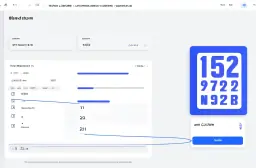
How to Use Custom Numbers with BARD AI
When integrating custom numbers with Bland AI, the goal is to ensure that the system meets specific needs and preferences. Customizing numerical data allows for a more tailored experience, enhancing accuracy and relevance. In this comprehensive guide, we will explore how to use custom numbers effectively with Bland AI, offering detailed steps and best practices for achieving optimal results.
Introduction

In today’s data-driven world, personalized numbers play a crucial role in optimizing artificial intelligence (AI) systems. Bland AI, known for its flexibility and adaptability, provides users with the ability to utilize bespoke numeric data to fit various scenarios. This guide will walk you through the process of implementing custom digits within Bland AI, highlighting the importance of tailored numerical values and offering practical tips for effective use.
Understanding how to integrate custom numbers with Bland AI can transform the way data is processed and analyzed. By leveraging unique numerical inputs, users can achieve a higher level of precision and efficiency. Whether you’re dealing with individual number settings or customized number formats, this guide will equip you with the knowledge needed to make the most of Bland AI’s capabilities.
Getting Started with Custom Numbers
Why Use Custom Numbers?
Custom numbers offer a range of benefits that can significantly enhance the performance of Bland AI. Here are some reasons why you might consider using personalized numerical options:
- Enhanced Accuracy: Tailoring numerical values ensures that the AI system processes data with greater precision.
- Increased Relevance: Custom figures align the AI’s output with specific requirements and use cases.
- Improved Efficiency: Optimized individualized number schemes can lead to faster and more reliable results.
Setting Up Custom Numbers in Bland AI
To begin using custom digits in Bland AI, follow these essential steps:
- Access the Configuration Settings: Navigate to the settings panel of Bland AI where you can adjust numerical inputs.
- Define Your Custom Values: Input the adapted numeric figures you wish to use, ensuring they align with your data needs.
- Save and Test: Once the specific number configurations are set, save the changes and test the system to verify that the custom numbers are functioning as expected.
Best Practices for Using Custom Numbers
Implementing unique digit preferences effectively requires attention to detail. Here are some best practices to consider:
- Ensure Consistency: Use custom numbers consistently across all relevant data sets to maintain uniformity.
- Regular Updates: Periodically review and update your tailored numeric entries to keep them aligned with evolving needs.
- Monitor Performance: Track the performance of Bland AI with personalized numerical options to identify any areas for improvement.
Advanced Customization Techniques
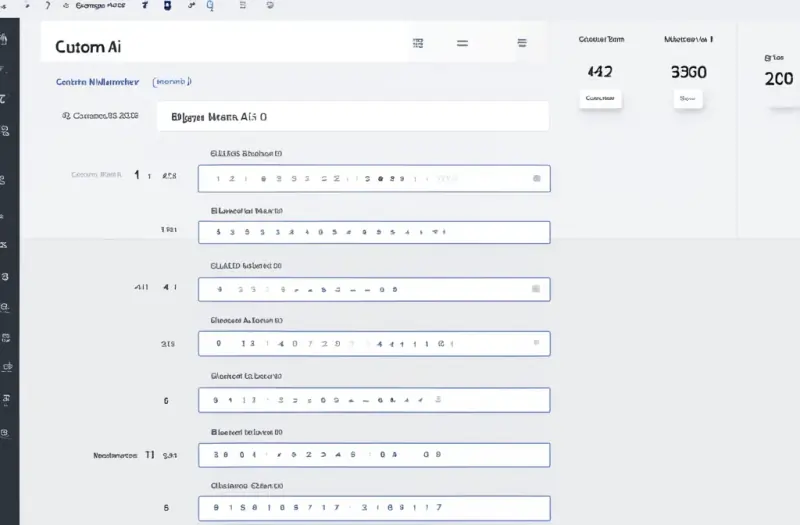
Custom Numeric Formats
For users seeking advanced customization, customized number formats can offer additional flexibility. This section will cover various ways to adapt numerical data to fit specific formats and requirements.
Using Regular Expressions for Custom Formats
Regular expressions (regex) are a powerful tool for defining complex custom numeric formats. By employing regex patterns, you can create highly specialized personalized numbers that meet unique needs.
Dynamic Numeric Adjustments
Incorporating dynamic adjustments allows for real-time modifications to bespoke numeric data. This technique is particularly useful for applications requiring frequent updates or changes in numerical values.
Integration with External Data Sources
Integrating Bland AI with external data sources can further enhance the utility of custom figures. By pulling in data from various sources, you can ensure that your unique numerical inputs remain relevant and accurate.
Common Challenges and Solutions
Data Consistency Issues
One common challenge when using custom digits is maintaining data consistency. To address this, ensure that all systems and processes are synchronized with your adapted numeric figures.
System Compatibility
Ensure that Bland AI is compatible with the individual number settings you implement. This may involve testing and verifying that the system can handle your customized number formats without issues.
FAQs
What are custom numbers in Bland AI?
Custom numbers refer to tailored numerical values that you can configure to fit specific data needs within Bland AI.
How do I set up custom numbers?
Access the configuration settings in Bland AI, define your custom digits, and save the changes. Test the setup to ensure accuracy.
Can I use regular expressions for numeric formats?
Yes, regular expressions can be used to define complex custom numeric formats, allowing for more precise control over numerical data.
How do I handle data consistency with custom numbers?
Ensure all relevant systems are synchronized with your bespoke numeric data and regularly review data consistency.
What should I do if Bland AI has compatibility issues?
Verify that your custom numbers and personalized numerical options are supported by Bland AI, and perform testing to resolve any compatibility issues.
Conclusion
Incorporating custom numbers into Bland AI can significantly enhance the system’s functionality and accuracy. By following the steps and best practices outlined in this guide, you can effectively use personalized numerical options to meet your specific needs. Remember to regularly review and update your custom digits to ensure continued relevance and performance.
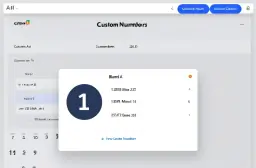
How to Use Custom Numbers with Bland AI: A Simple Guide
Artificial Intelligence (AI) is rapidly becoming an essential tool across various industries, and Bland AI is no exception. Among its numerous features, one particularly powerful capability is the use of custom numbers. In this guide, we will walk you through how to use custom numbers with Bland AI, breaking down the process into simple, actionable steps. Whether you’re new to AI or a seasoned professional, this guide will help you maximize the potential of Bland AI’s custom number feature.
Introduction to Bland AI and Custom Numbers
Bland AI has quickly risen to prominence due to its ability to handle complex data tasks with relative ease. One of its standout features is the capacity to work with custom numbers, allowing users to tailor algorithms to specific needs. But what exactly are custom numbers? In essence, custom numbers are user-defined values that can be integrated into Bland AI’s processing systems to enhance precision and relevance in the output.
Why Custom Numbers Matter
Custom numbers are not just arbitrary values. They represent specific data points that can significantly impact the outcome of an AI process. By using custom numbers, we can fine-tune the algorithms to better align with our unique business requirements. This not only improves accuracy but also ensures that the AI output is more relevant and actionable.
How Custom Numbers Enhance Bland AI
When working with Bland AI, custom numbers can be used to adjust parameters within various models, making the AI more adaptable to particular scenarios. This flexibility is crucial for organizations that deal with specialized data sets or require tailored AI outputs. By leveraging custom numbers, Bland AI users can ensure that the AI’s predictions and analyses are more aligned with their specific goals.
Setting Up Bland AI for Custom Number Integration

Before we dive into the steps for using custom numbers with Bland AI, it’s essential to ensure that the AI is set up correctly. This setup process is crucial because it lays the foundation for accurate and efficient use of custom numbers.
Installing and Configuring Bland AI
The first step is to ensure that Bland AI is properly installed and configured on your system. Depending on your operating system, installation might differ, but the general steps are as follows:
- Download the Bland AI installer from the official website.
- Follow the installation wizard, ensuring all dependencies are correctly installed.
- Configure the AI settings to allow for custom number integration. This typically involves adjusting the settings within the software to enable custom inputs.
Preparing Your Data
Before integrating custom numbers, you need to prepare your data. Data preparation is a critical step that involves cleaning, organizing, and formatting your data to ensure it’s compatible with Bland AI. Here’s how you can prepare your data:
- Clean the data to remove any inconsistencies or errors.
- Organize the data into structured formats like CSV or Excel files.
- Format the data so that it aligns with the parameters required by Bland AI.
Connecting Bland AI to Your Data Source
Once your data is prepared, the next step is to connect Bland AI to your data source. This connection allows the AI to access and process the data using the custom numbers you will define. Typically, you will:
- Choose the data source (e.g., database, spreadsheet).
- Establish a connection within Bland AI using its data connection wizard.
- Test the connection to ensure that Bland AI can access the data without any issues.
Defining and Implementing Custom Numbers
Now that your Bland AI is set up and connected to your data source, it’s time to define and implement your custom numbers. This step involves determining the specific values that will be used within Bland AI’s processes.
Identifying Key Data Points
The first task is to identify the key data points where custom numbers will be most effective. These data points are crucial because they represent the areas where custom inputs will have the most significant impact. Consider the following:
- What are the critical metrics in your dataset?
- Where do you see the most variability that could benefit from custom number adjustments?
- How do these numbers correlate with the outcomes you’re trying to achieve?
Inputting Custom Numbers into Bland AI
Once the key data points are identified, you can begin inputting your custom numbers into Bland AI. This process typically involves the following steps:
- Access the custom number input section within Bland AI’s interface.
- Input your predefined numbers into the relevant fields.
- Save and apply the settings to ensure that Bland AI uses these custom numbers in its processing.
Testing and Validating Custom Numbers
After inputting your custom numbers, it’s essential to test and validate them. Testing ensures that the numbers produce the desired outcome and that Bland AI is processing the data correctly. Here’s how to test and validate:
- Run a series of test scenarios using different data sets.
- Compare the results against your expected outcomes to see if the custom numbers are working as intended.
- Adjust the numbers as needed based on the test results.
Advanced Custom Number Features in Bland AI
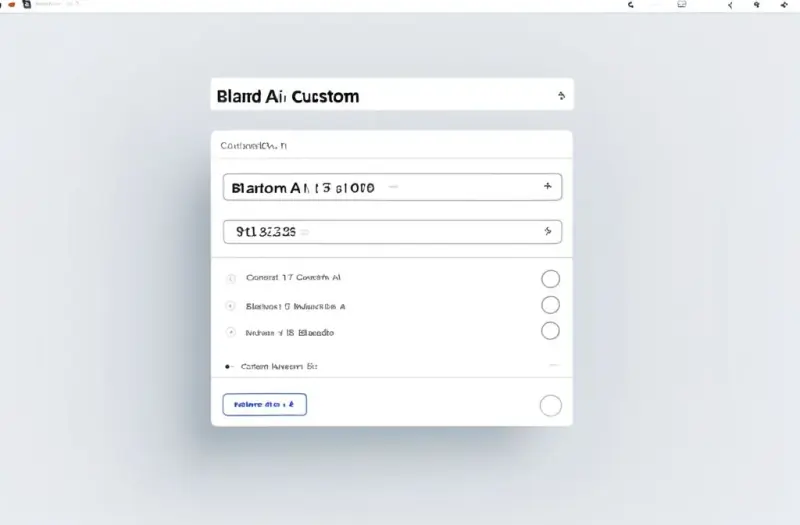
Bland AI offers several advanced features for users who want to get more out of custom numbers. These features are designed to provide deeper insights and more control over the AI’s outputs.
Dynamic Custom Numbers
Dynamic custom numbers allow you to set ranges or conditions under which the numbers change automatically. This is particularly useful for scenarios where data trends fluctuate frequently. To use dynamic numbers:
- Set conditions for when the numbers should change (e.g., based on time of day, data trends).
- Define the range or scope of the numbers.
- Implement the dynamic feature within Bland AI to automate these changes.
Custom Number Analytics
Bland AI also provides tools to analyze the impact of custom numbers on its outputs. This analytics feature is invaluable for understanding how different numbers affect results. You can use it to:
- Track the performance of your custom numbers over time.
- Identify trends or patterns that emerge from different number sets.
- Make data-driven decisions on whether to keep or adjust your custom numbers.
Common Challenges and Troubleshooting
Working with custom numbers in Bland AI, while powerful, can sometimes present challenges. Here are some common issues users face and how to troubleshoot them.
Issue: Inconsistent Outputs
One common issue is inconsistent outputs, where the AI’s predictions or analyses don’t align with expectations. This can happen if custom numbers are improperly defined or if there’s an issue with the data itself. To troubleshoot:
- Re-check the custom numbers to ensure they are accurate.
- Verify the data integrity to ensure there are no errors or inconsistencies.
- Adjust the AI’s settings to better accommodate the custom numbers.
Issue: Difficulty in Data Integration
Another challenge might be difficulty integrating data into Bland AI. This can occur if the data format is incompatible or if there’s an issue with the connection. Here’s how to resolve it:
- Convert the data into a compatible format (e.g., CSV, JSON).
- Re-establish the connection between Bland AI and the data source.
- Check for any software updates or patches that might resolve compatibility issues.
Issue: Overfitting or Underfitting
Overfitting or underfitting occurs when the AI model is too closely aligned with specific data sets or too general to be effective. Custom numbers can sometimes contribute to this if they’re not set correctly. To address this:
- Balance the custom numbers to avoid extremes.
- Use Bland AI’s validation tools to test for overfitting or underfitting.
- Adjust the model’s complexity by refining the custom numbers.
FAQs
What are custom numbers in Bland AI?
Custom numbers in Bland AI are user-defined values that influence the AI’s processing, allowing for more tailored and accurate outputs.
How do I input custom numbers in Bland AI?
You can input custom numbers through Bland AI’s custom number input section. Access this through the main interface, input your values, and save the settings.
Can custom numbers be dynamic in Bland AI?
Yes, Bland AI allows for dynamic custom numbers, which can change automatically based on predefined conditions or ranges.
What should I do if my custom numbers aren’t producing the expected results?
If your custom numbers aren’t yielding the expected results, re-check the values, verify data integrity, and adjust Bland AI’s settings accordingly.
Is there a way to analyze the impact of custom numbers on AI outputs?
Bland AI offers analytics tools that track and analyze how custom numbers affect outputs, helping you make data-driven adjustments.
Conclusion
Using custom numbers with Bland AI is a powerful way to fine-tune your AI processes, making them more relevant and accurate for your specific needs. By carefully defining, implementing, and testing your custom numbers, you can significantly enhance the output and effectiveness of Bland AI. Whether you’re using simple or dynamic custom numbers, the key is to continually validate and adjust them to ensure optimal performance.
Key Takeaways
- Custom numbers in Bland AI allow for tailored and precise AI outputs.
- Proper setup and data preparation are crucial for effective use of custom numbers.
- Advanced features like dynamic numbers and analytics can enhance the utility of custom numbers.
- Troubleshooting common issues ensures that custom numbers work as intended.
By following this guide, you’ll be well-equipped to harness the full potential of custom numbers in Bland AI, making your AI projects more efficient and impactful.

Image Generation Trend with ChatGPT: A Complete Guide
Imagine being able to create product illustrations, digital art, and even visual content for marketing campaigns with just a text instruction. No advanced design skills needed—just a basic understanding and creativity. This not only simplifies our work as content creators, marketers, and entrepreneurs, but also opens up new opportunities in SEO strategy and visual marketing.
But how exactly does the image generation process work? Are the results on par with professional designs? In this article, we’ll break down how to create images with ChatGPT, the best tips, innovative strategies, and the challenges you might face. Follow this complete guide to understand why the image generation trend with ChatGPT is unmissable this year!
Why is Image Generation Using ChatGPT Trending?
One of the main reasons the method of generating images via ChatGPT is booming is its efficiency. No more relying on complex software like Photoshop or spending hours to create a single illustration.
Combining text-to-image technology with ChatGPT’s interface offers an instant, user-friendly solution. By simply typing a detailed image description, we can produce visuals that closely match our expectations—or even exceed them!
Another driving factor is the integration of APIs and third-party tools like DALL·E and Midjourney, enabling direct collaboration with ChatGPT. This speeds up visual production while maintaining high quality.
How to Create Images with ChatGPT: The Basics
To get started with generating images using ChatGPT, you need to understand that this feature relies on AI model integration such as DALL·E 3, which can convert text into visuals.
Basic steps include:
- Opening the ChatGPT (Plus) platform connected to DALL·E.
- Typing a detailed image description, for example: “An illustration of a child flying a kite at sunset with an orange sky background.”
- The system will generate several visual options to choose from.
The image quality depends heavily on how detailed your prompt is. Hence, understanding prompt structure is key in the guide to creating images with ChatGPT AI.
Effective Prompt Structure: Techniques for Image Creation with ChatGPT
In a ChatGPT AI image generation tutorial, the prompt’s quality greatly impacts the final output. Here’s an ideal prompt structure:
- Main subject: What do you want illustrated?
- Additional details: Colours, visual style, atmosphere, background.
- Artistic style: Realistic, cartoon, minimalist, surreal, etc.
- Resolution: Specify size or aspect ratio if needed.
Example of a strong prompt:
“A portrait of an Indonesian farmer wearing a traditional hat in a green rice field during morning light, in realistic style with natural lighting.”
With techniques like these, AI image creation with ChatGPT becomes more precise and visually appealing.
Tool Comparison: ChatGPT vs Midjourney vs DALL·E

| Feature | ChatGPT + DALL·E | Midjourney | Canva AI Image Tool |
|---|---|---|---|
| Accessibility | High (direct in ChatGPT) | Medium (via Discord) | High |
| Image Quality | High | Very High | Medium |
| Prompt Personalisation | High | High | Low |
| Rendering Speed | Fast | Fast-Medium | Fast |
| Technical Requirements | Low | Medium | Very Low |
In conclusion, image creation via ChatGPT is ideal for beginners and professionals needing quick, hassle-free visuals.
Tips for Generating Images with ChatGPT Effectively
To achieve optimal results, follow these strategies for generating images with ChatGPT:
- Use visual adjectives: bright, blurry, symmetrical, etc.
- Add cultural context if needed (e.g., batik, wayang, local cuisine).
- Try multiple prompt variations to explore styles.
Consistency and experimentation are key. The more we use it, the more accurate and stunning the results.
Case Study: Local Business Using ChatGPT for Product Visuals
A local brand called Rasa Nusantara used ChatGPT to create aesthetic food menu illustrations for their social media.
In one week:
- Engagement increased by 34%.
- Design process time reduced by 70%.
- Visual content production costs dropped by 60%.
This shows how image generation strategies with ChatGPT can impact small businesses positively.
Challenges in Using ChatGPT for Image Generation
Despite advanced technology, there are still challenges such as:
- Imperfect facial details.
- Occasionally unrealistic body proportions.
- Images not eligible for commercial use without explicit licensing.
To overcome them:
- Always review images before publishing.
- Use additional editing tools if needed.
- Verify usage rights via the platform’s official documentation.
Practical Guide to Creating Images Using ChatGPT
The following simple steps serve as your daily guide:
- Define the image objective.
- Build a prompt using the effective structure.
- Use ChatGPT (Plus) with DALL·E access.
- Review and select the best result.
- Adjust colours, saturation, or composition if needed.
With this guide, practical image creation using ChatGPT becomes accessible to anyone.
Innovation in Image Generation with ChatGPT in Education

In education, teachers are using AI-generated images for:
- Illustrating science or history lessons.
- Interactive storybooks.
- Enriching digital learning materials.
This not only enhances the visual appeal of resources but also improves retention and student engagement.
Recommended AI Image Tools to Support ChatGPT
Besides ChatGPT, consider these complementary tools:
- Canva (AI Image Generator)
- Fotor AI
- NightCafe Creator
- Craiyon (formerly DALL·E mini)
Combining multiple tools can result in more diverse and unique AI image creations with ChatGPT.
Visual SEO Trends: Why AI Images Matter to Google
In SEO, images are more than decorative.
- Google evaluates visual-content relevance.
- Alt-text of AI images can be keyword-optimised.
- Bounce rate decreases with engaging visuals.
Thus, innovation in AI image generation with ChatGPT is not just aesthetic—it’s a long-term SEO strategy.
Prompt Composition Techniques Based on Target Audience
If targeting a younger audience:
- Use cartoon or pop art styles.
- Include bright colours and emotional expressions.
If targeting professionals:
- Use realistic, minimalist styles and elegant descriptions.
These techniques make image creation with ChatGPT more audience-specific and effective.
Strategy to Integrate AI Images into Website Content
Strategic steps to boost engagement and ranking:
- Add an image every 300 words.
- Optimise file size for faster loading.
- Use keywords in file names and alt-text.
This strategy brings content to life and boosts SEO competitiveness.
Ethical and Legal Guidelines in Using AI-Generated Images
Don’t ignore legal aspects:
- Ensure copyright or usage rights are clearly defined on the platform.
- Avoid using public figures’ likenesses without consent.
- Add disclaimers like “image generated by AI” when needed.
Following these keeps your digital reputation intact and prevents future legal issues.
The Future of ChatGPT as an AI Image Generator
This technology is evolving towards:
- Interactive, clickable visuals.
- Short video generation from text prompts.
- AI collaboration for visual and narrative composition.
We are witnessing the beginning of a deep, automated visual content revolution.
FAQs
Can I generate images in the free version of ChatGPT?
Not yet. This feature is available for ChatGPT Plus users with DALL·E 3 access.
How do I create realistic human faces?
Use detailed descriptions of expressions, lighting, and facial proportions. Apply the realistic style in your prompt.
Can ChatGPT images be used commercially?
Yes, but confirm usage rights from each platform. Some images are for personal use only.
Can ChatGPT generate product images?
Absolutely! It’s perfect for product mockups, catalogue visuals, and social media posts.
How to fix inaccurate AI images?
Refine your prompt, use additional editors, or combine with other AI tools.
Conclusion
Creating images with ChatGPT is no longer a trend—it’s a necessity in the fast-paced digital world. With the right approach—from crafting effective prompts to integrating visuals into content—we can harness this technology for both personal and professional use.
Text-based visualisation opens doors to creative efficiency, visual marketing, and limitless idea exploration. Let’s embrace this innovation to produce visuals that not only impress but also enhance our overall digital performance.
Key Takeaways
- The image generation trend with ChatGPT simplifies high-quality visual creation.
- Detailed prompts lead to more accurate and relevant images.
- Tools like DALL·E, Midjourney, and Canva can be combined for optimal results.
- AI images boost SEO performance and content engagement.
- Ethical and legal considerations are crucial for long-term usage.

Industry Innovations: Latest Trends & Breakthroughs
In today’s rapidly evolving world, industry innovations are at the forefront of shaping how businesses operate and thrive. From technological advancements to transformative market developments, staying abreast of these changes is crucial for anyone involved in the commercial sphere. We, as industry enthusiasts and professionals, are continually amazed by the strides being made across various sectors. This article will delve into some of the most exciting breakthroughs and trends driving industry progress and business innovation.
Embracing Technological Progress

Technology has always been a significant driver of industry advancements, and recent developments are no exception. The advent of new technologies is revolutionizing how businesses operate and interact with their customers.
Artificial Intelligence and Machine Learning
Artificial intelligence (AI) and machine learning (ML) are at the pinnacle of sector breakthroughs. These technologies are enhancing automation, improving decision-making processes, and creating more personalized customer experiences. For instance:
- Predictive Analytics: AI algorithms can analyze historical data to predict future trends, enabling businesses to make data-driven decisions.
- Natural Language Processing (NLP): NLP technologies are improving customer service through chatbots and virtual assistants.
- Image Recognition: AI systems can now identify objects and patterns within images, which is transforming sectors like retail and healthcare.
Blockchain Technology
Blockchain, initially known for its role in cryptocurrency, is now making waves across various industries. Its ability to offer secure, transparent, and tamper-proof transactions is revolutionizing sectors such as:
- Supply Chain Management: Blockchain enhances traceability and accountability in supply chains.
- Financial Services: It simplifies and secures financial transactions, reducing fraud and increasing efficiency.
- Healthcare: Blockchain helps manage patient records securely and ensures the integrity of medical data.
Sector Improvements in Sustainable Practices
As environmental concerns continue to rise, industries are increasingly focusing on sustainability. Business innovations in this area are not only crucial for environmental protection but also for improving efficiency and reducing costs.
Green Technologies
Green technologies are leading the charge in commercial evolution. These innovations aim to reduce environmental impact while promoting sustainable growth. Key developments include:
- Renewable Energy: Solar, wind, and hydro energy solutions are becoming more cost-effective and widely adopted.
- Energy-Efficient Buildings: Smart building technologies help in reducing energy consumption through intelligent lighting, heating, and cooling systems.
- Waste Management: Advanced recycling technologies and waste-to-energy systems are improving how we handle waste and reduce our carbon footprint.
Circular Economy
The concept of a circular economy is gaining traction as a model for sustainable business practices. Unlike the traditional linear model of production and consumption, a circular economy focuses on:
- Product Lifecycle Management: Extending the life of products through repair, refurbishment, and recycling.
- Resource Efficiency: Minimizing waste by reusing materials and products.
- Sustainable Design: Creating products that are easier to recycle and less harmful to the environment.
Market Innovations Shaping the Future

The market innovations we see today are setting the stage for future developments and competitive advantages. Companies are leveraging these innovations to stay ahead in their respective industries.
Smart Manufacturing
The integration of smart technologies in manufacturing processes is enhancing productivity and quality. Key trends include:
- Industry 4.0: The use of IoT (Internet of Things) and cyber-physical systems to create more intelligent and interconnected manufacturing environments.
- Robotics: Advanced robotics are improving precision, speed, and safety in manufacturing processes.
- Additive Manufacturing: 3D printing technology is revolutionizing production by allowing for rapid prototyping and customized production.
Digital Transformation
Digital transformation is a broad trend affecting all industries. It involves adopting digital technologies to improve operations and customer interactions. Key areas of focus include:
- Cloud Computing: Facilitating remote work and data management through scalable and flexible cloud solutions.
- Big Data Analytics: Leveraging large datasets to gain insights and drive strategic decision-making.
- Customer Experience Management: Using digital tools to enhance customer engagement and satisfaction.
Key Takeaways
- Technological Progress: AI, machine learning, and blockchain are leading the charge in transforming industries.
- Sustainability: Green technologies and the circular economy are essential for a sustainable future.
- Market Innovations: Smart manufacturing and digital transformation are reshaping the business landscape.
FAQs
What are the latest technological advancements in industry innovations?
Recent advancements include AI and machine learning, blockchain technology, and green technologies. These innovations are enhancing automation, security, and sustainability across various sectors.
How are businesses benefiting from sustainable practices?
Businesses are benefiting from sustainable practices through cost savings, improved efficiency, and a positive environmental impact. Sustainable practices also help companies meet regulatory requirements and enhance their brand reputation.
What is the impact of digital transformation on businesses?
Digital transformation impacts businesses by improving operational efficiency, enabling better data management, and enhancing customer experiences. It helps companies stay competitive in a rapidly changing market.
What role does AI play in industry innovations?
AI plays a crucial role by automating processes, improving decision-making, and creating more personalized experiences. It is a key driver of technological progress and market innovations.
How is blockchain technology used beyond cryptocurrency?
Blockchain technology is used in supply chain management, financial services, and healthcare to provide secure, transparent, and tamper-proof transactions.
In conclusion, industry innovations are continuously shaping the business landscape, driven by technological progress, sustainable practices, and market developments. As we move forward, staying informed and adaptable will be key to leveraging these breakthroughs effectively.

Is JavaScript Still Relevant in 2024 for Web Development?
JavaScript has long been a cornerstone of web development. From humble beginnings as a browser scripting language, it has grown into a powerhouse for building dynamic and interactive websites, full-stack applications, mobile apps, and even desktop software. But in 2024, with rapid shifts in technology and the rise of powerful alternatives, many are beginning to ask an important question.
In a world driven by innovation, developers are constantly chasing what’s next—faster frameworks, simpler syntax, AI-assisted coding. We’re seeing new languages gain traction and more tools emerge that promise to “replace JavaScript.” But even with this surge of innovation, JavaScript continues to dominate tech job boards and developer communities alike.
So here’s the question: Is JavaScript still relevant in 2024, or is it time for web developers to move on to something new? Let’s explore what’s really happening in the industry and whether JavaScript still holds the crown for modern web development.
A Look at JavaScript’s Longstanding Dominance
JavaScript has been the backbone of the internet for decades. It’s the only language that runs natively in the browser, making it essential for frontend development. From handling user interactions to powering animations and dynamic content, JavaScript has played an irreplaceable role.
In 2023, JavaScript remained the most-used language according to Stack Overflow’s Developer Survey. This continued popularity isn’t just due to inertia—it’s because of the language’s versatility, ecosystem, and strong community support.
Even today, JavaScript relevance is unquestionable when it comes to building responsive, real-time, and interactive experiences online. Whether we’re creating a lightweight landing page or a complex single-page application, JavaScript still delivers.
JavaScript Ecosystem: Still Evolving, Still Powerful
One reason why JavaScript hasn’t lost steam is its ever-expanding ecosystem. Frameworks like React, Vue, and Angular have transformed how we build web interfaces. On the server side, Node.js allows developers to use JavaScript for backend development as well, contributing to its popularity.
Beyond frameworks, the rise of tools like Next.js, Astro, Remix, and Vite is pushing JavaScript into new territories of performance and scalability. These tools prioritize developer experience while embracing modern web standards.
The evolution of JavaScript is far from stagnant. With each update to ECMAScript, we see more syntactic improvements and enhanced performance, keeping the language modern and adaptable to today’s web development needs.
Demand in the JavaScript Job Market

If you’ve browsed tech job boards recently, you’ve likely noticed a recurring trend—JavaScript continues to dominate job listings. From small startups to tech giants like Google and Meta, JavaScript developers are still in high demand.
The JavaScript job market is strong because the language is so widely used. Whether it’s full-stack development using the MERN stack (MongoDB, Express, React, Node.js) or frontend roles focused on user experience, JavaScript remains a go-to skill.
This demand isn’t likely to drop anytime soon. Employers know the power of the JavaScript ecosystem, and developers who master it can command high salaries and work on exciting projects across industries.
Addressing the Rumors: Is JavaScript Outdated?
Some developers argue that JavaScript is becoming bloated or that it’s being replaced by cleaner, more modern languages like TypeScript or even Rust for WebAssembly. But here’s the thing—JavaScript is not outdated. Instead, it’s adapting and expanding.
TypeScript, for example, is a superset of JavaScript, not a replacement. Its growing adoption shows that developers still rely on JavaScript’s foundation while seeking additional safety through static typing. Similarly, WebAssembly is designed to work with JavaScript, not against it.
So is JavaScript outdated? Far from it. It’s not being pushed aside—it’s evolving alongside newer technologies, reinforcing its place in the modern developer’s toolkit.
JavaScript vs Other Languages: Where It Still Shines
Let’s compare JavaScript with some of its commonly cited alternatives:
| Language | Strengths | JavaScript Comparison |
|---|---|---|
| Python | Great for data science and AI | Lacks native browser support |
| Rust | High performance, memory safety | Complex syntax for web dev |
| TypeScript | Type safety | Built on JavaScript |
| Dart | Optimized for Flutter | Less popular in web dev |
| Go | Fast and scalable backend | Not ideal for frontend |
JavaScript remains the most balanced choice for frontend and full-stack web development. It has unparalleled browser support, a massive community, and continuous updates. While other languages offer niche advantages, JavaScript’s flexibility and ubiquity still make it the best default option.
JavaScript Trends and Innovations in 2024
In 2024, JavaScript trends are leaning toward better developer experience and improved performance. We’re seeing a push toward islands architecture in frameworks like Astro, better TypeScript integration, and tighter serverless integrations.
Other emerging trends include:
- AI-assisted coding with JavaScript using tools like GitHub Copilot and ChatGPT.
- Component-driven development with tools like Storybook and design systems.
- Enhanced bundling and deployment through platforms like Vercel and Netlify.
These innovations ensure that JavaScript stays aligned with the future of web development, offering developers the tools they need to build fast, secure, and scalable apps with ease.
The Importance of JavaScript Developer Skills in 2024
To stay competitive, it’s no longer enough to just “know JavaScript.” In 2024, developers should focus on refining their skills across the full JavaScript ecosystem.
Essential skills include:
- Mastering frameworks like React, Vue, or Svelte
- Understanding the build process (Webpack, Vite, Turbopack)
- Writing clean, maintainable code with modern syntax
- Deploying apps using Jamstack principles or serverless platforms
JavaScript developer skills are evolving, and the more we embrace the tools and practices of modern development, the more relevant we remain in this ever-changing landscape.
FAQs About JavaScript in 2024
Is JavaScript still used in 2024?
Yes. JavaScript continues to be one of the most widely used programming languages, especially for web development.
What makes JavaScript important in web development?
JavaScript is the only language that runs natively in browsers, making it crucial for creating interactive web experiences.
Are there better alternatives to JavaScript now?
While languages like TypeScript, Rust, and Dart offer different advantages, JavaScript remains the most flexible and supported for web development.
Is JavaScript hard to learn in 2024?
Not at all. With modern learning platforms and tools, JavaScript is still a beginner-friendly language, especially for aspiring web developers.
Will JavaScript be replaced soon?
Unlikely. It continues to evolve, and its ecosystem is deeply embedded in how the web works today.
Conclusion: JavaScript Is Far from Done
JavaScript is not only still relevant in 2024—it’s thriving. Despite new technologies and emerging trends, JavaScript remains the beating heart of web development. Its adaptability, massive ecosystem, and job market demand make it a must-have skill for developers today and tomorrow.
We may adopt new tools, frameworks, and even programming paradigms—but JavaScript will likely be part of the journey no matter what direction web development takes next.
Key Takeaways
- JavaScript remains essential for modern web development in 2024.
- The language continues to evolve through frameworks, tools, and updates.
- JavaScript job market demand remains high across the U.S. tech sector.
- Alternatives exist, but none fully replace JavaScript’s flexibility and ubiquity.
- Developers should continue building JavaScript-related skills to stay competitive.

Machine Learning in Sports Revolution Performance & Strategy
Today, the lines between traditional athleticism and technological intelligence are blurring fast. Machine learning in sports isn’t just a futuristic concept—it’s already transforming how teams train, strategize, and win. From real-time sports analytics to automated coaching, AI is rewriting the playbook of competitive sports.
As we step into this fascinating intersection of sports and data science, we can’t help but wonder: Are we witnessing the end of gut-driven decisions in athletics—and the rise of data-dominated victory? Let’s explore how machine learning is redefining every aspect of sports, from athlete performance prediction to intelligent coaching systems.
Understanding Machine Learning in Sports
Machine learning (ML) is a subset of artificial intelligence (AI) that enables systems to learn and improve from data without being explicitly programmed. In sports, this translates to the ability to analyze vast amounts of information—from player stats to motion data—and draw meaningful, predictive insights.
Machine learning in sports enables more precise decisions, better game outcomes, and long-term performance optimization. Coaches, analysts, and athletes are embracing sports data science to gain competitive advantages that were previously unimaginable.
Take, for instance, the use of computer vision for sports. Cameras and sensors capture players’ movements, feeding neural networks that detect patterns and flag risks—such as fatigue or inefficient biomechanics. These AI-powered insights not only help in injury prevention but also drive performance improvements.
Enhancing Athlete Performance Through Deep Learning

Athlete performance isn’t just about talent anymore—it’s about data. Deep learning in sports performance delves deeper into muscle activity, hydration levels, and sleep patterns, all measured through wearable tech and processed through sophisticated algorithms.
With this data, we can:
- Personalize training programs to match an athlete’s specific physiology
- Predict injuries before they happen using anomaly detection in data streams
- Optimize recovery by identifying peak rest periods and adjusting schedules accordingly
A notable case is the NBA’s use of AI-powered sports technology to monitor players’ load and avoid overtraining. “Data doesn’t just describe performance; it predicts it,” said a sports scientist at a leading NBA franchise.
Statistical sports analysis through ML also allows coaches to test various scenarios before the game. For example, should a player take a three-pointer from the left wing under pressure? ML models can simulate the likelihood of success using historical performance and real-time factors.
Strategic Decision-Making with Predictive Modeling
Coaches once relied on instinct and experience; now, they’re aided by predictive modeling in sports. ML algorithms ingest historical data, game conditions, and opponent behaviors to suggest the most statistically favorable plays.
This is particularly evident in:
- American football, where teams use ML to decide whether to punt or go for it on 4th down
- Baseball, where pitch sequences are determined by batter tendencies modeled through ML
- Soccer, where formations shift based on opponent weaknesses spotted by data
One example is the English Premier League’s use of AI in athletics for match simulations. Teams analyze thousands of play combinations, identify vulnerabilities in opposing lineups, and adapt strategy in real-time.
Here’s a simplified comparison table of traditional vs. ML-enhanced strategies:
| Strategy Type | Traditional Approach | ML-Enhanced Approach |
|---|---|---|
| Play Selection | Coach intuition | Data-driven play predictions |
| Injury Risk Management | Based on physical exams | Predictive modeling from sensor data |
| Opponent Analysis | Manual video analysis | Automated pattern recognition |
| Training Plans | Generic workout routines | Personalized programs via ML algorithms |
| Scouting Reports | Written reports, subjective rankings | Quantified data models and projections |
Real-Time Sports Analytics for Competitive Edge
Real-time feedback used to be limited to halftime chats. Now, with real-time sports analytics, we’re able to adapt strategy mid-game. AI-powered tools stream live data from wearables, cameras, and tracking systems to dashboards used by coaching staff.
Consider these scenarios:
- In tennis, serve velocity and opponent reactions help adjust serving angles.
- In basketball, defenders’ fatigue levels are tracked live to rotate players.
- In cycling, wind resistance and pacing data help modify positioning on the fly.
This AI-driven sports strategy adds a layer of adaptability that was once impossible. Teams no longer need to wait until post-game analysis to learn—they learn and act immediately.
Smart coaching systems are emerging that automatically recommend substitutions, tactic changes, or defensive shifts based on in-game stats. It’s like having a second coach that never sleeps.
The Rise of Automated Sports Coaching and Smart Training

Automated sports coaching is revolutionizing practice sessions. These AI systems observe, learn, and provide instant feedback during drills—without needing human intervention.
Some innovative applications include:
- AI shooting coaches in basketball that correct wrist angles and footwork.
- Smart batting cages in baseball that adapt pitch speed and location based on user performance.
- Neural networks in athletics that learn an individual’s motion style and suggest biomechanical enhancements.
Such systems create hyper-efficient training environments, with every movement captured and refined. And they scale easily—making elite-level feedback accessible even to amateur athletes.
Intelligent sports training doesn’t just save time—it ensures consistent quality, eliminates human error, and accelerates skill acquisition.
Overcoming Challenges and Ethical Considerations
With great data comes great responsibility. While sports analytics with ML opens doors to incredible possibilities, it also raises concerns:
- Data privacy: Who owns the athlete’s performance data?
- Bias in algorithms: Can ML models perpetuate existing stereotypes or overlook unique player traits?
- Human touch: Can too much reliance on data diminish creativity and spontaneity in sports?
To navigate these, we must:
- Ensure transparent data policies and athlete consent
- Diversify datasets to train more inclusive models
- Blend data with human intuition, keeping coaches and athletes in the loop
Machine learning for game strategy should complement, not replace, the human element that makes sports thrilling and unpredictable.
Future Trends in Sports AI Algorithms
As we look ahead, AI-powered sports technology is evolving rapidly. Here’s what the future may hold:
- Emotion recognition to track athlete morale and mental readiness
- Augmented reality (AR) coaching combining AI with immersive visuals
- Federated learning models allowing teams to train ML algorithms collaboratively without sharing sensitive data
Moreover, sports broadcasters are using sports data science to offer enhanced viewer experiences—custom replays, statistical overlays, and even AI-generated commentary.
The trajectory is clear: Machine learning in sports isn’t a novelty—it’s a necessity. Those who embrace it will not just play better—they’ll think better, train smarter, and win more often.
FAQs
How is machine learning used in sports training?
ML analyzes athlete performance data to personalize training routines, optimize recovery, and predict injury risk.
Can AI really replace sports coaches?
Not replace—but augment. Automated coaching systems assist human coaches by offering deeper insights and faster feedback.
Is sports data collected legally and ethically?
When done right, yes. Consent, transparency, and data security protocols must be followed to protect athletes’ rights.
What are examples of real-time sports analytics?
Wearables tracking heart rate, GPS sensors logging position, and live dashboards adjusting game strategy on the fly.
Which sports benefit most from machine learning?
All sports can benefit, but data-rich games like basketball, football, and baseball are early adopters.
Conclusion
Machine learning in sports is more than a trend—it’s the new backbone of performance optimization and strategic evolution. From enhancing athlete health to revolutionizing in-game decisions, AI is embedded in the very DNA of modern athletics.
While challenges remain, the fusion of technology and sports presents boundless opportunities. By embracing smart coaching systems, AI in athletics, and data-driven sports strategies, we’re not just building better teams—we’re pioneering a smarter future for the entire sporting world.
Key Takeaways
- Machine learning in sports is transforming both training and gameplay.
- Real-time analytics and predictive models offer competitive advantages.
- Automated coaching improves efficiency and accessibility across levels.
- Ethical data use and human-AI synergy are critical for sustainable integration.
- Future developments in sports AI promise even more personalized and immersive experiences.
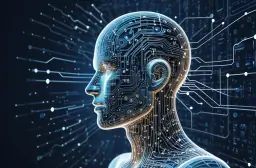
Machine Learning: Algorithms, Techniques, and Applications
Introduction
As we step further into the digital age, machine learning (ML) is becoming an essential component of our daily lives. From personalized recommendations on streaming services to advanced medical diagnostics, the impact of ML is undeniable. In this guide, we’ll delve into the core concepts, applications, and emerging trends that define this fascinating field.
At its essence, machine learning is a subset of artificial intelligence (AI) focused on developing algorithms that enable computers to learn from and make predictions based on data. By harnessing the power of data mining and predictive analytics, we can create intelligent systems that improve over time without explicit programming.
Understanding Machine Learning Concepts
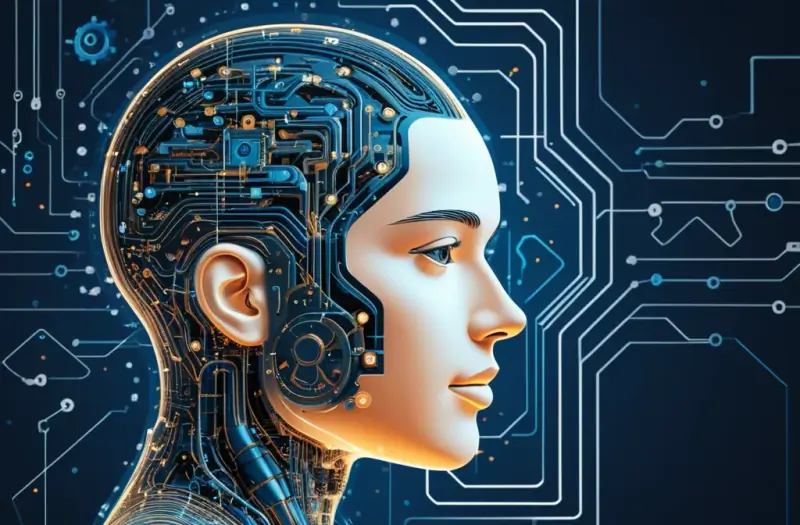
Machine learning encompasses various approaches and methodologies that can be categorized into three main types: supervised learning, unsupervised learning, and reinforcement learning.
Supervised Learning
In supervised learning, we train algorithms on labeled datasets, which consist of input-output pairs. For example, a dataset may contain images of cats and dogs labeled accordingly. The model learns to identify patterns and make predictions on new, unseen data.
- Common Algorithms:
- Linear Regression
- Decision Trees
- Support Vector Machines
By understanding these algorithms, we can tailor our approaches to specific problems, ensuring optimal results in applications like spam detection or credit scoring.
Unsupervised Learning
Unsupervised learning, on the other hand, deals with unlabeled data. Here, the model seeks to identify hidden patterns or intrinsic structures within the dataset. For instance, clustering algorithms can group customers based on purchasing behavior without prior knowledge of customer segments.
- Key Techniques:
- K-Means Clustering
- Hierarchical Clustering
- Principal Component Analysis (PCA)
This approach is instrumental in applications such as market segmentation and anomaly detection, where we uncover insights without predefined categories.
Reinforcement Learning
Reinforcement learning is a more dynamic approach, where an agent learns by interacting with its environment. Through trial and error, the agent receives feedback in the form of rewards or penalties, allowing it to refine its strategies over time.
- Applications:
- Game Playing (e.g., AlphaGo)
- Robotics
- Autonomous Vehicles
By understanding these foundational concepts, we can appreciate how diverse and impactful machine learning has become across various sectors.
Applications of Machine Learning
Machine learning is not just a theoretical concept; its applications are vast and growing. Let’s explore some key areas where ML is making a significant impact.
Healthcare
In healthcare, ML algorithms enhance diagnostic accuracy, optimize treatment plans, and predict patient outcomes. For instance, deep learning models analyze medical images, identifying tumors with remarkable precision.
- Benefits:
- Early Detection of Diseases
- Personalized Treatment Plans
- Efficient Resource Management
With the integration of AI algorithms in healthcare, we are witnessing a transformation in patient care and operational efficiency.
Finance
The finance sector utilizes machine learning for fraud detection, credit scoring, and algorithmic trading. By analyzing transaction patterns, banks can identify unusual activities that may indicate fraud.
- Applications:
- Credit Risk Assessment
- Stock Market Prediction
- Customer Behavior Analysis
Machine learning helps financial institutions make informed decisions while minimizing risks.
Marketing
In marketing, machine learning enhances customer engagement through targeted advertising and personalized content. By analyzing user behavior, businesses can tailor their offerings to individual preferences.
- Techniques:
- Predictive Analytics
- Sentiment Analysis
- Recommendation Systems
This leads to more effective marketing strategies and improved customer satisfaction.
Future Trends in Machine Learning

As we look ahead, several trends are shaping the future of machine learning. Understanding these can help us prepare for the evolving landscape of technology.
Increased Adoption of Deep Learning
Deep learning, a subset of machine learning, utilizes neural networks to model complex patterns in large datasets. Its ability to process unstructured data, such as images and text, is driving advancements in various fields.
- Example: Natural Language Processing (NLP) applications, like chatbots and virtual assistants, are becoming more sophisticated.
As deep learning continues to evolve, we expect even greater innovations in computational learning.
Explainable AI
With the rise of machine intelligence, there’s a growing need for transparency in ML models. Explainable AI focuses on making the decision-making process of algorithms more understandable to users.
- Importance:
- Building Trust
- Ensuring Ethical Use
- Complying with Regulations
As organizations adopt machine learning, understanding how models arrive at conclusions will be crucial.
Automation and Smart Algorithms
The future will see an increase in automation, driven by smart algorithms that optimize workflows and decision-making processes. From supply chain management to customer service, these algorithms will improve efficiency and reduce costs.
- Benefits:
- Enhanced Productivity
- Reduced Human Error
- Increased Scalability
The potential for automated decision-making is vast, paving the way for innovations across industries.
FAQs
What is machine learning?
Machine learning is a branch of artificial intelligence that focuses on developing algorithms that enable computers to learn from data and make predictions.
How is machine learning applied in everyday life?
Machine learning is used in various applications, including recommendation systems, fraud detection, and personalized marketing.
What are the differences between supervised and unsupervised learning?
Supervised learning involves training models on labeled datasets, while unsupervised learning seeks to identify patterns in unlabeled data.
What role does deep learning play in machine learning?
Deep learning is a subset of machine learning that uses neural networks to process large amounts of data, particularly unstructured data.
Why is explainable AI important?
Explainable AI is crucial for building trust in machine learning models, ensuring ethical use, and complying with regulatory requirements.
Conclusion
In conclusion, machine learning is reshaping our world through its diverse applications and innovative technologies. By understanding the core concepts, applications, and future trends, we can harness its potential to drive advancements in various sectors.
Key Takeaways
- Machine learning includes supervised, unsupervised, and reinforcement learning methods.
- Applications span healthcare, finance, and marketing, enhancing efficiency and decision-making.
- Future trends include increased adoption of deep learning, explainable AI, and automation through smart algorithms.
As we continue to explore and expand upon these topics, we invite you to stay informed and engaged in the dynamic field of machine learning.

Maryland vs Florida: Key Differences and Comparisons
Have you ever wondered how life would differ if you moved from the coastal charm of Maryland to the sunny shores of Florida—or vice versa? At first glance, both states offer an appealing mix of oceanfront living, historic roots, and vibrant culture. But once we dig deeper, the Maryland vs Florida debate reveals some striking contrasts.
As we consider a potential relocation or even a vacation home, it’s essential to ask: Which state truly offers the better lifestyle, cost-efficiency, and opportunities—Maryland or Florida? Whether you’re eyeing a move for work, retirement, or a lifestyle upgrade, understanding the differences between Maryland and Florida can make all the difference.
So here’s the big question: If given the chance to start fresh, would you choose Florida’s endless summer or Maryland’s distinct seasons and historical depth? Let’s walk through this Maryland versus Florida comparison to uncover the best fit for your future.
Geography and Climate: The Terrain and Temperature Divide
Maryland and Florida offer two distinct climates that define everyday life. While both are coastal states, the weather can make or break your experience living there.
Florida is famously tropical. Most of the state experiences hot, humid summers and mild, dry winters. Cities like Miami or Tampa rarely dip below 60°F, and you’re almost guaranteed sunshine. In contrast, Maryland experiences all four seasons. Snow in the winter, beautiful fall foliage, and moderate springs and summers create a more varied climate.
Geographically, Florida is flatter and prone to hurricanes, while Maryland’s terrain is more diverse, ranging from beaches to mountains. That variation makes Maryland ideal for those who enjoy seasonal outdoor activities—from hiking the Appalachian Trail to boating in the Chesapeake Bay.
Key takeaway: If you love sunshine year-round, Florida wins. But if you prefer experiencing all four seasons, Maryland might be your better match.
Cost of Living: Maryland vs Florida Expenses
When we compare the cost of living Maryland vs Florida, several categories stand out, especially taxes and housing.
Florida is known for its tax-friendly lifestyle. It’s one of only a few states with no state income tax, making it appealing for retirees and high-income earners. On the other hand, Maryland does tax personal income, with a progressive rate that can climb higher for top earners.
Housing costs differ too. While urban areas in both states can be expensive, Florida’s average home prices are generally lower, particularly in suburban and rural regions. However, insurance costs (especially flood and hurricane insurance) tend to be higher in Florida due to weather risks.
Here’s a quick breakdown:
| Category | Maryland | Florida |
|---|---|---|
| State Income Tax | Yes (up to 5.75%) | No |
| Average Home Price | $412,000 | $391,000 |
| Utilities | Moderate | Lower |
| Insurance | Lower | Higher (due to hurricanes) |
| Sales Tax | 6% | 6% |
So while Florida may offer savings on income tax, the Maryland Florida pros and cons for cost of living are more nuanced than they appear.
Taxes: Comparing Tax Burdens

Taxes are a major factor when deciding to relocate, and the taxes Maryland vs Florida comparison is stark.
Florida is often considered a tax haven. In addition to no income tax, the state offers property tax exemptions for seniors and veterans. However, property taxes can be higher depending on the county, and insurance premiums may offset those savings.
Maryland, while imposing income tax, has moderate property taxes and offers deductions and credits for families and low-income households. But for those in higher tax brackets, the cumulative burden may be noticeable.
If minimizing taxes is a priority, Florida clearly edges out Maryland in this comparison. However, some residents prefer Maryland’s social services and infrastructure, funded in part by those taxes.
Job Market: Employment Opportunities
When it comes to careers, the jobs Maryland vs Florida debate depends on your industry.
Maryland boasts strong employment in healthcare, biotech, education, and government due to its proximity to Washington, D.C. Cities like Bethesda and Baltimore are hubs for research and federal employment.
Florida, on the other hand, thrives in tourism, hospitality, real estate, and healthcare. Tech and finance are growing sectors, particularly in cities like Tampa, Orlando, and Miami.
Those seeking high-paying, government-adjacent roles may lean toward Maryland. Entrepreneurs and hospitality professionals might prefer Florida’s dynamic economy and lower startup costs.
Education Systems: Schooling Standards
If you have children—or are planning to—understanding the education Maryland vs Florida scenario is vital.
Maryland often ranks higher in K-12 education quality and funding. It’s home to top public schools and prestigious universities like Johns Hopkins and the University of Maryland.
Florida’s public education system has improved dramatically in recent years, offering school choice programs and a growing number of charter schools. Universities like the University of Florida and Florida State are nationally recognized.
For families who prioritize academic performance and extracurricular programs, Maryland might be more appealing. However, Florida’s evolving education reforms may sway budget-conscious parents.
Housing: Property and Rental Markets
Housing is one of the largest factors in any Maryland Florida comparison.
Florida offers relatively affordable housing, especially inland. Condos and homes near the beach can still be found under national averages in some areas. However, costs are rising rapidly in cities like Miami.
Maryland’s housing market is more stable but also more expensive, especially near D.C. and in desirable school districts. Renting in Baltimore or Silver Spring may cost more than a similar property in Jacksonville or Orlando.
If you’re looking to buy or rent on a budget, Florida might offer more flexibility. But Maryland provides longer-term stability and slower market volatility.
Lifestyle and Culture: What Daily Life Feels Like

The lifestyle Maryland vs Florida contrast is all about pace and personality.
Maryland blends New England sensibilities with Southern hospitality. You’ll find historical charm, blue crab feasts, and close-knit communities. Life is more fast-paced in cities like Baltimore, but slower and scenic in towns along the Chesapeake.
Florida is casual, colorful, and multicultural. From the Latin influence in Miami to the laid-back vibe of the Gulf Coast, life feels like a permanent vacation in many parts. The outdoor lifestyle thrives thanks to the warm weather and beach access.
Your preference might come down to this: Do you want dynamic seasons and colonial history, or sun-kissed beaches and endless summer?
Retirement Living: Where to Settle Down
For retirees, the relocate Maryland or Florida decision often boils down to weather, taxes, and healthcare.
Florida is a retirement magnet, thanks to its no income tax, senior-friendly services, and active 55+ communities. The weather allows for year-round outdoor activity, and healthcare infrastructure is robust in larger metro areas.
Maryland offers excellent healthcare access, scenic retirement communities, and cultural attractions, but the cost of living is higher and winters can be rough.
For those who prioritize financial ease and warm weather, Florida is tough to beat. But if you’re drawn to tradition, family connections, and quality healthcare, Maryland still holds its own.
Transportation and Infrastructure
Commuting and connectivity also play a major role in choosing between Maryland and Florida.
Maryland has extensive public transit in areas like Washington, D.C., and Baltimore. MARC trains, Metro, and buses make car-free living possible. Road conditions and snow-related delays, however, can be a drawback.
Florida cities are more car-dependent, though public transit options are improving in places like Miami and Orlando. On the upside, roads are often better maintained, and winters pose no commuting issues.
If reliable public transport matters, Maryland might have the edge. For ease of driving and fewer weather delays, Florida wins.
Safety and Crime Rates
Safety is always a top concern, and the Maryland and Florida differences in crime vary by city and region.
Florida has pockets of high crime in urban centers like Miami and Jacksonville but also features many safe, gated communities. Similarly, Maryland’s cities like Baltimore have higher crime rates, while suburban and rural areas are notably safer.
It’s important to research specific counties or neighborhoods. Crime statistics often reflect income inequality and access to resources more than overall state safety.
Bottom line: Neither state is inherently safer, but your chosen location within each makes all the difference.
Natural Disasters and Environmental Factors
The Florida vs Maryland environment debate wouldn’t be complete without discussing nature’s fury.
Florida faces frequent hurricanes and flooding, especially along the coast. Storm preparedness is a must. Maryland, while not hurricane-prone, experiences snowstorms, flooding, and occasional tornadoes.
Additionally, climate change impacts are more severe in Florida due to rising sea levels and heatwaves.
If extreme weather is a major concern, Maryland may offer more peace of mind—though you’ll trade in hurricane shutters for snow shovels.
FAQs
Is Maryland more expensive to live in than Florida?
Yes, Maryland generally has higher taxes and housing costs, though Florida’s insurance and hurricane costs can add up.
Which state is better for retirement: Maryland or Florida?
Florida is more tax-friendly and has more senior living options, but Maryland has superior healthcare services.
Does Maryland or Florida have better schools?
Maryland often ranks higher in public education quality, but Florida is making strong improvements with school choice programs.
Which state has better job opportunities?
Maryland offers more opportunities in government and biotech; Florida shines in tourism, hospitality, and emerging tech.
Is the weather better in Maryland or Florida?
It depends—Florida offers year-round warmth, while Maryland has four distinct seasons.
Conclusion
In the end, the Maryland vs Florida living comparison comes down to personal preferences. Both states offer rich experiences, strong communities, and unique opportunities. Florida is the go-to for sunshine, low taxes, and beach life. Maryland appeals to those who love seasons, historical depth, and proximity to D.C.
Whether you’re planning to relocate for work, retirement, or lifestyle, understanding the Maryland Florida contrast helps you make the right decision for your goals and values.
Key Takeaways
- Florida offers tax advantages, especially for retirees, while Maryland provides better healthcare access and public schools.
- Weather varies significantly: Florida is hot year-round; Maryland has four seasons.
- Job sectors differ—Florida for hospitality and real estate, Maryland for government and biotech.
- Housing is generally more affordable in Florida, but insurance costs can be higher.
- Your ideal state depends on whether you prefer beaches and sun or seasons and tradition.

Master AI Tutorial: Step-by-Step Guide for Beginners in 2024
In 2024, artificial intelligence is no longer reserved for scientists or tech giants—it’s a powerful tool accessible to anyone with curiosity and a computer. From business owners to students, creatives to coders, we’re all part of a world rapidly shaped by intelligent systems. And here’s the best part: you don’t need a PhD to understand or use AI anymore.
This AI Tutorial is your gateway to understanding how machines learn, make decisions, and perform tasks that once seemed exclusive to human intelligence. Whether you’re looking to build smarter apps, automate workflows, or simply stay ahead of the curve, this beginner-friendly guide will walk you through the AI fundamentals, programming techniques, and real-world applications you need to get started. Let’s dive in.
Understanding the Basics: What Is Artificial Intelligence?
To truly grasp the power of AI, we must first understand what it means. At its core, artificial intelligence refers to the simulation of human intelligence in machines. These systems can perform tasks such as learning, reasoning, problem-solving, and even perception.
In this AI Tutorial, we start with the AI Basics, covering foundational concepts like:
- Narrow AI vs. General AI – Narrow AI is task-specific (like a chatbot), while General AI mimics human intelligence across various functions.
- Supervised, Unsupervised, and Reinforcement Learning – These are the key training paradigms in machine learning.
- AI vs. Machine Learning vs. Deep Learning – While related, each plays a distinct role in AI development.
Understanding these distinctions empowers us to choose the right AI systems and tools for different projects. As beginners, it’s crucial to grasp not just the “how” but also the “why” behind each concept in AI Education.
Setting Up Your Learning Environment

Before we jump into coding, we need the right tools. Luckily, AI programming environments are more user-friendly than ever.
Here’s what we recommend to get started:
- Python – The most widely used language for AI Development due to its simplicity and vast libraries.
- Anaconda or Google Colab – For running code without needing complex installations.
- Libraries like NumPy, Pandas, Scikit-learn, TensorFlow, and PyTorch – These are essential for building AI Models and implementing AI Algorithms.
Follow these quick steps to prepare your workspace:
| Tool | Purpose | Installation |
|---|---|---|
| Python | Programming Language | Install via python.org |
| Jupyter Notebook | Interactive coding | Included in Anaconda |
| Google Colab | Cloud-based coding | No setup, run in browser |
| TensorFlow/PyTorch | Deep Learning Guide | Install via pip or conda |
By investing just a few hours to set this up, we create a solid base to explore and build practical AI Applications from scratch.
Step-by-Step: Your First AI Program
Let’s write a simple program to classify data—an essential Machine Learning Tutorial exercise.
We’ll use the classic Iris flower dataset. Our steps will include:
- Importing Libraries
- Loading Data
- Training a Model
- Making Predictions
- Evaluating Accuracy
Here’s a simplified outline of the code:
from sklearn.datasets import load_iris
from sklearn.model_selection import train_test_split
from sklearn.tree import DecisionTreeClassifier
from sklearn.metrics import accuracy_score
iris = load_iris()
X_train, X_test, y_train, y_test = train_test_split(iris.data, iris.target, test_size=0.2)
model = DecisionTreeClassifier()
model.fit(X_train, y_train)
predictions = model.predict(X_test)
print("Accuracy:", accuracy_score(y_test, predictions))
This mini-project introduces AI Concepts such as data splitting, model training, and prediction, forming the cornerstone of more complex AI Systems.
Exploring Machine Learning and Deep Learning
With the basics down, it’s time to dive into the two main engines behind AI: Machine Learning (ML) and Deep Learning (DL).
Machine Learning
ML enables computers to learn from data. Key techniques include:
- Linear Regression – Predicting continuous values.
- Classification – Grouping data into categories.
- Clustering – Finding natural groupings in data.
These algorithms power everyday AI Applications, like email spam filters and credit scoring systems.
Deep Learning
Deep learning uses artificial neural networks inspired by the human brain. With multiple layers, it can:
- Recognize faces and speech
- Translate languages
- Drive autonomous vehicles
Frameworks like TensorFlow and PyTorch are pivotal here. Our Deep Learning Guide will cover how to build neural networks and understand layer-by-layer AI Implementation.
Pro Tip: Focus on understanding how data flows through the model—from input to prediction—before trying to master complex architectures like CNNs or RNNs.
Real-World Applications of AI

Now that we’ve built models and grasped the core concepts, let’s look at how AI is transforming industries:
- Healthcare – Diagnosing diseases using AI Models trained on medical imagery.
- Finance – Fraud detection, algorithmic trading, and credit risk scoring.
- Retail – Personalized recommendations and dynamic pricing algorithms.
- Marketing – AI Techniques like sentiment analysis and lead scoring.
For example, “Amazon’s recommendation engine drives 35% of its sales” using neural network tutorials and data pipelines.
Exploring use cases fuels our motivation and helps us align learning with practical, impactful goals.
Best Practices for AI Learning Success
Learning AI can feel overwhelming—but with the right strategy, anyone can succeed.
Here are some tips we swear by:
- Start with small projects to solidify AI Fundamentals.
- Use visualizations to understand how AI Algorithms work.
- Document your learning and share projects on GitHub.
- Join AI communities like Reddit’s r/MachineLearning or AI-focused Discords.
- Stay updated through newsletters and YouTube channels like Two Minute Papers.
Consistency beats intensity—learning even 20 minutes a day will compound into real expertise in AI Education.
Common Challenges and How to Overcome Them
Every beginner hits roadblocks—and that’s okay! Here’s how we handle the most frequent ones:
- Too much math? Focus on intuition first, then dive into equations later.
- Imposter syndrome? Remember, even top AI developers started from scratch.
- Overwhelmed by resources? Follow a single, structured path like this tutorial.
Use tools like Kaggle for real datasets and beginner-friendly challenges, and ChatGPT to break down tough concepts interactively.
AI doesn’t require genius—just grit.
FAQs
What is the best programming language for an AI tutorial?
Python is the most recommended due to its simplicity and the extensive availability of AI libraries.
How much math do I need to learn AI?
Basic algebra, probability, and statistics are enough for most entry-level projects. Deeper learning can come later.
Do I need a powerful computer for AI training?
For basic AI learning, no. Cloud platforms like Google Colab provide free GPU resources.
Can I learn AI without a technical background?
Yes! Many successful learners come from non-tech fields. Start with visual tools and beginner courses.
Where can I apply AI in real life?
AI can be applied in marketing, healthcare, education, finance, gaming, and even personal productivity.
Conclusion
As we’ve seen, starting your journey into AI doesn’t require a PhD, expensive hardware, or years of study. With the right tools, mindset, and this AI Tutorial, you’re already miles ahead of most people just thinking about getting started.
We’ve covered the fundamentals of AI, explored practical programming techniques, demystified machine learning, and taken a deep dive into real-world AI systems. Now, it’s your turn to take these tools and build something amazing.
Key Takeaways
- AI is accessible to everyone in 2024—regardless of background.
- Python and cloud tools like Google Colab make learning easy and affordable.
- Start with small projects to build confidence and solidify understanding.
- Machine Learning and Deep Learning are the pillars of modern AI development.
- Real-world applications showcase the transformative potential of AI across industries.
- Overcoming challenges is part of the journey—community and consistency are key.
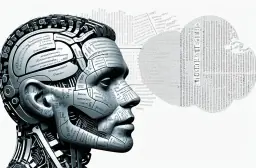
Natural Language Processing: Learn, Apply, and Innovate
Natural Language Processing (NLP) has become a cornerstone of artificial intelligence, transforming how we interact with technology. From enabling voice assistants to enhancing customer service chatbots, NLP’s evolution is nothing short of remarkable. In this article, we will explore the journey of NLP, its applications, and the profound impact it has on various industries, particularly here in Canada.
The Journey of Natural Language Processing

The concept of NLP dates back to the 1950s when the first attempts to enable machines to understand human language began. Early efforts focused on simple rule-based systems that could parse text and identify grammatical structures. However, these systems often struggled with the complexities of human language, such as idioms and context.
As technology advanced, so did the approaches to NLP. The introduction of statistical methods in the 1990s marked a significant turning point. Researchers began to employ machine learning techniques, allowing systems to learn from data rather than relying solely on predefined rules. This shift paved the way for more sophisticated applications, enabling computers to understand context and nuances in language.
Key Components of NLP
Natural Language Processing comprises several key components that work together to process and understand human language. These components include:
-
Natural Language Understanding (NLU): This involves interpreting and understanding the meaning behind text, enabling machines to grasp intent and context.
-
Natural Language Generation (NLG): This is the process of producing human-like text from structured data, allowing machines to communicate effectively.
-
Text Analytics: Involves analyzing text data to extract insights and patterns, often employing techniques such as sentiment analysis and text mining.
-
Speech Recognition: This technology converts spoken language into text, facilitating voice-activated systems and applications.
-
Conversational AI: Combines various NLP techniques to create chatbots and virtual assistants that can engage in human-like conversations.
As we delve deeper into these components, it’s important to recognize how they collectively enhance human-computer interaction, making our experiences with technology more intuitive.
Applications of Natural Language Processing
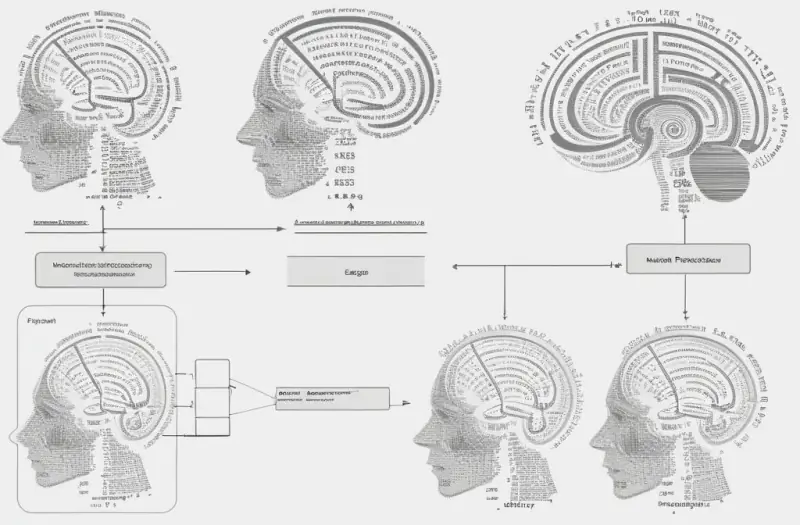
NLP has found its way into various sectors, providing innovative solutions and improving efficiency. Here are some notable applications:
Customer Support
In the realm of customer service, conversational AI has transformed how businesses interact with their customers. Chatbots powered by NLP can understand queries, provide instant responses, and even escalate issues to human agents when necessary. This not only enhances customer satisfaction but also reduces operational costs for businesses.
Healthcare
In healthcare, NLP is revolutionizing patient care. By analyzing clinical notes, patient feedback, and research papers, NLP tools can help healthcare professionals identify trends, improve patient outcomes, and even assist in diagnostics. For instance, sentiment analysis can gauge patient emotions, allowing for better mental health support.
Content Creation and Curation
NLP tools are also enhancing content creation. From automated news generation to personalized marketing content, these systems can analyze vast amounts of data to produce relevant material. Text classification and tokenization are often used to categorize information, making content curation more efficient.
Academic Research
In academia, NLP assists researchers by enabling effective information retrieval. Tools that employ semantic analysis help researchers locate relevant studies quickly, streamlining the literature review process. Furthermore, discourse analysis can reveal patterns in academic writing, contributing to better understanding and improvements in scholarly communication.
The Role of Machine Learning in NLP
Machine learning has played a pivotal role in advancing NLP capabilities. By leveraging algorithms that can learn from vast datasets, NLP systems can continually improve their understanding of language. Key techniques include:
-
Deep Learning for NLP: This approach utilizes neural networks to process language data, significantly enhancing the accuracy of tasks such as sentiment analysis and speech recognition.
-
Language Modeling: Through statistical methods, machines can predict the likelihood of a sequence of words, which is crucial for applications like predictive text and grammar correction.
-
Named Entity Recognition: This technique identifies and classifies key entities within text, such as names, locations, and organizations, facilitating more effective information extraction.
These techniques not only improve existing applications but also open the door to new possibilities in NLP research and development.
Future Trends in NLP
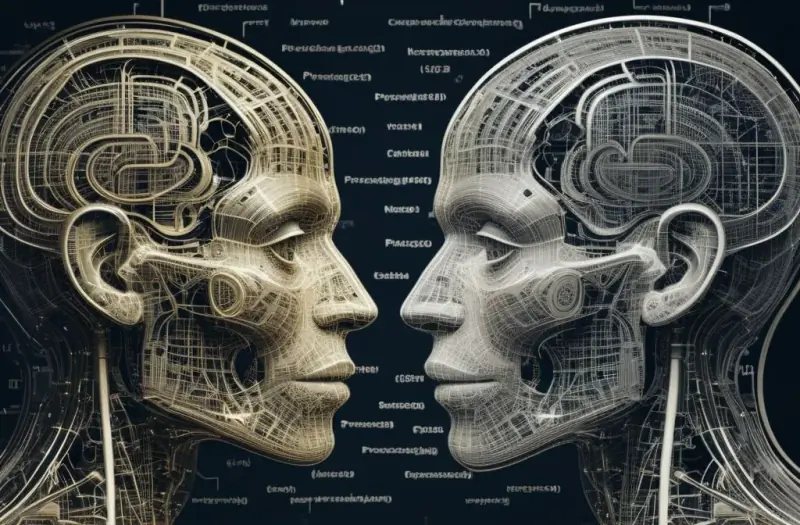
As technology evolves, so too do the trends shaping the future of NLP. Some anticipated advancements include:
-
Enhanced Multilingual Support: As the world becomes more interconnected, the demand for NLP systems that can understand and generate multiple languages will increase.
-
Improved Contextual Understanding: Future NLP models will likely focus on better grasping the nuances of context, allowing for more accurate interpretations of user intent.
-
Integration with Other AI Disciplines: The fusion of NLP with other AI technologies, such as computer vision and robotics, promises to create even more sophisticated applications.
These trends reflect the ongoing commitment to making human-computer interaction as seamless as possible.
FAQs About Natural Language Processing
What is Natural Language Processing?
Natural Language Processing is a field of artificial intelligence that focuses on the interaction between computers and humans through natural language.
How does NLP differ from traditional programming?
While traditional programming relies on explicit instructions, NLP utilizes algorithms and machine learning to interpret and generate human language.
Can NLP understand multiple languages?
Yes, NLP systems are increasingly capable of processing and generating text in multiple languages, although proficiency can vary by language.
What industries benefit from NLP?
Industries such as healthcare, finance, marketing, and education are among those that significantly benefit from the applications of NLP.
Is NLP only about text?
No, NLP also encompasses speech recognition and synthesis, allowing for interaction through spoken language.
Conclusion
The evolution of Natural Language Processing has revolutionized the way we interact with technology. From improving customer support to enhancing healthcare outcomes, NLP has become an integral part of our digital landscape. As we continue to explore its applications and advancements, it’s clear that NLP holds immense potential for the future.
Key Takeaways
- NLP has evolved from simple rule-based systems to sophisticated machine learning applications.
- Key components include Natural Language Understanding, Natural Language Generation, and Speech Recognition.
- NLP finds applications in various sectors, including customer support, healthcare, and content creation.
- Machine learning techniques, particularly deep learning, play a crucial role in enhancing NLP capabilities.
- Future trends indicate a focus on multilingual support, improved contextual understanding, and integration with other AI technologies.
Through this journey, we at [Your Company Name] are excited to witness how NLP will continue to shape our interactions and experiences with technology in Canada and beyond.

Open Source AI Projects: Build & Learn
Introduction
In the rapidly evolving field of artificial intelligence (AI), open-source projects have emerged as a driving force behind innovation and collaboration. These initiatives provide developers, researchers, and organizations with the tools and platforms necessary to explore new frontiers in AI. Open source artificial intelligence projects allow us to share knowledge, refine ideas, and accelerate technological advancements that might otherwise be out of reach for individuals or small teams.
As we dive deeper into the world of AI open source initiatives, it becomes clear that these projects are not just about code; they are about creating communities. Through open AI development platforms, we can collectively push the boundaries of what’s possible, fostering an environment where ideas flourish, and innovation thrives.
The Rise of Open Source AI Projects
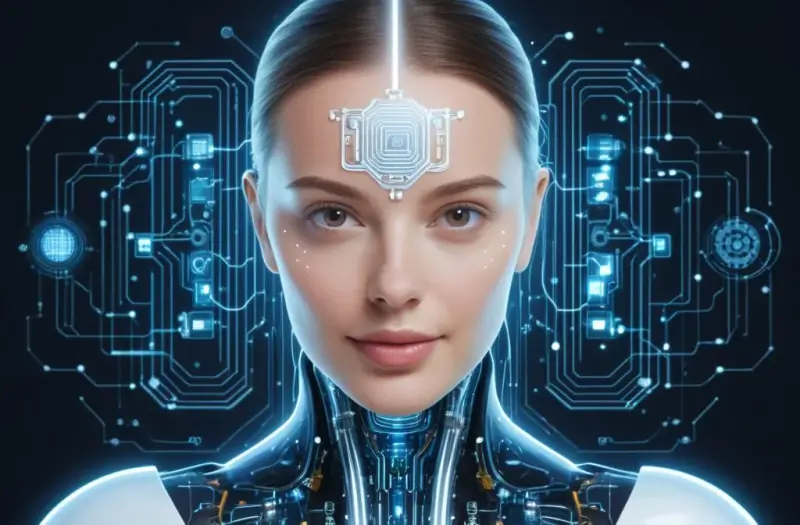
The concept of open-source software has been around for decades, but its application in the AI field is a relatively recent phenomenon. As AI technology began to advance, it became apparent that collaboration would be key to solving complex problems. This realization gave rise to numerous open source machine learning projects, which have since become the backbone of AI research and development.
One of the key benefits of open-source AI projects is the ability to leverage a diverse range of expertise. Developers from all corners of the globe can contribute to AI project repositories, ensuring that these projects are robust, well-tested, and constantly evolving. Moreover, the transparency of open-source projects ensures that the technology is accessible to all, fostering a culture of inclusivity and shared knowledge.
As we continue to witness the growth of AI open source frameworks, it’s evident that the future of AI lies in collaboration. These frameworks provide the building blocks for developing sophisticated AI applications, enabling us to explore new avenues and push the boundaries of what’s possible.
Key Open Source AI Projects Shaping the Future
The open-source AI ecosystem is vast and varied, with projects ranging from general-purpose machine learning libraries to specialized tools for deep learning, natural language processing, and more. Below are some of the most influential open AI software projects that are shaping the future of innovation:
-
TensorFlow: Developed by Google, TensorFlow is one of the most popular open source deep learning projects. It provides a comprehensive platform for building and deploying machine learning models, with support for both beginners and experts alike.
-
PyTorch: Backed by Facebook, PyTorch has quickly become a favorite among researchers for its flexibility and ease of use. This open source neural network framework allows developers to build complex models with minimal effort, making it an ideal choice for experimentation and research.
-
Hugging Face Transformers: Specializing in natural language processing, Hugging Face has revolutionized the field with its open AI solutions. The Transformers library provides pre-trained models and tools that make it easier than ever to implement cutting-edge NLP models in various applications.
-
OpenAI Gym: A toolkit for developing and comparing reinforcement learning algorithms, OpenAI Gym is a prime example of AI open collaboration. By providing a standardized environment, it allows researchers to test their models against others, driving progress in this challenging field.
-
Keras: Known for its simplicity and ease of use, Keras is a high-level neural networks API that runs on top of TensorFlow. It is one of the most accessible open source AI tools, making it an excellent starting point for beginners.
These projects represent just a fraction of the vibrant open-source AI community. As we move forward, we can expect to see even more community-driven AI projects emerge, each contributing to the collective knowledge and capabilities of the AI field.
The Impact of Open Source on AI Development
The impact of open-source projects on AI development cannot be overstated. By providing access to powerful tools and platforms, these initiatives democratize AI, allowing anyone with an internet connection to participate in the development and application of advanced technologies. This accessibility has led to an explosion of creativity, with collaborative AI projects tackling some of the most pressing challenges of our time.
One of the key advantages of open-source AI is the speed at which it evolves. With countless developers contributing to AI code repositories, bugs are quickly identified and resolved, new features are rapidly implemented, and best practices are continually refined. This iterative process ensures that open source AI projects are always at the cutting edge of technology, providing users with the most up-to-date tools and capabilities.
Furthermore, the collaborative nature of open source encourages knowledge sharing and cross-pollination of ideas. Researchers and developers can learn from each other’s work, building upon existing models and algorithms to create even more sophisticated AI solutions. This spirit of collaboration is what drives innovation, pushing the boundaries of what AI can achieve.
Challenges and Considerations in Open Source AI

While the benefits of open source AI projects are numerous, there are also challenges that must be addressed. One of the primary concerns is the issue of sustainability. Many open-source projects rely on volunteer contributions, which can lead to inconsistencies in quality and support. Ensuring the long-term viability of these projects requires a balance between community-driven development and institutional support.
Another challenge is the ethical implications of AI. As we continue to develop more powerful AI technologies, it is crucial that we consider the potential consequences of their deployment. Open-source AI projects must prioritize transparency and accountability, ensuring that their technologies are used responsibly and do not perpetuate biases or inequalities.
Finally, there is the issue of security. Open-source projects are inherently more vulnerable to exploitation, as their code is freely available for anyone to inspect. Ensuring that these projects are secure requires a concerted effort from the community, with a focus on identifying and mitigating potential vulnerabilities.
The Future of Open Source AI
The future of open source artificial intelligence projects is bright, with endless possibilities for innovation and collaboration. As more organizations recognize the value of open-source development, we can expect to see even greater investment in these initiatives. This will lead to the creation of more sophisticated open AI development platforms, enabling us to tackle increasingly complex problems.
Moreover, the rise of AI will continue to blur the lines between disciplines, fostering collaboration between experts in fields such as computer science, mathematics, biology, and more. By leveraging the power of open source AI tools, we can accelerate the pace of discovery and unlock new opportunities for advancement.
In the coming years, we can expect to see a surge in AI open source initiatives focused on addressing global challenges such as climate change, healthcare, and education. These projects will not only advance the state of AI but also contribute to the betterment of society as a whole.
FAQs
What are open-source AI projects?
Open-source AI projects are collaborative initiatives where the source code is freely available for anyone to use, modify, and distribute. These projects are typically developed by a community of contributors and are often used to advance the field of artificial intelligence.
Why is open-source important for AI?
Open-source is important for AI because it democratizes access to advanced technologies, allowing anyone to contribute to and benefit from AI development. This fosters innovation, accelerates progress, and ensures that AI technologies are transparent and accessible.
What are some popular open-source AI projects?
Some popular open-source AI projects include TensorFlow, PyTorch, Hugging Face Transformers, OpenAI Gym, and Keras. These projects provide the tools and frameworks necessary for building and deploying AI models.
What are the challenges of open-source AI?
Challenges of open-source AI include sustainability, ethical considerations, and security. Ensuring the long-term viability of projects, addressing potential biases, and securing the code are critical to the success of open-source AI initiatives.
How can I contribute to an open-source AI project?
You can contribute to an open-source AI project by joining the project’s community, reviewing and submitting code, writing documentation, and participating in discussions. Most projects have guidelines for contributors, which can be found in their repositories.
Conclusion
Open source AI projects are at the forefront of innovation and collaboration, providing us with the tools and platforms necessary to push the boundaries of what’s possible. Through these initiatives, we can collectively address some of the most pressing challenges of our time, while also fostering a culture of inclusivity and shared knowledge. As we look to the future, it is clear that collaborative AI projects will continue to play a pivotal role in shaping the trajectory of artificial intelligence.
Key Takeaways
- Open source AI projects are driving innovation and collaboration in the field of artificial intelligence.
- Key projects like TensorFlow, PyTorch, and Hugging Face Transformers are shaping the future of AI development.
- Open-source AI fosters inclusivity, transparency, and rapid technological advancement.
- Challenges include sustainability, ethical considerations, and security, which must be addressed to ensure the success of these initiatives.
- The future of open source AI is bright, with endless possibilities for addressing global challenges and advancing the state of AI.

Opinion Articles AI: Get Your Views Published
Artificial Intelligence (AI) is transforming every aspect of our lives—from how we work to how we interact with technology. But it is also changing how we think, discuss, and form opinions on societal and technological issues. Opinion articles AI are playing an increasingly vital role in shaping public perspectives, influencing decisions, and even challenging existing viewpoints in this age of rapid technological advancements. As AI becomes more prevalent, so do the AI editorial content and AI-driven opinions that fuel discussions around its capabilities and consequences.
In this article, we’ll explore how AI is influencing opinion journalism, the ethical debates it sparks, and the impact of AI-generated content on public opinion. We’ll also dive into the evolving nature of AI thought leadership and its role in guiding AI public opinion on some of today’s most pressing issues.
How AI is Reshaping Opinion Journalism
Opinion journalism has always been about expressing personal perspectives on current issues, offering analysis, and influencing public thought. With the rise of AI, we are seeing a shift in how these opinions are generated, consumed, and perceived. AI editorial content is now being created not just by humans but by advanced algorithms capable of analyzing data, identifying trends, and offering insights.
For example, AI can assist writers in crafting compelling AI op-eds by suggesting data-backed viewpoints, structuring arguments, or even creating entire articles. While some might argue that this automation reduces the authenticity of opinion journalism, others see it as a tool to enhance the depth and breadth of AI analysis features. By leveraging large datasets, AI can offer new perspectives on AI issues, helping human writers present a more nuanced view of complex topics.
- AI assists in article drafting by offering structured content.
- It enhances the speed and accuracy of data-backed opinion writing.
- AI enables writers to explore more varied AI ethical discussions.
But while AI may augment the writing process, the core essence of AI commentary articles—human thought and creativity—remains irreplaceable. AI cannot yet replicate the depth of human emotion or the lived experiences that shape true opinion journalism.
The Ethical Implications of AI in Opinion Writing
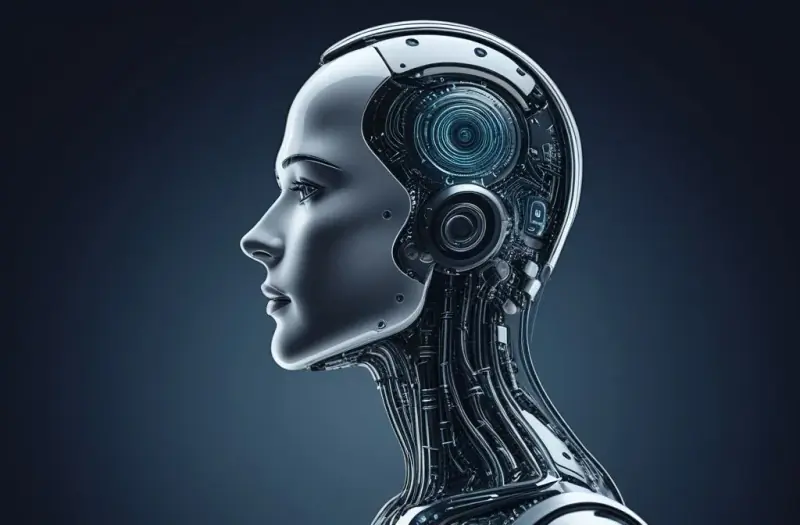
With AI’s increasing role in content creation, ethical questions arise. Can we trust AI to present unbiased viewpoints? How do we ensure that AI-driven opinions don’t inadvertently promote biased or harmful perspectives? These questions are at the heart of the AI ethical discussions that are dominating both AI discourse and public debate.
One key issue is transparency. If an opinion piece is generated or heavily influenced by AI, should that information be disclosed to readers? The ethical implications of using AI in opinion writing lie in the balance between leveraging technology to enhance content and maintaining the integrity of journalistic standards. Without transparency, readers may unknowingly consume AI opinion-based content that could mislead or fail to account for the full range of human emotions and biases.
“AI must be seen as a tool, not a substitute for human perspective.”
The potential for AI to perpetuate biases is another ethical concern. Since AI algorithms learn from data, they can sometimes reflect societal biases present in their training sets. Writers and editorial teams must therefore exercise caution when integrating AI into their workflow, ensuring that AI opinion essays are reviewed and shaped by human judgment before publication.
AI in Public Opinion Shaping
AI’s influence goes beyond helping writers; it is also playing a significant role in shaping public opinion itself. From social media algorithms to news recommendation engines, AI-driven systems determine what content is presented to users, thus impacting the narratives they encounter. AI thought pieces can reach broader audiences through these technologies, but they can also create echo chambers where only certain views are reinforced.
For example, social media platforms often use AI to curate newsfeeds, ensuring that users see content aligned with their preferences. While this might seem beneficial, it can limit exposure to diverse opinions. As a result, readers may only engage with AI debate articles that confirm their existing beliefs, rather than being exposed to opposing or challenging viewpoints.
This phenomenon raises critical questions about the role of AI in fostering or hindering democratic discourse. In a world where AI commentary articles are increasingly prominent, how do we ensure that all perspectives on AI are represented?
- Should there be regulations on AI-curated content to avoid creating opinion silos?
- How can we encourage AI systems to promote balanced and unbiased AI discourse?
The challenge moving forward will be ensuring that AI’s role in shaping public opinion fosters inclusivity and diverse perspectives rather than reinforcing narrow viewpoints.
The Role of AI in Thought Leadership
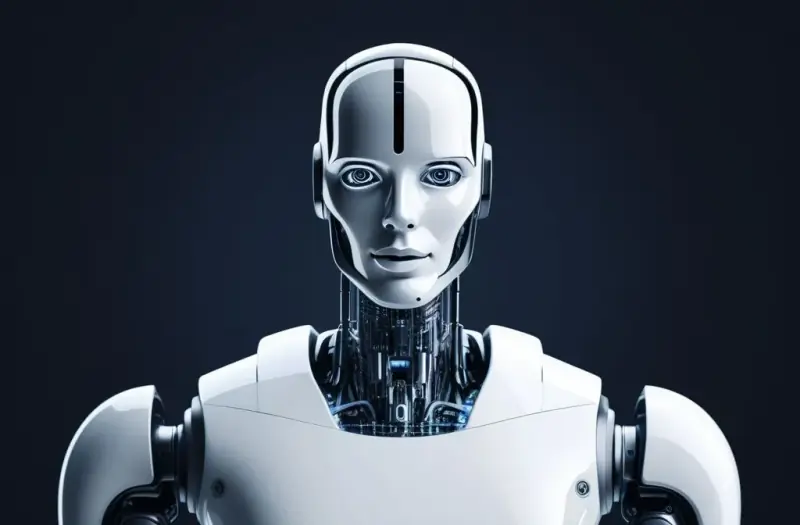
As AI continues to evolve, so does its role in shaping thought leadership across industries. AI thought leadership is no longer just about offering expert opinions on AI-related matters—it is about leveraging AI to predict future trends, solve complex problems, and guide public discourse. Today’s leaders use AI to gather insights that inform policy, business strategies, and societal change.
Many organizations are embracing AI analysis features to support AI-driven opinions that can influence decision-makers in government, healthcare, finance, and beyond. By analyzing massive amounts of data, AI helps to generate AI debate articles that provide a clearer understanding of complex global issues, such as climate change, economic inequality, and digital privacy.
Key Benefits of AI in Thought Leadership:
- AI enables leaders to make data-informed decisions quickly and effectively.
- It helps generate innovative ideas by identifying patterns and predicting trends.
- AI expands the scope of thought leadership by providing insights from large-scale data analysis.
However, the human element remains essential. While AI can offer valuable data and perspectives, human leaders must interpret these findings, weigh ethical considerations, and communicate them effectively to their audiences.
FAQs
How does AI influence opinion journalism?
AI plays a role by assisting writers in drafting content, analyzing data for new insights, and shaping public opinion through content curation on platforms.
Can AI replace human opinion writers?
No, AI is a tool that can enhance but not replace human creativity, emotion, and personal experience in opinion writing.
What are the ethical concerns of AI in opinion content creation?
Key ethical concerns include transparency, potential biases in AI-generated content, and the risk of AI-driven opinion silos on social media platforms.
How is AI changing public opinion?
AI-curated content on social media and news platforms shapes the narratives people encounter, potentially reinforcing existing beliefs and creating echo chambers.
What is AI thought leadership?
AI thought leadership involves using AI to provide insights, predict trends, and inform decision-making across industries, helping to shape public discourse on various issues.
Conclusion
As AI continues to revolutionize the way we create and consume content, it also brings new challenges and opportunities to the world of opinion journalism. While AI can assist in crafting more informed and data-driven opinions, the core of opinion writing—human thought, emotion, and creativity—remains irreplaceable. As we navigate the ethical and practical implications of AI in opinion content, one thing is clear: AI-driven opinions are here to stay, shaping how we think, discuss, and engage with the world around us.
Key Takeaways
- AI is transforming opinion journalism by assisting writers with data-backed insights and content structuring.
- Ethical considerations such as transparency and bias are critical in integrating AI into opinion writing.
- AI-curated content on platforms plays a significant role in shaping public opinion, often creating echo chambers.
- AI thought leadership is expanding, with AI offering valuable insights for decision-making in various sectors.
- Despite AI’s growing influence, human creativity and emotional depth remain central to opinion journalism.

Real-world ChatGPT Case Studies: Success Stories
In today’s fast-paced digital landscape, businesses across various industries are embracing artificial intelligence (AI) to streamline operations and enhance customer satisfaction. ChatGPT, an advanced conversational AI model, has been at the forefront of this transformation. In this article, we’ll explore real-world ChatGPT case studies that showcase how this AI technology is transforming business operations and customer experiences.
Revolutionizing Customer Support with ChatGPT
One of the most significant areas where ChatGPT use cases have had a substantial impact is customer support. Many businesses are leveraging AI-powered chatbots to provide round-the-clock assistance, resolve customer issues faster, and reduce the need for human agents.
Take, for example, a global e-commerce company that integrated ChatGPT into their customer support system. The AI chatbot was able to handle over 80% of customer queries without human intervention. This ChatGPT deployment example reduced response times from hours to mere seconds, significantly improving customer satisfaction.
Another practical ChatGPT implementation is within the travel industry. A leading airline integrated ChatGPT to assist passengers with booking changes, flight information, and customer inquiries. The AI was able to manage real-time requests during peak hours, providing smooth and uninterrupted service.
- Key benefits of ChatGPT in customer support:
- Instant response times
- 24/7 availability
- Scalability to manage thousands of inquiries simultaneously
Streamlining Internal Operations with AI Chatbots
Internal operations within companies have also seen remarkable improvements thanks to ChatGPT industry applications. By automating repetitive tasks and enabling smoother workflows, businesses are witnessing greater operational efficiency.
A notable ChatGPT success story comes from a financial services company that deployed the AI chatbot for internal use. Employees could use the chatbot to access company policies, handle HR requests, and even troubleshoot IT issues. This real-world ChatGPT application not only saved employees time but also reduced the burden on human resources and IT departments.
In the healthcare sector, hospitals have integrated ChatGPT-driven solutions to streamline administrative tasks. From scheduling appointments to sending reminders to patients, ChatGPT has significantly reduced paperwork, freeing up time for healthcare providers to focus on patient care.
- Key benefits of ChatGPT in internal operations:
- Reducing repetitive tasks
- Enhancing operational efficiency
- Freeing up human resources for more critical tasks
Enhancing Personalization in Marketing

Real-world AI chatbot studies have demonstrated that ChatGPT integration scenarios can lead to personalized and engaging customer experiences, especially in marketing. By analyzing user behavior, preferences, and purchase history, ChatGPT enables companies to deliver customized marketing campaigns.
A fashion retailer used ChatGPT to create personalized shopping experiences for their online customers. The AI assistant would recommend products based on browsing history, past purchases, and current fashion trends. This level of personalization led to a 20% increase in conversion rates and an improved customer retention rate.
In the media and entertainment industry, streaming platforms have adopted conversational AI examples to recommend content based on individual user preferences. The AI-driven system engages users in conversations, asks for preferences, and makes personalized recommendations, enhancing the overall user experience.
- Key benefits of ChatGPT in marketing:
- Increased customer engagement
- Personalized shopping experiences
- Higher conversion and retention rates
Driving Innovation in Retail with ChatGPT
The retail sector is no stranger to the transformative potential of AI. ChatGPT customer experiences have shown how businesses can leverage conversational AI to drive sales, enhance customer loyalty, and create seamless shopping experiences.
A large grocery chain introduced a ChatGPT-powered chatbot that assisted customers with product information, available discounts, and even nutritional advice. The AI chatbot was so effective that customers reported a more enjoyable shopping experience, leading to a noticeable increase in customer loyalty.
Furthermore, some retailers are utilizing ChatGPT for inventory management. ChatGPT practical examples show that the AI can predict which products will be in demand, enabling better stock management and reducing overstock issues.
- Key benefits of ChatGPT in retail:
- Enhanced customer shopping experience
- Improved inventory management
- Boost in customer loyalty
Real-time ChatGPT Applications in the Financial Industry
The financial industry is also experiencing the benefits of real-time ChatGPT scenarios. Banks and financial institutions are adopting ChatGPT to improve customer service, manage accounts, and offer financial advice in real-time.
For instance, a leading bank deployed ChatGPT to assist customers with balance inquiries, transaction histories, and even investment advice. The AI-driven solution not only reduced the workload on human advisors but also provided customers with personalized financial insights based on their spending habits.
Another ChatGPT industry application includes fraud detection. ChatGPT can analyze transaction patterns and identify unusual activity, alerting both the customer and the bank in real-time, thus improving security and reducing the risk of fraud.
- Key benefits of ChatGPT in finance:
- Personalized financial insights
- Real-time fraud detection
- Enhanced customer service
FAQs
How are businesses using ChatGPT in customer service?
Businesses are leveraging ChatGPT to handle customer queries, provide real-time support, and enhance overall customer satisfaction. It enables instant responses, 24/7 availability, and scalability for handling large volumes of inquiries.
Can ChatGPT be used for internal business operations?
Yes, ChatGPT is widely used for streamlining internal operations, such as handling HR requests, troubleshooting IT issues, and automating repetitive tasks, which boosts overall efficiency.
How does ChatGPT enhance customer experiences in marketing?
By providing personalized recommendations and engaging customers in real-time conversations, ChatGPT helps improve customer engagement and boosts conversion rates.
What are some ChatGPT applications in the financial sector?
In the financial sector, ChatGPT is used for personalized account management, providing financial advice, and detecting fraudulent activity in real-time.
How does ChatGPT help in inventory management for retail businesses?
ChatGPT can predict demand patterns and assist in inventory management, ensuring that businesses stock the right products at the right time and avoid overstocking issues.
Conclusion
From revolutionizing customer support to enhancing internal operations, marketing, and even retail management, ChatGPT use cases demonstrate the vast potential of AI in transforming business operations. As industries continue to evolve, real-world ChatGPT applications will undoubtedly play an essential role in driving innovation and improving customer experiences.
Key Takeaways
- ChatGPT has revolutionized customer support with faster response times and 24/7 availability.
- Internal operations have become more efficient with the help of AI-driven automation.
- Marketing campaigns have seen improved engagement and personalization thanks to ChatGPT.
- The retail and financial sectors benefit from ChatGPT’s real-time applications, driving sales and improving security.
- As businesses continue to integrate AI-powered solutions, ChatGPT will remain a key player in enhancing both operations and customer experiences.

Resume & Portfolio Tips: Stand Out in Your Job Search
In today’s competitive job market, having a standout resume and portfolio is essential for career advancement. We often hear about the importance of a professional profile, but how do we ensure ours is strong enough to impress employers? In this guide, we’ll share resume and portfolio tips to help you craft a professional profile that opens doors to new opportunities.
Introduction to Resume Optimization and Portfolio Enhancement
Before we dive into the specific techniques, let’s understand why resume optimization and portfolio enhancement are crucial. Your resume is often the first document an employer sees, and a polished, professional version can make all the difference in securing an interview. Your portfolio serves as a visual or documented proof of your skills, showing employers what you’re capable of.
Crafting a strong professional profile requires focusing on both documents. While a resume highlights your qualifications, a portfolio showcases your achievements and talents in action. Together, they form a compelling case for why you are the right candidate for the job.
Resume Crafting Techniques: Essential Tips for Success

When it comes to resume optimization, knowing how to structure your CV is key to making a great first impression. Here are some essential tips to follow:
1. Focus on Professional Resume Writing
Writing a professional resume doesn’t mean filling the page with every detail of your career. It’s about strategically presenting your most relevant experiences and skills. Begin with a powerful summary at the top, highlighting your key qualifications in 2-3 sentences. Use bullet points to list achievements in your previous roles, and avoid lengthy paragraphs.
Make sure to include:
- Clear headings for each section (e.g., “Experience”, “Skills”, “Education”).
- Measurable results (e.g., “Increased sales by 20% over six months”).
- Keywords from the job description to pass Applicant Tracking Systems (ATS).
2. Resume Formatting Strategies: Structuring for Readability
How your resume looks is just as important as the content. A well-structured resume enhances readability and ensures key information isn’t missed.
- Use bold text for job titles and company names.
- Keep bullet points short, and use action verbs to start each point (e.g., “Led”, “Managed”, “Developed”).
- Choose a clean, professional font like Arial or Calibri, and keep font size between 10-12 points.
Ensuring that the layout is clear and consistent makes it easy for recruiters to scan your resume quickly.
3. Tailoring Your Resume for Each Job Application
One of the most important resume crafting techniques is to tailor your resume for each job application. No two jobs are exactly the same, so your resume shouldn’t be either. Tailor your qualifications, skills, and experiences to align with what the employer is looking for.
Portfolio Building Strategies: Showcasing Your Best Work
Your portfolio is where you have the chance to show, not tell. It’s the perfect place to demonstrate your achievements, creativity, and abilities.
1. Portfolio Presentation Tips: Organizing Your Portfolio for Impact
When creating a portfolio, organization is key. Whether it’s an online portfolio or a physical one, you want the presentation to be logical and easy to follow.
- Start with an introduction or “About Me” section.
- Group similar works together, such as design projects, articles, or code snippets.
- For each item, include a brief description of the project, the tools or methods used, and your role in the outcome.
A well-organized portfolio is a powerful tool for demonstrating your expertise.
2. Portfolio Structuring Ideas: Highlighting Key Projects
Not all projects are created equal, so be selective about what you include in your portfolio. Choose projects that best represent your skills and the kind of work you want to do in the future.
- Include a range of work that shows different skills (e.g., creative, technical, managerial).
- Emphasize projects where you had the most impact or received significant recognition.
- If possible, include real-world results (e.g., “Generated 50% more traffic through content marketing”).
3. Portfolio Design Insights: Make It Visually Appealing
A good portfolio should be visually engaging, especially if you’re in a creative field. However, even in non-creative roles, a portfolio should look professional and easy to navigate.
- Keep the design clean and simple.
- Use high-quality images or screenshots to illustrate your work.
- Ensure that the layout is consistent, with clear headings and enough white space for readability.
Job Application Advice: Combining Resume and Portfolio for Maximum Impact

When applying for jobs, think of your resume and portfolio as complementary tools. Your resume provides the overview, while your portfolio offers detailed proof of your abilities. Together, they create a powerful impression.
Here’s how to combine them effectively:
- Provide a link to your online portfolio in your resume.
- Reference key projects from your portfolio in your cover letter or during interviews.
- Ensure both documents are tailored to the specific job and industry you’re targeting.
FAQs About Resume and Portfolio Crafting
What’s the difference between a resume and a CV?
A resume is typically a one or two-page document highlighting your key experiences and skills, whereas a CV is more detailed and used for academic or research positions.
How often should I update my portfolio?
You should update your portfolio every time you complete a new project or at least every six months to keep it current.
Do I need a portfolio for every job?
While portfolios are essential in creative fields, they can be useful in nearly any profession. They help show evidence of your work, which is valuable in many job applications.
What are the key elements of a strong portfolio?
A strong portfolio should have a clear structure, quality work samples, and explanations of your role in each project. It should also be visually appealing.
Can I use the same resume for every job application?
No, you should tailor your resume to each job by aligning your experiences and skills with the job description.
Conclusion: Building a Professional Profile for Career Success
In today’s competitive job market, your resume and portfolio are the tools that set you apart from other candidates. By focusing on resume optimization and portfolio enhancement, you can present a strong, compelling professional profile that impresses employers. From crafting the perfect resume to building an impactful portfolio, we hope these tips will help you achieve career success.
Key Takeaways
- A professional resume highlights your most relevant skills and experiences.
- Tailoring your resume for each job is key to standing out.
- Your portfolio should showcase your best work in a well-organized, visually appealing format.
- Combine both resume and portfolio to create a powerful job application package.
- Regularly update both documents to ensure they reflect your most recent accomplishments.

Roundtable Discussions: Expert Insights & Ideas
In today’s dynamic world, decision-making and problem-solving are no longer confined to individual leadership or isolated planning. Roundtable discussions have emerged as a critical tool for fostering collaborative solutions and facilitating informed decision-making across a wide range of industries. By gathering diverse perspectives, these panel discussions empower organizations and communities to craft strategies that are more inclusive, well-rounded, and effective.
As we explore the significance of roundtable discussions, we’ll delve into how they create opportunities for peer dialogues, facilitate stakeholder engagements, and drive meaningful outcomes.
The Importance of Roundtable Discussions
Roundtable discussions are a powerful format for convening group conversations around pressing issues. These collaborative meetings ensure that all voices are heard, leading to a collective understanding of the problem at hand. Expert forums and facilitated debates provide a unique opportunity to engage with a diversity of opinions and insights, enabling participants to explore the full spectrum of ideas before arriving at a consensus.
- Inclusive Decision-Making: One of the key advantages of roundtable discussions is that they allow for participatory discussions. This means that everyone, from junior staff members to seasoned experts, has the chance to contribute their thoughts and perspectives.
- Broader Perspectives: By bringing together a variety of stakeholders, including industry experts, community leaders, and policymakers, roundtable discussions offer a platform for multi-stakeholder dialogues that consider a wider range of perspectives, leading to more well-informed decisions.
In our experience, these group conversations often reveal innovative solutions that may not have emerged in traditional, top-down meeting structures.
Fostering Collaborative Solutions Through Expert Forums

At the heart of collaborative meetings is the ability to bring people together in interactive sessions. When experts convene in panel discussions, they not only share knowledge but also engage in peer dialogues that lead to new ideas and breakthroughs.
We’ve seen first-hand how consultative meetings can drive solutions in complex environments. For example, when developing a new community health initiative, a community roundtable discussion with healthcare professionals, local authorities, and residents allowed for the development of a tailored program that addressed specific regional needs.
- Knowledge Sharing: In expert forums, participants can pool their knowledge and experiences, leading to a deeper understanding of the subject.
- Problem Solving: By engaging in brainstorming sessions, participants can approach problems from different angles, leading to creative and effective solutions.
Ultimately, these thought exchanges provide the opportunity for experts and stakeholders to tackle pressing challenges with collective intelligence.
Enhancing Stakeholder Engagement
When it comes to decision-making that impacts entire communities or organizations, stakeholder engagement is key. Roundtable discussions offer the perfect forum for gathering input from all relevant parties, ensuring that decisions reflect the needs and interests of everyone involved.
In our organization, we have found that focus group meetings are an excellent way to gather feedback from specific groups of stakeholders. For example, when implementing a new software system, holding a series of roundtable discussions with end-users, IT professionals, and management helped to identify potential issues before they became major obstacles.
- Open Forums for Discussion: A roundtable setting allows for an open forum where all stakeholders can express their concerns, share ideas, and contribute to the overall strategy.
- Ensuring Buy-In: When stakeholders feel that they have been part of the decision-making process, they are more likely to support the final outcome.
By using multi-stakeholder dialogues to engage everyone from employees to external partners, organizations can ensure that decisions are grounded in real-world concerns and aspirations.
Driving Innovation Through Participatory Discussions

Participatory discussions are particularly effective for driving innovation. When people from different disciplines and backgrounds engage in brainstorming sessions, they often come up with ideas that wouldn’t have surfaced in more siloed conversations.
At a recent collaborative meeting focused on urban development, bringing together city planners, architects, business owners, and residents led to the creation of a sustainable development plan that balanced economic growth with environmental preservation.
- Cross-Disciplinary Innovation: These discussions often spark cross-disciplinary innovations, where experts from different fields collaborate to create holistic solutions.
- Iterative Problem Solving: By facilitating interactive sessions, participants can iterate on ideas, refining and improving them as they go.
The collaborative nature of roundtable discussions makes them an essential tool for organizations looking to foster innovation and solve complex problems.
The Role of Facilitated Debates in Informed Decision-Making
Facilitated debates within roundtable discussions play a vital role in ensuring that decisions are informed by rigorous analysis and a diversity of viewpoints. When stakeholders come together in consultative meetings to debate different approaches, they can identify the best path forward.
One of the key benefits of facilitated debates is that they allow for stakeholder engagement in a structured manner, where opposing viewpoints can be discussed and evaluated openly. In the end, the decisions that emerge are often more nuanced and effective.
- Ensuring Transparency: Roundtable discussions promote transparency by allowing all participants to understand the rationale behind decisions.
- Balanced Decision-Making: These debates help ensure that decisions are balanced and consider all possible outcomes.
By engaging in facilitated debates, organizations can make decisions that are both informed and collaborative.
FAQs
What are roundtable discussions, and why are they important?
Roundtable discussions are collaborative meetings that bring together various stakeholders to discuss important issues. They are crucial for inclusive decision-making as they allow for diverse viewpoints and innovative solutions to emerge.
How do roundtable discussions drive innovation?
By fostering participatory discussions and brainstorming sessions, roundtable discussions bring together people from different backgrounds to generate new ideas and solutions that might not emerge in more traditional settings.
How do roundtable discussions ensure stakeholder engagement?
Roundtable discussions create an open forum for stakeholders to express their views, ensuring that decisions are based on a broad range of perspectives. This leads to greater buy-in and more effective implementation of decisions.
What is the role of facilitated debates in roundtable discussions?
Facilitated debates allow participants to explore opposing viewpoints and arrive at decisions that are well-informed and balanced, taking into account all possible outcomes.
Conclusion
In conclusion, roundtable discussions are an essential tool for driving collaborative solutions and facilitating informed decision-making. Whether in expert forums, community roundtables, or focus group meetings, these panel discussions bring together diverse perspectives, foster innovation, and ensure that decisions reflect the needs and interests of all stakeholders.
Key Takeaways
- Roundtable discussions promote inclusive decision-making by bringing together diverse voices.
- Collaborative meetings drive innovation through participatory discussions and brainstorming sessions.
- Stakeholder engagement is essential for ensuring that decisions are grounded in real-world concerns.
- Facilitated debates lead to balanced and well-informed decisions.
By leveraging the power of roundtable discussions, organizations can create more effective, inclusive, and innovative solutions to the challenges they face.

Smart Cities Artificial Intelligence: Shaping Urban Futures
What if our cities could think, learn, and evolve just like living organisms? Imagine traffic lights adjusting in real time to reduce congestion, waste bins signaling when they’re full, or emergency services responding proactively before a crisis even occurs. Sounds like science fiction? Welcome to the world of smart cities artificial intelligence—a world where data, connectivity, and AI converge to reshape the places we call home.
As our urban environments face mounting challenges—overpopulation, pollution, traffic chaos, and resource depletion—we’re at a pivotal point in history. The rise of smart cities AI offers us a solution that is both visionary and practical. With artificial intelligence at the heart of this evolution, we can optimize city life for efficiency, sustainability, and inclusivity. It’s not just about cool tech; it’s about redefining how we live, move, and connect in the urban age.
But here’s the real question: Can artificial intelligence truly make our cities smarter—or are we simply handing over control to algorithms we don’t fully understand? The answer lies in the intersection of innovation, governance, and human-centric design—and it’s exactly what we’re here to explore.
Understanding the Foundation of Smart Cities and AI
Smart cities artificial intelligence is not a futuristic fantasy—it’s an active transformation already unfolding in cities around the globe. At its core, a smart city leverages connected devices, data analytics, and AI to automate and enhance urban services. From traffic flow optimization to energy efficiency, these advancements rely heavily on a well-integrated digital infrastructure.
AI plays a pivotal role in interpreting the vast amounts of data generated by IoT sensors across cities. For instance, intelligent city technology uses real-time data to predict peak traffic times, monitor air quality, or even detect unusual behavior patterns that could signal safety risks. By converting raw data into actionable insights, AI empowers city leaders to make better, faster, and more sustainable decisions.
Moreover, the foundation of smart cities AI includes machine learning for smart cities, which allows systems to improve over time without explicit programming. Think about waste management systems that adapt pickup schedules based on bin capacity, or water distribution systems that prevent leaks through predictive modeling. The combination of connectivity, computation, and cognition creates the blueprint for future-ready cities.
AI-Driven Urban Planning and Predictive Modeling
City planning has always been a complex juggling act of zoning, infrastructure, and public interest. However, AI-driven urban planning is taking these decisions to a new level of precision. Through predictive urban modeling, planners can simulate how a new development or highway might affect traffic, housing, or environmental health.
AI-powered urban analytics allow city developers to:
- Identify optimal land use configurations.
- Simulate emergency evacuations in different disaster scenarios.
- Project population growth and service demand over decades.
Take Singapore, for example. Through its Virtual Singapore initiative, the city-state uses 3D maps powered by neural networks for cities to simulate everything from building energy efficiency to pedestrian flows. This allows authorities to test ideas in a virtual environment before deploying them in the real world.
However, challenges remain. Biased data, lack of community input, and the risk of over-automation can compromise equity and inclusiveness. To truly succeed, smart planning must combine algorithmic intelligence with human wisdom.
Intelligent Transportation Systems: Reducing Congestion, Saving Lives
Transportation is the lifeblood of any city, and with AI, it’s becoming faster, safer, and greener. Intelligent transportation systems rely on sensors, computer vision, and predictive AI to manage traffic in real-time, optimize public transit routes, and support autonomous vehicles.
Consider Los Angeles, where adaptive traffic signals powered by AI in city infrastructure have reduced travel times by up to 12%. These systems analyze traffic density and adjust signal timing dynamically—no human intervention needed.
AI is also powering:
- Real-time transit updates and route optimizations.
- Predictive maintenance of rail and bus fleets.
- Integration of micromobility options (e-scooters, bikes) into broader transport networks.
But the real game-changer lies in autonomous urban systems. Self-driving cars, delivery drones, and AI-assisted ride-sharing platforms are not just about convenience—they promise to cut emissions, minimize accidents, and reclaim valuable urban space. The catch? Ensuring these systems are safe, inclusive, and ethically governed.
Smart Governance and AI for Public Services
We often think of AI as a tech problem, but it’s increasingly a governance issue. Smart governance AI represents a shift in how city administrations function—moving from reactive service delivery to predictive, proactive governance.
With AI for public services, cities can:
- Detect fraud in real estate transactions or social programs.
- Prioritize building inspections based on risk factors.
- Anticipate emergency calls based on weather or event data.
In New York City, the Mayor’s Office of Data Analytics uses AI to identify illegal conversions in residential buildings—improving safety while saving taxpayer dollars. Similarly, automated urban management tools are helping reduce bureaucratic delays and enhance civic engagement.
Still, public trust is critical. Transparent algorithms, explainable AI, and privacy safeguards must be built into the very fabric of digital urban transformation.
Sustainability Through AI-Powered Resource Management
Climate change demands smarter cities—not just technologically advanced, but ecologically responsible. Here’s where sustainable city AI solutions come into play.
By combining IoT and AI in cities, local governments can:
- Monitor air and water quality in real-time.
- Optimize electricity and water usage in buildings.
- Reduce carbon footprints through automated systems.
Barcelona uses AI to manage its public irrigation systems, reducing water waste by 25%. In San Diego, AI helps analyze waste collection patterns to streamline operations and reduce emissions.
Here’s a simple breakdown of how AI is impacting sustainability across various systems:
| Area | AI Application | Impact |
|---|---|---|
| Energy Grid | Smart metering, predictive consumption | Lower energy waste, dynamic pricing |
| Water Supply | Leak detection, demand forecasting | 24/7 clean supply, reduced losses |
| Waste Management | Smart bins, route optimization | Fewer emissions, efficient pickup |
| Air Quality | AI forecasting pollution peaks | Health warnings, emissions control |
The goal isn’t just operational efficiency—it’s resilience. Cognitive city systems must adapt to changing climates, disasters, and population pressures.
The Role of AI in Safety, Health, and Social Equity
A truly smart city is one where everyone thrives, not just the tech-savvy elite. AI’s role in enhancing public health, safety, and equity cannot be overstated.
With connected city intelligence, law enforcement agencies can identify crime hotspots using AI-powered heatmaps. Hospitals can forecast outbreaks based on social and environmental data. Social services can better allocate aid by using data-driven city management models.
For instance:
- AI chatbots in city portals assist non-English speakers or the elderly in accessing services.
- Predictive models can flag neighborhoods most at risk for heatwaves or pandemics.
- AI for public services ensures marginalized groups aren’t left behind in policy planning.
But algorithms reflect the data we feed them. If biases exist in the input, the output will only amplify inequality. That’s why ethical frameworks, citizen feedback loops, and diverse data sets are essential for AI to serve all urban residents fairly.
Overcoming Challenges and Building Smarter Futures
While the promise of AI for smart cities is enormous, the path is not without obstacles. Data privacy, algorithmic bias, infrastructure gaps, and public skepticism pose serious concerns.
To overcome these, cities must:
- Establish ethical AI frameworks and regulations.
- Engage citizens through participatory planning tools.
- Invest in AI literacy for policymakers and residents.
- Promote open data ecosystems for accountability.
One thing is clear—the future of smart cities AI isn’t just about adopting technology; it’s about reinventing how we govern, grow, and give back to the people. We must be intentional, inclusive, and future-facing in every step we take.
FAQs
What is smart cities artificial intelligence?
Smart cities artificial intelligence refers to the integration of AI technologies into urban infrastructure to enhance the efficiency, sustainability, and livability of cities.
How does AI improve urban transportation?
AI powers intelligent transportation systems that optimize traffic signals, support autonomous vehicles, and provide real-time transit updates, reducing congestion and improving safety.
Can AI help cities become more sustainable?
Yes, AI enables efficient energy and water use, predictive waste management, and real-time environmental monitoring, contributing to greener, more resilient cities.
What are the risks of using AI in city management?
Key risks include data privacy concerns, biased algorithms, over-reliance on automation, and lack of transparency. Ethical frameworks and public participation are crucial to mitigating these issues.
How is AI used in public services and governance?
AI supports fraud detection, emergency prediction, social service delivery, and streamlined bureaucracy through predictive analytics and automated decision-making tools.
Conclusion
Smart cities artificial intelligence is not just an emerging trend—it’s a necessary evolution. From urban planning and governance to transportation and sustainability, AI is fundamentally changing how our cities operate and how we live within them. Yet, the true success of smart cities will depend on how well we align technology with humanity.
We must move beyond shiny gadgets and focus on building inclusive, adaptive, and ethical systems. As we continue our journey into this AI-powered urban future, let’s ensure that progress doesn’t just happen to us—it happens with us.
Key Takeaways
- Smart cities artificial intelligence leverages AI to make urban areas more efficient, safe, and sustainable.
- Predictive modeling and AI-driven planning help simulate and shape future cityscapes.
- Transportation systems, governance, and sustainability efforts are already benefiting from intelligent automation.
- Ethical concerns like privacy, equity, and transparency require deliberate governance.
- Community engagement and responsible AI use are essential to ensuring inclusive, future-ready cities.

The Future of AI: Transforming Tomorrow's Technology Today
Artificial Intelligence (AI) is no longer a concept of the future; it’s a reality shaping our present and fundamentally transforming how we interact with technology. As we stand on the brink of a new era, the future of AI promises even greater advancements that will redefine industries, enhance human capabilities, and create unprecedented opportunities. In this article, we explore the evolving landscape of AI, its potential impacts, and the trends that will shape tomorrow’s technology today.
The Current State of AI: A Foundation for Future Innovation
AI has come a long way since its inception, progressing from basic machine learning algorithms to advanced AI systems capable of complex decision-making. AI advancements have enabled machines to learn from data, recognize patterns, and make decisions with increasing accuracy. Today, AI is embedded in various applications, from virtual assistants like Siri and Alexa to self-driving cars and personalized healthcare.
- Machine Learning and Deep Learning: At the core of AI’s evolution are machine learning and deep learning technologies. These systems analyze vast amounts of data, enabling AI to learn and improve over time without human intervention.
- Natural Language Processing (NLP): NLP has made significant strides, allowing machines to understand and generate human language. This technology powers everything from chatbots to sophisticated AI-driven customer service platforms.
- Computer Vision: Another critical area of AI is computer vision, which enables machines to interpret and respond to visual data. Applications range from facial recognition to autonomous vehicles.
The rapid progress in these areas has set the stage for the future AI trends that will drive further innovation and application across industries.
AI in Healthcare: Revolutionizing Patient Care

Healthcare is one of the sectors where AI is making the most significant impact, and its potential for future AI applications is vast. From diagnostics to personalized treatment plans, AI is revolutionizing the way healthcare is delivered.
Diagnostics and Early Detection
AI-powered tools are already outperforming human doctors in diagnosing certain conditions. For example, AI algorithms can analyze medical images to detect cancer at earlier stages, leading to better patient outcomes. In the future, we can expect AI to become an integral part of routine diagnostics, helping doctors identify diseases before symptoms even appear.
Personalized Medicine
The future of AI in healthcare also lies in personalized medicine. By analyzing an individual’s genetic makeup, lifestyle, and medical history, AI can recommend tailored treatment plans. This approach promises to improve the effectiveness of treatments and reduce the risk of adverse effects.
AI in Surgery
Robotic surgery, guided by AI, is another area poised for growth. These advanced systems can perform complex surgeries with precision, minimizing the risks associated with human error. As next-gen AI technologies continue to evolve, we can expect even more sophisticated surgical procedures that are less invasive and have faster recovery times.
AI in Business: Driving Efficiency and Innovation
Businesses across the globe are leveraging AI to streamline operations, improve decision-making, and foster innovation. The future of AI in business is bright, with AI-driven innovations set to transform industries from finance to retail.
Enhanced Decision-Making
AI-powered analytics tools can process large datasets and provide insights that would be impossible for humans to discern. This capability allows businesses to make data-driven decisions with greater confidence and speed, leading to better outcomes.
Automation of Routine Tasks
Automation is another significant benefit of AI in business. AI can handle repetitive tasks, such as data entry and customer support, freeing up human employees to focus on more strategic activities. In the future, AI will likely take on even more complex tasks, from managing supply chains to developing marketing strategies.
Innovation and Product Development
AI is also driving innovation in product development. By analyzing market trends and customer feedback, AI can help businesses create products that better meet consumer needs. As AI technology continues to evolve, we can expect even more innovative products and services that enhance the customer experience.
Ethical Considerations: Navigating the Challenges of AI
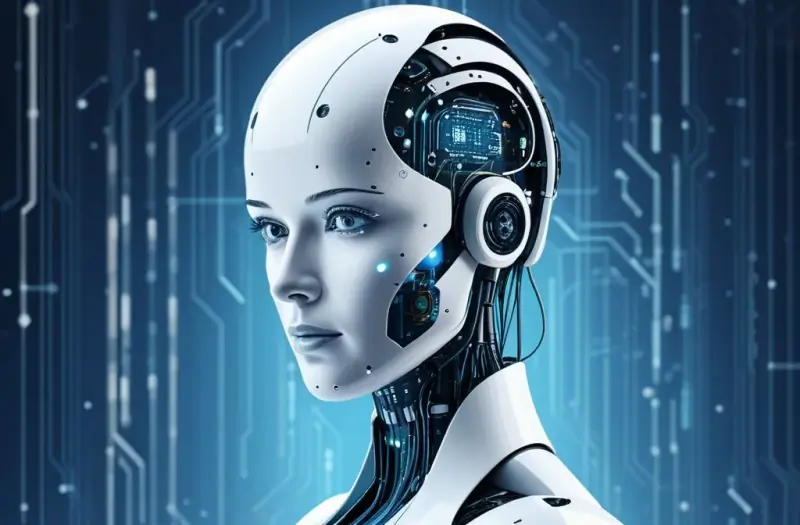
While the AI-driven future holds immense promise, it also presents significant ethical challenges that must be addressed. As AI systems become more autonomous and integrated into daily life, questions around privacy, bias, and accountability will become increasingly important.
Privacy Concerns
One of the primary concerns with AI is privacy. AI systems often require vast amounts of data to function effectively, raising questions about how this data is collected, stored, and used. Ensuring that AI systems respect user privacy will be crucial as the technology continues to evolve.
Addressing Bias in AI
AI systems are only as good as the data they are trained on. If this data contains biases, the AI will likely perpetuate these biases, leading to unfair outcomes. Developing strategies to identify and mitigate bias in AI systems will be essential to ensuring that AI benefits all segments of society.
Accountability and Transparency
As AI systems become more complex, understanding how they make decisions can be challenging. This lack of transparency can make it difficult to hold AI accountable when things go wrong. Developing frameworks for AI accountability and transparency will be critical in building trust in these systems.
The Future of AI: What to Expect
Looking ahead, the AI evolution will continue to accelerate, with several key trends shaping the future of technology.
AI and Human Augmentation
One of the most exciting areas of AI development is human augmentation. AI has the potential to enhance human capabilities, from improving cognitive function to assisting with physical tasks. In the future, we may see AI-powered exoskeletons that help people with disabilities regain mobility or AI-driven cognitive aids that enhance memory and learning.
AI in Education
AI is also set to transform education. Personalized learning platforms powered by AI can adapt to the needs of individual students, providing tailored instruction that maximizes learning outcomes. As AI continues to evolve, these platforms will become even more sophisticated, helping to close the education gap and provide equal opportunities for all students.
AI in the Environment
AI will play a crucial role in addressing environmental challenges. From optimizing energy use to predicting and mitigating the impacts of climate change, AI will be instrumental in creating a sustainable future. By analyzing vast amounts of environmental data, AI can help us make more informed decisions about how we manage natural resources and protect the planet.
AI and the Future of Work
The future of work will also be profoundly influenced by AI. While some jobs may be automated, AI will also create new opportunities for employment and entrepreneurship. As AI takes over routine tasks, humans will be free to focus on more creative and strategic activities, leading to a more fulfilling and productive workforce.
FAQs
What are the main challenges of AI in the future?
The main challenges include addressing ethical concerns such as privacy, bias, and accountability, as well as ensuring that AI systems are transparent and fair.
How will AI impact jobs in the future?
While AI may automate certain jobs, it will also create new opportunities for employment and innovation, allowing humans to focus on more creative and strategic tasks.
What are some potential applications of AI in healthcare?
Potential applications include early disease detection, personalized medicine, and AI-assisted surgery, all of which promise to improve patient outcomes and revolutionize healthcare delivery.
How can AI help address environmental challenges?
AI can optimize energy use, predict environmental changes, and support sustainable practices, helping us make more informed decisions about managing natural resources.
What role will AI play in education?
AI will transform education by providing personalized learning experiences, helping to close the education gap, and offering equal opportunities for all students.
Conclusion
As we look to the future, it is clear that AI will play a pivotal role in shaping the technologies and societies of tomorrow. From revolutionizing healthcare and business to addressing ethical challenges and environmental concerns, the future of AI is bright and full of possibilities. By embracing these advancements and addressing the challenges, we can ensure that AI drives positive change and creates a better world for future generations.
Key Takeaways
- AI is rapidly evolving, with significant advancements in machine learning, natural language processing, and computer vision.
- The future of AI in healthcare, business, and education is promising, with the potential to revolutionize these sectors.
- Ethical considerations, such as privacy, bias, and accountability, are critical to the responsible development of AI.
- AI will play a crucial role in addressing environmental challenges and creating a sustainable future.
- The future of work will be shaped by AI, offering new opportunities for creativity and innovation.
The future is bright, and AI is leading the way in transforming today’s technology into the solutions of tomorrow.

The Rise of Celebrity Activism in Sports and Entertainment
From stadiums to red carpets, public figures are using their visibility to spark change, start conversations, and pressure institutions. Whether it’s advocating for racial justice, environmental reforms, or mental health awareness, these icons leverage their followings to amplify underrepresented causes. But why has this shift become so pronounced in recent years? What changed in our cultural fabric to allow—and even expect—our favorite stars to take a stand?
Have we reached a point where staying silent is no longer acceptable for the famous? And what does this mean for the relationship between celebrity influence and real-world impact? Let’s explore how high-profile activism is reshaping both the sports arena and the entertainment stage.
The Evolution of Celebrity Activism: From Silent Supporters to Vocal Leaders
In decades past, celebrity involvement in politics or social issues was rare and often discouraged. Stars feared alienating their fanbase or jeopardizing endorsement deals. However, history still offers early glimpses of outspoken figures—Muhammad Ali’s refusal to be drafted into the Vietnam War and Jane Fonda’s anti-war protests being prime examples of courageous celebrity activism.
Fast forward to today, and this hesitance has been replaced with assertiveness. What once lived in private circles now dominates public feeds. With the explosion of social media, celebrities have direct access to millions and control their own narratives. This direct-to-audience format bypasses traditional media filters, enabling entertainers and athletes to champion causes like Black Lives Matter, LGBTQ+ rights, or climate change without waiting for a journalist to write the story.
This shift hasn’t been just about volume—it’s about substance. The messaging is clearer, the intentions more focused, and the outcomes more impactful. Many celebrities are now engaging in policy discussions, funding grassroots organizations, and even running for office. In short, the role of the modern celebrity has evolved from a detached figurehead to an active participant in shaping society.
Sports Activism: When Athletes Step Off the Field and Into the Fight

Athletes have always had a unique position in society. Their global platforms, combined with their physical achievements, lend them credibility that few others enjoy. Over the past decade, we’ve seen a surge in sports activism led by famous athletes unafraid to challenge the status quo.
Take Colin Kaepernick, whose kneeling protest during the national anthem sparked both outrage and inspiration. His stance against racial injustice became a cultural touchstone, igniting broader debates on police brutality and patriotism. Despite facing backlash and losing his NFL career, Kaepernick remains a symbol of athlete advocacy and star power activism.
Likewise, basketball icons like LeBron James have gone beyond the court, founding schools, producing documentaries on systemic inequality, and confronting political figures. Their influence extends far beyond sports, proving that celebrity-driven social movements can start in a locker room and ripple out globally.
Athlete activism trends reveal that fans now expect more than performance—they expect purpose. These sports personalities are no longer seen as apolitical role models but as agents of change, using their platforms to challenge injustice head-on.
Hollywood Activism and Entertainment Industry Advocacy
In the entertainment industry, Hollywood activism has become a defining trait of modern stardom. Stars now step onto award stages armed with more than thank-you notes—they bring messages of solidarity, resistance, and reform. Entertainment icons’ activism has transformed red carpets into platforms for protest and awareness.
One landmark moment was the Time’s Up movement, where actors and actresses wore black at the Golden Globes to protest sexual harassment and gender inequality. This was more than a symbolic gesture—it led to legal defense funds and inspired changes in workplace policy across industries.
Entertainment stars’ activism doesn’t stop at awards shows. Many have taken to producing or starring in socially conscious films, partnering with advocacy organizations, or launching their own foundations. Whether it’s Leonardo DiCaprio’s relentless environmental efforts or Angelina Jolie’s work with refugees, these celebrities use their influence to push humanitarian agendas forward.
The entertainment industry’s advocacy efforts are not without critics—some question the authenticity or effectiveness of such campaigns. However, data shows that celebrity philanthropy and endorsements for causes can significantly boost donations, public awareness, and policy attention.
The Power and Pitfalls of High-Profile Activism
While celebrity activism offers undeniable benefits, it’s not without its pitfalls. One major concern is performative activism—when stars speak out more for public praise than true impact. In such cases, their efforts can dilute serious causes or even backfire.
Another challenge is backlash. Celebrity influence on society can be polarizing, especially when stars align themselves with controversial issues. The internet can quickly become a battleground, with fans divided over entertainers’ political influence. Cancel culture adds another layer of complexity, punishing missteps while sometimes discouraging nuanced discussions.
Yet, when done authentically, celebrity humanitarian efforts and sports figures’ social change campaigns do more good than harm. By humanizing global issues and drawing attention to underrepresented voices, celebrities help bridge the gap between advocacy and public action.
To navigate these challenges, stars increasingly partner with credible organizations, undergo activism training, and involve themselves in long-term efforts. These strategies help ensure that their advocacy isn’t just loud—it’s lasting.
What’s Next: The Future of Celebrity-Driven Social Movements
The trajectory of celebrity-driven social movements suggests one thing: activism is here to stay in the spotlight. With the rise of new platforms like TikTok, Twitch, and decentralized media, entertainers and athletes can now connect with niche audiences in ways unimaginable a decade ago.
Younger celebrities, in particular, are stepping into activist roles from the start of their careers. They’re digitally native, socially aware, and unafraid to merge branding with beliefs. Expect this trend to intensify, with stars continuing to reshape how we think about fame and responsibility.
As audiences, we also have a role to play. We must stay informed, engage critically, and hold both institutions and influencers accountable. In doing so, we help shape an environment where high-profile activism becomes a force for genuine, positive transformation.
FAQs
What is celebrity activism?
Celebrity activism refers to the involvement of public figures—like athletes and entertainers—in political, social, or humanitarian causes.
Why is celebrity activism on the rise?
Social media has enabled celebrities to communicate directly with the public, allowing them to advocate for causes without traditional media gatekeepers.
How does sports activism differ from Hollywood activism?
Sports activism often focuses on racial justice and community empowerment, while Hollywood activism tends to spotlight issues like gender rights, climate change, and humanitarian aid.
Is celebrity influence on society always positive?
Not necessarily. While many celebrities make meaningful impacts, others risk promoting causes superficially or spreading misinformation.
Can celebrity endorsements for causes actually make a difference?
Yes. Studies show that celebrity endorsements can boost donations, increase media coverage, and sway public opinion on social issues.

Top 10 Healthcare AI Innovation Transforming Medicine
At the heart of this transformation is Healthcare AI—a field where machine learning models, neural networks, and intelligent systems collaborate with clinicians to make healthcare more precise, efficient, and personalized. But with such rapid change, how do we separate hype from real, transformative innovation?
We’re about to explore the Top 10 Healthcare AI innovations that are not only revolutionizing medicine today but paving the way for a smarter, more responsive healthcare future. Ready to find out which AI breakthroughs are making the biggest impact—and how they might save lives? Let’s dive in.
1. AI for Medical Imaging and Radiology
AI is fundamentally reshaping how we interpret medical images. Traditionally, radiologists spent hours analyzing X-rays, MRIs, and CT scans—but AI-powered medical imaging tools now process these images faster and with incredible accuracy.
Deep learning algorithms can detect early signs of diseases like cancer, pneumonia, and fractures. For instance, Google’s DeepMind developed an AI that outperformed radiologists in breast cancer detection by reducing false positives and negatives.
AI Medical Imaging is being deployed across the U.S., helping hospitals reduce diagnostic errors and shorten patient wait times. As a result, we’re entering an era where radiologists can act more as consultants—interpreting and validating AI findings instead of starting from scratch.
Key Benefits:
- Faster diagnostic turnaround times
- Reduced human error
- Greater image interpretation consistency
2. AI-Powered Virtual Health Assistants
Imagine a friendly AI assistant reminding patients to take medication, monitor symptoms, or even schedule appointments—welcome to the world of AI Health Assistants.
These digital tools combine Healthcare Natural Language Processing with real-time data to offer personalized support. For example, Florence is a virtual nurse chatbot that educates patients and tracks their vitals. Meanwhile, companies like Babylon Health use AI chatbots to triage symptoms before a human consult.
These tools significantly reduce the administrative burden on healthcare providers, enhance patient engagement, and ensure timely interventions for chronic conditions.
Top Use Cases:
- Medication adherence reminders
- Post-surgical care instructions
- 24/7 symptom monitoring
3. Precision Medicine with AI-Based Treatment Plans

Personalized Medicine AI is revolutionizing how treatments are tailored to individual patients. No more one-size-fits-all approaches—instead, AI analyzes genetic profiles, lifestyle data, and clinical history to suggest optimal therapies.
By leveraging Healthcare Data Analytics and predictive algorithms, platforms like IBM Watson Health help oncologists design custom cancer treatment plans. Similarly, Tempus uses AI in Genomics to determine how patients might respond to different drugs.
Benefits include:
- Higher treatment success rates
- Reduced side effects
- Faster time-to-therapy decisions
Example Table: Impact of AI on Precision Oncology
| Approach | Traditional Oncology | AI-Enabled Precision Oncology |
|---|---|---|
| Time to treatment | Weeks | Days |
| Treatment personalization | Limited | High |
| Data considered | Clinical notes | Genomic, lifestyle, EHR |
4. AI in Drug Discovery and Development
Drug discovery is often a slow, expensive process—but AI in Drug Discovery is accelerating breakthroughs by predicting molecule behavior, simulating drug interactions, and even repurposing existing medications.
Startups like Insilico Medicine and Atomwise are using Neural Networks in Healthcare to identify new compounds and forecast their effectiveness in days—not months.
This approach proved vital during the COVID-19 pandemic when AI helped researchers identify potential antiviral compounds in record time.
Advantages:
- Reduced R&D costs by up to 40%
- Faster clinical trial design
- Higher probability of FDA approval
5. AI for Medical Diagnosis and Clinical Decision Support
At the core of AI-Powered Medicine is its ability to assist doctors in making accurate, data-driven decisions. From diagnosing rare genetic disorders to identifying sepsis early, AI Clinical Decision Support systems are invaluable.
Tools like Aidoc analyze medical images for urgent conditions such as strokes, while apps like SkinVision screen for melanoma using smartphone cameras.
By integrating with Electronic Health Records (EHRs), these systems provide real-time alerts, reducing diagnostic delays and improving patient outcomes.
Examples of Clinical AI Applications:
- Early stroke detection
- Diabetic retinopathy analysis
- Sepsis alert systems
6. AI in Surgery and Robotic Assistance
Healthcare Robotics are redefining surgical precision. Robotic systems powered by AI—such as the da Vinci Surgical System—allow surgeons to perform complex procedures with enhanced dexterity and reduced invasiveness.
By integrating AI for Health Data Security, these systems can also analyze prior procedures and suggest adjustments to improve outcomes. Some even learn from surgeons’ techniques, improving over time.
The result? Faster recovery, less pain, and better post-operative outcomes.
Key Innovations:
- Real-time feedback during surgery
- Predictive analytics for surgical planning
- Enhanced motor control and precision
7. Predictive Healthcare AI and Risk Stratification

What if we could identify health risks before symptoms appear? Healthcare Predictive Analytics makes this possible by using AI to forecast patient deterioration, hospital readmission, or even disease outbreaks.
Healthcare systems use platforms like Jvion or Health Catalyst to pinpoint high-risk patients for proactive interventions. These models pull from AI in Public Health data and EHRs to create personalized risk scores.
Such innovations are particularly valuable in Chronic Disease Management, helping reduce ER visits and improving care quality.
Applications Include:
- Predicting heart failure risk
- Monitoring mental health relapse
- Flagging potential opioid misuse
8. AI in Telemedicine and Remote Monitoring
As virtual care gains traction, AI in Telemedicine is becoming essential. From chat-based triage to remote diagnostics, AI enhances accessibility while maintaining quality.
Wearable devices combined with AI for Wearable Health Tech analyze heart rate, sleep patterns, and glucose levels in real time. Platforms like Biofourmis even adjust treatment plans based on patient data trends.
With AI for Patient Care, clinicians can deliver precision care from afar—especially beneficial in rural or underserved areas.
Benefits:
- Continuous, real-time patient monitoring
- Reduced hospital admissions
- Improved chronic disease control
9. Cognitive Computing in Mental Health and Psychology
Mental health care is undergoing a transformation thanks to AI for Mental Health. Tools like Woebot and Wysa provide CBT-based interventions through chat interfaces, while AI models screen for depression or PTSD using voice, text, or facial cues.
By applying Cognitive Computing in Medicine, these tools personalize therapy and ensure early detection—something that’s often missed in traditional settings.
These innovations not only reduce stigma but also improve access and engagement, especially for young adults and remote populations.
Key Features:
- 24/7 support
- Non-judgmental, anonymous interactions
- Personalized cognitive-behavioral therapy
10. AI for Health Data Security and Compliance
With more data comes greater risk. AI for Health Data Security is crucial in protecting sensitive patient information. Advanced algorithms monitor EHR access patterns, detect anomalies, and block cyber threats in real time.
Companies like Darktrace use machine learning to develop security baselines and respond to breaches autonomously. With increasing HIPAA scrutiny, hospitals and insurers are turning to AI in Health Insurance and IT for compliance.
Key Outcomes:
- Real-time threat detection
- Regulatory compliance assurance
- Reduced risk of data breaches
FAQs
How is AI being used in healthcare today?
AI is being applied across medical imaging, diagnosis, drug discovery, surgery, mental health, virtual assistants, and remote monitoring to improve care delivery and efficiency.
What are the main benefits of Healthcare AI?
Benefits include faster diagnostics, personalized treatment plans, reduced operational costs, better patient engagement, and enhanced decision-making.
Is AI replacing doctors?
No. AI supports clinicians by augmenting their capabilities. It reduces routine workload and helps them make more informed decisions, but it doesn’t replace human judgment.
How secure is patient data with AI systems?
Leading AI platforms use encryption, access control, and anomaly detection to ensure health data security. Compliance with HIPAA and other regulations is standard.
Can AI help in managing chronic conditions?
Yes. AI tools can monitor patient data in real-time, predict flare-ups, and suggest interventions—improving outcomes for chronic disease patients.
Conclusion
As we’ve seen, Healthcare AI is more than a buzzword—it’s a catalyst reshaping every layer of the medical ecosystem. From diagnosis and surgery to mental health and patient engagement, these innovations are transforming the way we think about medicine.
The pace of change is only accelerating. As we look ahead, it’s clear that embracing these intelligent systems isn’t just a choice—it’s a necessity for healthcare providers who want to deliver faster, safer, and more personalized care.
Key Takeaways
- Healthcare AI is revolutionizing medical imaging, diagnosis, treatment planning, and patient care.
- Innovations like AI in Drug Discovery, Predictive Healthcare AI, and AI for Health Data Security are enhancing outcomes and reducing costs.
- Adoption of AI-Powered Virtual Health Assistants and AI in Telemedicine is improving accessibility and efficiency in healthcare delivery.
- The integration of AI into clinical workflows empowers medical professionals with data-driven tools for smarter decision-making.
- Security and ethical use of AI in Healthcare remain top priorities for long-term trust and compliance.

Top 10 Promising Business Ideas to Thrive in 2025
Have you ever wondered what businesses will dominate the market in 2025? As technology advances and consumer behavior shifts, some industries are poised for exponential growth, while others may struggle to keep up. The key to success is identifying trends early and positioning ourselves in the right sector before the competition becomes overwhelming.
We are living in a time of rapid transformation, where AI, sustainability, and digital innovations are reshaping the way we work and live. Businesses that adapt to these changes will thrive, while those that resist may fade into obscurity. The good news? Opportunities abound for entrepreneurs willing to take strategic risks and embrace innovation.
So, what are the best business ideas that promise high growth and profitability in 2025? We’ve identified ten emerging industries that present exciting opportunities for aspiring entrepreneurs and established business owners alike. These industries align with future consumer demands and technological advancements, ensuring long-term sustainability. Let’s explore the top promising business ideas that could define success in 2025.
1. AI-Powered Automation Services
Artificial intelligence is revolutionizing industries, and businesses leveraging AI-powered automation will gain a competitive edge. From chatbots that enhance customer service to AI-driven data analytics that optimize decision-making, the demand for AI solutions is skyrocketing.
Companies are actively seeking ways to cut costs, improve efficiency, and enhance productivity. AI-powered automation services cater to this demand by offering solutions that streamline operations in healthcare, finance, logistics, and even creative fields. The potential applications are vast, making this an ideal sector for entrepreneurs looking to tap into a booming market.
Those entering this space can offer AI consulting, develop automation tools, or provide AI integration services for businesses transitioning to intelligent workflows. With AI adoption accelerating, this sector presents a lucrative opportunity for long-term growth.
2. Sustainable and Eco-Friendly Products
The push for sustainability is stronger than ever, with consumers actively seeking environmentally friendly alternatives. From biodegradable packaging to sustainable fashion, green businesses are thriving and will continue to gain traction in 2025.
Governments worldwide are enforcing stricter regulations on waste management and carbon emissions, driving companies to adopt sustainable practices. Entrepreneurs who develop eco-conscious products, such as zero-waste household items or ethical fashion brands, can capitalize on this growing trend.
Starting an eco-friendly business not only benefits the environment but also builds strong customer loyalty. With sustainability becoming a priority for businesses and consumers alike, now is the perfect time to invest in green solutions.
3. Personalized Health and Wellness Tech
Health and wellness have taken center stage, and personalized solutions are leading the charge. Consumers are shifting from generic fitness and diet plans to AI-driven, data-backed health technologies that cater to individual needs.
Wearable fitness trackers, smart health monitoring devices, and AI-powered nutrition plans are some of the innovative ventures shaping this industry. The rise of telehealth and remote patient monitoring also creates opportunities for businesses offering personalized healthcare services.
By developing a business in health tech, whether through wearable innovations or AI-driven wellness platforms, entrepreneurs can position themselves at the forefront of a high-growth industry that improves lives while generating substantial profits.
4. E-Learning and Digital Skills Training

The future of education is digital, with e-learning platforms witnessing unprecedented growth. As automation and AI reshape industries, professionals are upskilling to remain competitive, creating a massive demand for online courses and digital training programs.
Businesses that provide niche online courses—ranging from coding and cybersecurity to digital marketing and AI literacy—will thrive. Corporate training solutions, career coaching, and interactive learning experiences are also gaining momentum.
Starting an e-learning business requires minimal overhead compared to traditional education models, making it an attractive option for entrepreneurs. The key is to offer high-quality, engaging, and industry-relevant content that equips learners with practical skills.
5. Virtual Reality (VR) and Augmented Reality (AR) Experiences
The immersive technology market is booming, with VR and AR applications expanding beyond gaming into industries like real estate, healthcare, and retail. Businesses that create engaging VR/AR experiences for education, tourism, and entertainment will find a strong market in 2025.
Real estate agents are using virtual property tours, medical professionals are training with VR simulations, and retailers are offering AR-powered shopping experiences. The potential for innovation in this space is vast, making it an exciting opportunity for entrepreneurs.
Developing AR/VR applications, offering virtual tourism experiences, or creating training simulations are just a few ways to enter this fast-growing industry. As technology becomes more accessible, the demand for immersive digital experiences will only increase.
6. Subscription-Based Services
Subscription models have become a preferred way for consumers to access products and services. From streaming platforms to personalized subscription boxes, businesses that offer recurring value are seeing long-term customer retention.
The key to success in this market is finding a niche. Whether it’s a curated book subscription, a healthy meal kit service, or AI-driven personalized content, subscription-based businesses provide convenience and exclusivity that keep customers engaged.
With predictable revenue streams and high customer loyalty, subscription services are a smart investment for entrepreneurs looking to build a sustainable business in 2025.
7. Smart Home and IoT Solutions
The smart home industry is evolving rapidly, with consumers embracing IoT-enabled devices for convenience, security, and energy efficiency. Entrepreneurs who develop smart home solutions, such as automated security systems or energy-efficient appliances, can tap into a thriving market.
The demand for home automation products continues to rise as technology integrates deeper into everyday life. Companies offering installation services, IoT consulting, or custom smart home solutions will see high demand in the coming years.
As homes become more connected, businesses that provide seamless integration of smart devices and AI-powered home management solutions will lead the next wave of innovation.
8. Remote Work Solutions and Co-Working Spaces
The remote work revolution is here to stay, and businesses that support distributed teams will thrive. Entrepreneurs can develop virtual collaboration tools, create co-working spaces tailored for hybrid workers, or offer services that enhance remote productivity.
As more companies adopt remote-first policies, the demand for virtual office solutions, team management software, and ergonomic home office equipment is growing. Offering solutions that improve work-life balance and efficiency can lead to significant business success.
Whether it’s developing an AI-powered productivity tool or launching a co-working hub designed for freelancers and startups, businesses catering to the future of work will see rapid growth.
9. Digital Marketing and Content Creation Services
Businesses are doubling down on their digital presence, making digital marketing a must-have service in 2025. Companies that specialize in social media marketing, SEO, and AI-driven content creation will continue to see high demand.
Video content, influencer marketing, and personalized advertising strategies are shaping the future of digital marketing. Entrepreneurs who build agencies focused on data-driven campaigns and AI-powered analytics will lead the industry.
With businesses investing more in online visibility, digital marketing agencies and content creators have a golden opportunity to scale their operations and establish long-term success.
10. Electric Vehicles (EV) and Charging Infrastructure
The electric vehicle industry is accelerating, with global efforts to reduce carbon emissions driving the shift toward sustainable transportation. Businesses focusing on EV-related products and services will benefit from this rapid transition.
Opportunities include manufacturing EV components, developing battery recycling solutions, or launching EV charging stations in urban and suburban areas. Governments and corporations are investing heavily in EV infrastructure, making this an attractive space for entrepreneurs.
As electric cars become mainstream, businesses that support the ecosystem—whether through hardware, software, or energy solutions—will thrive in the coming years.
Final Thoughts
The future belongs to those who embrace change and seize new opportunities. As we step into 2025, these promising business ideas offer incredible potential for success. Whether you’re passionate about technology, sustainability, or digital services, there’s a thriving industry waiting for you.
Now is the time to take action. Which of these ideas resonate

Top AI Dev Internship Opportunities for Aspiring Tech Talent
What if your first internship could shape the future of artificial intelligence—and your career with it?
As we navigate through the dynamic world of technology, it’s becoming increasingly clear that artificial intelligence (AI) is no longer a niche field. From self-driving cars to personalized digital assistants, AI is touching every facet of modern life. And for those of us just starting out, an internship in AI development isn’t just a learning experience—it’s a launchpad.
We’ve all wondered: “Am I skilled enough to compete for top AI internships?” or “Which internship will give me real-world experience and not just have me fixing bugs?” These are valid questions. That’s why we’ve researched and compiled the top AI dev internship opportunities tailored for aspiring minds ready to step into the world of machine learning, neural networks, and intelligent systems.
Why AI Development Internships Are the Game Changers
An AI Development Internship is more than a temporary job—it’s a glimpse into the future of tech. Companies today are searching for fresh minds who can contribute to breakthroughs in areas like natural language processing, deep learning, and robotics.
These internships offer:
- Exposure to real-world AI models and systems
- Mentorship from leading experts in artificial intelligence
- A hands-on approach to AI programming and algorithm design
Whether you’re coding an intelligent chatbot or optimizing a neural network, you’ll be solving problems that have the potential to impact millions. From Silicon Valley startups to tech giants like Google and NVIDIA, AI innovation internships are redefining how we approach technology development.
The right internship gives us more than just a line on a resume—it gives us confidence, experience, and credibility. In this fast-paced industry, that’s everything.
Top Companies Offering AI Dev Internships

Let’s take a closer look at some of the most exciting internship programs available right now. These companies are known for cutting-edge research, robust AI pipelines, and strong mentorship cultures.
1. Google AI Residency & Internship Program
Google’s AI division is home to pioneers in machine learning, natural language processing, and computer vision. Interns work directly with AI researchers and engineers on impactful projects.
- Duration: 12 weeks (Summer)
- Roles: AI Research Intern, AI Model Training Intern
- Locations: Primarily in California
Quote: “Interning at Google AI gave me the opportunity to publish research and learn from world-class experts.” — Former Intern
2. NVIDIA Deep Learning Internship
NVIDIA isn’t just about GPUs—it’s a powerhouse in deep learning and intelligent systems. Interns often work on robotics, autonomous vehicles, or AI algorithm design.
- Duration: 10–12 weeks
- Roles: AI Engineering Intern, Neural Networks Internship
- Benefits: Competitive pay, project ownership, networking with AI scientists
3. Meta (Facebook) AI Internship
Meta offers roles that span from AI software intern positions to AI research internships in speech recognition, AR/VR, and computer vision.
- Duration: 12 weeks
- Roles: AI Programming Intern, NLP Intern, Computer Vision Intern
- Focus: Research + implementation
These companies look for more than grades. They want curious, motivated learners who aren’t afraid to dive deep into AI innovation.
Skills You Need to Land a Great AI Internship
Landing a top AI tech intern role is competitive, but not impossible. We just need to focus on building the right mix of skills:
Technical Skills:
- Python, TensorFlow, PyTorch, or Keras experience
- Familiarity with data structures, algorithms, and object-oriented programming
- Comfort with datasets, model training, and evaluation
Academic Foundation:
- Courses in machine learning, deep learning, statistics, data science
- Research papers or projects in AI-related fields
Soft Skills:
- Collaboration, since AI is rarely built in a silo
- Curiosity and willingness to learn fast
- Strong communication to explain complex concepts simply
Tip: Build a portfolio on GitHub. A well-documented project is more valuable than a polished resume. Show them what you can do.
AI Internship Roles by Specialization
Not every AI internship is the same. Here’s a breakdown by focus area to help you choose the right fit:
| Role | Focus Area | Common Tools/Languages | Companies Hiring |
|---|---|---|---|
| AI Research Intern | Academic & experimental AI | Python, Jupyter, Scikit-learn | Google, Meta, OpenAI |
| NLP Intern | Text & speech understanding | NLTK, SpaCy, HuggingFace | Amazon, Grammarly, Cohere |
| Deep Learning Intern | Neural networks, deep architectures | PyTorch, TensorFlow | NVIDIA, Tesla, Apple |
| Robotics AI Intern | AI for movement & control systems | ROS, C++, OpenCV | Boston Dynamics, iRobot |
| AI Algorithm Intern | Optimizing algorithms & model efficiency | Python, C++, CUDA | Intel, Microsoft, Salesforce |
| AI Solutions Intern | Product-focused AI applications | JavaScript, APIs, SQL | IBM, Oracle, SAP |
Choose the one that matches your interest—whether it’s theoretical research or applied AI for solving real-world problems.
Best Time to Apply for AI Internships

Timing is everything. Most top companies open internship applications 6–9 months in advance. Here’s a typical timeline to follow:
-
Summer Internships (May–August)
- Application opens: August–October (Previous Year)
- Interviews: October–January
-
Fall Internships (September–December)
- Application opens: March–May
-
Spring Internships (January–April)
- Application opens: August–October (Previous Year)
Pro Tip: Set up job alerts on platforms like LinkedIn, Internships.com, and AngelList. Some opportunities are only live for a few days.
How to Stand Out in Your AI Internship Application
To stand out among thousands of AI internship applications, we must go beyond the basics. Here’s how:
- Tailor your resume to each role—highlight relevant AI or coding projects
- Write a custom cover letter that shows passion for artificial intelligence
- Get recommendation letters from professors or project mentors
- Contribute to open-source AI projects—it demonstrates community involvement and initiative
Bonus: If you’ve published a paper or written a blog post on AI, include it! It’s a strong signal that you’re thinking critically about the space.
FAQs
What is the difference between an AI Dev Internship and a Data Science Internship?
AI dev internships focus more on building models and algorithms, while data science internships may involve statistical analysis, visualization, and business intelligence.
Do I need a Master’s degree to get an AI Internship?
Not necessarily. Many companies hire undergraduates as long as you have strong coding skills and an AI-focused portfolio.
What projects should I include in my AI portfolio?
Projects like chatbot development, computer vision apps, model training experiments, or open-source contributions are great examples.
Are remote AI internships common?
Yes, especially post-2020. Many companies offer hybrid or fully remote internship options.
How important are certifications for AI internships?
Certifications can help, but real projects and internships carry more weight. They’re a nice-to-have, not a must-have.
Conclusion
AI is shaping the future—and there’s no better way to enter this space than through a strategic internship. We’ve seen that the best internships offer a blend of learning, challenge, and mentorship, setting the stage for long-term career success.
As aspiring developers, we should aim for roles that allow us to experiment with AI programming, contribute to intelligent systems, and refine our understanding of neural networks and deep learning. The journey isn’t easy, but it’s absolutely worth it.
Let’s not just consume AI—let’s help build it.
Key Takeaways
- Top AI internships offer practical experience in machine learning, NLP, computer vision, and more.
- Companies like Google, NVIDIA, and Meta are ideal for AI development opportunities.
- Building a strong portfolio is essential—especially projects that reflect real-world AI use cases.
- Timing matters: Apply early, tailor your applications, and stay consistent.
- Skills like Python, TensorFlow, and curiosity are your ticket into the AI future.

Top AI Startup Funding Trends in 2025 You Must Know Now
In 2025, AI startup funding trends are not just about who’s getting the money, but why and how they’re getting it. The buzzwords have shifted from general AI capabilities to generative AI, ethical governance, and cross-industry impact. We’re witnessing a unique convergence of technology, finance, and policy that’s opening new doors for founders—and closing others. This article dives deep into the AI startup funding trends in 2025, giving you expert insights into the forces shaping this high-stakes ecosystem.
So, here’s the big question: Are the AI startups raising billions in 2025 truly solving tomorrow’s problems—or just fueling today’s hype?
The Rise of Specialized AI Funds
General VC firms are no longer the sole players in artificial intelligence funding. In 2025, we’re seeing the rise of specialized AI funds that focus exclusively on deep learning, NLP, and automation technologies. These niche funds offer tailored mentorship, industry connections, and technical expertise beyond capital.
One notable trend is the creation of AI-only accelerator programs, such as AI Forge and NeuroSpark Labs, which combine seed funding with infrastructure, GPU access, and domain-specific training. These programs are particularly attractive to machine learning startup founders who need more than just financial backing.
Case in point: NeuroSpark Labs backed 25 startups in Q1 2025 with an average seed round of $3.5 million, nearly double the 2024 average. This signals that specialized support is becoming a major differentiator in AI startup success.
AI Unicorn Funding Trends and Mega Rounds
The AI unicorn count has skyrocketed, with over 180 companies now valued at $1 billion or more. Unlike earlier waves, 2025 unicorns are defined less by consumer AI apps and more by infrastructure and enterprise automation platforms.
Mega rounds—Series C and beyond—have become more strategic. Investors are demanding clear paths to monetization, robust regulatory compliance, and scalable architecture. Unicorns like SynapticOps (AI for robotic supply chains) and Cautio (AI-powered legal compliance) raised $500M+ rounds, thanks to high revenue growth and defensible tech moats.
Key insight: These mega rounds often involve multi-stage syndicates comprising corporate VCs, sovereign funds, and deep tech investment consortiums. The diversification minimizes risk while amplifying domain influence.
AI Seed Funding Insights and First-Time Founder Advantage
AI seed funding has experienced a resurgence in 2025, especially among first-time founders from academia. With universities spinning off IP-rich projects and open-source AI libraries democratizing experimentation, the barrier to entry has significantly dropped.
Y Combinator, Techstars, and Antler have tailored programs to attract these founders. A wave of NLP and bioAI startups led by PhD students from MIT, ETH Zurich, and Stanford has captured early-stage investor interest.
Noteworthy trend: First-time founders with compelling pilot results and a deep tech thesis are now raising $1M–$2M rounds at higher pre-seed valuations, aided by AI-savvy angel syndicates.
Generative AI Funding Matures

In 2023 and 2024, generative AI funding was often seen as speculative. But in 2025, it’s evolved into a serious investment category, with a focus on B2B SaaS, synthetic data generation, and co-creation platforms.
Investors now prefer generative AI startups that solve tangible business problems, such as AI-generated code testing, procedural game design, and multi-lingual content production at scale. Companies like CodeMuse and Synthesio have shown revenue multiples that outpace traditional SaaS.
The funding shift also reflects maturity metrics: GTM readiness, LLM training cost efficiency, and the ability to avoid IP infringements.
Emerging AI Funding Opportunities in Healthcare and Biotech
Healthcare AI has become one of the most funded verticals, especially post-pandemic. 2025 marks a clear shift from diagnostic tools to predictive analytics, drug discovery AI, and personalized treatment engines.
Firms like DeepCura, a startup using generative models to simulate protein folding scenarios, recently closed a $75M Series B. These kinds of companies attract cross-border funding, with capital coming from the US, EU, and Middle Eastern tech funds.
AI startup investment trends 2025 suggest that FDA-clearance-ready pipelines and compliance-aware architectures will attract premium valuations in this sector.
NLP Startup Funding Analysis
Natural Language Processing (NLP) remains a dominant theme in AI funding, especially for startups that build vertical-specific NLP engines.
Startups focusing on financial intelligence, legal contract analysis, and medical language processing are winning investor trust. A standout is LexiParse, which raised $65M for its compliance NLP engine tailored to US federal regulations.
Investors now seek:
- Tokenization optimization for cost efficiency
- Multi-modal capabilities beyond text
- Partnerships with industry-specific SaaS platforms
This signals a demand for NLP engines that do more than chat—they interpret, advise, and act.
Deep Learning Financial Trends and Infrastructure Investment
Deep learning models have become computationally expensive. As a result, 2025 has seen record investment in infrastructure startups—companies that optimize training pipelines, manage data lakes, or offer AI-specific cloud orchestration.
Companies like Gravix, which raised $110M to reduce GPU inference costs by 40%, are reshaping how capital flows in this segment.
A growing slice of funding also targets open-source deep learning frameworks with monetizable plug-in ecosystems, showing a shift towards more collaborative development paths.
The Surge of Predictive Analytics Investments
Predictive analytics isn’t new—but its application in real-time forecasting for climate, logistics, and cybersecurity is drawing attention.
VCs now prefer startups that apply predictive AI in non-traditional industries, like agri-tech, water management, and disaster preparedness. Seed rounds are accompanied by public sector grants, creating hybrid capital stacks.
Investors want:
- Sensor integration capabilities
- Real-world data partnerships
- Government compliance certifications
These differentiators make predictive analytics a low-competition, high-impact funding niche in 2025.
Automation Startup Capital and Cross-Industry AI

Automation is moving beyond manufacturing and into knowledge work. Startups automating contract review, financial auditing, and even R&D reporting are now attracting institutional funding.
For example, AutoClerk, which automates administrative HR workflows in Fortune 500 companies, raised $48M in its Series A. Automation now intersects with compliance, remote work, and ESG trends.
Strategic alliances with ERP providers and BPOs are becoming crucial to raise Series B and beyond.
AI Research Funding and Government Participation
Public funding is playing a pivotal role in 2025, especially with national AI strategies being rolled out globally. The U.S. National Science Foundation has committed over $1B through 2030 for applied AI research, with grants supporting startup collaborations.
Universities are partnering with startups under dual IP agreements, enabling tech transfer and shared equity models. Government-backed VC arms like In-Q-Tel are increasing their exposure to AI-driven defense and public safety innovations.
Startups with policy-ready technology stacks are better positioned to win such funding.
Innovative AI Financing Models: Revenue Sharing and Tokenization
Not all AI founders are chasing traditional VC rounds. In 2025, alternative funding models like revenue-based financing (RBF), SAFEs tied to tokenized royalties, and decentralized autonomous investment collectives (DAICs) are gaining traction.
These models appeal to founders who want more control, faster deployment, and community-aligned missions. AI startups with strong open-source roots often favor these models, as they align better with their user-first principles.
Venture DAOs like FundFlow and RevenueLoop have funded 100+ AI startups using smart contract escrow models.
Globalization of AI Venture Capital in 2025
AI venture capital is no longer Silicon Valley-centric. In 2025, Dubai, Singapore, London, and Tel Aviv have emerged as critical nodes in AI deal flows.
This globalization introduces currency hedging, geopolitical risk analysis, and dual-headquartering strategies for startups. U.S. startups now seek funding from cross-border syndicates to scale internationally faster.
Additionally, cross-border LP networks enable AI venture capital 2025 strategies to include regional adaptation (e.g., compliance with GDPR, PDPA, or AI Act mandates).
Machine Learning Startup Capital Allocation: Key Metrics
Funding teams are becoming more data-driven than ever before. In 2025, the following metrics dominate decision-making in early and growth-stage rounds:
- Training-to-inference cost ratio
- Retention rate of API users
- LLM fine-tuning latency per 100K tokens
- Ethical model compliance score
Startups that showcase dashboards with real-time AI performance metrics and SOC 2 + ISO certifications gain faster funding approvals.
These KPIs now form part of standard due diligence processes for AI-focused investors.
Tech Startup Financing Trends and Exit Multiples
AI startups are enjoying higher exit multiples in 2025, thanks to public market hunger for automation, LLM utility, and enterprise SaaS integrations.
M&A activity has shifted from acqui-hires to strategic rollups, especially in the analytics and AI middleware space. IPO-ready firms with $20M+ ARR and NRR >120% are seeing 12x–18x revenue multiples.
This robust exit landscape reinforces investor confidence, fueling even more early-stage capital deployment across startup ecosystem AI investments.
FAQs
What sectors are seeing the most AI funding in 2025?
Healthcare, infrastructure optimization, generative content, and legal automation are leading sectors for AI funding in 2025.
Are AI seed rounds bigger in 2025 compared to previous years?
Yes, seed rounds have increased in size, with averages ranging from $1.5M–$3.2M, especially for deep-tech and NLP startups.
Which regions outside the U.S. are gaining ground in AI venture capital?
Dubai, Singapore, and London are seeing increased deal flow and establishing strong AI-focused investment ecosystems.
How are investors evaluating AI startups in 2025?
Through technical KPIs, cost-to-serve ratios, regulatory compliance, and LLM efficiency metrics, alongside classic business traction.
Are alternative funding models viable for AI startups?
Yes, tokenized royalties, RBF, and venture DAOs are now recognized paths, especially for open-source and community-driven startups.
Conclusion
AI startup funding trends in 2025 reveal a rapidly maturing ecosystem. From specialized funds to alternative financing, from global syndicates to KPIs that prioritize ethics and performance, the landscape has evolved into a high-stakes, data-driven, and mission-oriented arena. Navigating it requires founders and investors alike to stay agile, strategic, and deeply informed.
Key Takeaways
- Specialized AI funds and accelerators are outpacing traditional VCs in delivering domain-specific support.
- Generative AI and predictive analytics now attract serious capital, but only when tied to real-world problems.
- Metrics and compliance standards dominate due diligence, making transparency a new superpower.
- Cross-border funding and decentralized financing models are broadening opportunities for diverse AI founders.
- AI unicorns in 2025 thrive on infrastructure, not hype, with scalability and defensibility at their core.
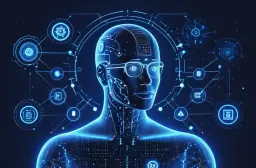
Top AI Tools for Business: Boost Efficiency & Growth
In the ever-evolving landscape of modern business, the integration of artificial intelligence (AI) is becoming increasingly vital. From streamlining operations to driving innovation, AI solutions for enterprises are transforming the way companies operate. As we navigate through this exciting era, we’re thrilled to explore the top AI tools for businesses that are leading the charge in enhancing efficiency and fostering innovation.
Understanding AI Solutions for Enterprises
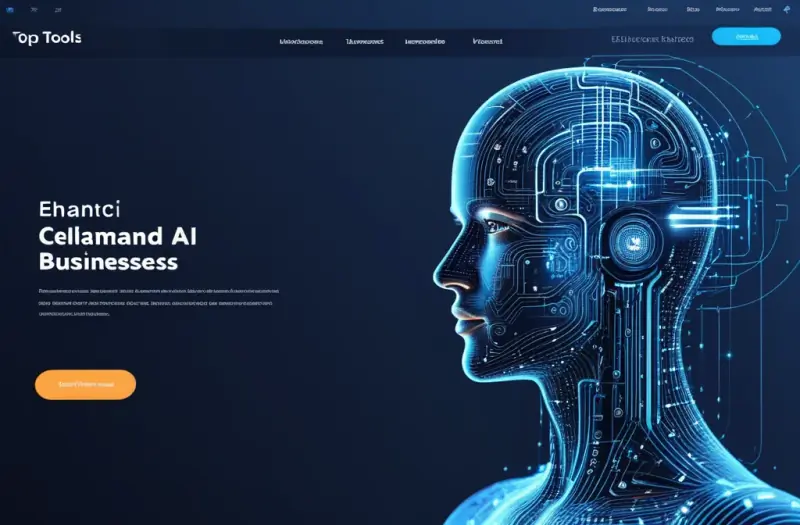
Artificial intelligence has moved beyond the realm of science fiction and into practical application, offering businesses a wide array of advanced AI systems for companies. AI-driven business solutions are designed to optimize various aspects of business operations, from customer service to data analysis. These tools leverage sophisticated algorithms and machine learning to automate tasks, predict trends, and provide actionable insights.
The Evolution of AI Tools
The journey of AI tools for businesses began with basic automation and has evolved into cutting-edge AI tools for enterprises. Early AI solutions focused on simple task automation, but today’s advanced AI systems for companies are capable of complex problem-solving and predictive analytics. This evolution reflects the growing capabilities of AI technologies, which now support a range of business functions, including marketing, finance, and human resources.
Key Benefits of AI Solutions
Business-oriented AI platforms offer several benefits, including increased efficiency and reduced operational costs. By automating routine tasks, businesses can free up valuable time and resources, allowing employees to focus on more strategic initiatives. Additionally, AI tools can enhance decision-making processes through data-driven insights, leading to more informed and accurate business strategies.
Leading AI Software for Businesses
When it comes to top AI technologies for corporations, several standout platforms have proven their worth. These leading AI software for businesses offer robust features and capabilities that cater to various business needs. Let’s delve into some of the premier AI applications for business that are making waves in the industry.
1. IBM Watson
IBM Watson is a powerhouse in the realm of AI, offering a suite of AI-driven business solutions tailored for diverse industries. Watson’s natural language processing capabilities enable businesses to analyze and understand vast amounts of unstructured data, facilitating better decision-making and customer interactions. Its machine learning algorithms also support predictive analytics, helping companies anticipate market trends and customer needs.
2. Google Cloud AI
Google Cloud AI provides a range of smart AI platforms for businesses designed to enhance various operational aspects. With tools for machine learning, data analysis, and AI model development, Google Cloud AI offers scalable solutions that can grow with your business. Its integration with other Google services makes it a versatile choice for companies seeking innovative AI technology for enterprises.
3. Microsoft Azure AI
Microsoft Azure AI is another leading platform that offers high-performance AI solutions for organizations. Azure AI provides a comprehensive suite of tools for building and deploying AI models, including cognitive services for language understanding, vision recognition, and decision-making. Its robust security and scalability features make it a reliable option for businesses of all sizes.
Innovative AI Technology for Enterprises
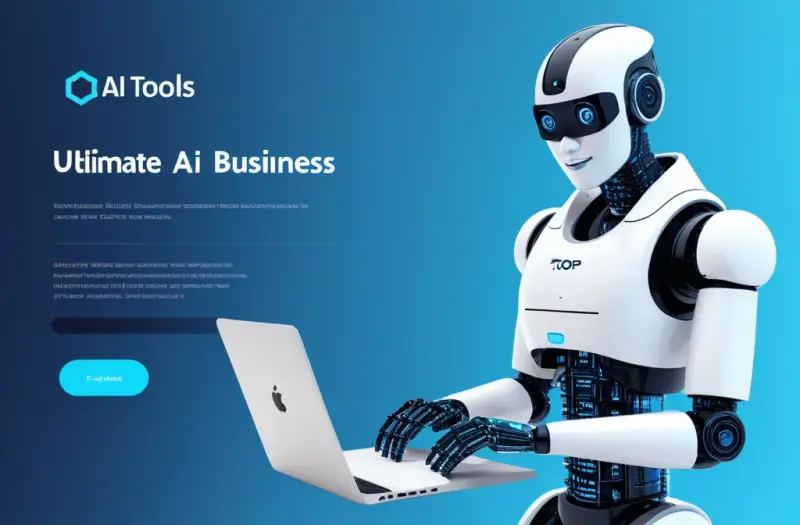
As AI continues to advance, new and innovative technologies are emerging to address the evolving needs of businesses. Innovative AI technology for enterprises includes tools that leverage deep learning, neural networks, and advanced analytics to deliver cutting-edge solutions.
1. Deep Learning Models
Deep learning models are a subset of machine learning that uses neural networks to analyze complex data patterns. These models are particularly effective for tasks such as image and speech recognition, natural language processing, and predictive analytics. By harnessing the power of deep learning, businesses can gain deeper insights and make more accurate predictions.
2. AI-Powered Analytics
AI systems for business optimization are increasingly incorporating advanced analytics capabilities. These tools use AI algorithms to analyze large datasets and identify trends, patterns, and anomalies. Businesses can leverage these insights to improve operational efficiency, enhance customer experiences, and drive strategic decision-making.
3. Automation and Robotics
Automation and robotics are transforming the way businesses operate, with AI-driven solutions enabling more efficient and accurate processes. From robotic process automation (RPA) to intelligent chatbots, these tools streamline repetitive tasks and enhance productivity. By integrating automation into their workflows, businesses can achieve greater efficiency and reduce human error.
Implementing AI Tools in Your Business
Adopting AI tools can be a game-changer for businesses looking to enhance their operations and drive innovation. However, implementing these tools requires careful planning and consideration. Here are some steps to help you integrate AI solutions effectively:
1. Assess Your Needs
Before selecting an AI tool, it’s essential to assess your business needs and objectives. Determine which areas of your operations could benefit from AI and identify specific goals you want to achieve. This will help you choose the most suitable AI-driven business solutions for your organization.
2. Evaluate Available Options
With numerous AI tools available, it’s important to evaluate your options based on factors such as features, scalability, and cost. Look for business-oriented AI platforms that align with your needs and offer the capabilities required to achieve your goals. Consider seeking recommendations and reviews from other businesses to inform your decision.
3. Train Your Team
Implementing AI tools requires training and support for your team. Ensure that your employees are equipped with the knowledge and skills needed to effectively use the new technology. Providing training and resources will help maximize the benefits of your cutting-edge AI tools for enterprises and facilitate a smooth transition.
FAQs
What are AI solutions for enterprises?
AI solutions for enterprises are advanced technologies that use artificial intelligence to optimize various business functions, improve efficiency, and drive innovation. These solutions include tools for automation, data analysis, and predictive analytics.
How can AI tools enhance business efficiency?
AI tools can enhance business efficiency by automating repetitive tasks, providing data-driven insights, and streamlining operations. This allows businesses to save time, reduce costs, and focus on more strategic activities.
What are some examples of leading AI software for businesses?
Some examples of leading AI software for businesses include IBM Watson, Google Cloud AI, and Microsoft Azure AI. These platforms offer a range of features and capabilities designed to support various business needs.
How do AI-powered analytics benefit businesses?
AI-powered analytics benefit businesses by analyzing large datasets to identify trends, patterns, and anomalies. This helps businesses make more informed decisions, improve operational efficiency, and enhance customer experiences.
What should I consider when implementing AI tools in my business?
When implementing AI tools, consider assessing your business needs, evaluating available options, and providing training for your team. This will help you choose the right tools and ensure a successful integration process.
Conclusion
As we continue to explore the realm of AI, it’s clear that AI-driven business solutions are revolutionizing the way companies operate. By leveraging the best AI tools for commercial use, businesses can enhance efficiency, drive innovation, and stay competitive in today’s dynamic market. Embracing these advanced AI systems for companies will not only streamline operations but also open up new opportunities for growth and success.

Top MLB Highlights and Game-Changing Plays 2024
The 2024 Major League Baseball season has been nothing short of electric. From jaw-dropping home runs to gravity-defying catches, we’ve witnessed moments that not only defined games but also reshaped how we view professional baseball. Each swing, each pitch, and each clutch play carried a level of excitement that reminded us why this sport continues to capture the hearts of millions.
As MLB teams fought their way through the intense baseball season, fans were treated to a parade of unforgettable moments. Some plays elevated rookies to household names, while others added legendary chapters to the careers of seasoned baseball players. With MLB standings shifting constantly and playoff races heating up, the stakes have never been higher—or more thrilling.
What makes a single play stand out in a season packed with talent, tension, and tradition? Is it the statistical significance, the emotional weight, or perhaps how it alters the course of the game or even the season? Let’s dive into the most captivating baseball highlights of 2024 and uncover the moments that truly changed the game.
The Rise of New Stars: Rookie Highlights That Stunned Us
The 2024 MLB draft introduced a new wave of talent, and several rookies wasted no time in making their mark. These young players didn’t just participate—they dominated, surprising both fans and analysts alike.
One of the most talked-about names this season has been Landon Reyes, the 20-year-old outfielder for the Seattle Mariners. His 482-foot home run against the Yankees in June was the longest of the season and marked a turning point in the MLB standings for his team. He’s not just a future prospect—he’s already a force.
Another rising star is Cameron Mitchell, a pitcher for the Miami Marlins who threw a complete-game shutout against the defending champions. His precise fastball and advanced baseball analytics have left even the most experienced batters guessing.
Key rookie highlights from 2024 include:
- Landon Reyes’ grand slam that sealed a comeback victory.
- Cameron Mitchell’s 14-strikeout performance.
- Julio Pena’s walk-off single in his MLB debut.
Home Run Frenzies That Shook the Ballparks
Home runs always capture our attention, but 2024 delivered them with a flair that made jaws drop. This year’s baseball season featured a surge in power hitting, with several players smashing personal and MLB records.
Aaron Judge, continuing his legendary trajectory, hit his 300th career home run, making him one of the fastest players in MLB history to do so. Meanwhile, Shohei Ohtani dazzled with his dual-threat capability, hitting 35 homers while maintaining an ERA under 2.50.
Top home run highlights from the season:
- Aaron Judge’s 300th home run milestone.
- Shohei Ohtani’s 450-foot opposite-field homer.
- Juan Soto’s back-to-back homers in a 12-run inning.
These monster shots weren’t just for show—they often came in pivotal moments, altering the trajectory of critical baseball games.
Game-Saving Catches and Defensive Gems

Defense wins championships, and 2024 reminded us just how crucial those split-second plays can be. Across the league, baseball players turned potential disaster into gold with outfield snags and infield lasers.
Perhaps the most viral moment was Byron Buxton’s leaping catch at the wall during the MLB playoffs. The Twins were one out away from elimination when Buxton robbed a potential three-run homer that would’ve ended their postseason run.
Defensive standouts included:
- Nolan Arenado’s barehanded spinning throw from third.
- Buxton’s diving catch in Game 5 of the ALDS.
- Dansby Swanson’s double play conversion to close out a 10-inning marathon.
These plays weren’t just impressive—they were essential to the outcomes that kept us glued to MLB scores.
Pitching Masterclasses That Dominated the Mound
Pitchers stole the spotlight in several clutch matchups throughout the season. Whether it was a no-hitter or a strategic strikeout, the mound became a stage for greatness in 2024.
Max Scherzer, despite being in the twilight of his career, delivered one of his best performances yet—throwing a no-hitter against the Padres with 17 strikeouts. Meanwhile, young ace Hunter Greene posted a 100+ mph fastball average in three straight starts.
Pitching highlights from the season:
- Scherzer’s 17-K no-hitter.
- Hunter Greene’s triple-digit fastball showcase.
- Sandy Alcántara’s back-to-back shutouts.
These pitchers didn’t just dominate—they controlled the rhythm of the game.
Walk-Off Wins That Redefined Drama
There’s nothing quite like a walk-off victory to send fans into a frenzy. The 2024 baseball season gifted us with several edge-of-your-seat finales that reminded us why we love this game.
Who could forget Alex Verdugo’s walk-off grand slam against the Orioles? The Red Sox were trailing by three in the bottom of the 9th, and with one swing, the Fenway crowd erupted.
Memorable walk-offs this year included:
- Verdugo’s grand slam against the Orioles.
- José Ramírez’s walk-off bunt against the Royals.
- Adley Rutschman’s solo shot in a tied division game.
Walk-offs don’t just end games—they etch moments in baseball history.
Playoff Clashes That Defined the Season
The MLB playoffs this year delivered postseason drama at its finest. Teams clawed their way through grueling series, each game packed with high-stakes decisions and incredible performances.
Highlights from the 2024 playoffs:
- The Atlanta Braves and Philadelphia Phillies’ 13-inning thriller.
- The Dodgers’ Game 7 comeback in the NLCS.
- The Blue Jays upsetting the Astros with a stunning sweep.
Every inning felt like a story, every pitch a gamble. This playoff season reinforced how tightly the fate of the baseball league is tied to razor-thin margins and game-changing plays.
World Series 2024: A Showdown for the Ages

The World Series between the Los Angeles Dodgers and Toronto Blue Jays lived up to the hype. Each game was a battle, and the tension rarely let up.
In Game 6, with the Dodgers trailing by two, Freddie Freeman hit a bases-clearing triple that turned the tide. The Dodgers eventually clinched the title in Game 7, thanks to a clutch homer by Mookie Betts.
Key stats from the 2024 World Series:
| Game | Winner | Score | MVP of the Game |
|---|---|---|---|
| 1 | Dodgers | 5-3 | Freeman |
| 2 | Blue Jays | 4-2 | Gausman |
| 3 | Blue Jays | 6-4 | Bichette |
| 4 | Dodgers | 3-0 | Kershaw |
| 5 | Dodgers | 7-5 | Betts |
| 6 | Blue Jays | 2-1 | Chapman |
| 7 | Dodgers | 6-2 | Betts |
It was a championship worthy of the sport’s rich legacy.
Trades and Transfers That Shook the League
MLB trades this season had a massive impact on how the baseball season unfolded. Teams like the Padres and Mets made bold moves, trading prospects for proven stars.
Shohei Ohtani’s blockbuster trade to the Mets was a league-altering move, giving the Mets their biggest boost in years. Meanwhile, the Yankees’ acquisition of Blake Snell added firepower to their rotation.
Major trades of 2024:
- Ohtani to the Mets.
- Snell to the Yankees.
- Bryan Reynolds to the Mariners.
These transactions didn’t just alter rosters—they reshaped MLB standings.
Analytics in Action: Data-Driven Highlights
Baseball analytics continue to evolve, and 2024 was a showcase of how sabermetrics impacts on-field decisions. From pitcher matchups to shift strategies, we saw data change games in real time.
Teams like the Tampa Bay Rays leaned heavily on heat maps and swing paths to neutralize power hitters. Meanwhile, batting average on balls in play (BABIP) helped managers determine defensive shifts that cut off extra bases.
Examples of analytics in play:
- The Rays’ shift that turned a bases-loaded jam into a double play.
- The Astros’ use of spin rate to swap pitchers mid-inning.
- The Cubs’ use of AI scouting reports to prepare for playoff matchups.
Analytics has become as integral as bats and gloves.
Breaking Records and Making History
2024 saw a number of long-standing MLB records fall. These aren’t just numbers—they’re milestones that define eras in baseball history.
- Aaron Judge became the fastest to reach 300 HRs.
- Julio Rodríguez stole 50+ bases while hitting 30+ homers.
- Zack Wheeler recorded the most strikeouts in a single season for the Phillies.
Records like these elevate the players and offer new benchmarks for future generations.
The Fans: The Real MVPs of the Season
Let’s not forget the passionate supporters who filled the stands game after game. The MLB schedule is long and grueling, yet fans stayed loyal, loud, and legendary.
Whether it was raining in Chicago or blazing hot in Phoenix, fans brought unmatched energy. Stadiums like Truist Park and Dodger Stadium broke attendance records, while smaller markets saw resurgence in community support.
Fan moments we loved:
- The Phillies fan section chanting for Trea Turner’s comeback.
- A Mets fan proposing mid-game on the jumbotron.
- Thousands staying after a loss to give standing ovations.
Baseball is more than a game—it’s a shared heartbeat.
FAQs
Who were the top MLB teams in the 2024 season?
The top MLB teams included the Los Angeles Dodgers, Toronto Blue Jays, Atlanta Braves, and Philadelphia Phillies, all finishing strong in the MLB standings.
Which baseball players stood out the most in 2024?
Shohei Ohtani, Aaron Judge, Mookie Betts, and Max Scherzer delivered standout performances throughout the baseball season.
What was the biggest MLB trade in 2024?
The most impactful MLB trade was Shohei Ohtani’s move to the New York Mets, which significantly changed the team’s playoff trajectory.
How did analytics impact MLB games in 2024?
Analytics helped managers optimize lineups, determine shifts, and select matchups that offered the best statistical advantage.
Which game was considered the most exciting of the season?
Game 7 of the World Series between the Dodgers and Blue Jays is widely regarded as the most thrilling due to its stakes and momentum swings.
Conclusion
As we reflect on the incredible moments from the 2024 MLB season, it’s clear this year delivered unforgettable highlights and changed the game in remarkable ways. From rising stars and epic home runs to record-breaking performances and playoff heroics, every inning carried a story worth telling. We’ve celebrated the players, the plays, and the pulse of a baseball league that continues to evolve—and excite.
Key Takeaways
- 2024 was packed with jaw-dropping MLB highlights that shifted game outcomes and playoff hopes.
- Rookies like Landon Reyes and Cameron Mitchell emerged as stars, changing team dynamics.
- Analytics played a pivotal role, guiding both offensive and defensive decisions across the league.
- The World Series delivered classic drama, with the Dodgers emerging as champions.
- Fans, trades, and clutch moments completed a season that will be remembered in baseball history.

Will AI Transform the Future of Programming Careers?
It’s hard to ignore the buzz. From AI coding assistants to automated code generation, artificial intelligence seems to be rewriting the rules of programming. As software engineers, coders, and developers, many of us are now asking: Are we looking at a future where AI changes the very fabric of our careers? The topic isn’t just hot—it’s vital.
We’ve seen technology evolve at lightning speed, but this moment feels different. AI is no longer just enhancing our tools; it’s stepping into the development process itself. We’re witnessing AI in software development making decisions, writing code, optimizing systems, and even catching bugs. This shift challenges our understanding of what it means to be a programmer.
So here’s the big question: Will AI eventually replace us, or will it redefine us? As we dive into this discussion, we’ll explore how automation in coding, AI tools for developers, and machine learning in programming are reshaping our roles. Let’s uncover whether this transformation is a threat, an opportunity, or something even more profound.
The Rise of AI in Software Development
Over the last few years, we’ve seen a massive surge in AI-driven development tools. From GitHub Copilot to ChatGPT’s code-writing abilities, AI coding assistants are no longer a futuristic concept—they’re already a daily tool for many developers. These tools help automate repetitive tasks, refactor code, and even suggest logic improvements, allowing us to focus on higher-level thinking.
The impact of AI on programmers is undeniable. With machine learning in programming, systems can now learn from millions of lines of code to generate efficient snippets on demand. As we integrate AI into our workflows, we gain speed, reduce errors, and sometimes discover creative solutions that might not have crossed our minds.
Still, this innovation raises eyebrows. Will AI replacing coders become a reality? The current trajectory shows that while AI may take over mundane aspects of software engineering, it still lacks the human touch in critical thinking, architectural decisions, and understanding real-world business needs. For now, AI is a co-pilot—not the pilot.
Coding with Artificial Intelligence: A New Era of Collaboration
We are stepping into a phase where coding with artificial intelligence is less about control and more about collaboration. AI-assisted coding doesn’t mean handing over the reins—it means coding smarter. Tools like Tabnine, Replit Ghostwriter, and OpenAI Codex offer us second opinions, real-time suggestions, and productivity boosts.
Instead of fearing AI in tech careers, we can embrace these innovations to become more agile and strategic. AI can automate boilerplate code, generate test cases, and catch bugs before deployment. This allows us to focus on solving complex problems and building innovative solutions—things AI isn’t yet equipped to do alone.
This collaborative model hints at the future of programming with AI—one where our roles evolve rather than dissolve. We’re not being replaced; we’re being amplified. And that shift is something we need to understand and adapt to, not resist.
Will AI Replace Coders? Debunking the Myth
It’s a common fear: “AI is coming for our jobs.” And while it’s true that automation in coding is accelerating, the idea of AI completely replacing human coders is an oversimplification. Programming is more than just syntax—it’s creativity, context, and communication.
AI vs human coders is not a fair match. While AI can generate code, it often lacks a deep understanding of business logic, user experience, and the nuances of stakeholder needs. AI is great at solving defined problems—but when it comes to ambiguous or novel challenges, we still lead the charge.
That said, the roles of developers will inevitably change. Rather than spending hours debugging or writing basic functions, we’ll shift toward oversight, orchestration, and innovation. The future of AI in coding isn’t about replacement—it’s about realignment.
The Future of Programming with AI: What to Expect
Let’s paint a picture. Imagine a future where you start a project by prompting an AI to build out your app’s skeleton. You review and guide it, refine logic, and add layers of design thinking. This is the promise of AI-driven development—and it’s coming fast.
AI programming advancements will likely continue to streamline the development lifecycle. We’ll see smarter deployment pipelines, improved quality assurance, and more rapid prototyping. In fact, programmer evolution with AI means we’ll spend less time on code mechanics and more on creative strategy and interdisciplinary work.
But with these gains come new responsibilities. We’ll need to learn how to vet AI-generated code, maintain ethical standards, and ensure software safety. In many ways, our jobs will become more complex—not less—just in a different dimension.
AI Tools for Developers: A Growing Arsenal
The toolbox for developers is expanding with AI integration. From smart IDE plugins to cloud-based machine learning frameworks, we now have access to tools that adapt and learn from our habits. These AI tools for developers are not just helpers—they’re accelerators.
Take AI-powered code review tools that catch bugs or security flaws in seconds, or assistants that help document APIs in real-time. These capabilities dramatically reduce friction in our workflows, enhancing both speed and quality.
And yet, these tools still require a human in the loop. AI can suggest, but we must decide. It can automate, but we must validate. Understanding this balance will be key to succeeding in a future dominated by AI and developer roles.
Redefining the Programmer’s Role in an AI World
As AI transforms the landscape, we must rethink what it means to be a programmer. The traditional path of “write, test, debug” is evolving into “design, delegate, validate.” Our roles are becoming more about decision-making, ethical oversight, and problem framing.
AI transforming programming doesn’t eliminate the need for us—it highlights new areas of growth. Soft skills like communication, empathy, and design thinking are becoming just as valuable as technical chops. Developers of tomorrow will be hybrid thinkers—part technologist, part strategist.
In the end, the AI and programmer jobs landscape will favor those who adapt, learn, and embrace change. By growing alongside AI, we not only future-proof our careers—we enhance them.
How We Prepare for What’s Next
So, how do we get ready? Continuous learning is non-negotiable. Staying updated on AI programming advancements, exploring machine learning in programming, and experimenting with AI-assisted coding tools will give us a major edge.
We also need to rethink our education systems and company cultures. AI in tech careers demands a blend of technical fluency and adaptability. By fostering curiosity, collaboration, and a growth mindset, we ensure that AI works with us—not against us.
Ultimately, we must lead the change. The future of programming with AI will be shaped not just by algorithms, but by how we choose to integrate them into our daily work. We’re not just spectators—we’re architects of this new era.
Embracing the Shift: Our Final Thoughts
We’re standing on the edge of one of the biggest shifts in tech history. AI is not here to erase our roles but to evolve them. Yes, some tasks will disappear—but new, more impactful ones will emerge in their place.
The key is to shift our mindset. Let’s stop asking “Will AI replace us?” and start asking, “How can AI empower us?” By embracing this transformation, we become not just coders, but pioneers of the future.
So, let’s step forward—not with fear, but with curiosity and confidence. The future is not written in code—it’s written by those willing to code the future, with AI by their side.